.gif)
William Mundala, best known as Tiakola, is a 26 years old French-Congolese artist who is destined for greatness. Raised in France in a Congolese household, la mélo always viewed the world from a unique perspective. After years as part of a music group, he decided to take matters into his own hands and began making solo music. To this day, Tiakola is one of the few Afro-Francophone acts to break into the English-speaking music market, all organically.
Now ready to make his mark, Deeds Magazine accompanied Tiakola on a journey of a lifetime: a return to his roots in Kinshasa, Congo. We sat down with the young star to get a glimpse into his mindset as he continues to cross musical barriers and expand his sonic landscape.

Laurène from Deeds Magazine: Good day Tiakola, would you like to introduce yourself to our Deeds audience?
Tiakola: Yeah sure, I’m Tiakola, a French artist from La Courneuve where I grew up. I began my journey in a group called 4Keus before I ventured into a solo career.
Before we talk about your transition; you were born in France but your origins are from Congo. What does your heritage represent to you today, especially after having shot your cover with Deeds in Kinshasa?
I am a Congolese child by heart, both of my parents are from Congo and therefore, I swam in its culture since a baby. From the food, to the music, everything is inked within me. It represents my identity, my artistry and culture. In France, we grew up between dual cultures, which signifies to me not only my heritage but also my sense of pride.
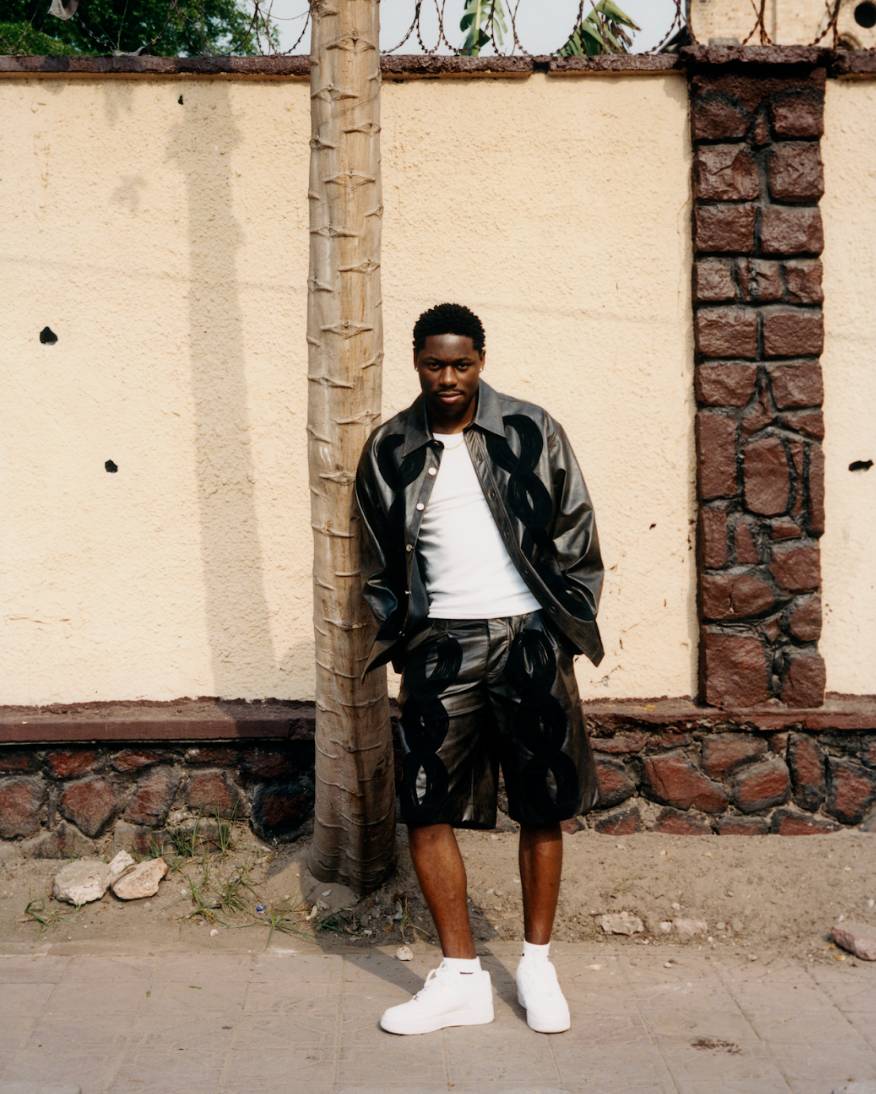
That’s very well put and I’m sure like myself, a lot of Congolese from the diaspora will relate. Before you embarked on a solo career, you were part of the group 4Keus. What did this period in time teach you? And how did it help you to forge your own universe?
If I had to do it all over again, I would do it a dozen times more. To start within a group is a blessing. This is because you’re with your buddies all of the time, you grow up together, you become professional together and also, I think when you’re sharing the spotlight, it helps you to gain confidence in yourself. You’re not alone in facing the pressure of stardom and so, you can loosen up a little.
This brings fond memories… You’re often declared as the pioneer of mélo, a subgenre between singing and rap. How would you define this to someone who doesn’t speak French?
The truth is rap and mélo always coexisted in France. I think I created not on purpose the mélo of Tiakola, so to speak. It’s stylistically a very street mélo, because even though I write rap texts, you can sing them mélo.

That makes total sense. Your collaboration with Yoruba star Asake on ‘Badman Gangsta’ surprised everyone. With this feature, you became the first Congolese-French artist to top number one on the TurnTable Nigeria Top 100. This is a first in history, not to mention Longomba - Ndombolo in the 2000s. How did this link occur and what did you take away from this experience?
It was a very good experience. Asake is an artist I listen to a ton. He speaks for a lot of people through his music. We first met at a studio in London and honestly, we had a connection right away. The energy you hear through the music is what echoed in our studio session, no lie. And when it’s no lie, it makes for great songs.
Yes indeed. One could say due to selected collaborations and your recent tour in the US, you managed to reach a completely new English-speaking audience. Who do you listen to in this sphere, whether it is Afrobeats, R&B or rap?
I still listen to the classics from before, whether it is in Afrobeats Bracket, P Square, Wizkid and in the new gen scene Rema as well… In the US, it’s like Akon, 2Pac, J Holiday, Brandy… In Congo, the gospel side is Charle Mombaya, L’Or Mbongo, Werrason, King Kester and then you get your Fally and Koffi. Also, there is a new cat called Melo, he’s a strong one! I also listen to a lot of Malien artists like Djeneba Seck, Oumou Sangaré and Toumani Diabaté, the catalogue is so big…
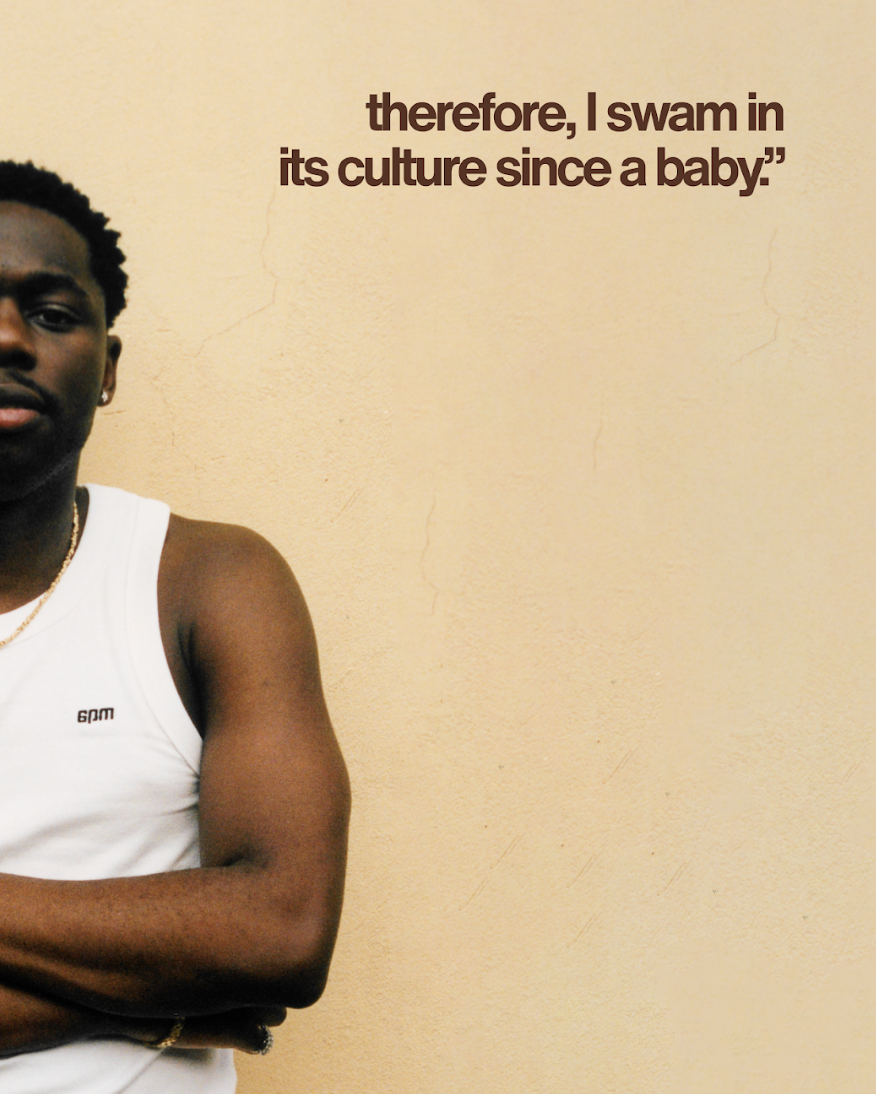
This would explain your versatility. If you had the opportunity to collaborate with any artist outside of France, who would be on top of your list and why?
There’s a good amount of artists I think it’d work out well but, bizarrely I don’t really have a wishlist per se. This is because even an artist that I listen to, if there’s no magic in the studio, then it wouldn’t come out and so, I have to be in those rooms before I can give a concrete answer.
We’ll let this one slide… Deeds Magazine loves to uncover new talents. In your opinion, which Afro-Francophone artist should we tune in?
El Mvnolo!
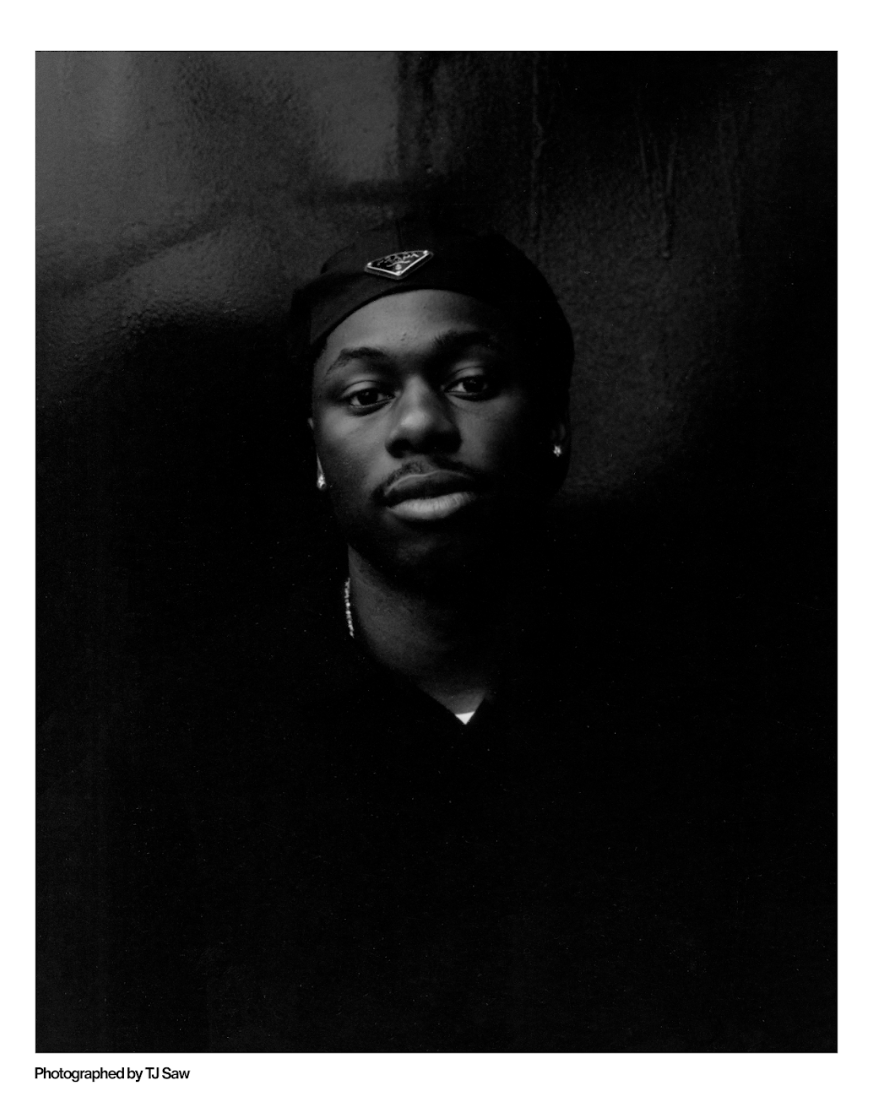
Gotcha. You seem to be at a pivotal moment, between France, Africa and the world. How do you see the evolution of Francophone African music in the years to come?
I think it will go well for our generation and the generations to come. Now we can see that when music is well made, it can reach everyone. And we talk between artists as well, there’s no longer a barrier in language when the alchemy is there, we can head far. There’s no more borders. All artists of the continent can develop here and honestly, it is very nice to see. We support everybody.
Finally, what is next for Tiakola? A new album, a tour, or maybe yet another international link up?
I am working on my second album. I am a slow artist when it comes to my time spent in the studio. I have to work on ideas for months, even years before I’m sure of releasing a project in mind. I travelled, I recorded songs all over the world. We’re also preparing a tour in the midst of it all. And for the new international link up, it will depend on the magic produced in the studio that I mentioned before.
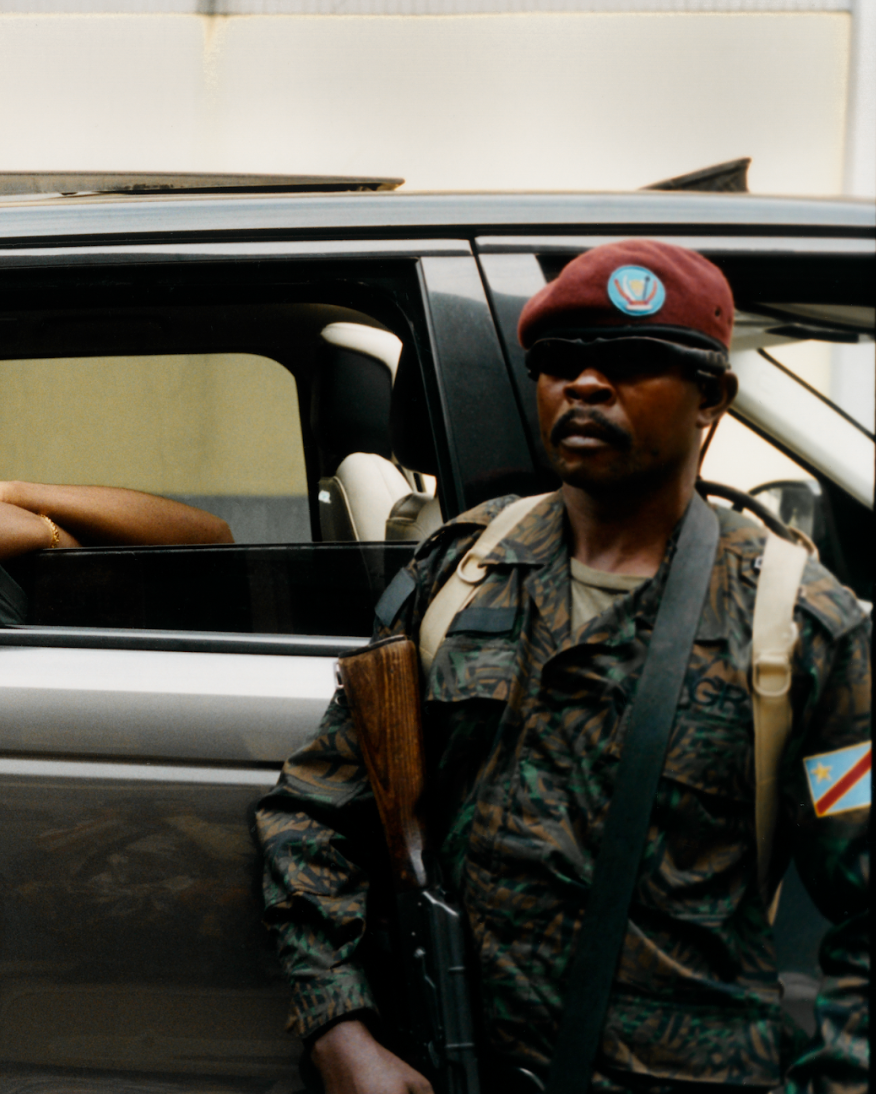
Production Credits:
Photographer + Creative Director: @tj.saw1
Executive Producer: @beni.masiala
Local Producer: Mpoy Tekela Christian
Retouch: @hilucyb
Production Assist: @slowkamunga + Magloire Mabwa
Project Manager: Seneo Mwamba @Seneomwamba & Zekaria Al-Bostani @zek.snaps
Design: @dianeadanna
Writer: Laurène Southe @laurenesouthe
Special thanks to Agnes Tshisekedi and the city of Kinshasa.
When Joeboy was in JSS3, his classmates would chant his full name, “Akinfenwa Joseph”, before the school secretary even began reading the list of students owing fees. The humiliation cut deep enough that the young student told his parents he would never return to that school. But that embarrassment now fuels his mission The artist born Joseph Akinwale Akinfenwa-Donus has channeled those experiences into the Young Legend Foundation, the philanthropic arm of his record label, which just announced a ₦10 million scholarship fund targeting students in public tertiary institutions across Nigeria.
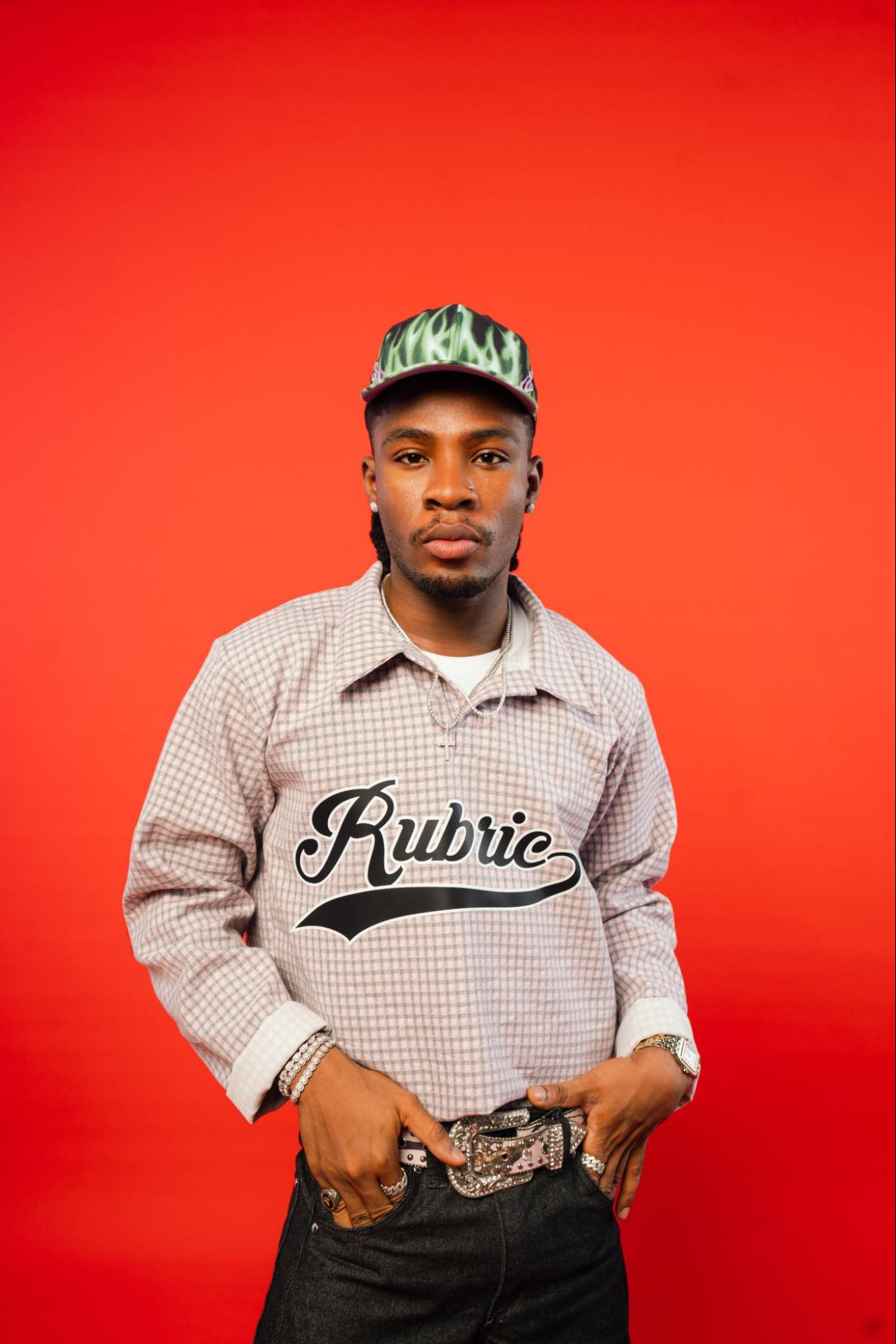
The initiative, launched this November, will support 30 students across public universities, polytechnics, and colleges of education for the 2024/2025 academic session. Each beneficiary will receive an average of over ₦333,000 to cover tuition, accommodation, and other academic needs. It’s the kind of financial relief that might have changed everything for the younger version of Joeboy sitting in that JSS3 classroom.

“True success is not only about what we achieve for ourselves; it’s about creating opportunities for others to thrive,” Joeboy said in announcing the scholarship. “Through the Young Legend Foundation, we aim to support talented young Nigerians, helping them develop their skills, reach their potential, and contribute positively to society.”
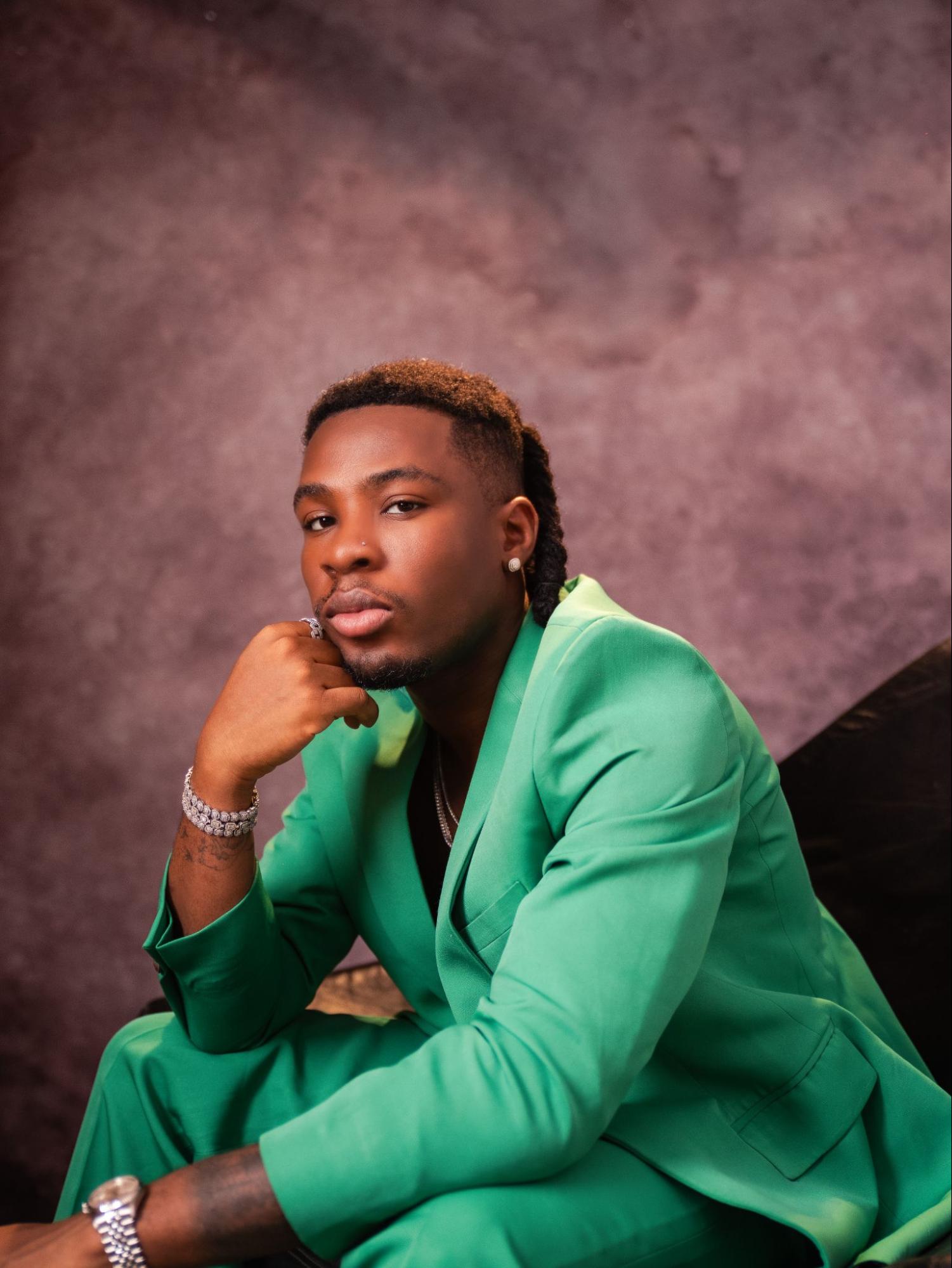
The foundation represents more than financial assistance. According to the organization’s announcement, the scholarship program will provide access to mentorship, leadership development, and skill-building programs, recognizing that educational support extends beyond tuition payments.
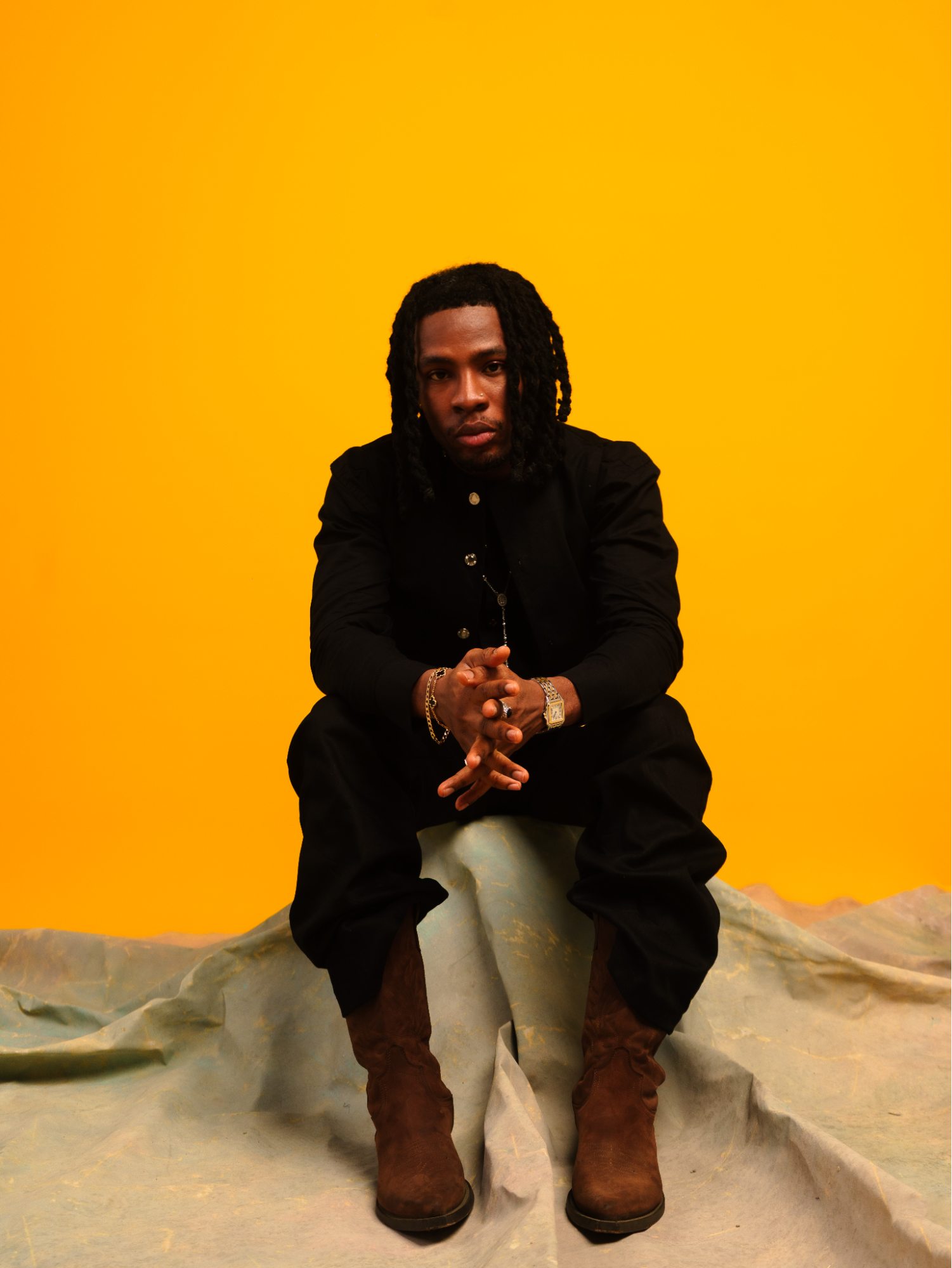
Young Legend, Joeboy’s record label launched earlier this year in partnership with Warner Music Africa, has been building infrastructure beyond music. The label unveiled its first signee, Kvng Vidarr, in October, and now extends its mission to educational philanthropy. In previous interviews, Joeboy had shared his intention to start the foundation at his alma mater, emphasizing youth empowerment and entrepreneurship development as crucial responses to Nigeria’s employment challenges.

The foundation’s launch also includes outreach programs to secondary schools, with recent visits to educational institutions including Joeboy’s former school, bringing the mission full circle from that painful JSS3 experience to creating pathways for the next generation.
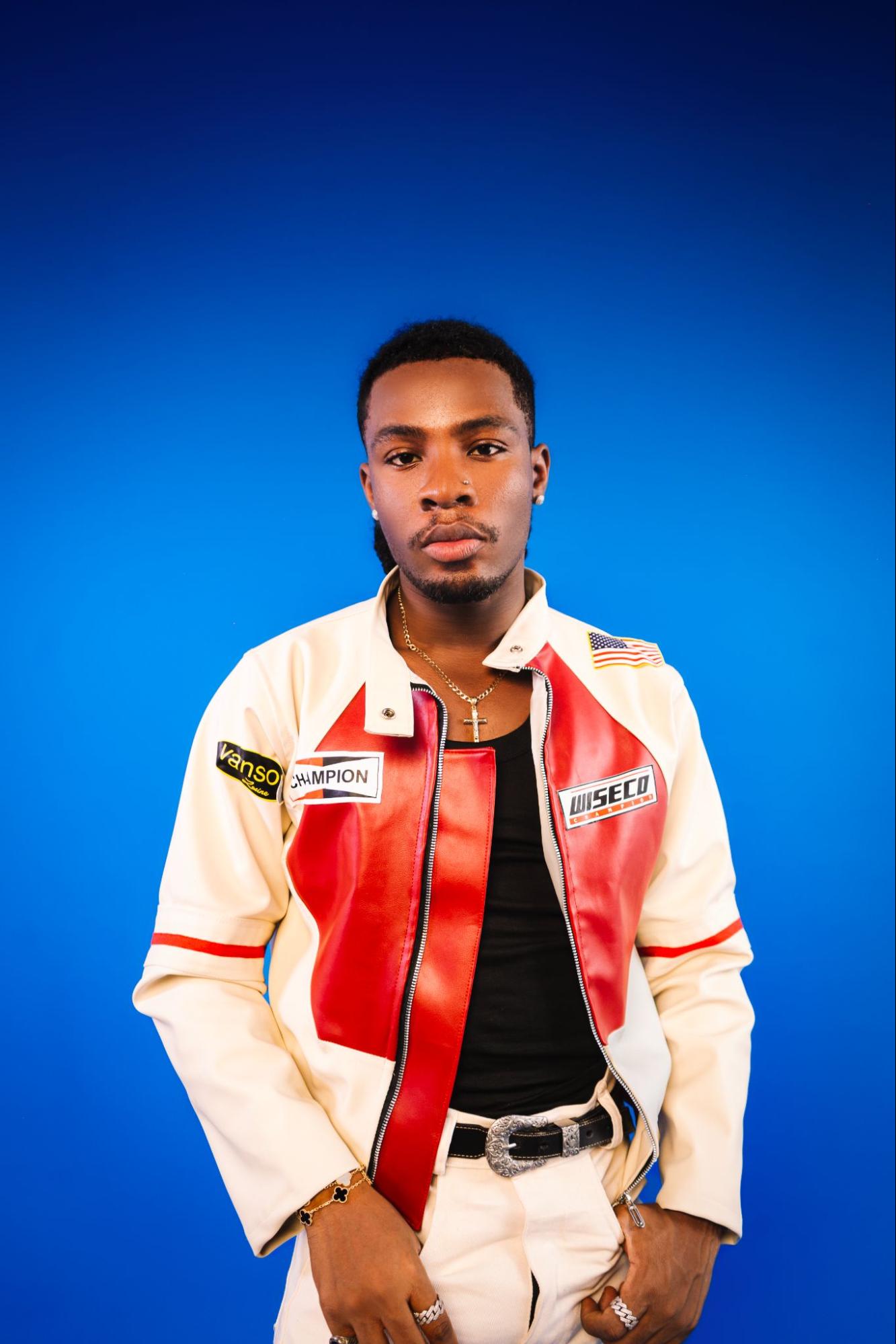
For students currently facing the same financial pressures that once threatened to derail Joeboy’s education, the Young Legend Foundation scholarship represents validation that their circumstances don’t define their potential, and that someone who sat in their position understands exactly what they’re facing.

The Young Legend Foundation scholarship application is open now. Students in public universities, polytechnics, and colleges of education can apply at HERE.
Clipse's final show at Brixton's O2 Academy, part of the Let God Sort Em Out tour, marked a historic moment for fans and the scene, as the iconic rap duo returned after 16 years to deliver an electrifying performance that underscored their lasting legacy and influence.
.png)
The show was electrified, with the crowd's energy surging from the moment they took the stage with 'Chains & Whips' to the closing notes of 'So Far Ahead,' as the duo went bar for bar, song for song, creating an atmosphere filled with love and appreciation for Clipse that resonated throughout Brixton.
The setlist was a dynamic mix of tracks, from their latest offerings like 'POV,' 'M.T.B.T.T.F.,' and 'Inglorious Bastards,' to classic hits such as 'Mr Me Too,' 'Grindin,' 'Keys Open Doors,' 'So Be It,' 'Popular Demand (Popeyes),' and the energetic 'Virginia,' keeping the crowd fired up throughout.
.jpg)
Whilst Pusha has been active in the years since the group's disbandment. For Malice, this moment felt like a celebration of his impact on the duo. For the two brothers who have come back and picked up where they left off, it feels like a refreshing reintroduction to the current landscape. With the duo earning five GRAMMY nominations for the upcoming award show, this album has felt like a real ode to the class of hip-hop that Clipse occupied during their reign.
As the show drew to a close, Pusha T took a moment to express his love and gratitude to the crowd and thank the fans, speaking on the moment and being on the Brixton stage, "We've been waiting to get here." He spoke as he addressed the crowd. "The energy and the love have been insane, and we have felt it right here".
.jpg)
Witnessing the show in Brixton felt like a real moment for the duo and the fans who experienced it. It was really a special time in the timeline of the Clipse's journey, in the landscape of where they are now. With the GRAMMYs on their heels, there is no doubt that there is a lot more to come from the sibling duo, and this is just the beginning.
Music is at the heart of creating identity and culture across the black diaspora. It colours everyday life, acting as a source of inspiration for creative output and informing academic approaches to cultural theory. This is the case for artist and filmmaker, Arthur Jafa. Incentivised by the rich culture of music across the Black diaspora, Jafa’s first solo exhibition in London’s Sadie Coles HQ, ‘Glas Negus Supreme’, takes his practice one step further as he explores the power of music through the use of oil paints alongside his signature retouched films and photography.
As an artist and filmmaker, born and raised in Mississippi, Jafa’s work is experimental in its splicing and reconstruction of key figures and moments in Black American music history and across the diaspora. His creative portfolio is vast; with notable credits on Solange’s ‘Cranes In The Sky’, a Sundance award for his work on ‘Daughters In The Dust’ and representation by Gladstone Gallery. Overall, Jafa’s three decade long career is expansive but revolves around his specific niche. Each piece and film is a commentary on the complexities of Black music in the contemporary space. Yet, ‘Glas Negus Supreme’ is a testament that Jafa’s artistic explorations are far from complete.
Sadie Coles HQ’s Kingly Street gallery seems to be the perfect space to house the exhibition with its industrial architecture somehow evading the characteristic sterility of many commercial galleries. Instead, the space seems to embrace the unconventional eccentricity of Jafa’s pieces. Upon entry, Jafa’s ‘I just want our love to last’ occupies an entire wall. Black faces, manga excerpts and logos exist in a collage seemingly shrouded under the obscured light of the eclipse depicted in the upper corner. This creates a sense of transcendent meaning for the use of the black and white that ties the piece together. Each image seems to depict different eras in time, some showcasing musicians mid performance and others still shots from films. Altogether, this wallpaper piece ties the exhibition together as an introduction to the vast histories and forms portrayed within the space.
The exhibition includes two of Jafa’s film pieces, ‘Structural Mutiny_Prince’ and ‘Townshend’. Both short films heavily contrast each other. ‘Structural Mutiny_Prince’ is a colourful and dynamic homage to the music legend. Playing on a 12 minute and 52 second loop, the film features the star’s reception from his fans in the background, cheering as he dances across the stage. In contrast is ‘Townshend’, a 33 minute film of Peter Townshend, leader of English rock band, The Who. Townshend’s silently sustained eye contact with the camera is at first unsettling, then mournful and at some points almost comforting. The black and white shot captures the subtleties of his facial expressions, sometimes almost frozen and others sped up and frenzied thanks to Jafa’s editing. This prolonged silence is particularly enrapturing considering the lively, voracious performances that Townshend had given as a rock star.
Much like the dualities of ‘Townshend’ and ‘Structural Mutiny_Prince’, the exhibition as a whole is a commentary on varying emotional and visceral responses to music, performance and stardom. ‘Drapetomania’ is particularly interesting. A term that was used to describe “the mental illness” that caused slaves to run away, the still frames of the collage are frenzied and blurred. The central figure’s eyes convey a sense of mania that, in the context of the exhibition, can be interpreted as a result of the music or party that surrounds him. The use of electric blue for two of the many logos overlaid on the image immediately drew the eye, creating a visual contrast to the black and white collage behind them. Jafa’s use of black and white imagery with hints of colour are present throughout the exhibition, seeming to create an atmosphere of timeless equality between all the images on display. The artist’s expansive perspective of music is not bound by modernism or antiquity. Instead their visual interest lies in the textural uniqueness or experimental editing of each as seen in ‘And Live Iggy and Patti’ or ‘Miss Tate’.

Potentially the standout pieces of the exhibition were found in the smaller, latter space of the gallery. ‘Kiss_NLove’ and ‘Foxy Lady’ are congruous in nature with the exhibition but also clear outliers. In form, both deviate from the established use of found imagery, photography and film that fill the majority of the exhibition. Instead they are oil paint on linen. This invites a new sense of tangibility to Jafa’s practice, bringing to mind thoughts of him considering where to lay his brush to create the intended image rather than overlaying photographs. ‘Foxy Lady’ depicts Foxy Brown, mid strut on stage. Her movement seems fluid and determined and the canvas is filled with colour, yet another deviation from the muted tones of the other paintings. Although ‘Kiss_NLove’ does stick to the central theme of black and white and with similarly blurred texture, the image itself is intimate in nature. The close up of an impassioned kiss sparks the imagination to figure out the wider contexts of this affection. Like many of Jafa’s pieces throughout the exhibition and his catalogue, the interpretations of this intimate moment are left entirely up to the viewer to decipher.
‘Glas Negus Supreme’ is a reflective yet experimental view of the ever evolving musical landscape. Jafa’s style in how he creates and portrays each work is what truly stands out as a viewer. He pushes the bounds of musical commentary while paying homage to legendary musicians. However, he is not stuck in the past as he finds new and visually interesting ways to acknowledge the power of music. While ‘Foxy Brown’ is a personal favourite, ‘Townshend’ is deceptively brilliant in its push to confront human emotion. Overall, Arthur Jafa’s ‘Glas Negus Supreme’ is an exhibition that is not to be missed.
Houston born and raised rapper Monaleo released her third project, a mixtape called ‘Who Did The Body?’. The project explored themes of grief, family and love. The question “who did the body” is a common black American phrase. The phrase stems from wanting to know which funeral home prepared the body for burial. The mixtape opens with a young girl saying “she looks like she’s sleeping”. A man responded “I wonder who did the body?”. The mixtape uses imagery of the black southern gothic aesthetic. This connects her to her southern roots and represents her culture. A culture that has been made taboo due to Christian nationalism and colonialism. She embraces hoodoo, which is a spiritual tradition developed amongst enslaved Africans in North America, making this something to be proud of instead of ashamed.
I have been a fan of Monaleo since ‘Beating Down Your Block’, finding the video on YouTube before it hit a million views. I fell in love with her direct tone and aggressive lyricism. To me she demonstrated everything I had been feeling as a young woman, anger at the world and the men around me. Her last project ‘Throwing Bows’ is full of this anger and confidence. However, ‘Who Did The Body?’ is about what makes her body and the body of many black American women. It’s the pain, it’s the excitement and, at times, our family strain. In all of this she is taking pride in her emotions and she is vulnerable within this project. Asking the big questions about life, the ones we’re often afraid to ask like , “what is going to happen when I die?” (life after death).
The black southern gothic aesthetic within Hip hop culture is inspired by the southern gothic literature tradition to explore themes of historical injustice, poverty and the supernatural. This aesthetic has been used a lot previously with artists like Gangsta Boo, Project Pat, Three 6 Mafia. Monaleo follows this same southern tradition using this aesthetic to explore darker themes within her art. She takes inspiration from her predecessors. On songs like ‘Spare Change’, she explores the theme of poverty and addiction. “Don't you know bums have a name?” she shouts on the chorus, humanising those who are often othered in society due to systemic oppression.
By embracing this darkness black women in the south have been able to pace through trials and heal their communities. Black women birthed America, their labour, love, food and pain has grown the land Americans breathe on today. In this project Monaleo acknowledges this history. Through the black gothic they are able to gain liberation. Angela Davis writes, “The slave woman was the first full time worker for her owner and only incidentally, a wife, mother and homemaker”. This is the history that Monaleo is acknowledging. When she is using Southern Gothic aesthetics she is representing her heritage as a Soulaan woman.
The mixtape opens with ‘Life After Death’, a song about how she should be commemorated after she passes. In this song, she is dark and haunting but acknowledging the overarching theme of this project, how life and death in the Black American community are constantly linked. It's something that oftentimes we shy away from but something necessary to acknowledge. “Life after death /is it lit or not?” A question that we all want to know the answer for. In the lines “Why you curled up in that bed?/ Bitch, get up and get out”, she discusses how her friends and loved ones should not sit and be sad but continue to live with her memory. She’s aggressive, but this is honest.
The churchy ‘Bigger Than Big’ first debuted on Kai Cenat’s streamathon full of positive affirmations. “I’m bigger than Ben” references the ‘Big Ben’ in London. We then lead into the controversial, not by intention, ‘Sexy Soulaan’. What's interesting about this song is what came about after it. The song is about pan africanism, empowering black people across the diaspora. Within the music video Monaleo is accompanied by multiple flags such as the Nigerian flag, Black American heritage flag and the Jamaican flag. The intention was to empower each of us through highlighting our similarities and differences. She references key Black American things like not putting your purse on the floor. “Being in the house lighting incense”, this insinuates spiritual protection. Songs like ‘We On Dat’, a southern Hip Hop record that discusses the ways she is ‘on dat’, and how she is too protected spiritually. The music video also has southern gothic references. There are women dressed in white, who are witches and use hoodoo magic to protect themselves and the people around them. Monaleo within this project is finding ways to weave in her heritage, showcasing how life, to her, extends beyond the physical realm.
We then move into ‘Putting Ya Dine’, which acts as a celebration to this future. This is also a part of her body. This club banger is about confidence and security within yourself. In a project that is so dark thematically it's nice to see how despite the pain, there is still hope to be excited about life and still party. ‘Freak Show’ again reiterates this. She is discussing her sexuality which adds onto all the things that make her one body. The sultry chorus states “there's something magic bout me and you'll find out in time”. It's sexy, and displays her growing womanhood and the growth she is having in herself.
The mixtape dwells deeper into its overarching theme of death where she begins to openly grieve her friends; the people she has lost. ‘Open The Gates’, is a jumpy song that is both humorous and sad. It showcases the anger, discontent and humour you can find in grief. She repeats “pen the gates, I really miss my b*tches”. It makes light of the fact that they're away but you can still feel that sadness. On ‘Dignified’ she discusses losing a friend to drunk driving. It's gothic and baptist. She hopes to “die dignified”, suggesting dying with respect. In this instance, she is hoping her death isn’t caused by doing something unforgivable like drunk driving.
There is a moment of reflection she has on this project. ‘Diary of an OG’, is a song that describes her experience being an oldest girl and the tough circumstances she has been put in. How she walks with being a nurturer and protector of herself and family. This pressure is something many girls have to live with. She is being honest. The chorus repeats “I’ll always be the oldest girl /surrounded still a lonely girl”. This position is not easy to be in, something that is constant and very demanding. The song makes me tear up out of empathy.
What makes our bodies is a mixture of pain and happiness but that is who we are as people. This project is sonically and thematically different. Where in the past she embraced her anger and aggression. This one is about growth, acknowledging where this pain stems from and moving forward with it. This project is not only about death alone, but how we become ourselves. What losses and wins leave us dignified as people. Monaleo is asking these questions to her community in an effort to heal from those uncertainties.
My first experience with Summer Walker was in my early teens and I had heard the song ‘BP’ for the first time. Soon in 2019 ‘Over It’ was released. Coming off the back of Bryson Tilller’s ‘Trapsoul’, and Partynextdoor’s ‘PARTYNEXTDOOR 2’ and Drake's ‘Take Care’. RnB was in a completely different space. It sounded different, and thematically we were in a space of agony and apathy around love and relationships. ‘Over it’ took inspiration from this sonically being primarily produced by Londononthetrack, but thematically there was a clear desire for a loving relationship, as opposed to her male predecessors.
What ‘Over it’ did was begin what would become the new RnB renaissance we see today. With songs like ‘Body’, ‘Like it’ and ‘Nobody Else’, all romantic love songs, it was clear where Walker was as a young woman and how she viewed love . This quickly changed with ‘Still Over It’, where this fantasy began to break down and she had to deconstruct what love looked like and meant to her. Heartbreak has inevitable effects on you. With ‘Still Over It’ her heartbreak exceeded her love. With it beginning with ‘Bitter’ defending this man against the women making claims against him. To end with ‘4th Baby Mama’ accepting her reality and ‘Ciara’s Prayer’ hoping for a better man and better love. ‘Finally Over It’ is the end. But what's different about this edition to the trilogy is that it seems apathetic. In an attempt to showcase healing I think Walker has decided that there isn’t much to gain with relationships to men. Perhaps the healing is more so looking for love within rather than externally. But with the album cover suggesting that she would rather engage in relationships with men for the benefits instead of love.
Atlanta born and raised artist Summer Walker has created a discography surrounding love and heartbreak. In this she has displayed the highs and lows of these emotions in the most honest way. Allowing us to connect with her and our struggles in the best way. In this album specifically she explores the idea of Heteropessimism. Heteropessimism is the idea that women feel pessimism or regret in regards to their attraction to men. Asan Serisin writes, "Heteropessimism’s anaesthetic effect is especially seductive because it dissociates women from the very traits — overattachment and “the overintensity of feeling”—for which straight culture is determined to make us ashamed…”. Coming off the back of ‘Still Over It’, a piece that owns its ‘embarrassing’ nature, it seems like a natural progression that Walker has come to this conclusion.
The album opens with ‘Scars’, a song less than one minute, discussing how she cannot love someone without seeing who they truly are. This is a recurring theme within the project. How the men she has dated have not been honest about who they are causing conflict and friction, “I cannot love you”. The album then discusses what she could’ve done for payback against this partner. One thing we all enjoy about Summer Walker is how she’s able to say the most egregious things in a beautiful manner, “I should’ve robbed you / nearly could’ve got you”. It's clear she is in a state of frustration and is beginning to give up on this love.
The song ‘No’ narrates how many of us women feel about the current dating climate. She sings “you want me slaving over a hot stove / you want me ironing and folding all of your clothes / you want me to cater to you never tell you no”. In this moment she is detailing the ways women are often unequal within their dynamics with men. Today many women are expected to perform traditional roles in relationships at the sake of themselves. Walker is saying that she is not willing to do that. Leading into ‘Go Girl’ where she, Latto and Doja Cat display confidence in who they are without men. Though it’s not all this simple.
Both ‘Situationship’ and ‘Give Me A Reason’ showcase the complexities of letting go to really be over it. Walker's voice is angelic over the guitar and she woefully sings about the stress that is a situationship, “you say we’re just friends just to string me along in a Situationship”. But ‘Give Me A Reason’, suggests that despite this informality, this lover gave them a reason to love them. But Walker is no longer buying this so she detaches. ‘Baller’ is the anthem that is ushering the next stage in Walker's life. She no longer wants love but someone who can provide and be a “shotcaller”. Love has only brought her pain, but if this is transactional she no longer needs to “lose herself to keep him home”. The narrative at this point is strong but seems to get lost. By disc two, it begins to get clouded by features that don’t seem to add much to the songs. In this, she is no longer following a linear structure which we have seen her do in the past. By the time we get to ‘Get Yo Boy’ featuring 21 Savage and ‘Number One’ with Brent Faiyaz, I’m unsure on whether we are moving forward or backwards. The cover suggests that she is playing a different game entirely. That love is no longer important to her. But these songs suggest that Walker still has a desire for relationships.
We are brought back with ‘Allegedly’, a country ballad that suggests that she is having a revelation. She “has been down this road before”, she’s fallen in and out of love but now she wants a change. ‘Allegedly’ suggests that she doesn’t want to fully commit but would rather pretend because it’s easier than getting our heart hurt, “Baby Baby / I’d die for you allegedly”. By ‘Finally Over It’ we are at the end of this chapter. But as a listener I’m not convinced that she’s healed, rather she’s bought into the same thing many other women have done. Relationships without feelings. But is this truly fulfilling in the long run?
Patriarchy causes men to not put much effort into their relationships with women. It advantages them because women are expected to do the majority of the emotional labour. Throughout this trilogy we listen to Walker detail the straining labour she goes through with the men she loves and hates. This is a biography for the zillenial generation. Relationships have changed, but is it for better or worse?
I first came across Natanya dancing on TikTok at a live performance. At the time, she had black hair, bangs and was in an outfit far from the stripes she flaunts today. Feline’s Return, both Act 1 and 2, would come out two years later but from then I knew she was someone to look out for. Feline’s Return is a project that to me is helping redefine and push the needle for pop music. As someone of both West Indian and Nigerian descent growing up in North London, her music is alternative to the type of pop music that we are used to, pop music made by majority white acts. She is making this genre her own. non-conforming and standing in what she is creating.
Within this project; love, fame and career seem to be in conflict with each other. Feminist writer Bell Hooks states in her prolific novel ‘Communion: The Female Search for Love’ that “love is the foundation on which we build the house of our dreams. It’s a house with many rooms. Relationships are a part of that house but they are not everything and never could be… no group of women should feel they need to deny the importance of love”. Love is a very important aspect of human life, but due to patriarchy, young women are expected to idolise this feeling, which can cause you to lose sight of anything else that could be important to you. Which, in this case, is making art.
What I love about this project is not only the relatability of this feeling, but how she is able to tell this story through timing of release. The release dates showcase the natural development of these feelings. Act 1 was released in summer, with songs that are exciting but ending it with pop ballads, ‘Say The Word’ and ‘Daydream’. These remind us that overconfidence and escapism in career is not a cure to desiring romantic love.
Act 2 was released at the beginning of autumn, a time to slow down and reflect on what will be in the future. But there is a sense of contentment. From ‘Jezebel’ to ‘On ur Time’, we see that she understands how important her career and her want for love are. They don’t have to exist in conflict with each other but rather in harmony.
The project opens with the flirty ‘Night Freaks’. The strong guitar brings you into a world of calm as her falsetto voice says, “show me, hold me / and if I’m not sure then reassure me”. The song is about intimacy and sharing an experience with someone in the most comfortable way. It’s soft, but as we progress into the last chorus her signature stacking vocals takes us into the room where the party begins with ‘Dangerous’, a confident jerk pop song. She discusses the ways she wants this person to make their move properly, wondering if it’s because she’s ‘dangerous’. In this song, however, she is assertive, taking control and not waiting. With the outro “I’m so sick of it, I’m so sick of it / boy you’ve got to handle it” her frustrations are coming to light. What is special about this song is that it’s atypical. The minute the camera flash sounds begin you are unsure of what to expect from it. That is the magic that Natanya is brewing as an artist. Stacking vocals on a jerk beat is unconventional as the expectation is to rap. However she is proving herself to be an artist that cares to be innovative. Then we make our way to ‘Guitar’, again allowing us to dance through a catchy chorus and loving lyrics. This song is about excitement with this person, “we should get excited / throw a party dance the night away”. This is about embracing a lover and it brings us hope. Slowly we come down with ‘Say The Word’ which shines a light on the dichotomy of her songwriting. This is a true moment of vulnerability, a pop ballad, “and just say the word / I’ll be yours”. This brings us down to earth, the simple production lets her vocal ability shine here. In her breathy tone, it is almost like she’s pleading, filled with true yearning for this love interest. We have been through a rollercoaster of her emotions. But here it seems like she’s putting down the show and just being honest. Whereas on ‘Moviestar’ she is denying this. Love both pulls and deters her, “I can’t waste my time on you, love it’s like a drug /I’d rather be a movie star”. Fame and success is what she desires but so is interpersonal love, it’s a push and pull.
Once we reach the second act the tone changes. With ‘Unflirt’ she is willing to “be a fool’” for this lover. We have changed from the confident Natanya to the one willing to succumb for love, “don’t go away, it was so fun this summer…”. If Act 1 reflects the push and pull of a summer love, Act 2 is the come down from it. We later come to the folk pop anthem ‘Sofa Joy’, reminiscent of Janet Jackson. “Kp I think you want to date me / why we toy with this sofa joy” feels like a callback to ‘Night Freak’ where she speaks of this same sofa being a space of intimacy “or is it my sofa / that called you over”. This piece of furniture seems to bring safety and comfort in the relationship.
‘Meeting You Once’ is the celebration anthem. It seems that she has come into acceptance of her singleness. This dance anthem makes you feel excited, heading into autumn alone but not lonely, “I’m a single lady in the club and I wanna know if we can get it on tonight”. Though we didn’t get there easily, in ‘Jezebel’, again, Natanya is coming down and discussing her relationship to herself in the world she is building and how it’s affecting the people around her. It seems this moment is her acknowledging her growth in character not only as a person but as a female musician. “I will take away my seat at the table” via her TikTok describes this as a moment of frustration to the people around her. “It’s your birthday are you ready?” , these are whispers reminding her that regardless, her birthday still comes. “Are you ready” for another year or change?
To me, Natanya is displaying how relationships can change you and how you can enforce those changes too. She’s finding herself in real time on this project. It’s a blend of Amy Winehouse's vulnerability, alongside Micheal and Janet Jackson’s pop bounce. In ‘The Velvet Rope’, Janet Jackson was able to create an album that mixed multiple genres and make it pop, this is the same thing that is happening in ‘Feline’s Return’. She is the antithesis to the British pop tradition where songwriting doesn’t always seem to be at the forefront nor vocal stacking. She’s pulling from her influences but also creating a world of her own. The imagery is haunting and strong, allowing us to recognise who we are looking at specifically. The beauty of this project is that it can relate to any young woman understanding love in their twenties. I was listening to Act 1 throughout the summer and now Act 2 will take me through the winte
Dera steps into the spotlight as Black Diamond’s newest torchbearer, carrying the imprint of Wande Coal’s legacy. And with Deragon, his debut project, he announces himself and unfurls a sonic banner, coloured in melody, vulnerability, and ambition. Across six records, Dera builds a world where his voice is both compass and currency, guiding listeners through familiar Afro-Pop terrain but with a freshness that feels wholly his.

The journey begins with “Saroje”, a record that feels like opening a curtain to soft morning light. Dera glides over the mellow instrumental as though his emotions were fine silk laid across the beat. His declarations of devotion spending on love anytime, any day are rendered with a tenderness that makes the mundane feel ceremonial. “Sade” leans into that purity even more. The mid-tempo rhythm, dusted gently with percussion, becomes a stage for Dera’s voice to glow. Here, vulnerability acts as the marrow of the music as his tone cradles every lyric, and the track unfolds like a confession whispered into cupped hands.
The drums crack open the air on “Aquafina", instantly shifting the room into party mode. Dera morphs from soft crooner to full-fledged showman, proving the range in his technicality. The track is a whirl of energy, the kind of song that grabs the night by the waist and refuses to let go. On “Any Other Day”, he stays in the uptempo lane but turns his gaze inward. Heavy kicks become the canvas upon which he paints the realities of ambition and the quiet desperation for financial freedom. His voice is a lot more tuned, textured, and resolute and feels like an entry delivered with melodic fire, both weary and hopeful.
“Daily” featuring Jeriq brings Amapiano into the fold like a long-awaited guest. This is where Dera’s Wande Coal influence becomes unmistakable. The log drums pulse beneath his velvety melodies, creating a soundscape that is both familiar and revitalized. Jeriq enters like a storm, adding grit to the gloss, his rap verse turning the track into a feast where every layer offers something hearty. The EP closes with “Police”, a finale built on flute motifs that swirl like morning air before heavy drums crash in. The pace is relentless, the groove contagious. Dera stands at the centre of the chaos, asserting his lifestyle and unshakeable position with a charisma that refuses to dim. Even the titular “Police” cannot disrupt the swagger of his momentum.
In its entirety, Deragon feels like a coronation in motion, six tracks that shape Dera more than a newcomer, but an artist already carving out his dominion. The project is rooted in melody, elevated by intention, and delivered with a voice that understands both softness and strength. For an EP, the sequencing is remarkably well-curated. The slow-to-fast pacing makes a strong structural choice that eases listeners in with warmth and vulnerability before gradually accelerating into high-energy terrain, allowing the project to carefully unfold. The intentionality in that progression feels almost cinematic, ensuring the listener’s attention is not only held at all times. By the time the final note fades, one thing is unmistakably clear: Dera is ready to take his spot.
G Herbo arrived on set with a presence that was instantly palpable. Dressed simply in a Nike tracksuit, he carried a serene, yet undeniably powerful demeanor. The kind of quiet confidence that doesn't demand attention but commands it nonetheless. It was clear that Herbert, his birth name, truly fits the stature of the man he is becoming. There's something almost regal in the way he moves through space, a deliberateness that suggests someone who has fought hard for every inch of ground he now stands on. Among the many celebrities and influential figures who've graced these pages, G Herbo walks with a rare, strong sense of nobility and purpose that sets him apart. This wasn't just another photo shoot or interview, it was a moment of genuine unveiling, where the armor of the artist gave way to reveal the depth of the man beneath.

How did you come to this evolution as a man and father? Can you pinpoint a specific moment where you felt this new sense of maturity begin to take shape?
I can't really pinpoint a specific moment. Maybe if I had to, probably around the year 2023 and I just felt like things were kind of not really working out in my favor like career-wise and just financially and just what my career and everything was headed. It kind of made me take a step back and buckle down and double down on making goals and setting things out for myself and just figuring out how it was going to look for me when I was kind of, for lack of a better term, reinvented as an artist.
I think I had to go through that stage and it made me lean closer towards the people that was in my corner, not so much as just going out, having fun and stuff like that. Spending more time with my children in the house and things like that. But on the same token, really going harder in the studio and just trying to figure out a game plan. I think those were the times where I got more mature and just more goal-oriented.
What single piece of wisdom would you urgently share with your younger self?
I would tell my younger self to be more selfish, to stop being so selfless and just focus on what's important or what's detrimental towards getting out where you want to go in life. Younger, I made a lot of mistakes just figuring I could save everybody and take care of a lot of people, and it really just kind of stunted my growth in a way. If I could give myself some insight or some wisdom, it would just be to focus on yourself and your family and what's important, not so much as just trying to let everybody walk in your shoes that weren't really meant to do so.
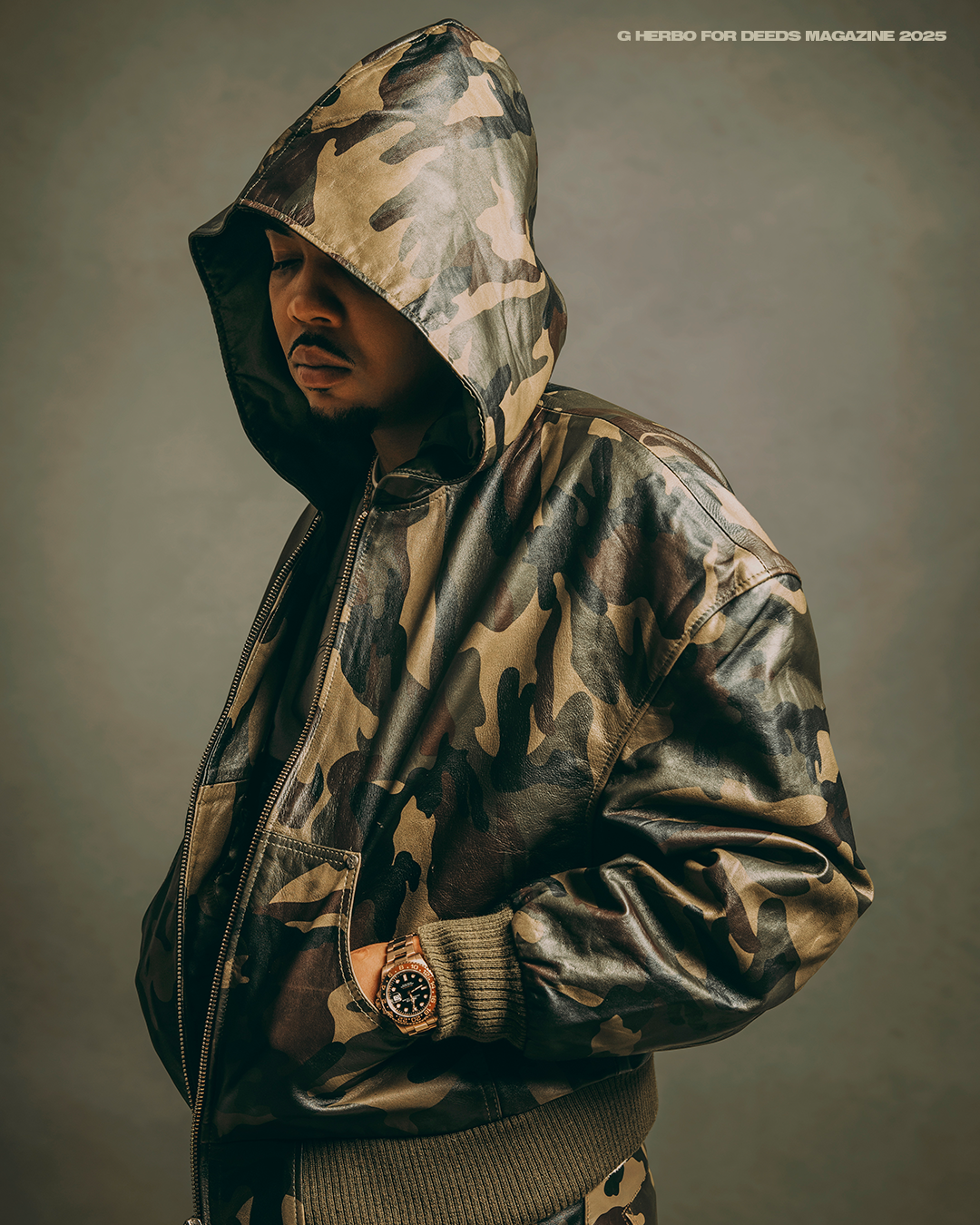
If you could zoom out 50 years from now, what do you want your legacy to be outside of music charts?
I want to be a music mogul. I want to be a CEO, actor. Do more philanthropy work. I always mimic my career to ones such as Jay-Z, 50 Cent, Ice Cube, Dr. Dre, those guys who really took music and their love and passion for music and just opened new doors and took it to heights that was unimaginable. God willing I could do so. I'm still of course young enough to be able to make a couple of the right decisions and just change the whole trajectory of what my career could be in the next 10, 15, 20 years.
How has growing up in Chicago shaped you beyond the grit and survival of it all?
Chicago taught me to be able to go without a lot of things. I don't really need much, even though I've gotten to a point in my life where I have resources and can provide certain things for myself or for my family. But growing up in Chicago just taught me, all I really need is a studio, a camera, and just a dream and just to be able to believe.
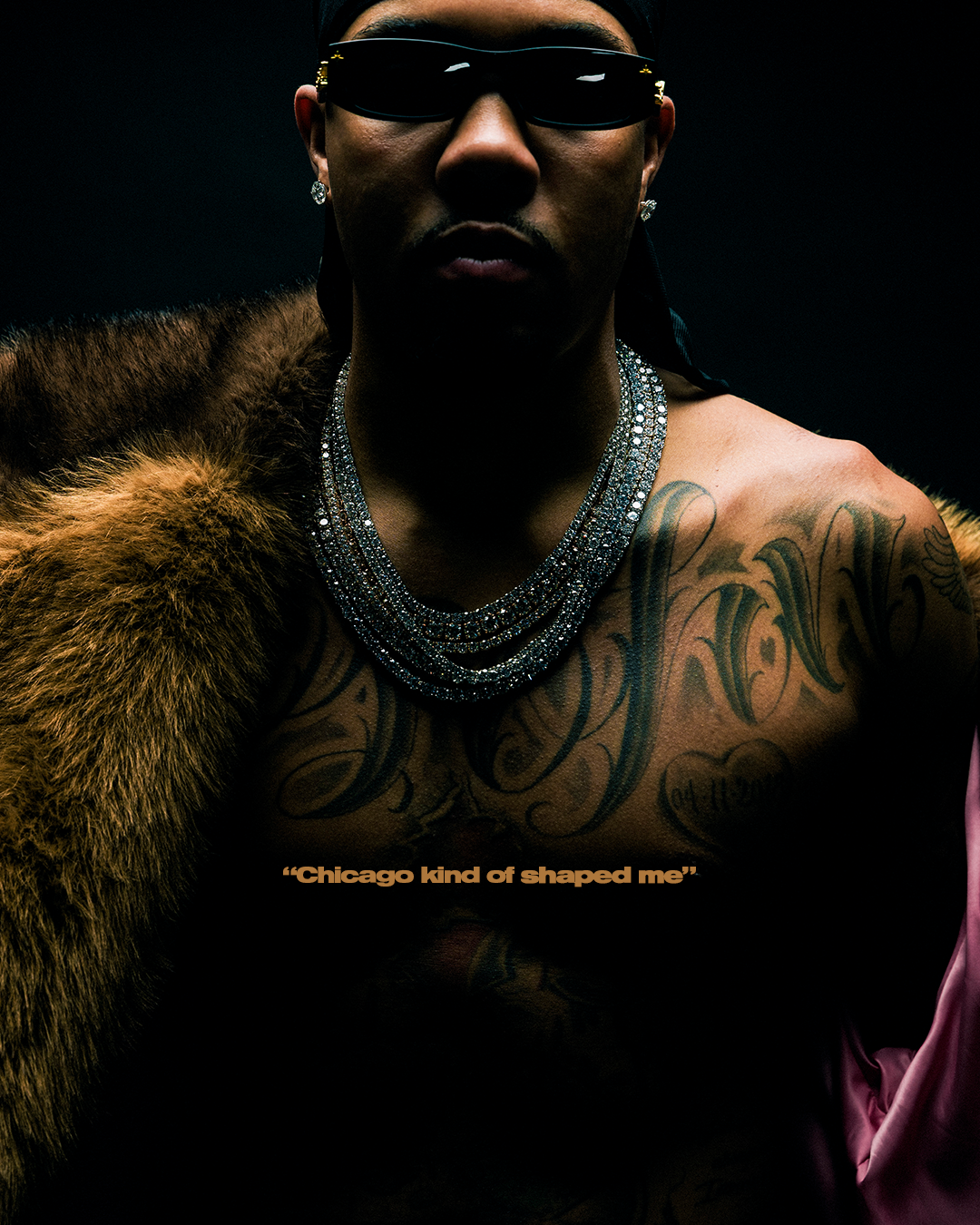
Chicago is just one of those places where we just make it happen with whatever we got. Growing up in poverty, Section 8, public housing, EBT, all of those things that just shape a Chicago native into someone where that hunger is really the fuel and the only fuel that they need. Coming from there, it showed me how to be fearless and just take whatever I have and make something of it and lean towards my fears and not be afraid to take a chance and take risks in life. You could tell when somebody from Chicago. Being from Chicago, you always stand out for sure.
Does success ever become overwhelming? What advice do you have for young successful artists?
Definitely. I think success becomes overwhelming because, for one, when you reach a certain level of success, everything's in the public eye. Your personal life and your family dynamic and all those kind of things are just in the eye of the public. And if you don't know how to maneuver and deal with those kind of things, it'll get the best of you.
I had to learn how to just not really feed into the eye of the public and feed into the opinion of the public and just focus on striving and continuing to be successful because in this life and in this game, it is what you sign up for. We sign up to be able to take care of our family and be able to provide and create opportunities for others. So that's what I try to focus on and just be grateful for what I have and being grateful that I've reached a level in my life where everything I do is being watched, where people even care enough to be invested in my life.
I try to look at the positives more so than the negatives. But it definitely becomes overwhelming and it's not for the weak. You got to be strong in this industry and you got to be able to take the good with the bad and just focus on the good and just keep on leveling up.
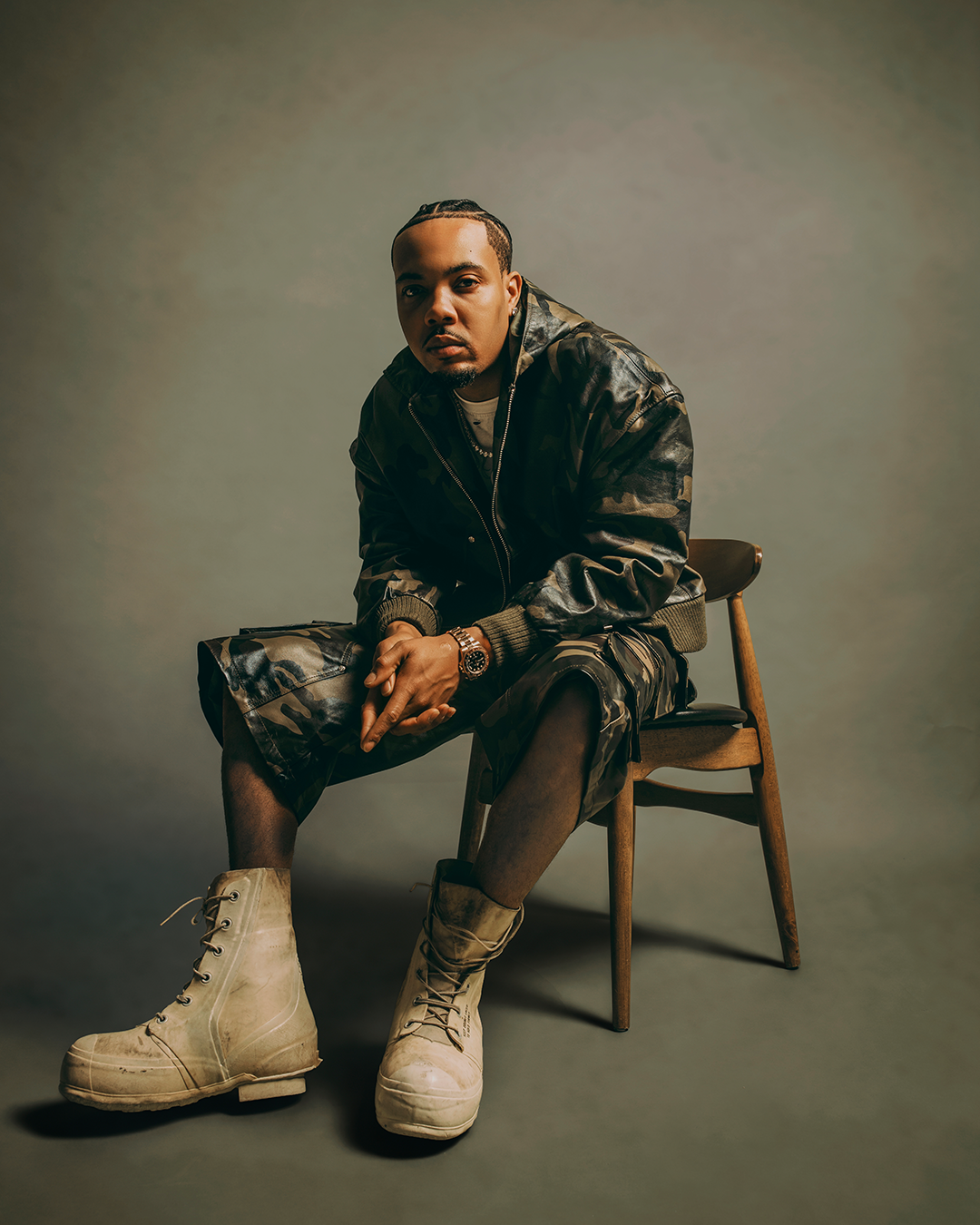
What do you believe your responsibility is to your audience and the next generation?
I believe my responsibility is to teach, for the next generation to be able to see my career and watch my career and decisions that I made good and bad and to be able to learn from them the same way that I was able to learn from the people that I looked up to. I watched a lot of Juelz Santana, I watched a lot of Lil Wayne, I watched a lot of Jay-Z, 50 Cent and those guys and seeing the steps that they took to get where they are in life.
I know there's a guy younger than me that's watching everything that I'm doing. If I could be able to teach the next generation without them having to make some of the same mistakes that I made and to be able to be successful and reach success in this game, I feel like that's my contribution to the next generation.
Has becoming a father changed your approach to the content you create?
Yeah, for sure. I just really want my kids to understand that I made a lot of sacrifices for them to be able to live the life that they live and for me to be able to pour my resources into them so they don't have to make a lot of the decisions and struggle in ways that I had to struggle.
Also, I want them to see that it's possible, that I came from nothing and I made it into something. And with the resources that they have and what they're going to be accustomed to, it gives them a boost to chase their dreams no matter what it is, whether they want to be an artist, entrepreneur, athlete, doctor, lawyer, whatever it is. I want to be able to just pour all those resources into them and just make it as easy as possible. And for them to see what I've done in my life and career and the heights that I took it to that were kind of unimaginable, that it's possible for them to do it, of course.

What's the most important lesson about unconditional love and support that you've carried from your childhood?
The important lesson that I learned about love and support is just no matter what or no matter how hard it gets—in this lifestyle, moving fast and traveling and seeing the world, sometimes you need to rewind. There's no place like home, and there's nothing like family. When you have a support system and a family that really loves you and cares about you and supports you, there's no better feeling than that.
I learned that from my dad. He used to always tell me, just come home and we'll come to you and just relax for a couple days and eat your favorite meals and stuff like that. That's really important, and it makes you feel grounded. It makes you feel at one with yourself and just level-headed because this life can definitely get fast and take a lot from you. So what I learned most importantly is just you have to lean towards family. And it's OK to feel normal again.
What does true healing look like to you?
True healing is first and foremost, for me, recognizing the problem, understanding what it is you're feeling, what your emotions are and correcting those emotions or balancing out those emotions so you can navigate and deal with whatever you're feeling, whether it's trauma, whether it's sorrow, whether it's sadness, even if it's confusion and not understanding.Healing is not an overnight process. It takes time, but you just got to want to do it and lean towards those things. For me, I'm still in the process of actually healing to this day from grief and trauma and things that I felt through my life with losing a parent and losing close friends, losing a brother, all of those things play a part in the things that I feel today. But I also try to lean towards the things that make me happy in life. And that's what helps me; music, staying in tune with God and being spiritual and being close to my family and my children and stuff like that, the things that make me happy. Those are the variables that help me heal to this day.

Who are your mentors outside of rap?
Mickey is one of my mentors. Coffee, he helped me a lot with just balancing through life and my trials and tribulations and navigating with decision making, business models, things like that. Another was Jerry Torrey. He passed away. He was one of the leaders of the community from the community center I went to, CYC, Rebecca Crown. He definitely was one of the people who shaped me into the man that I am today.
And honestly, that's why it's so important for me to do the things that I'm doing in the community and just stay someone who's like a staple of somebody to show these kids something tangible where they could believe. Seeing is believing because I really didn't have that growing up. I didn't have any mentors. I didn't have anybody who I looked up to to really show me right or wrong. I was in the streets early on and I had to learn as I go. A lot of decisions that I made, it cost me a lot, good and bad. So I would say that's why it's important for me to try to be what I didn't have growing up.
What emotional journey do you hope fans take when listening to your album?
I want them to take what they take from it because I'm putting a lot of emotion and a lot of knowledge and trials and tribulations and the things that I experienced in my album. There's no one message that I really want the fans or the listeners to take with them. I just want them to understand that nothing in life is a coincidence. Nothing in life is free or easy. You have to go through the uncomfortable times, you have to change your circumstances, change your environment and your surroundings to get where you want to go in life, whether that's trying to do something that's never been done before or just trying to reach your goals in a way that you didn't think were possible.
And that's what I've done. You don't always have the answers. You don't always know which way to go to get where you want to go in life. But you just got to stick it out and stay focused. So that's the main message that I want them to get, just to stay positive and to believe in that anything is possible.
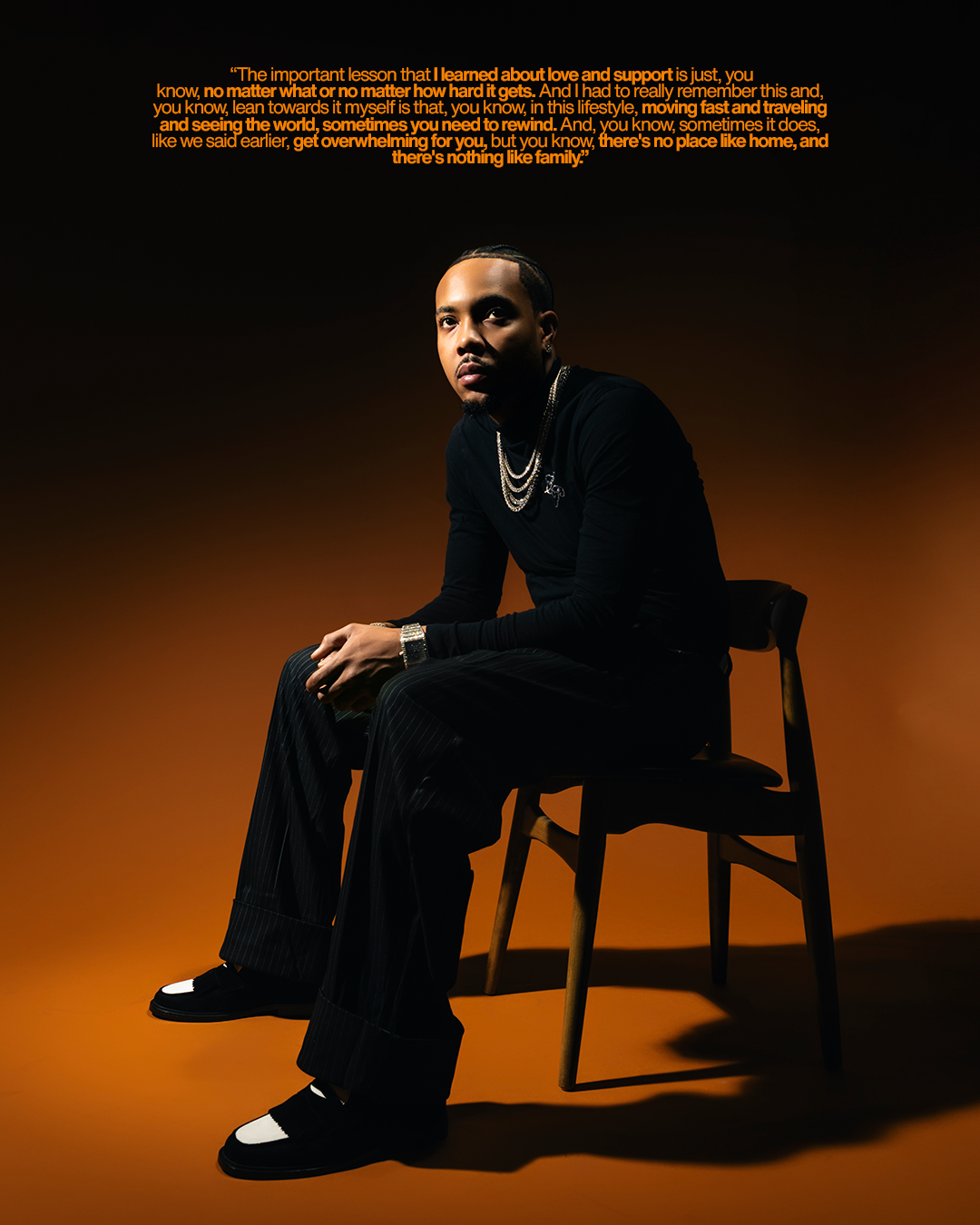
Has your fashion sense evolved as a conscious shift to reflect this new phase of life?
I think it has a lot to do with my age. I can't really dress how I used to or dress like a young nigga, like a YN basically. For me, fashion, I want to still make my fashion be fun and relatable, but still grown man and just evolved. And I want it to look luxurious as well, but it's, for me, fashion is not just high-end brands and stuff like that. It's just how you wear the clothes.
I always want to look fly. I want to look rich when I go outside, and that's how I basically bottle up my fashion. I don't think it's a conscious decision because I've always been into fashion. I've always been into dressing. So it really just evolves with my age and maturity and the brands that I think fit me. And it all has to do with your mood. So as fashion changes and shifts every few years, I kind of change with the fashion, but I still make it true to myself.
How has your personal definition of success changed?
I feel like it doesn't really change, it's just reaching new heights. There's certain things when it comes to charting and album sales, there's certain heights that I haven't reached yet. So I still want to reach those heights. But on top of that, I try not to focus on the numbers or focus on first week sales or album sales or platinum or gold plaques or anything like that. I just try to focus on the music and the message behind it, trying to create good music that people appreciate, that the consumers want to keep consuming and just growing in that way as an artist.
I think that's what got me this far lately over the past few years. I haven't really cared about first week sales or album sales or what goes gold or platinum or YouTube views, anything like that. Of course, I love it, don't get me wrong. I love the accolades and I love accomplishing those kind of things, but that's not what I'm in it for. I'm just in it to create good music and to be able to go out and tour the world and connect with fans where they want to grasp on to the message that I'm trying to get across.

What's the ultimate message you want first-time listeners to take away?
Don't take it personal, man. Life is no coincidence, and no matter what, it's all a part of your journey and your destiny. No matter what you're going through, no matter where you want to go, it's possible for you to get there. I don't want to sound harsh or anything, but I just hate when people complain about life because it's somebody that didn't wake up today. So just be grateful for another chance to change your situation and be a better version than you were yesterday. So that's the message that I would want to give across to anybody who listens.
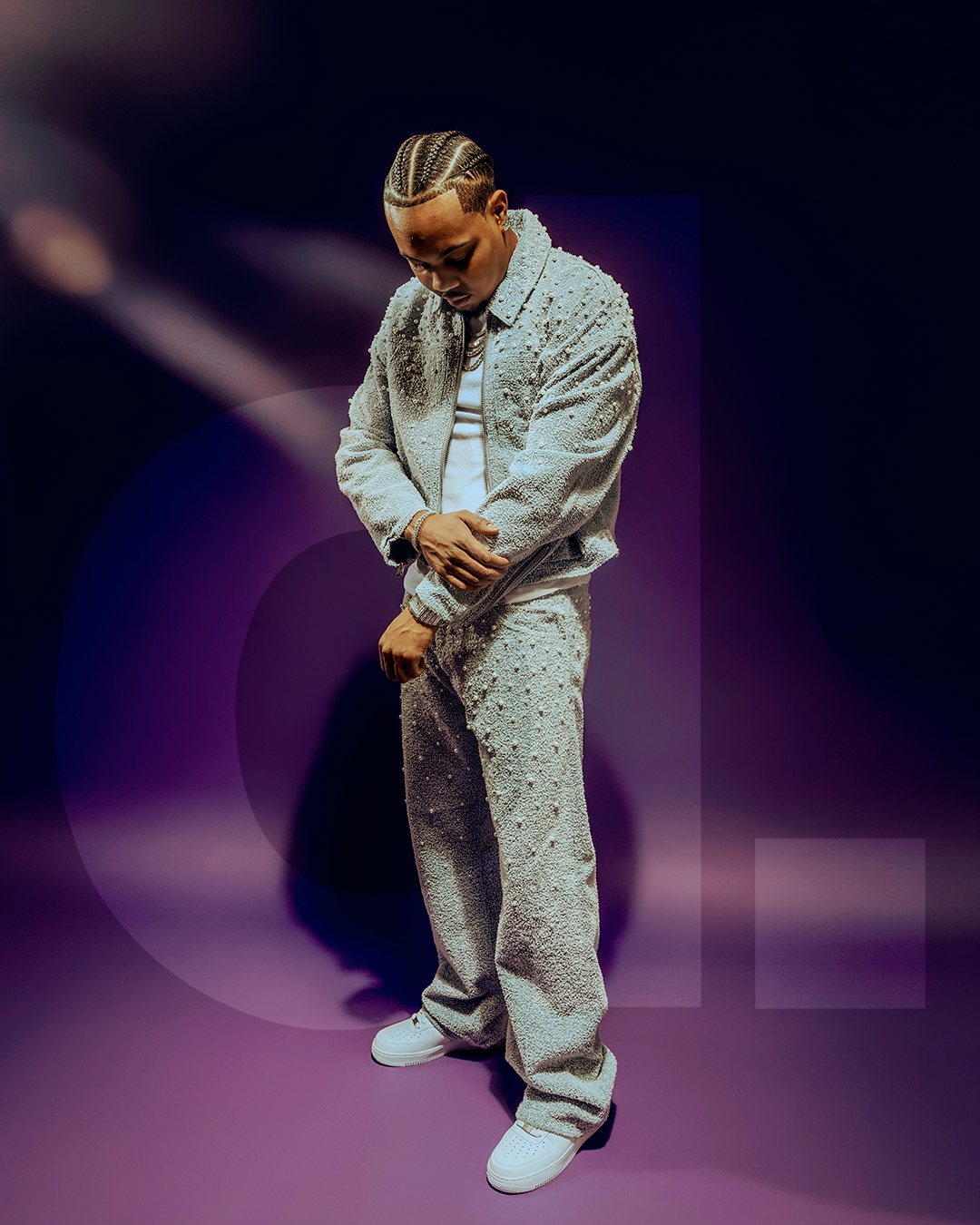
G Herbo's fan base, young and old, will connect deeply with this album, remembering their own times of struggle, loss, or pain. This album will bring much-needed healing to the community. It opens the door for men and women to have necessary conversations about life, making it okay for a man to be emotional, to talk about the importance of therapy, yet still be masculine, strong, and able to provide for his family.
His story has the power to make an impact, and Herbo is using his platform as a catalyst for change. The freedom to refuse to let your past determine your future is the hopeful message he broadcasts. The changes you make today can positively affect the generation that comes after you, giving them hope to overcome challenges and believe that anything is possible.
Ultimately, G Herbo embodies the power of perspective. While many of us look outward for an answer, his testimony shows that we may be the very solution we seek. Adversity gives us a story to tell, and a choice: whether to create impact or remain the same. Herbo didn't wait for permission; he became, with an undeniable sense of honor, class, and integrity.
G Herbo CREDITS
PUBLICATION: Deeds Magazine @deedsmagazine
TALENT: G Herbo @nolimitherbo
CO-CREATIVE DIRECTOR | PHOTOGRAPHER: Williams Peters @bytunde
CO-CREATIVE DIRECTOR | PRODUCTION MANAGER: Zacharina
Dainkeh @zacharina.a
DIRECTOR: CEOJAY @ceojay__
FASHION DIRECTOR | LEAD STYLIST: Gloria Johnson @styledbyglo_2
ART DIRECTOR | LIGHTING TECHNICIAN: Kabir @ahappeningguy
GRAPHIC DESIGNER: @shalemalone
VIDEOGRAPHER: Jadah Dunyoh @jdunyoh
PHOTOGRAPHER ASSISTANT: Uché @uchennaaduaka_
BTS PHOTOGRAPHER: Yuriy Baranov @yb_captures
STYLIST ASSISTANT: Will Kadima @flossywilll Tyler Bride @tylerbride4
PRODUCTION ASSISTANT: Jermaine Hamilton @jettv_ Norrell jackson @norre.
STUDIO PARTNER: @ContraStudios
We navigate through East London's winding roads until the city feels like it's falling away—industrial estates, quiet warehouses, the kind of outskirts where creative work happens undisturbed. Inside the studio, the atmosphere is thick with focus.The set buzzes with urgency.
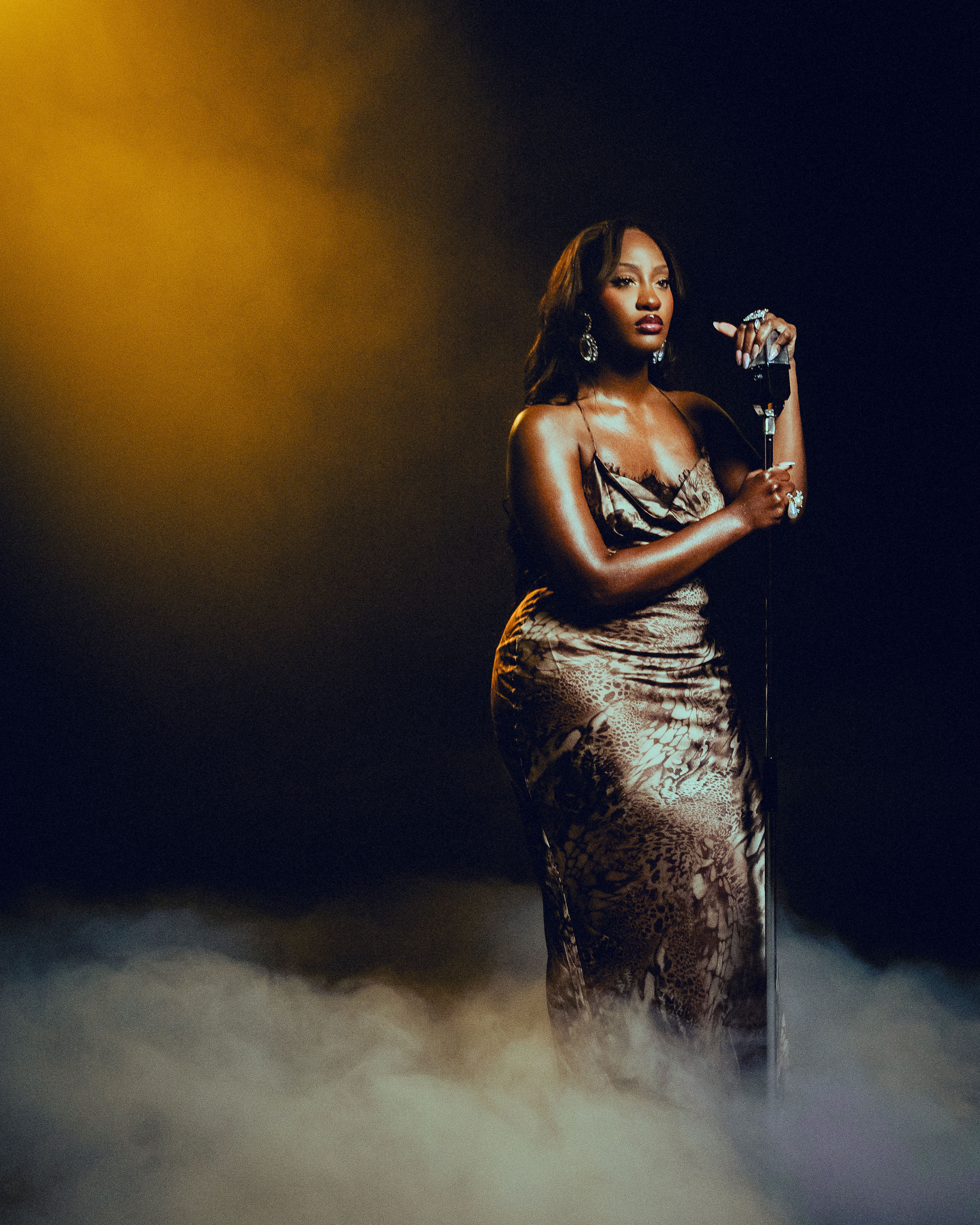
Her team of four photographers circles around her like planets orbiting a quiet sun. Tems seems both at peace and a little tired, locked into that deep creative zone that only artists know. As a low fog sweeps across the scene, pooling at her feet while she stands rooted in the spotlight, regal and magnetic.

I’m just taking it all in — watching her perform in real time, witnessing the way she shifts her energy between takes. While the photographers huddle close, waiting for micro-moments to capture the perfect shot, Tychus Wura steps back toward the stairs, angling for something different, something almost mythic. In another universe, that shot alone could be the album cover for Love Is a Kingdom.

Her stylist, Dunsin Wright, moves quietly but decisively, coordinating the entire team. It’s the final day of shooting, Tems has been on set since morning and still has two more looks to go. Jyde moves between departments, directing, smoothing over tension, and keeping the whole production from slipping off schedule.

As I look around, I’m completely mesmerised by the music filling the studio. I can’t believe my life — I’m standing here listening to seven unreleased Tems songs, each one unfolding in real time as she moves through the set. She’s deeply involved in every moment of the shoot, asking for retakes, adjusting details, protecting every inch of her creative vision. Her presence is magnetic; even though it’s “just” a music video shoot, it feels like an intimate, private performance meant for a handful of witnesses. The way she commands the spotlight, quietly but unmistakably, carries the energy of a true superstar. If Love Is a Kingdom, then Tems is Queen.
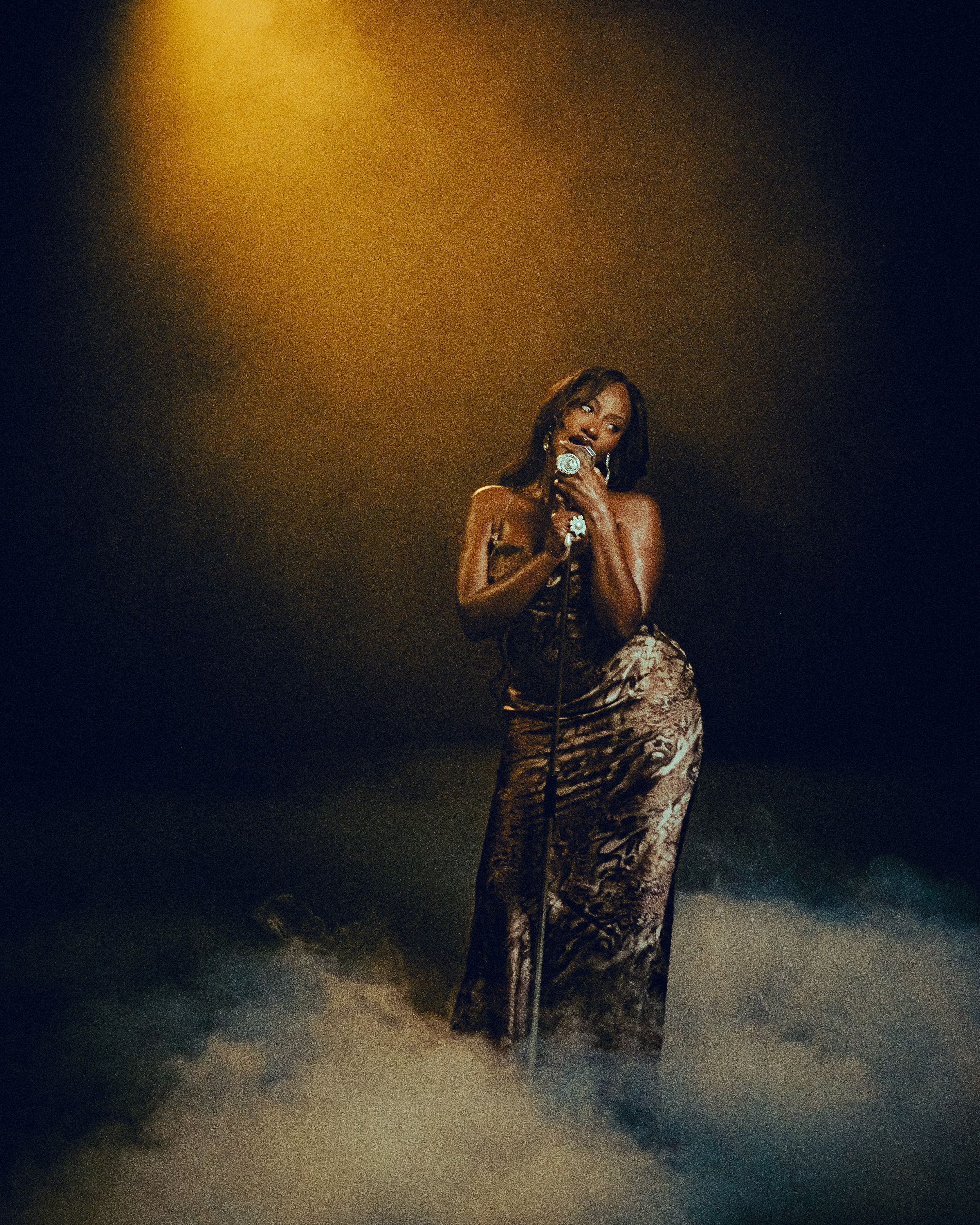
Photographs by Tychus Wura
“Everyone’s like ‘What’s Lustropolis?’” After a brief pause for dramatic effect, and a slight nod of his head, as if to say “Here goes,” Odeal proceeds. “Everybody lives in Lustropolis. We all live in Lustropolis at some point in our lives. We’re just just trying to make it out.” In this video, posted days before the release of his latest EP, The Fall That Saved Us, Odeal explains Lustropolis, his 2024 project that also doubles as a metaphor for toxic romance. With its intricate world building, this clip is something of an early Christmas present for fans spellbound by the lustrous worlds Odeal conjures in his projects.
As he tells it, Lustropolis owes something to a fairytale romance gone wrong. “I thought things would last and that took me to my villain arc. Industry is dark, if you don’t find love before that sh*t, you’re lowkey cooked.” The Summer That Saved Me, the sequel to 2024’s Lustropolis, is a bright, effervescent Pop-R&B record. Here he eschews the chaos of Lustropolis for something close to but not quite catharsis.
In Miami, which opens The Summer That Saved Me, he affects a disarming tenderness, serenading his muse over guitar melodies that ebb and flow like a gentle evening breeze. “Hold me. Take me. Never release me,” he sings. His voice drips with palpable yearning. It almost feels like the consolidation of a fairy tale romance, but listen a little closer, and what you’ll find is the spectre of chaos bubbling beneath the illusion of calm. His lover is still in the throes of a previous heartbreak and constantly has to numb her pain with alcohol. More crucially their relationship exists in the hazy interstice between a friendship and a relationship—“situationship” is the word. “We stayed friends in Miami but we made love in Argentina,” he sings.
It’s little wonder that in The Fall That Saved Us, he’s back to the dark, gnarly universe of Lustropolis. But while the two projects share a mellow, brooding atmosphere suffused with the volatility of a topsy-turvy romance, they differ in one key aspect. Lustropolis feels like an elegy for a relationship at its tail end. We’ve all been here before, or as Odeal puts it: “we all live in Lustropolis at some point.” Both parties know the relationship is at its end. You know there’s no saving the situation, there’s no light at the end of the tunnel. But you still hold on—part nostalgia, part bind-faith—until the relationship ultimately implodes.
By contrast, in The Fall That Saved Us, streaking through the chaos—the lying, cheating, gaslighting—is a hope that’s hard to deny. You get the sense that Odeal and his muse are wending through a rough patch as opposed to performing the final rites for a moribund relationship. In Pretty Girls, a sultry ballad that calls to mind 80s R&B, Odeal invites us into his turbulent relationship. “We went from sex in the morning, to crashing out most days.” Later in the songs he pulls apart even more sordid parts of the relationship, singing about cheating and gaslighting his lover. He might seem a terrible lover, maybe their both terrible lovers, but what he really wants is his lover’s attention. “Act like you want me/ Prove it and show me/ If I’m being honest/ You got what the pretty girls want,” he pleases.
The Fall That Saved Us offers no easily resolved moral dilemmas and this is what supplies much of the project’s charm. In Molotov, my personal favorite, over a gorgeous bounce, he paints a picture of a situation with a dithering romantic interest. As he perceives the situation, he is not sure she wants to be with him, and for a moment he busies himself trying to convince her and prize open her true feelings. The irony is that he also seems emotionally unavailable. “Wanna love but I’m tired and exhausted/ I’m from Molotov, where the b*tches hella cold here,” he sings. Blame it on unresolved emotional baggage or anhedonia, but he’s not willing to offer the same grace he demands.
Immaculate songwriting is an indelible feature of every Odeal project, so much so that we sometimes take it for granted. And yet, he still finds ways to surprise us. Consider Wicked’s overture. Over gorgeous keys that evoke a visceral sense of wonder, he sings: “They say there's no rest for the wicked/ But you slept on me, baby/ You the wickedest/ If I had a dime for every time/ We'd be millionaires.” Whew!
In Night in the Sun, which featured a resplendent verse from Afrobeats frontman Wizkid, the project pulls close to something resembling catharsis. With its upbeat and chipper production, Nights In The Sun would fit perfectly within The Summer That Saved Me. “Nights in the sun/ You got me right where you want/ Tables are turning/ I found my person/ Bon la vida,” Odeal sings. Hearing him rhapsodize about breakfast in the mornings with his lover and finally finding respite from the turbulence of their relationship might lull you into a calm, but you’ll still find yourself wondering how long this calm will last.
On the 13th of November, 2025, as the internet buzzed with holy indignation over a new trove of emails further connecting Donald Trump with disgraced American sex offender Jeffrey Epstein and newer but no less egregious allegations against Paystack co-founder Ezra Olubi, Don Jazzy, CEO of Mavin Records, readied himself for what has now become a familiar ritual: the unveiling of a new artist on the label’s roster. “Let me not take too much of your time,” he begins, “so, tonight, by 12 midnight, I'm going to be unveiling a new Mavin (artist) for you guys.” In the announcement clip, he looks characteristically jovial. Wearing a white shirt and lying prone, he instructs his armada of followers, nearly nine million people, to turn on their notifications in anticipation of the announcement.
True to form, the announcement video sparked conversation almost immediately. Before long, a curious horde had camped in the comments section of the post, guessing who the latest debutante on Mavin’s roster is. CupidSZN is his name. Around midnight, Don Jazzy and Mavin Records announced the light-skinned, blonde dreadhead—whose honeyed vocals perfectly fit the contours of both Afrobeats and R&B—as the label's latest signee. Congratulations were in short order for CupidSZN, supplied by fans and industry colleagues. But as the days wore on, what initially started on a festive note began to take on a censorious complexion. Several music enthusiasts and critics began pushing the narrative that acts on the label sound too similar.
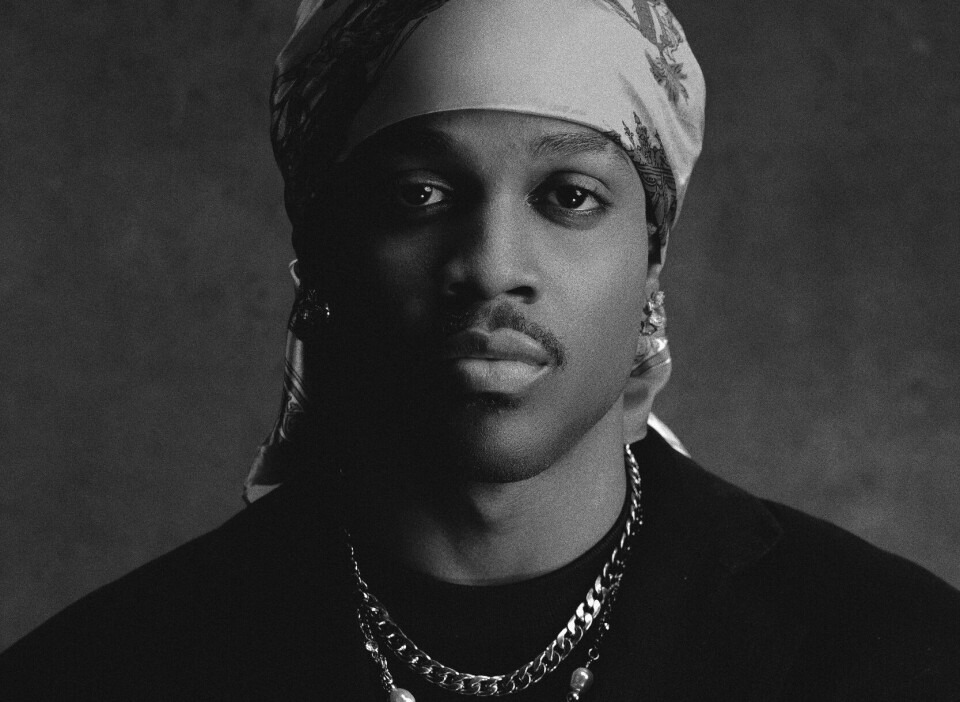
By way of a video captioned “MAVIN roster feels due for a risk. My thoughts on the latest MAVIN signing,” music commentator Emman Owoniyi contributed to the conversation. “The (Mavin) roster right now, it just feels very… you can’t tell them apart,” he says. He concludes his diatribe by arguing that the label might want to consider signing a “street-adjacent act” in the lineage of Fola or TML Vibez. Adeayo Adebiyi, a music commentator at Pulse NG, also weighed in on the conversation arguing that Mavin Records “might be better suited to floating a distro/label that will break the next street act than signing one themselves,” since the center “appears to have reached its elasticity point.” The vast majority of the critiques that have sprung up against the label in recent times have hewed close to Owoniyi and Adebiyi’s views. The result has been a self-propagating message inching towards a consensus position.
The recent popularity of this position—Mavin’s roster is too homogeneous and the label might benefit from signing a Street Pop act—notwithstanding, it falters because it wrongly diagnoses the problem. Consider Owoniyi’s assertion that “you can’t tell them apart.” This is categorically false. There’s no way Elestee can be mistaken for Ayra Starr, or Boy Spyce for Bayanni, or Rema for Crayon, or Magixx for Johnny Drille. One can run virtually any permutation of this exercise and arrive at the same conclusion: the artists in the label’s ranks are sufficiently distinct.

CupidSZN, the latest Mavin, has drawn comparisons to Boy Spyce and Rema. The truth however is that for the most part, the illusion of similarity between these artists and CupidSZN owes something to the natural human tendency to find patterns and processes that anchor new phenomena to existing ones. If you have followed the Nigerian music scene long enough you’d remember that Rema initially drew comparisons to Wizkid. There was a time when people would fight to the death that Joeboy and Fireboy sounded the same. Following her eponymous EP, Ayra Starr drew comparisons to Tems. Time has dispelled these allegations but at the time, those who made these claims would swear by their assertions.
Do Mavin artists, however, share certain similarities? Yes, of course. The label has a reputation for polished, radio-ready Afrobeats with strong pop sensibilities. But is this a problem? No. Most successful labels have clear-cut identities that inform the kinds of artists that make their roster. You think of Top Dawg Entertainment and what comes to mind is moody, lyrically dense Hip Hop/R&B. YBNL for the longest time was a bastion of Street Pop/ Indigenous Hip Hop. Young Money/Cash Money Records, in its heyday, had a roster of artists—Lil Wayne, Drake, Nicki Minaj, and Tyga—who shared a tendency for melodic rap and lyrics dappled with themes of wealth, bravado, and excess. Building a label of artists that share a similar ethos is crucial for two main reasons: it allows the label to operate efficiently the same system—marketing plans, staff—can be used multiple times; it also breeds a shared identity among the artists.

Mavin Records however has a problem, one they have to solve to usher in a new age. To put it simply, the label is increasingly drifting away from the zeitgeist. Art exists, among other reasons, to hold a mirror to society. And often the most successful artists are those who are able to best embody the pulse of their generation. This is as true in the world of music as it is in film and visual arts. This is, however, a phenomenon that’s well understood and documented in the “structured” art world. It’s why art history is neatly sectioned into eras—Impressionism, Modernism, Post Modernism, and Contemporary art. The art of each era tends to share a similar aesthetic that reflects the zeitgeist of said era.
What then is the defining ethos of this world? In two words: radical authenticity. Think of the figures who have dominated global politics in recent times—Donald Trump, Nick Fuentes, Zohran Mamdani—what they share in common, regardless of their political positions, is an undeniable authenticity. These guys are the diametric opposite of establishment politicians, otherwise known as the political elites. They repudiate orthodoxy in favor of a rhetoric that feels both true to them and reflective of the fraught times we inhabit.
A similar ethos has washed over global popular culture. It’s why Timothy Chalamet’s ferment and Ayo Edebiri’s whimsy have resonated with global audiences. It’s also why in the Nigerian music industry artists like Odumodublvck, Rema, Ayra Starr, Seyi Vibez, Shallipopi, Mavo, and Zaylevelten, have wielded disproportionate influence over the music industry in recent times. Regardless of talent, style, or aesthetic, what these artists share in common is a faithfulness to being radically authentic.

Ayra Starr is not just an uber-talented global popstar, she provides a vision of what a young African feminist navigating the vagaries of today’s world can look like. Rema assiduously probes the angst of contemporary youth. Omah Lay’s morose variety of Afropop—Afrodepression, if you may—speaks to a generation that has a million and one reasons to be adrift. Odumodublvck’s machismo feels at home with the anti-establishment spirit of our times, and Mavo and Zaylevelten are finding new ways of codifying Gen Z subjects.
By contrast, some of the younger artists on Mavin’s roster, many of whom are among the best singers/songwriters in the Afropop scene, are out of step with the zeitgeist. They don’t particularly tackle anything that reflects the unique times we live in.
Another way the label is out of step with this era’s demand for radical authenticity is how it unveils artists: the grand unveiling that we’ve come to know all too well. Being seen as part of a powerful establishment runs counter to the countercultural spirit of this era: it’s just not cool. Fans would rather sit with an artist in relative obscurity and gradually grow with them than listen to whoever the biggest label in the country tells them is the next big thing. A big unveiling just doesn’t work anymore, community-centered strategies and press runs aimed at providing an unfiltered version of the artist will prove more successful.
One reason for this is that artists now occupy a position previously reserved for religious and traditional figures. Fans don’t just want to listen to good music, they see their favorite artists as extensions of themselves and want to see themselves, or at least a part of themselves, reflected vividly in the music. It must be a very tricky position for the people at Mavin Records who are faced with the incongruity of seeing clearly talented acts constantly underperform. But the music industry in the past few years has undergone a radical shift. Radical authenticity, the ability to convey an earnest and non-conformist perspective on the zeitgeist, is now the most important quality for an emerging artist and if the label wants to usher in its new age, it has to fall in line with this new reality.
Ravington (born Temisayo Durojaye) first emerged as part of Nigeria's new wave, ushered by Alte pioneer Santi through his renowned streams. When Santi featured him on the song “Gates of Heaven” in February 2025, fans got their first taste of his sound. He has since proven that his range extends much farther. He seeks to establish himself as a distinctive voice in the modern afrobeats landscape.
Among peers like Mavo, Luwa.mp4, and Zaylevelten, Ravington stands apart. His music reflects old-school afrobeats wrapped in modern production, layered with an introspective depth that suggests wisdom beyond his years. There’s a maturity to his approach, a sense that he’s been here before.
On his newest three-track EP, he offers a window into what he’s been crafting in the studio: what he simply calls “The Sound.”
Ravington opens with “Pray” , a melodic song with potential to be the hit of the whole project. Here, he channels his hunger for success “I used to pray for the days wey MAGA go pay / No be today wey we don dey pray o.” As seen with most of his works, the production commands attention; crisp, layered, and purposeful. The track sets the tone for an EP that balances raw expression with confident storytelling.
“The Sound” finds Ravington full of confidence, spreading the gospel of his artistry with bold proclamations: “You don’t know the Sound but it will go / overseas and over clouds to where it snows.” The assertive production and talk-your-shit energy echo the swagger of contemporaries like Rema in tracks such as ‘Kelebu’ , yet Ravington makes it uniquely his own. This is him planting his flag, staking a claim in the industry.
He closes with “Morph” a self-produced meditation on pain and perseverance.“I would do anything just to cure the pain / I did everything,” he confesses, flexing his rap versatility while bringing the project to a contemplative close. It highlights the balance between the bravado and vulnerability, showcasing the artist’s ability to craft an intimate connection with his audience.
What truly distinguishes Ravington is his hands-on approach to every aspect of his artistry. From production to visual identity, each project cover reflects deliberate thought about how imagery complements sound. In an era of oversaturated streaming playlists and disposable singles, Ravington's 360-degree creative vision is a reminder of the power of world building when artists take full control of their craft.
Beyond its sleek production and lyrical sincerity, ‘The Sound’ represents a pivotal step in Ravington’s evolutions. It’s the sound of an artist finding his land and owning it with conviction. As Nigeria’s new generation continues to redefine what Afrobeats can be, Ravington stands poised to become one of its most inventive voices.
When considering an artist who transcends musical trends and embodies poetic lyricism, one name immediately comes to mind: Wale. Born in Washington, D.C., and proud of his Nigerian heritage, his music is a vivid sonic tapestry where the weight of his upbringing and ancestry weave through his rhymes, complemented by rhythmic flows and meticulously selected beats. He is a genuine poet performing through the medium of sound.
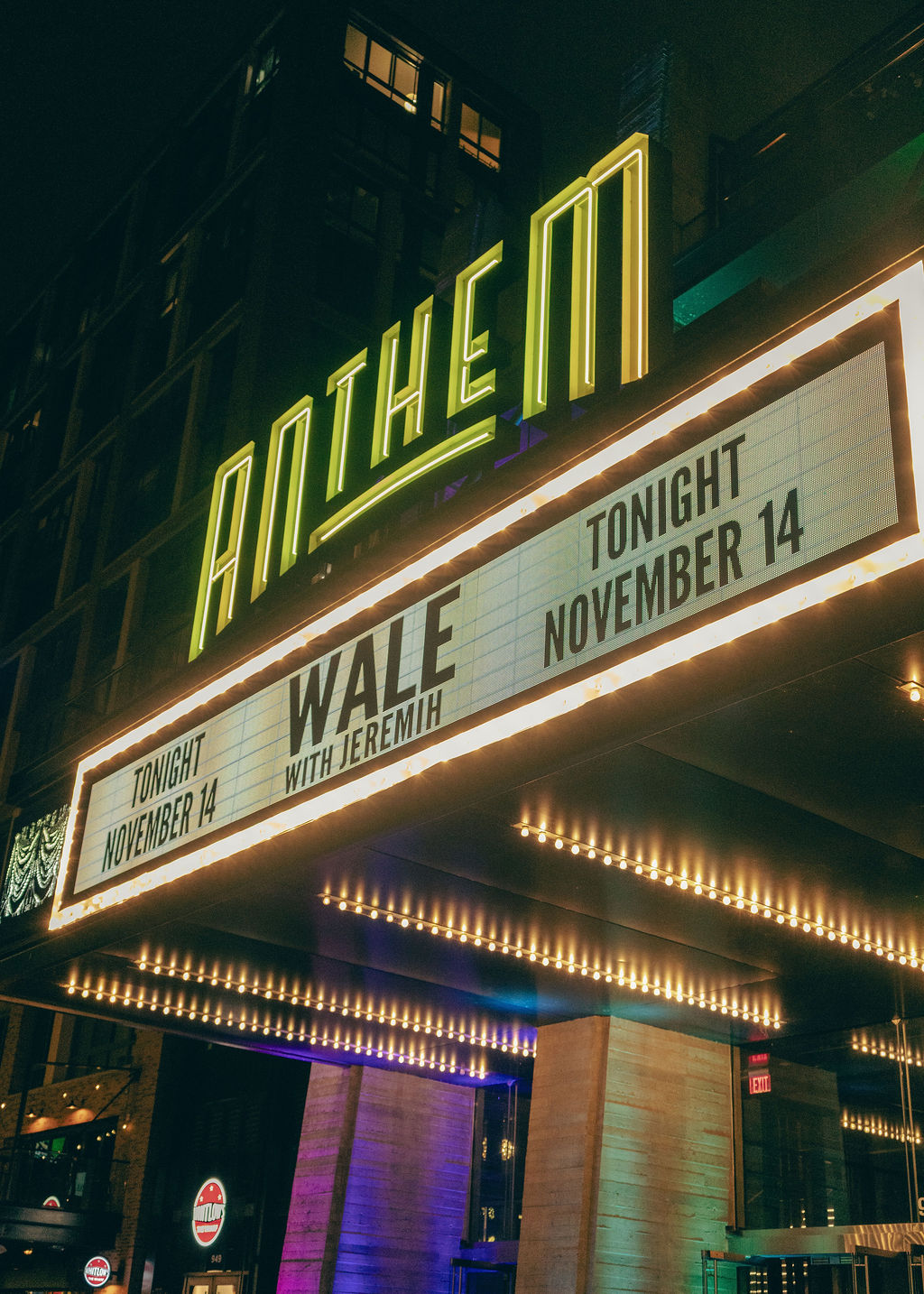
The Culmination of "Gifted Week"
Wale recently hosted a triumphant homecoming that solidified his deep connection to the DMV area. The high-energy, sold-out show at The Anthem on November 14, 2025, served as the spectacular finale of his second annual "Gifted Week." The concert coincided with the release of his eighth studio album, Everything Is A Lot, showcasing his deep ties to both R&B and local culture through supporting acts like R&B singer Jeremih and D.C.'s own Go-Go powerhouse TOB. In the spirit of previous star-studded Wale concerts, the energy echoed the presence of other R&B greats like Mario and Lloyd—artists whose soulful contributions often define the tracks Wale performs.
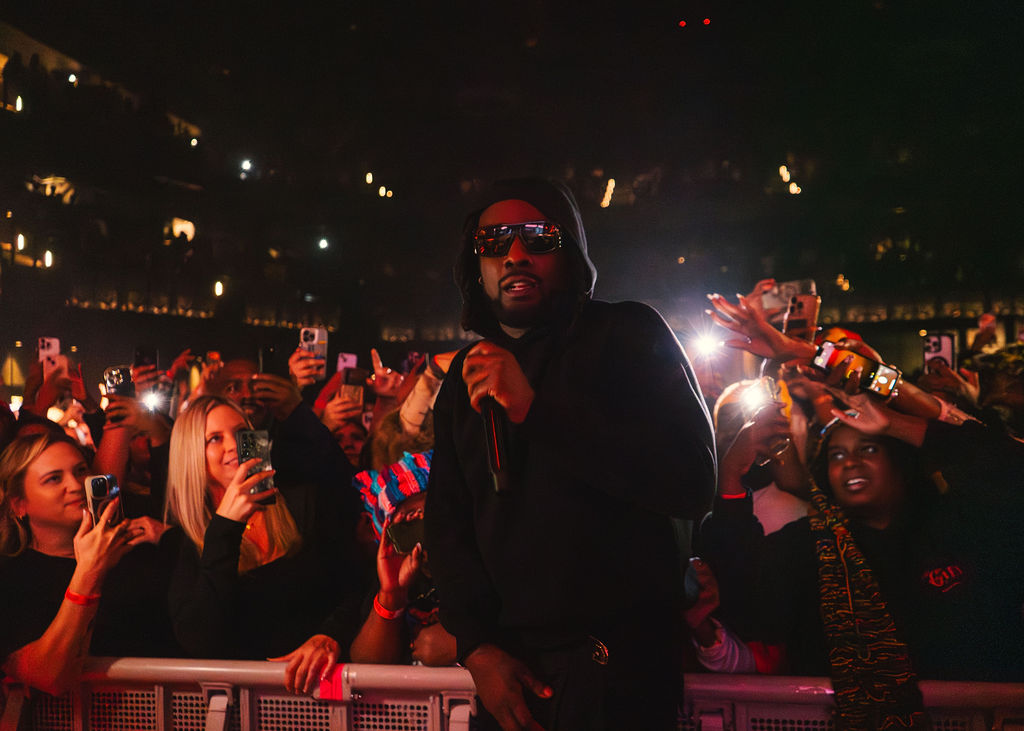
The week itself was less a standard concert series and more a community celebration, featuring a youth football clinic, a sneaker design workshop, and a Black media panel—all aimed at celebrating and giving back to the vibrant DMV culture. During the performance, Wale delivered a high-energy, genre-blending set, moving across the entire stage to engage the massive, adoring crowd with hits spanning hip-hop, R&B, and pop.

Everything Is A Lot: The Power of Vulnerability
The new album arrives as a bold, vulnerable statement, offering a deep look at his intrusive thoughts. It follows a positive trend among artists who are sharing their truth and living in their authenticity, proving that while being authentic is hard, it is ultimately liberating. Everything Is A Lot serves as a personal exploration of mental health, the pressures of fame, personal growth, and the complexities of modern life. As Wale explained, "I called it Everything Is A Lot because that is how life feels sometimes. But in the madness, there is meaning."
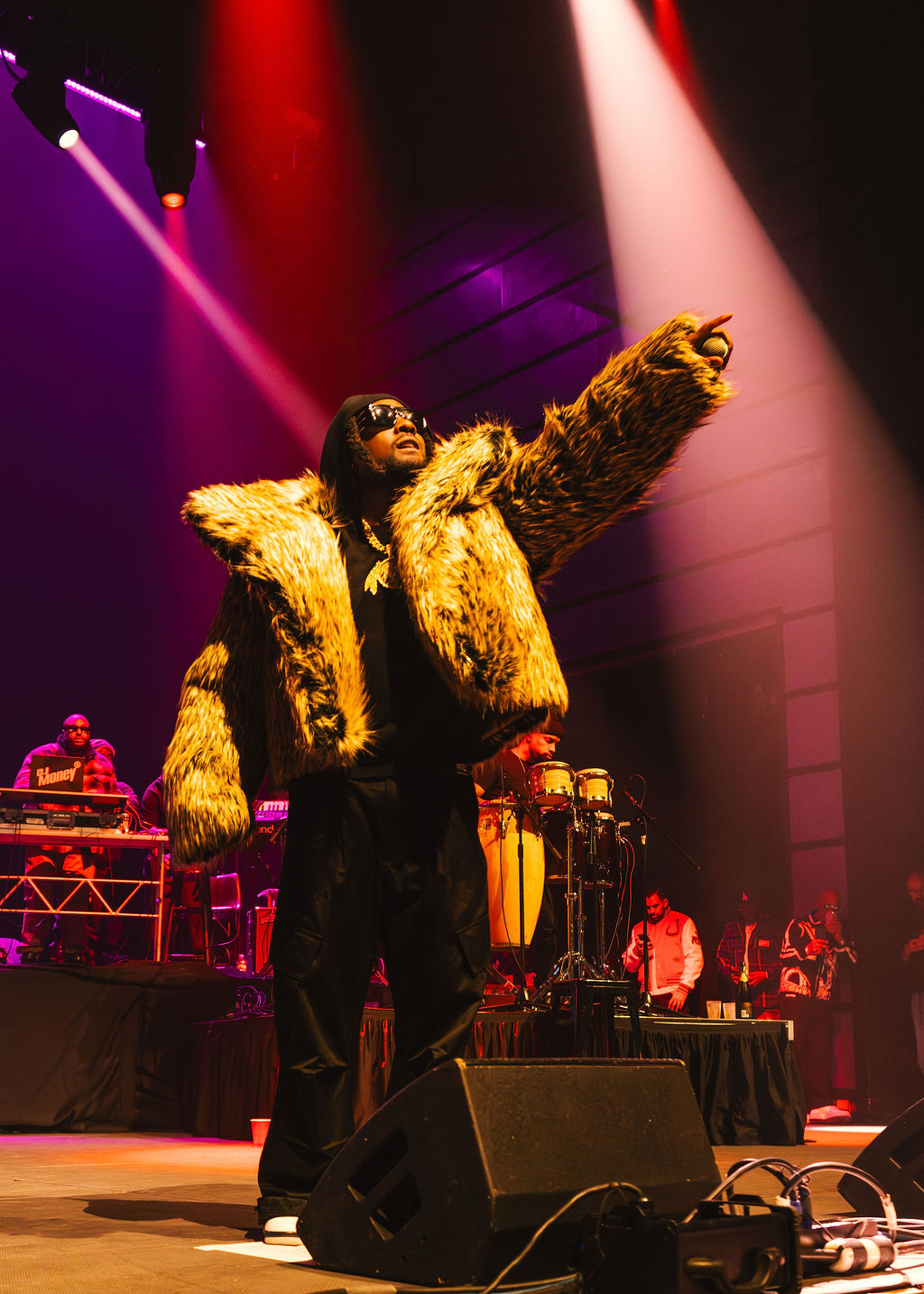
The album emphasizes vulnerability and emotional depth, with Wale intentionally moving away from elaborate concepts to capture immediate, raw feelings. He revisits the self-aware and poetic style that characterized his earlier work like The Album About Nothing, using scattered introspection and audio clips to reflect on his journey as a seasoned veteran in hip-hop. The production features a diverse sonic palette, incorporating soulful samples, bluesy influences, R&B, and Afrobeats elements that connect to his Nigerian roots and D.C. foundation. Throughout, Wale addresses the challenges of maintaining attention in the age of algorithms and social media—an "uphill battle" he has faced since his debut album Attention Deficit.
The album features guest appearances from Shaboozey, Ty Dolla $ign, BNYX, Leon Thomas, Andra Day, and ODUMODUBLVCK. Notable tracks include the lead single "Blanco," where Wale addresses his past struggles with alcoholism, "Watching Us" featuring Leon Thomas, which honors the legacy of R&B music, and the closing track "Lonely" featuring Shaboozey, a stripped-back meditation on isolation and the search for peace.

An Artist for the Ages
What distinguishes Wale is his unyielding commitment to authenticity. He has never shied away from his history, his identity, or his core sound. Unlike artists who chase fleeting trends, Wale consistently produces music that feels deeply personal and true to his soul. He is, without a doubt, one of those artists whose work will endure for generations to come. His music doesn't simply follow what's popular—it establishes a genuine, almost spiritual connection with a fervent and deeply loyal fanbase centered on his cultural roots and exceptional storytelling.
Photos by Izeyah Narvaez @Koi._.Kai
Following the release of his 2024 debut album UGLY, Dandizzy has spent much of this year sharpening his profile through an impressive run of singles and features. Collaborations with Duncan Mighty, Eeskay, and others have kept his name circulating across the mainstream and the underground, culminating in the arrival of his new EP, Life on the Wave. The 6-track project enlists Aguero Banks, Ajebo Hustlers, and Psycho YP. For an artist who has steadily climbed from Port Harcourt street freestyles to national recognition, this project feels like both a reaffirmation of his consistency and a moment of creative recalibration.
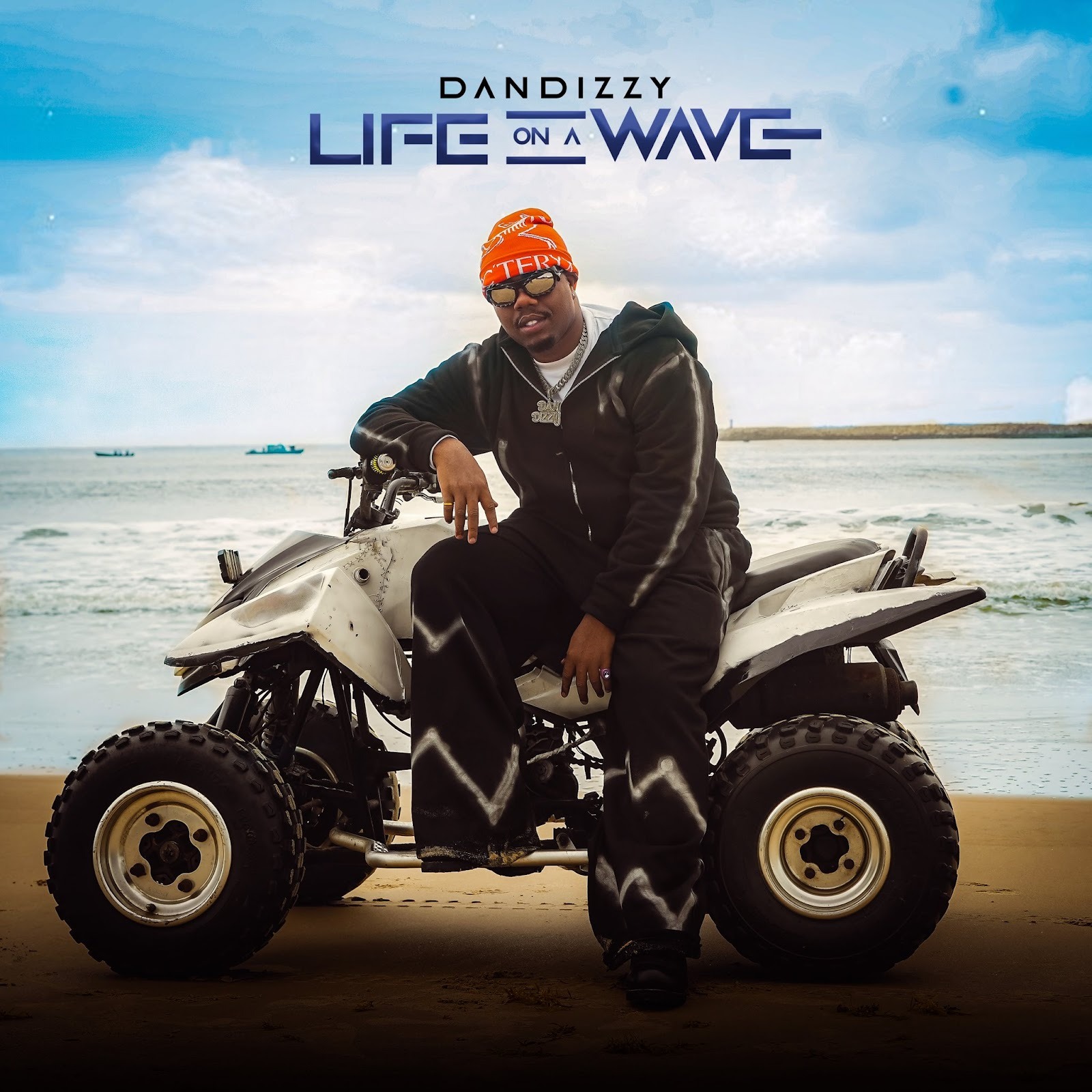
The EP opens with “Nobody” a record that immediately signals that Dandizzy is operating from a place of emotional maturity and introspective clarity. Over a trumpet-leaning instrumental that swells with warmth and melancholy, he trades his trademark rap grit for a vocal performance rooted in vulnerability. He reflects on his grind, the necessity of evolution, and the pressure that accompanies ambition. The track’s mid-tempo structure and melodic progression create a soft landing into the project, marking a notable departure from the rugged hip-hop textures that typically define his catalogue. Here, he demonstrates a willingness to be led by melody, resulting in one of his most emotive performances yet.
The transition into “Trouble” is seamless as the beat subtly nods to the Banku Music era of 2016/17, echoing Mr. Eazi’s breezy cadence with a soulful chorus that foregrounds the survival instincts and day-to-day resilience required of a rap artist navigating Nigeria’s fragmented music ecosystem. While the hook leans into softness, Dandizzy’s verse tightens the grip, slipping into a confident braggadocio that balances introspection with swagger. His delivery is clean, measured, and rhythmically locked in, showing he can inhabit genre-adjacent spaces with comfort.
By the time the first two tracks settle, one might assume the EP aims for a largely melodic, mid-tempo direction, which is quite a surprising pivot for an artist like Dandizzy. Yet, this also becomes a testament to his adaptability in a constantly shifting musical landscape. The tone changes swiftly with “I.N.E.F.A” featuring Aguero Banks, which reintroduces Dandizzy’s core hip-hop identity. Over a subtly bouncy instrumental, both rappers glide with an assured fluidity. Their back-and-forth exchange creates a kinetic dialogue steeped in lifestyle reflections, personal highs and lows, and a mutual assertion of status. The chemistry is palpable, positioning this track as one of the EP’s standout moments.
“Senior Man” shifts the energy once more, diving headfirst into an Amapiano foundation built on heavy-duty kicks, shakers, and pulsating log drums. The instrumental pulls the listener into a more atmospheric, nightlife-driven space. Dandizzy thrives here, adopting a confident, chest-out delivery as he brands himself the “Senior Man” a figure of authority across the streets, the night scene, and his romantic escapades in which the dynamic production allows him to stretch through with ease. The tempo eases on “Intruder,” which features Ajebo Hustlers and stands as one of the project’s most emotionally textured collaborations where the PH Boys meet. Piego leads with sultry, melodic vocals that set a reflective, romantic tone. Dandizzy enters with narrative precision, weaving a story that plays to his strengths in imagery and cadence. Knowledge adds a distinctive rap dimension, enriching the track with the duo’s signature Port Harcourt imprint. The interplay between Piego’s singing and the rappers’ alternating Pidgin-driven deliveries forms a cohesive, compelling record that highlights Dandizzy’s capacity for synergy.
The EP closes with “Benz Bop” featuring Psycho YP, a collaboration that leans more into pop-influenced, mid-tempo production than one might expect from two rappers known for sharper edges. Yet this unexpected choice works in their favour. Both artists navigate the beat with ease, creating a smooth, sonically rich closer. Their vocal interplay is sleek, polished, and intentionally understated, prioritizing groove over aggression. It becomes a satisfying final note, emphasizing fluidity rather than force.
Life on the Wave ultimately presents Dandizzy from a refreshed creative angle that pushes him beyond the familiar confines of sharp-edged rap into a broader, more considered approach to collaboration and genre exploration. Across the six tracks, he experiments with emotional openness, melodic structure, and adaptive delivery in ways that feel intentional rather than performative. This EP reveals an artist not just trying to prove versatility, but actively using collaboration as a lens to access new textures, new moods, and new shades of his artistry. What becomes even more striking is how these collaborations reshape the narrative of Dandizzy’s growth. Instead of merely attaching features for variety, he engages each guest artist as a creative partner whose presence influences the direction of the music. His work with Ajebo Hustlers reveals a softer, more narrative-driven side; Psycho YP brings out his smooth, mid-tempo adaptability; and most importantly, his track with Aguero Banks stands as a defining moment on the project. Their performance on “I.N.E.F.A” is a showcase of two of the country’s most in-form rappers locking into razor-sharp chemistry, an exchange that elevates the song from a simple collaboration into a cultural checkpoint for contemporary Nigerian rap. It is the kind of link-up that makes a compelling case for more joint ventures between the two. Overall, Life on the Wave offers a clear signal of where Dandizzy is headed: toward a more expansive identity built on emotional range, collaborative intelligence, and a keen ear for genre fusion. It is a project that widens his artistic frame and leaves the listener hoping to see him deepen these new directions.
Nine years after his debut Homecoming, JoulesDaKid returns with University of Lamba, an institutional project where streetsmarts, swagger, and stylistic experimentation form the core curriculum. The 17-track Hip-Hop body of work gathers a diverse class of collaborators; Prettyboy D-O, Ice Prince, Major AJ, SGaWD, Mojo AF, Tsuni, Ajebutter22, and BankyOnDBeatz, each contributing their own energy to this sonic campus. Rooted in Nigerian street nuance while leaning confidently on UK stylistic sensibilities, the album plays like both a memoir and a thesis.
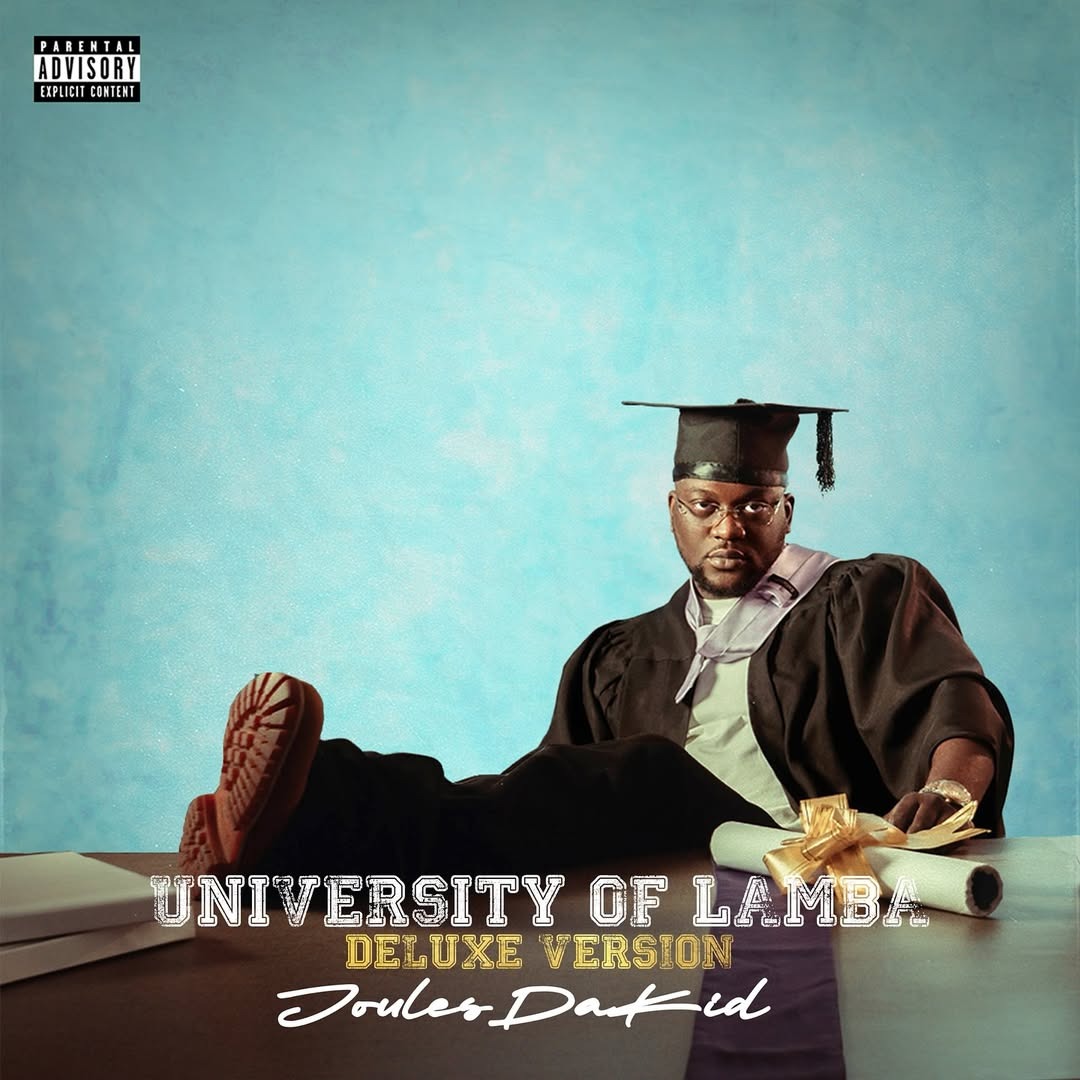
The journey begins with “Orientation Day” , a cinematic skit that ushers listeners through the gates of this metaphorical university. It sets the tone for a guided tour into JDK’s worldview. From there, the syllabus kicks off with “MMTS (More Money Than Sense)” a bass-heavy Hip-Hop entry where JDK raps like someone fully aware of his own shine. He flexes with intention, laying down braggadocio not as empty boasts but as measured affirmations of a man operating in full command of his craft. The energy shifts seamlessly into “Nico Town” where JDK rides a drill instrumental with the confidence of someone straddling two worlds. He lets his Mainland identity bleed through every pocket of the beat, grounding his UK-influenced flows with Nigerian grit. His decision to stay rooted, even while stretching his sound across borders, becomes a central theme. The album’s pulse elevates on “Bo Card” featuring Prettyboy D-O. Over a heavy Amapiano backdrop, both artists glide with the ease of men who have weathered the chaos of Lagos nightlife and returned with trophies. It’s a song about money, motion, and milestones. An anthem for anyone who has ever felt themselves leveling up in real time.
Comic relief cuts through with “Course Registration Wahala” a humorous skit that doubles as a crash course in street etiquette. Its playful energy transitions into “10 Bottles” featuring Ice Prince, where the Amapiano shakers carry the record like a procession into the late-night dancefloor. JDK clearly builds this one for DJs—rhythms that reward repetition and a hook that slides into the bloodstream. Ice Prince complements the record effortlessly, almost indistinguishable from the fabric of the chorus—proof of chemistry years in the making. “Fake Love” with Major AJ stands out as one of the album’s most inventive fusions as a meeting point between Afrobeats warmth and rap’s narrative hardness. Major AJ’s cadence dances across the percussion, chanting against insincere affection, while JDK delivers a technically sharp verse layered with vivid storytelling. It’s the kind of collaboration that reveals depth with every replay.
Another skit, “Exam Day” swings the album back into its comedic undertones, an interlude steeped in the kind of exaggerated panic and coded street wisdom that anyone familiar with Nigerian culture can instantly relate to. The Amapiano pulse resurfaces with renewed intensity on “Italia” featuring SGaWD, a record that balances groove and grit. SGaWD enters like a spark, over the shakers and thumping log drums, she moulds her tone carefully, switching between sultry assurance and pointed delivery, while JDK stays nimble beside her, interpolating slick rap cadences with pop-leaning melodies. The chemistry is measured yet exciting, the kind that feels like two artists building a bridge between swagger and elegance. Drill returns with full force on “Omo Yoruba” featuring MOJO AF, easily one of the album’s most explosive pairings. Here, both rappers sound like fighters entering an arena with ironclad flows, gravel in their voices, and an aggressive synergy that makes every bar feel like a blow struck in unison.
The emotional tide of the album shifts noticeably as the narrative steps into softer terrain with “Reconnect” featuring Tsuni and “Stubborn” featuring Ajebutter22. “Reconnect” is built on airy synths and warm percussive accents, giving Tsuni the perfect backdrop to spill vulnerable truths. Her vocals stretch like silk over the instrumental, carrying the ache of longing and the desire to rebuild fractured intimacy. JDK responds with verses that feel more journaled than performed lines dipped in regret, clarity, and understated affection. On “Stubborn,” Ajebutter22 reinforces this emotional pivot with his signature laid-back charm. He floats effortlessly over the beat, almost conversational in tone, as he navigates themes of love, resistance, and emotional negotiation. JoulesDaKid complements him with introspective reflections, opening small windows into a personal life that had previously been guarded by bravado. After a curriculum dominated by hustle, masculine posturing, and street-coded survival, these two tracks gently dismantle the armour, revealing softer, untouched corners of JDK’s psyche. It’s a deliberate decrescendo, one that humanizes the protagonist and rounds out the album’s emotional arc with maturity and intention.
The closing arc begins with “Confidence Before Compliments” a top tier record where JDK peels back layers of experience. His delivery is passion-soaked, weighing personal hurdles, industry turbulence, and moments of self-realization. It plays like a diary entry written at dawn, very honest, unfiltered, and resolute. The campus tour winds down with “Finisher” featuring BankyOnDBeatz, a percussion-driven Street-pop cut loaded with lamba and nightlife energy. It’s fun, fiery, and celebratory and acts as a fitting prelude to the final skit, “Graduation Day.” Here, JDK closes the loop, awarding the listener a metaphorical Lamba degree for making it through his conceptual institution.
University of Lamba is a layered and ambitious album that thrives on its thematic consistency. JoulesDaKi constructs an entire world where skits serve as academic checkpoints, genres cross-pollinate like interdisciplinary studies, and each feature adds texture to the narrative. At its best, the album is a fusion of street wisdom, UK influence, and Lagos bravado, wrapped in a conceptual framework that gives the project both personality and purpose. This is JoulesDaKid presenting an album built as a full-fledged institution, one where he becomes professor, student, and storyteller simultaneously, guiding us through every corridor of his sonic campus.
The journey to Summer Walker’s Finally Over It is one fans have been on since the R&B songstress first teased the follow-up to 2021’s Still Over It. The latest offering is the final instalment of her Over It trilogy, which began back in 2019 with her debut album. The three albums have soundtracked Summer's journey of love, heartbreak, motherhood and everything in between.
Finally Over It feels like an absolute chapter of growth for Summer, who offers a mature, grown-up version of herself, coming through not just in the album's lyrical content. But also through herself artistically and creatively. Not one to shy away from her feelings or from being in the public space, she has had issues with social anxiety. She has navigated her fame experience, including how she interacts with fans and how she has been a successful artist.
Throughout the years, we have seen how that has impacted her, whether at her live shows or in situations that call for her to deal with large crowds. However, the love and support her fans have shown her have always been clear, and even at this point, it is clear that it has been well worth the wait for everybody involved.
The 18-track album is a journey in two parts. The first half, titled ‘For Better’, is a powerful testament to empowerment and self-love. It's about choosing oneself and putting oneself first. The second half, ‘For Worse’, is a raw, honest account of pain and heartbreak. It reflects the experiences that have shaped Summer's journey to this point.
Laced with features and offering a wide variety of sounds and vibes, we get across the project. “Robbed You” sees her and Mariah The Scientist reflectively speaking on what should’ve been done to an ex after the disrespect caused throughout the relationship; their energies match up and complement each other. “1-800 Heartbreak” has her and Anderson. Paak speaks on the experience of getting over heartbreak and what that looks like, and on what it feels like, in a way that feels refreshing, before Anderson offers a different perspective on said heartbreak. Bryson Tiller, who is no stranger to pairing sonically with Summer, as evidenced by their previous offering “Playing Games”, is back with “Give Me A Reason”, a love song that shows appreciation for choosing the right person. “Allegedly” blends Summer and Teddy Swims' voices, each speaking to the feelings of two perspectives on being in love and what that feels like for the two of them.
Outside of her collaborative moments, the solo performances, which appear on 8 of the 18 tracks, feel like some of the moments where she can just shine on her own. From the Beyoncé interpolated “No,” which flips Beyoncé's “Yes” and sees her finally putting her foot down with her partner, saying no and not accepting the behaviour, which is a disservice to herself. “Situationship” is also a more R&B, acoustic moment where she expresses her feelings about being in a complicated situationship, feeling like she deserves more, and not wanting to put herself in that situation anymore. Fuck My Type, “FMT as titled, is a standout in the listening experience and feels like a SZA’s Nobody Gets Me, but almost country-esque when you first press play in its soft and gentle melodies. Its lyrical content sees Summers “trading her broken heart for a good life”. It is a message of empowerment and a moment of self-reflection, leaving behind what has always been her norm—choosing the wrong type of guy—and instead wanting to do better herself and to deserve the right type of guy. “Stich Me Up” is another moment of honesty about her vulnerability and fears in a new relationship, having been broken by her past experiences and “needing somebody to stitch me up and pick me up when I’m down”. The title track, album closer “Finally Over It,” is an orchestral moment that feels like the dramatic end of a movie—the movie being the experiences that have shaped Summer over the last few years of her life. As the theme of the album's artwork ties to the idea of marriage, the marriage is between the various sides of summer and the experiences she has had that have shaped her in the moment she is in.
As you listen to Finally Over It. Having been on the journey with the last two albums, it feels like a different Summer we met in 2019 —not only in the lyrical content, which feels more open and vulnerable than we have previously seen from her, but also sonically. There is a softness you hear in the strings' instrumentation, and a more acoustic, gentle sound that, in itself, feels like a reflection of where Summer is and how she is really over it and ready for the next chapter.

Seyi Vibez returns in relentless form with Fuji Moto, a project that expands, if not complicates his already towering catalogue. Now on his seventh release, the Street-pop luminary attempts a cross-cultural fusion: a 14-track collection adorned with Japanese imagery, a title referencing the “wisteria root,” and guest appearances ranging from Olamide to French Montana and Trippie Redd. The conceptual promise hints at a journey back to the origins of his craft, yet filtered through the metaphorical lens of Japanese aesthetics. Whether that symbolism translates sonically is another question entirely.
The album opens with Tortoise Mambo, where Seyi Vibez steps forward like a showman in a hall of mirrors, boasting the ability to shapeshift vocally into Saheed Osupa, Ed Sheeran, and Bob Marley. It’s a flamboyant overture and a proclamation of range, yet the irony isn’t lost that such global versatility stands in contrast to the album’s title, which suggests a grounded cultural core. On How Are You, one of the pre-released tracks, Seyi glides into the Afro-house wave with the ease of someone walking into a familiar room. The record’s heavy drums and escalating groove create a dance-floor invitation, but the songwriting leans on simplicity—“Baby how are you / I just want to say hello”—resulting in a track that moves more than it speaks. Universe brings the expected: crowd vocals, rolling log drums, and an amapiano backbone polished for nightlife. The hook, bright and insistent, does the heavy lifting, compensating for verses that feel more functional than inspired.
The tempo collapses into something tender on Ama, a grieving letter to his late mother. Here, Seyi Vibez sheds the performer’s armor entirely. The delivery is raw, almost fragile, as if every note trembles under memory’s weight, this is a standout moment where he finally allows vulnerability to lead. The emotional grip loosens with the Pressure remix featuring French Montana. Though the production maintains the reflective calm, Montana’s verse feels more like an email attachment than an extension of the song’s emotional world. The synergy never quite materialises, and the remix dilutes more than it adds.
Then the album bursts open like lights at a street carnival: Fuji Party featuring Olamide is a chaotic but intriguing blend, Japanese shakuhachi flutes flirting with talking drums, amapiano bounce, and heavy kicks. It’s frenetic, infectious even, but the title overpromises; there’s little Fuji texture within. Olamide, however, arrives with a nostalgic spark, tapping into his early-2010s cadence with ease. Fuji House leans into high-energy theatrics with synths, electric guitars, commanding drums yet the songwriting falters. Seyi Vibez spends the track hailing different acts in a way that nods to Fuji tradition, but the execution feels shallow, more a gesture than a deep dive. On the title track Fuji Moto, the presence of Waka-style chants creates a familiar Muslim spiritual undertone, and Seyi delivers with conviction. Still, despite its sonic richness, it skirts the very Fuji essence it claims to celebrate another disappointing instance where imagery outweighs intention. Up, featuring Trippie Redd, pulls the album back into moody introspection. It’s a trap-R&B hybrid that plays out like a late-night confession, and Trippie delivers one of the most fluid, complementary verses on the entire project. The track feels like a natural endpoint, a much needed cooling before the cohesion fractures entirely.
The remaining songs, Mario Kart, Macho featuring NLE Choppa, Shaolin, Happy Song, excoet Pressure are all previously released cuts from the Children of Africa EP. Their inclusion abruptly shifts the album from narrative to compilation, flattening any thematic build Seyi Vibez had begun to construct.
Fuji Moto places Seyi Vibez in a sharp tension between presentation and execution, a tug-of-war where the aesthetics win far more battles than the ideas behind them. The project leans heavily on Fuji-adjacent branding: Japanese motifs splashed across the rollout, Fuji-inspired titles, and metaphors that suggest a deep-rooted cultural excavation. Yet what you encounter sonically is a far more familiar terrain, sleek Afro-fusion tapestries, well-oiled amapiano frameworks, and contemporary street-pop formulas that, while impeccably produced, rarely engage with the Fuji tradition the album claims to orbit. The production across the album is undeniably stellar. The arrangements are layered with precision, the percussion sits with a polished weight, the sound design is immersive, and even the genre blends, though occasionally chaotic, are executed with technical finesse. Tracks like Fuji Party and Universe shimmer with world-building detail, demonstrating that he understands atmosphere, groove, and audio architecture at an elite level. But this excellence in production exposes the conceptual gap even more clearly: the soundscapes rise while the thematic direction struggles to keep up.
The album’s promised exploration of “roots”—hinted at through the Japanese “Moto” metaphor and Fuji references never materialises in the songwriting, structure, or vocal approach. Instead, Fuji becomes a decorative accessory rather than a core influence. What should have been a cultural deep-dive feels more like a visual motif stretched thin across an unrelated sonic palette. And with the inclusion of previously released songs from Children of Africa, the project’s conceptual thread snaps entirely. What began as an exploration of identity gradually morphs into a loosely arranged playlist, undermining any sense of narrative cohesion or artistic intent. In the end, Fuji Moto stands as a beautifully produced but thematically hollow experiment, a collection of strong songs waiting for the concept that was supposed to hold them together.
Music is one of the most powerful art forms ever created, but its magic lies in how it’s received. For music to truly work its wonders, it needs to reach people. Sadly, in today’s world, that access often depends on how resourceful you are rather than how talented you might be. This reality places many independent artists in a tough position, struggling to be heard despite their creativity. But change is coming. A new community has emerged to give independent voices the platform they deserve — Cosamote, a creative collective built by and for independent artists, bringing together some of the country’s finest talents to collaborate and showcase their artistry. Each year, the community curates a signature project that reflects their shared vision and artistic spirit. It all began with the announcement of Files’26 — a 13-track project themed around love, curated with passion and purpose.
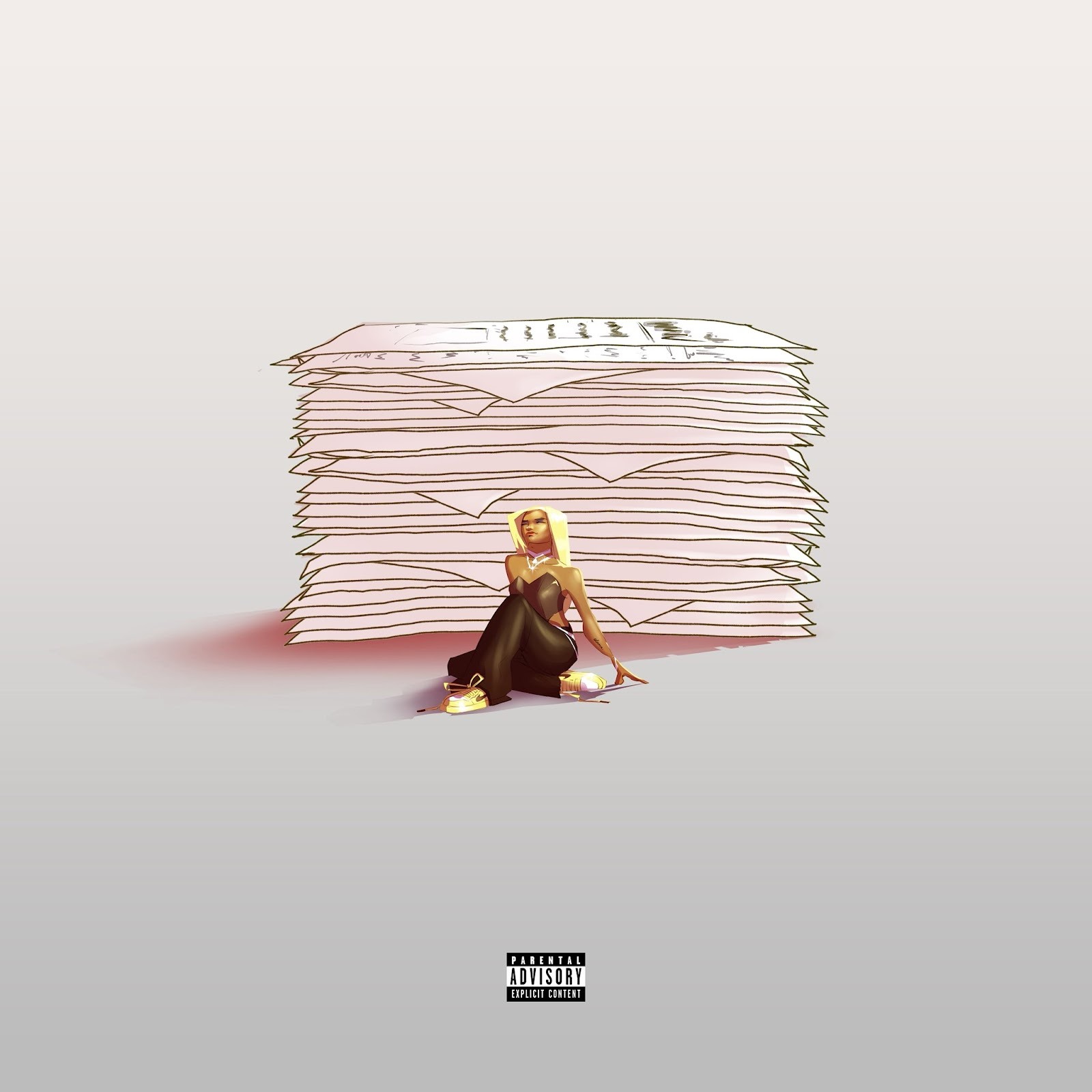
The album opens with “Consistency” featuring Caleb Clay and Jamz fr, a record built on heavy hip-hop instrumentals that Caleb Clay navigates effortlessly with his smooth, confident delivery. Jamz complements the energy with an R&B-driven direction, creating a seamless blend between their distinct styles. It then transitions into a slower, more tender rhythm on “One + One” featuring Musta4a and Fimi, a heartfelt piece where Musta4a leads with vulnerable vocals, delivering what feels like a love letter to his partner. Fimi unveils a new dimension of her artistry here, balancing soulful singing with her signature rap flow, showcasing both range and emotional depth.
The project’s versatility remains at the forefront with “Set The Fire” featuring Musta4a, Suurshi, and Fimi, a track steeped in ‘90s funk and dance influences. Suurshi takes charge of the vibrant chorus, elevating the tempo, while Fimi’s rap verse adds an edge to the groove. Notably, the inclusion of a bridge which is a nearly lost art in today’s music further enriches the record’s composition. The album’s collaborative spirit shines throughout, making it a multi-layered project filled with sonic textures worth deep exploration. This dynamic continues on the next record, “Set The Fire" where Creen Caesar and Caleb Clay reunite on a 90s-inspired boom bap track tinged with a nostalgic softness, leading perfectly into one of the project’s standout moments—“Sweetest Taboo” featuring Adebaby and Jamz fr. The song opens with the sound of a Chinese gong before ushering in Adebaby’s tender vocals gentle, heartfelt, and steeped in vulnerability. Together, he and Jamz deliver a touching duet about a complicated love, chanting “loving you is my sweetest taboo” Jamz’s verse, filled with emotional honesty, completes the record’s minimalist yet deeply intimate allure.
The mood shifts once again with “It’s Not My Fault (Me vs My Ex)” featuring Tiwi and Suurshi. Here, Tiwi adopts a storytelling rap style from the perspective of a woman confronting her partner’s emotional neglect. Suurshi delivers a soaring, soulful hook packed with passion and precision. The second verse flips the narrative, giving voice to the man’s side of the story as he reflects on his partner’s effort and love. It’s a cinematic, inventive record—an example of how imagination and artistry intertwine across the album. Suurshi’s presence begins to feel almost inevitable as the interlude “Take It” drifts intoba lone moment of intimacy where she stands as the only voice in the room. The record breathes through soft piano chords that feel like heartbeats in the dark, and she surrenders to their rhythm, her voice aching with yearning. With every whisper of “take it” in the background, she sounds like someone offering her heart to the fire, knowing it might burn, yet willing to feel the warmth.
Then comes “Pamukutu” featuring Musta4a and Adebaby, opening with tender guitar strings that feel like the gentle unraveling of emotion. Musta4a glides over the strings, his voice carrying the ache of a confession, telling his lover that even after all his wrongs, his desire for her still lingers like smoke after a flame. His verse sets the emotional temperature for the record, leading seamlessly into Adebaby’s reflection: “sometimes we have to get it wrong before we get it right” An admission of human flaw wrapped in the promise of growth. Together, they create a sonic painting of vulnerability and redemption, where love stands both as a wound and a cure.

“Not Enough” featuring Musta4a and Creen Caesar flips the tone entirely, replacing tenderness with bravado. The opening line“One girl, two girl not enough” bursts out like a declaration of indulgence. Musta4a’s voice dances on temptation’s edge, while Creen Caesar joins him, both embodying the archetype of the playboy who mistakes motion for freedom. It’s a lovely performance of lust as lifestyle. That same energy spills into “IJGB” featuring Tiwi and Amakah, a flirtatious back-and-forth that plays out like a late-night conversation between two people caught in the wrong kind of right. Tiwi’s bars are smooth, confessional yet confident as he makes his intentions clear while admitting he’s already entangled elsewhere. Amakah meets his tone with a wink and a whisper, embodying temptation’s echo, ready for the thrill of the moment. “Omo Mummy” featuring Creen Caesar and Fimi dives into the playful side of intimacy. Built on a lively highlife rhythm, the record brims with humor and flirtation. Creen Caesar raps with the charm of a man trying to break through polite resistance, painting scenes of desire restrained by circumstance. Fimi answers him with teasing wit, her verse turning hesitation into an art form. The story feels like a conversation between mischief and affection.
Hip-hop reclaims the stage on “In Your Dreams” featuring Reespect and Rozzz, a record pulsing with the bounce of early 2000s swagger. The beat evokes the spirit of 50 Cent and Snoop Dogg, and Reespect steps into that legacy with razor-sharp verses and unapologetic poise. Her flow moves like smoke. Elusive, and dangerous. Rozzz follows with a verse that complements her fire, together narrating the story of an obsessive ex, turning heartbreak into theatre. It’s nostalgia reborn, breathing new life into old-school rhythm.
The curtain falls with “Ololufe” featuring Adebaby and Amakah, a soul-stirring finale steeped in brass and longing. The trumpets weep softly as Adebaby bares his heart, pleading for a love on the verge of fading. His voice feels like rain on an old windowpane, steady, sincere, unrelenting. Amakah, weary yet resolute, sings of her desire to leave, to free herself from the cycle of promises. Their duet becomes a dialogue between love and exhaustion, between apology and pride. When Adebaby confesses his need and admits his faults, the song blooms into a quiet surrender. An ending that feels more like a sigh than a full stop.
Files’26 stands as a testament to artistic range and emotional depth, it's a body of work that thrives on collaboration, chemistry, and creative fearlessnes. Every moment feels deliberate yet organic, like artists meeting at the intersection of vulnerability and expression. What makes the album remarkable isn’t just its diversity of sound, but the way it captures the emotional spectrum of the said theme, Love. From desire and devotion to tension, regret, and forgiveness, the way the artists blend and collide like brushstrokes on a shared canvas and also pushing the next towards greater innovation. Files'26 is the sound of a collective in sync, building something that’s a living, breathing conversation about love, growth, and the beauty of imperfection.
Vigro Deep has spent the past seven years reshaping Amapiano, turning experimental, hard-edged beats into a sound that now defines the genre. When he first dropped ‘Baby Boy’ at 17, critics doubted him, but those early mixtapes became the foundation of a distinctive voice that travelled from Pretoria to the world.
With ‘Baby Boy V’, Vigro closes that chapter. The fifth and final instalment is both a return home and a reflection on growth; a fusion of the sounds he’s explored across Afro-tech, 3-step, melodic house, and deep house, while still carrying the energy that made tracks like ‘Ke Star’ and ‘Untold Stories’ hits. It’s a full-circle moment: the sound once questioned has become a cornerstone of Amapiano worldwide.
The future is deliberately undefined. Vigro has always refused to be boxed in, and as he steps beyond the universe that made his name, he’s ready to explore new music, new cultures, and new worlds — all while staying true to the creative spark that turned noise into a movement.

Baby Boy V marks the end of the Baby Boy series. Did you always know that you wanted it to end with Baby Boy V? How did you know that this was the last one you wanted for the Baby Boy universe?
I didn’t plan for Baby Boy V to be the last in the series. I was supposed to drop a Baby Boy V album a long time ago, but I took the sound in a different direction. While working on this album, there was so much that naturally felt like a closing chapter. I’ve grown up, and my sound has grown with me. Over the years, that sound has travelled far beyond South Africa — something I’m really grateful for. A lot of people think I’ve just left home, but this project was about returning to my roots and reminding people where it all started. It’s a full-circle moment that represents both growth and homecoming, and now I’m ready to give a new sound and a new direction. Is it the last? It feels like it, but you never know with me.
So even when you first started with the first Baby Boy mixtape. How did you come to define what that sound was?
I was just experimenting, honestly. Every time I got to the studio, I didn’t really think or plan anything — I just created. Back then, no one was doing what I was trying to do. Most people were making more soulful stuff, and I wanted to flip that by bringing in harder beats, mixing in electro, and fusing different sounds. That’s really how the Baby Boy sound started. At first, people used to make fun of me and say I was just making noise — but I kept going. I didn’t even realise I was building something until it became its own thing.
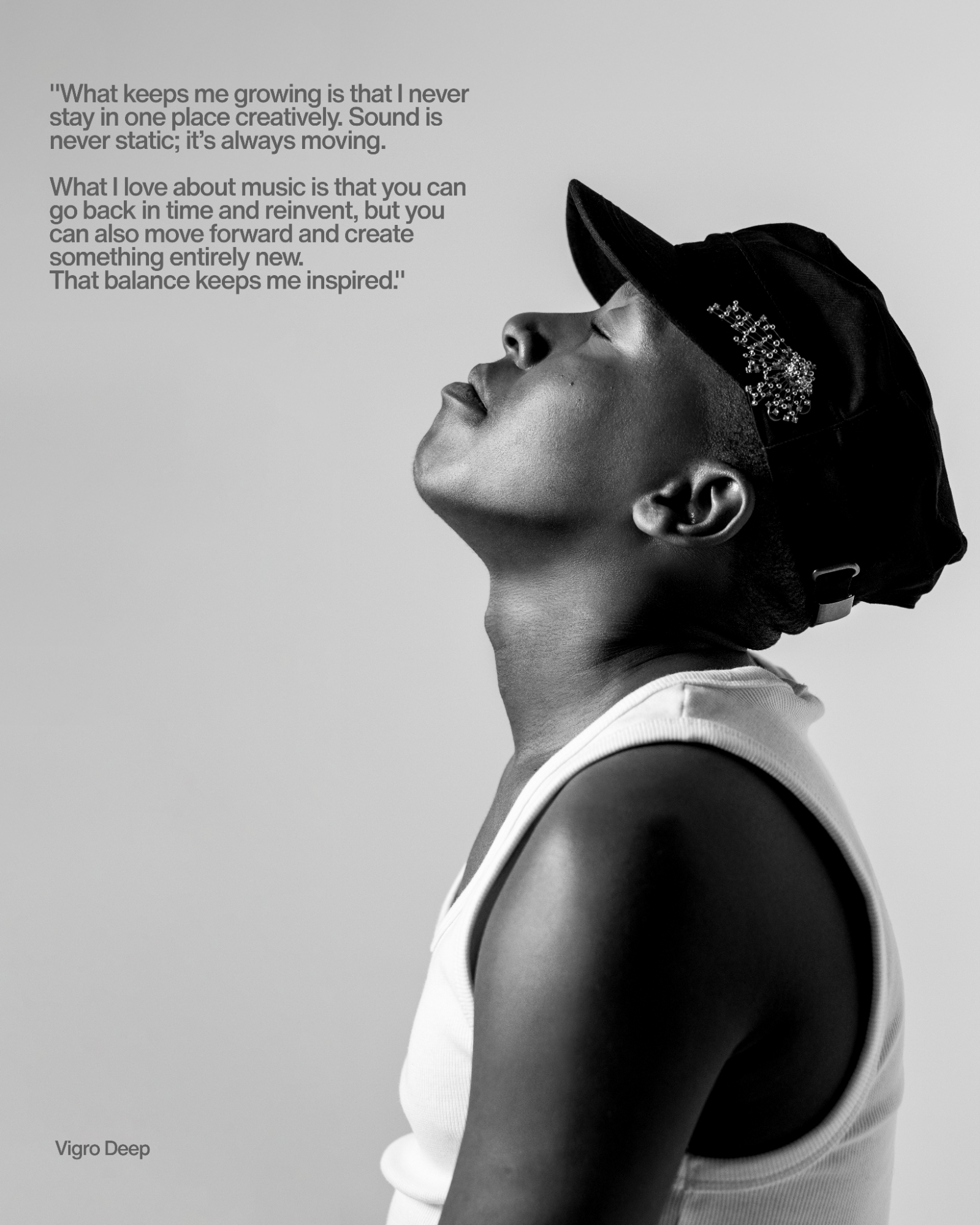
How do you keep that growth going for yourself, like, creatively and artistically, but still also maintaining, you know, the thing that makes you Vigro
What keeps me growing is that I never stay in one place creatively. Sound is never static; it’s always moving. What I love about music is that you can go back in time and reinvent, but you can also move forward and create something entirely new. That balance keeps me inspired.
A big part of my growth comes from travelling. Every country, every crowd teaches me something new. In my catalogue, you can hear the different sides of me —the deep house roots, the Afro tech energy, and, of course, the Amapiano sound people first connected with. Some crowds still want the old Baby Boy sound, and that makes me realise there’s a timeless element to my music. But at the same time, the evolution of sound pushes me to keep stretching my creativity and experimenting.
I’ve learned that I can’t be boxed in; I don’t want to be. My sound changes with me —where I am in life and what I’m experiencing. That’s what keeps it honest, and that’s what keeps me growing.

Crafting this album, how is this one different to the others, like, what would you say was the approach that you had?
With Baby Boy V, I felt like I’d been away for a while, and this album was my way of reconnecting with the people who’ve been with me from the start. As much as people see me travelling and performing internationally, I wanted to remind everyone that I haven’t forgotten where I come from.
I’ve seen the messages and comments from fans saying they miss the old Vigro, that energy I used to bring during December, when I’d drop music for the summer, for the clubs, for the streets. So this project was about giving them that feeling again.
At the same time, it’s not just about going back; it’s about evolution. I wanted to fuse everything I’ve done from Baby Boy 1 onward and mix it with the new Vigro. It’s about growth, balance, and reminding people that I can always bring something fresh while staying true to my sound.
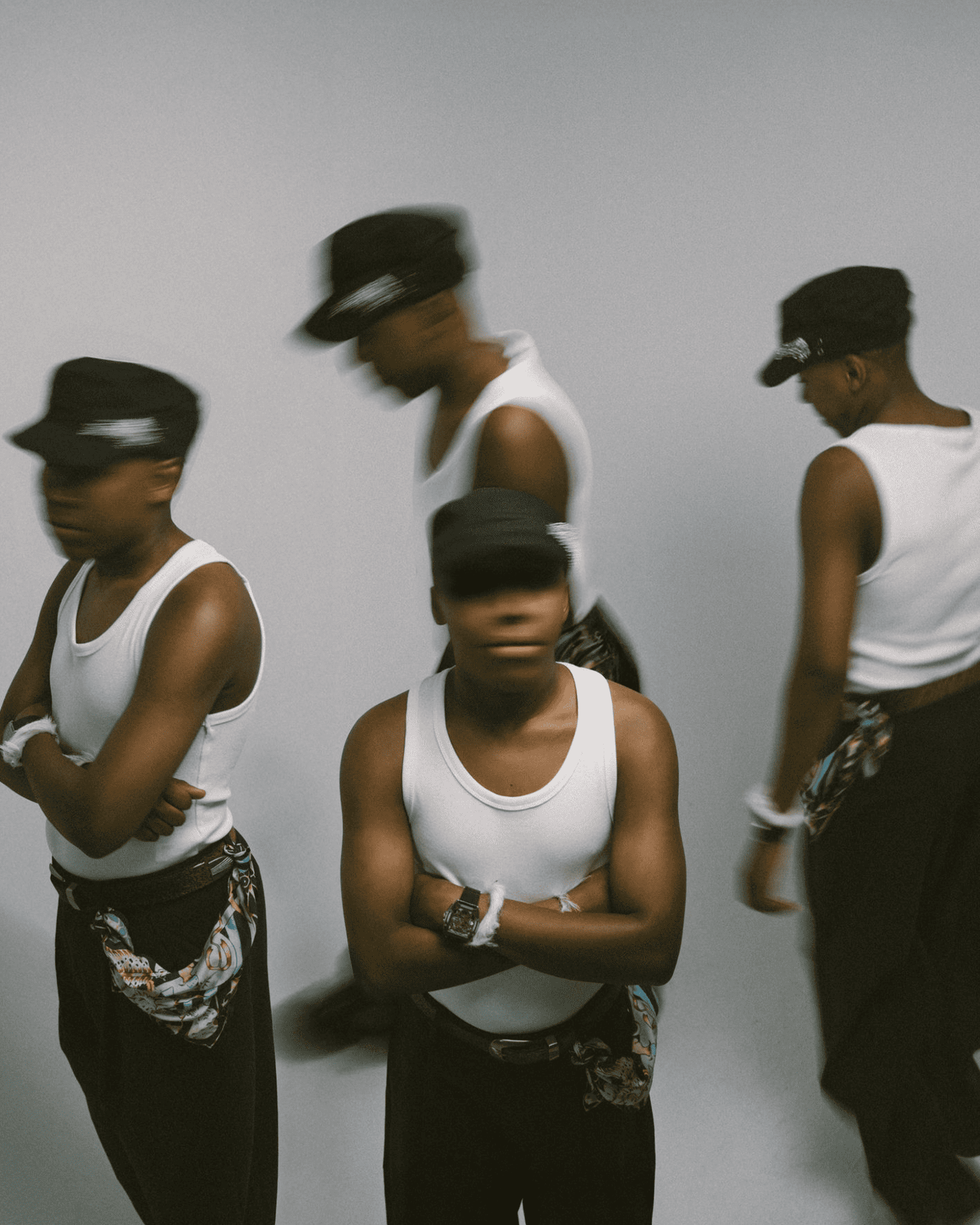
What has been the most significant change in terms of, you know, the vibe you are now versus the Vigro you were when you first started, like, creatively, personally?
I'm grateful I never listened to anyone who might have discredited me in my career. I didn't let negativity in; I just kept on going. The motive was there, so whether you like my songs or not, whether you compare me with who me, I'm just minding my own business. Yeah, that's what makes me different. That's a huge change I get to make because I believe in what I want to do. I'm always true to myself, and I don't take my career or my plans for granted. If I have something planned, where I want to see myself in the next five years doing it, like I'm a go-getter, like I'm there —I'm gonna do it.
How did you navigate the industry, and how has amapiano grown from when you first started to where you are now?
I’ve been lucky to have good people around me and the proper guidance. I’ve learned a lot from those who came before me, people in the industry who shared advice and experiences that helped me grow. Travelling and seeing how people respond to Amapiano around the world also taught me a lot. It opened my mind and helped me understand how to adapt and connect with different audiences. I’ve always been that person who’s willing to listen, learn, and take in new things; that’s what’s helped me move forward.
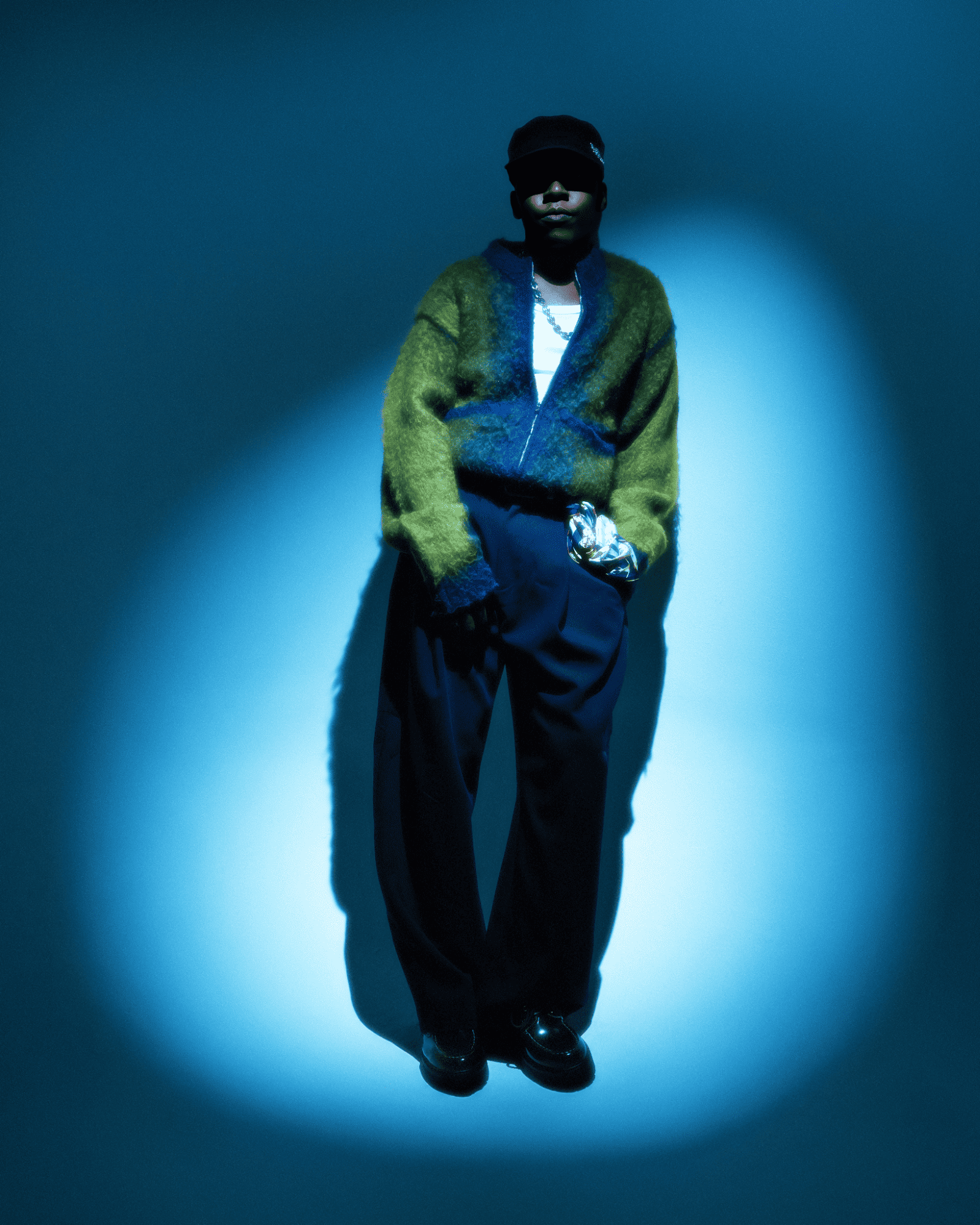
When creating the world that exists as Baby Boy, how did you expand that beyond the music into other creative aspects?
When I get into the studio, I go into my own world. I always say I’ve never been to space, but that’s what it feels like — like I’m somewhere no one else has ever been. That’s where the Baby Boy universe started for me. It’s a space that only exists in my mind, and that’s what I try to share through my music — taking people somewhere they’ve never been before.
But I didn’t want that world to live only in sound. I wanted people to see and feel it too. You can see that in the visuals I did with Bhampa and A-Z (Yashi moto)—those videos really brought the Baby Boy world to life. The cover artwork also symbolises the same idea of taking my music out of my head and into the real world — expanding creativity beyond the studio.
Even in my live sets now, I try to keep building on that universe. When I DJ with the keyboard and live elements, it’s about making people experience that space in real time — not just hearing it, but feeling it. That’s what Baby Boy has always been about: turning my imagination into something you can see, hear, and live in.

What do you think this album represents about where you are in your career right now?
It represents Vigro from Pretoria — the kid who grew up listening to DJ Mujava. He was one of the first to really open doors internationally, to show that our sound could travel. That inspired me. I’ve always wanted to raise the flag for where I come from — to show the world that Pretoria has its own energy, its own sound, and I’m proud to carry that with me wherever I go.
With this album, I wanted people to feel like this is a full-circle moment, the final chapter of the Baby Boy series. I poured everything into it. I wanted to take all my creativity beyond the Amapiano sound people are used to hearing from me. It’s a fusion of the old me, the new me, and the international side of me. There’s Amapiano, electronic, Afro house, 3-ste,p all of it in one body of work.
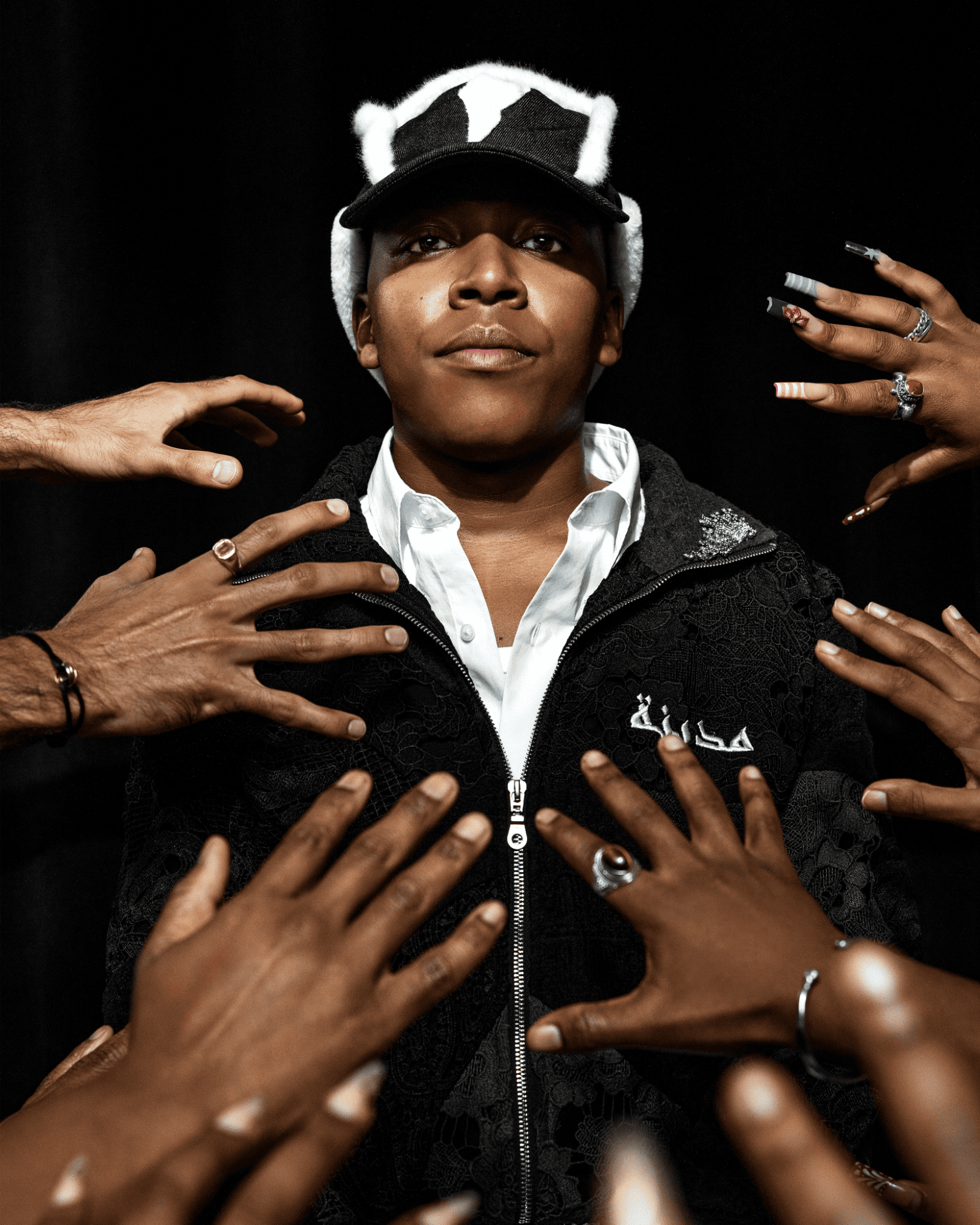
What kind of excites you, and what are you looking forward to seeing in terms of what's coming and like, even just for you and your next chapter of your journey, like, what? What about you? Do you see that it's like that, which excites you about what's coming?
What excites me about what is coming is the new music and the new parts of the world I haven't reached. Trying to blend in and come up with something new, you know, be part of some other cultures and do that. That's just me being excited to see other parts of the world, unlike the ones I've already known. There's gonna be more of me, more music videos, you know, more on TV. Even you know streaming live is coming, too.
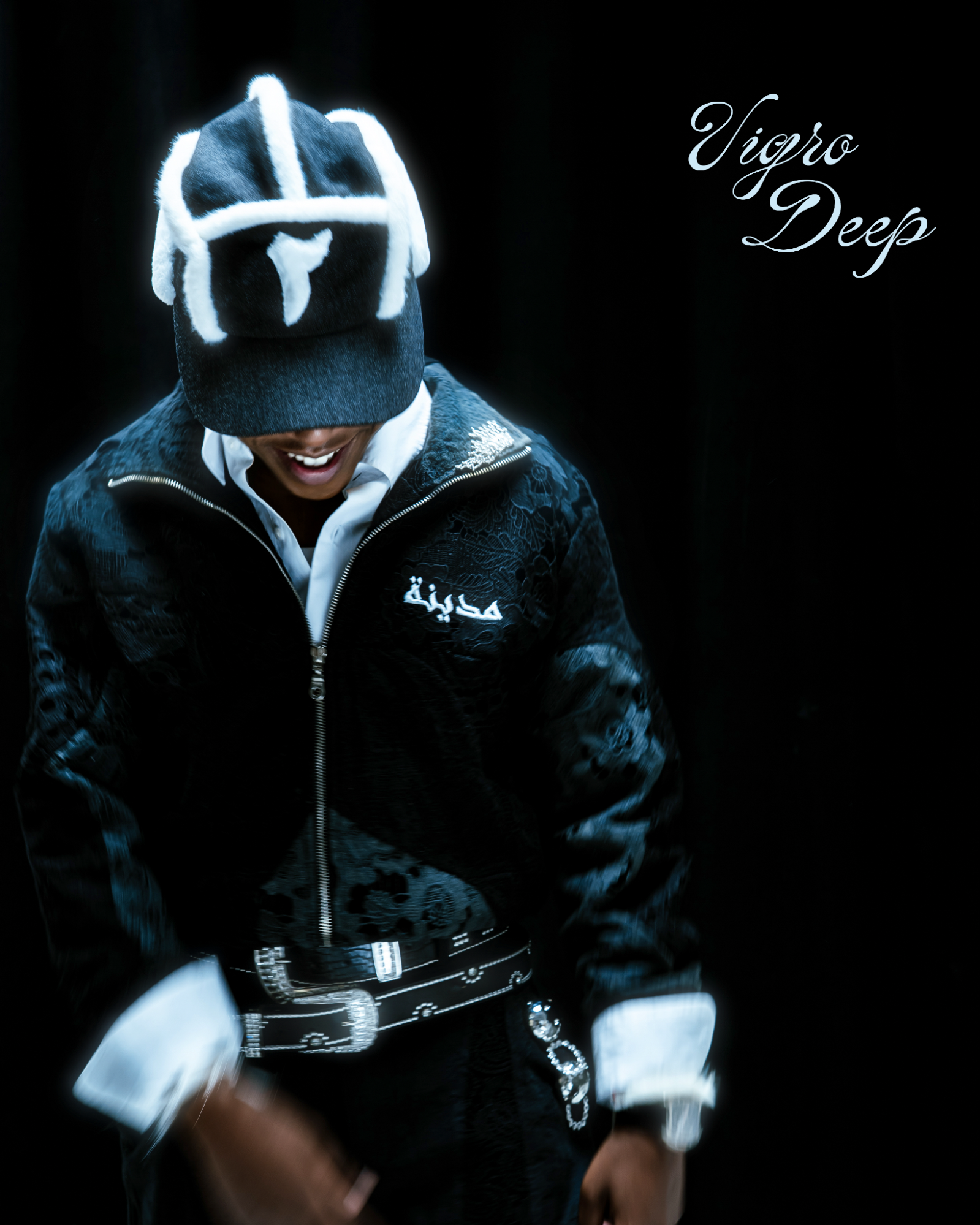
Production Credits:
Photographer: Neo Gilder @neotookthat
Creative Direction: @lifethroughmylense_pro @_siy.a @Kosi_s
Producer: Seneo Mwamba @SeneoMwamba
Lighting: Bruno Nnadi @risquesociety
Stylist: Mh'ya Mclean @mhyamclean
Grooming: Afsha Kabani @afshaartistry
Design: @dianeadanna
CGI: @jr_ecko
BTS: Blair Watson @blairs_cornershop
Words: Seneo Mwamba @SeneoMwamba

In 2022, when Brown Joel declared, “Dem wan know my nationality, High Spirit, top member, citizen” on his record “Omo Ologo” few could have anticipated the full manifestation of that statement. Two years later, following an impressive streak of viral records such as Peace, Adanna, Ogechi, and more, that prophetic line has materialized into a cohesive body of work titled High Spirit, a project that feels like a full-circle moment in the artist’s evolution. Interestingly, Joel refers to this 10-track offering not as an album or an EP, but a mixtape, a deliberate framing that hints at freedom, experimentation, and raw authenticity. With only two guest appearances, Savage and Jeriq. High Spirit positions Brown Joel at the center of his own creative universe, exploring varying emotional and sonic palettes while maintaining his signature hybrid of street sensibility and soulful depth.
The project opens with “Higher Power” an anthemic statement of intent built around triumphant Igbo flutes and pounding percussion. Joel’s declaration, “I open mouth, I declare and speak” feels spiritual, a mantra of self-affirmation and divine alignment. It’s an opener that not only sets the tone but also introduces the underlying faith and resilience that thread through the project.
From there, the tempo eases into “Koka Kola” a melody-driven cut that reveals Joel’s softer, romantic side. Over lush production, he pledges devotion to his lover, emotionally, materially, and physically balancing sensuality with sincerity. The narrative of affection seamlessly continues into “K.O.K” featuring Savage, a witty and playful record that uses the name of Nollywood legend Kanayo O. Kanayo as a metaphor for the lengths Joel would go for love. Savage complements Joel’s charisma with a smooth, well-placed verse, resulting in a track that feels both cohesive and dynamic.

The energy shifts upward with “Shayo” featuring Jeriq, an amapiano-infused anthem that merges hedonism and introspection. The shakers and bassline dominate, while Joel reflects on his use of intoxication as escapism. A temporary reprieve from life’s pressures. Yet even in those hazy moments, he acknowledges divine presence, a recurring motif that Jeriq reinforces with grit and conviction. A key turning point comes with “Scwalla” where Brown Joel adopts a more reflective tone. “Send the beat make I talk something” he chants, ushering in a heartfelt exploration of hustle, ambition, and perseverance. The minimalist piano-driven production gives space for his storytelling to breathe, spotlighting his lyrical sincerity.
“Guantanamera” marks a return to Joel’s flirtatious and uninhibited energy. A sensual cut brimming with suggestive lyricism and rhythmic fluidity. It transitions effortlessly into “Memories” where love and dance coexist on a heavy Amapiano foundation. The track’s infectious bounce and jubilant atmosphere make it one of the project’s undeniable highlights.
As the mixtape approaches its conclusion, “Hide n Seek” draws out Joel’s R&B inclinations, revealing his vocal control and emotional intelligence. It’s tender, restrained, and heartfelt, evidence of an artist raised on melody and groove. The penultimate track, “Omo Temi” pays homage to his Igbo roots with percussive depth and layered traditional instrumentation. The hook, “tota e mole” meaning “stomp on your enemies” is both defiant and celebratory, with an orchestral arrangement that swells beautifully toward the outro. The closing track, “Jungle Jungle” finds Brown Joel in full braggadocio mode. Confident and unapologetic, he reasserts his position as a creative force, capping the mixtape with an air of victory. After such a well-rounded and intentional project, his confidence feels not just justified but necessary.
In essence, High Spirit is a manifesto of self-discovery, resilience, and cultural pride. Brown Joel successfully merges introspection with accessibility, grounding his artistry in authenticity while expanding his sonic horizons. It’s a mixtape that cements his place as one of the most promising voices in Nigeria’s evolving soundscape, proof that his “citizenship” in the High Spirit movement is both earned and ordained.

Whenever you think of the Nigerian music industry, one city inevitably comes to mind — Lagos. Over the years, it has evolved into the beating heart of the nation’s creative economy, the cultural marketplace where artistry, nightlife, media, and audience engagement intersect. Lagos has long defined the metrics of success; it dictates what trends, who rises, and what eventually translates into mainstream recognition. In many ways, it has monopolized the narrative and rightly so, given its history as the most effective launchpad for Nigerian superstars. Even when artists aren’t discovered there, Lagos often becomes the center for marketing and promotion, the inevitable destination for any act seeking commercial success.
Commercial Success, however, is the keyword here, and one worth pausing on. This epicenter has cast an enormous shadow over other vibrant markets across the country. From the North to the East and South, numerous scenes struggle to make their voices heard within the national conversation. For many artists from these regions, breaking into the mainstream almost always requires a pilgrimage to Lagos which is a necessary move to sustain traction or risk watching it fade away.It’s important to note that these artists are far from obscure. They command loyal communities, often with cult-like devotion. Their music thrives within their local ecosystems, and ignites movements and street-level excitement that feel both organic and undeniable. Yet, their impact rarely translates into mainstream visibility. Take artists like Jeriq, who has sold out stadiums repeatedly in Enugu, or rising figures such as Highstarlavista, Zyno, Aguerobanks, Evadolee, Kolaboy and more — names that ignite massive local energy. Despite the scale of their influence, their numbers often fail to reflect on national charts or major media platforms or else they tap into the Lagos audience
This dissonance isn’t due to a lack of talent or audience, but rather a systemic imbalance, one shaped by illegal streaming practices, poor documentation of real-time engagement, and limited access to digital streaming platforms (DSPs). These factors distort visibility, making it difficult for genuine listener activity to be recognized in the data-driven ecosystem of modern music. Unlike Lagos, where a viral TikTok sound can spark nationwide Shazams and alter an artist’s destiny overnight, other regions are yet to reach that level of infrastructural synergy where they stream, talkless of the streams even being premium enough to generate revenue for the artist or allow them a break into conversations that are ultimately defined by data.
But through all the noise, one constant remains, the presence of organic listeners. This current era of the Nigerian music industry is a deceptive one; metrics have become mirages. In a time when everyone seems to boast a million streams, only half of those numbers are often legitimate. The growing outcry from top-tier artists about stream farming, and the recent crackdowns by DSPs like Spotify, which have trimmed inflated listener counts reveal an unsettling truth: the charts no longer serve as an accurate mirror of real-time engagement. What we’re witnessing is a quiet pandemic of artificial success, where numbers are inflated, but genuine connection is diluted.
And this is exactly where the eastern market stands out as a beacon of authenticity. There’s an undeniable pulse of organic consumption there, real people listening, streaming, attending shows, and celebrating their homegrown stars. This ecosystem deserves recognition, and more importantly, infrastructure that amplifies its presence within the national industry framework. The talent, audience, and passion already exist; what’s missing is the structural support to make their voices count in the mainstream metrics that dictate opportunity. Artists like Flavour, Phyno, Chike, Yemi Alade, and Duncan Mighty are living proof of what these regional markets can produce. Yet, they all share a common thread, the inevitable move to Lagos as a prerequisite for mainstream validation. That shouldn’t have to be the rule. The system must evolve to a point where a kid from Enugu, Aba, or Port Harcourt can top charts and shape culture without the need to orbit Lagos. Such decentralization wouldn’t just promote equality; it would restore faith in organic listenership, enhance audience engagement, and generate sustainable revenue for artists and their communities alike.
When Ossi Grace released her debut single, 'Reason', back in 2024, she introduced herself to the world as a solo artist. As a songwriter, previously her vocals first appeared on M.I. Abaga's The Guy album with "Crazy,". However, she wasn't ready to begin her career at that moment. Two years later, she released "Reason", which has led to her freshly released debut EP In A Hopeless Place.
The EP is set against the backdrop of her experiences living in Lagos, Nigeria. The 11-track EP explores a range of sounds and features production from PGRSHN, Mojam, Remmy Baggins, and others. The soulful tone in her voice runs through the project from "Reason" to "FA" to "Where You Belong", the tracks previously heard before the EP release. From top to bottom, the project gives off a vibe different from what's considered afrobeats. Her musical influences, including Rihanna, Fela Kuti, and Tracy Chapman, among others, are evident in the EP's various sonic tones.
The colour blue sets the tone for the visuals across the EP and captures the mood and essence of Ossi as experienced in the backdrop of Lagos, coming through in the EP's tone and essence. And whilst the feelings of being in a hopeless place were the backdrop to the project's concept, the EP itself captures moments of joy, happiness and love, channelled into a sense of hope and resilience.
Speaking with Ossi, we dove into everything from songwriting and creating the EP to why the colour blue, her style, and more.

Hi Ossi, this is your debut EP—the first body of work you've released. Where did the process of making this project begin for you?
I've been working on this EP for three or four years, and I recorded the first song about four years ago. After the second song that I recorded, I knew what I wanted to sound like. I know what direction I'm going in. I'm also a songwriter, so I make music across different genres, but for me, it's always important to figure out your style. I knew that it was more soulful. I'm also more sensual and everything. So that was the start, and then everything just started falling into place.
You're a songwriter yourself —what was the process like for you when collaborating with others on this project, not just in the writing but also in production?
One thing that I really wanted to do, especially for this first project, was handle the songwriting. It just made things less complicated, and I didn't have to explain myself too much about where I was coming from. So I wrote every song on the EP with producers; I worked with a lot of different people. There's PGRSHN, Mojam and Remy Baggins who did a lot on there. These are people I really respect —not just for their work ethic, but also for their talent. I trust their ear, I trust their fingers, I trust that whenever they press a button or a key, it's going to be, if not something I like, something close to it. They are musical people, so it was very easy for me to explain where I was coming from. And it wasn't about pushing their ideas on me, but more about supporting the ideas I had, which is one of the amazing things I experienced working with them.
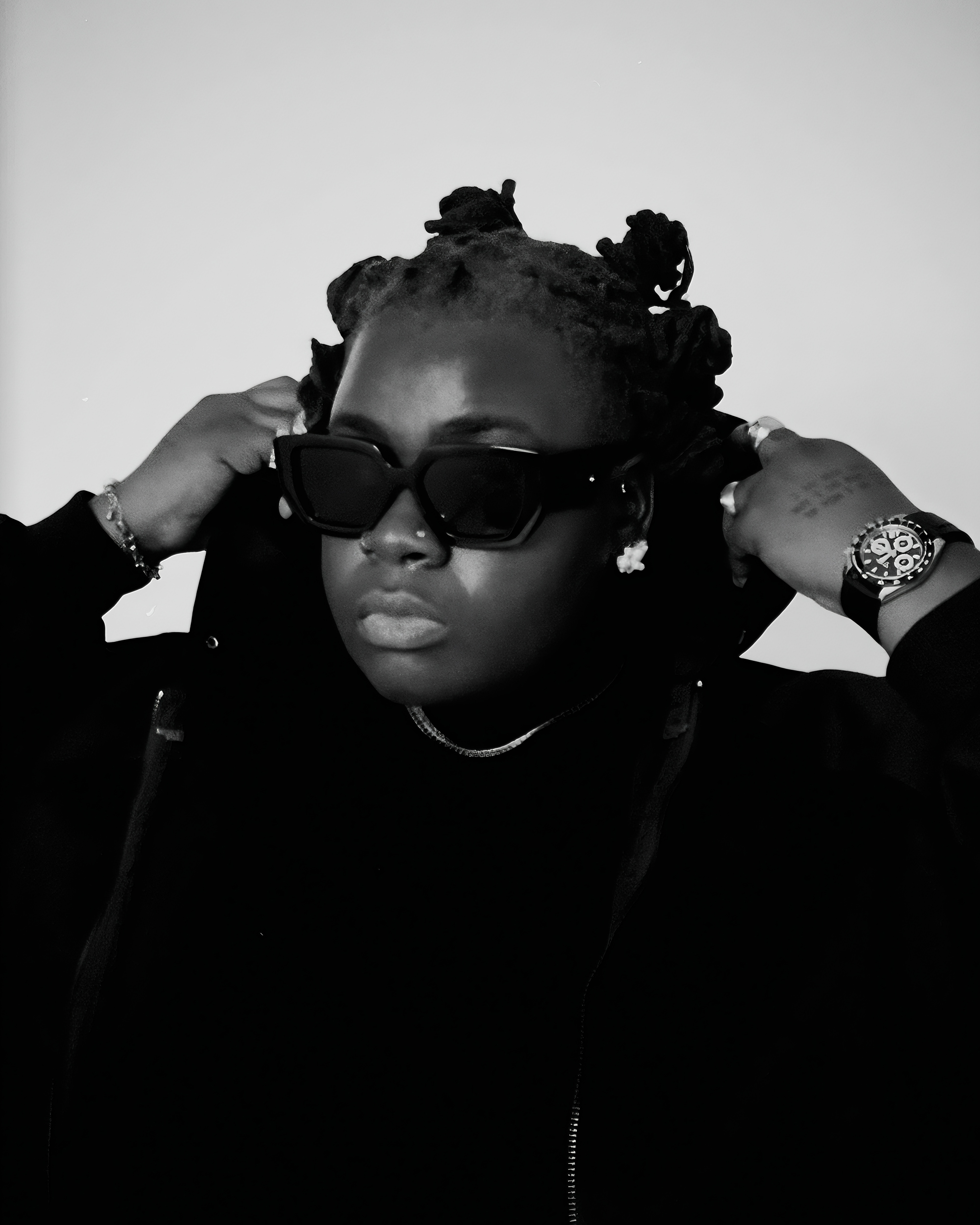
What was your experience of working with the producers, not just in terms of leading the project as the artist, but even just working with them to build the sonic sound of the EP?
One thing I have been blessed with in making this project is that I haven't worked with many people who have tried to push their ideas on me. I've met a couple of producers who are a bit it's my way or the highway. But once we get to that point, it's not gonna work. As a songwriter, I learned that the artist comes first. So I had to be a good listener. Even if I disagreed, I had to do what you wanted, because it's your art at the end of the day. For the most part, every producer was very much in the space of asking, "What does Ossi need?" Even someone as talented and amazing as PRGRSHN. He's a big producer, but he's also there to learn. He's coming there and asking, "What does this artist need?" I was working with people who wanted to make great music.
You released several songs from the project as singles before the release. One of the songs I wanted to speak about was "FA." What can you tell us about making that song, and how did we arrive at that one?
I know I didn't want anything complicated. It's a sexy song, but I didn't want anything complicated. I just wanted to be a confident woman around me and enjoy moving. You're not really looking at anybody around you. I wanted everybody to feel connected, because that's what I'm saying in the song. It's very Lagos. It's the vibe you get when you're enjoying yourself, and hopefully it leads to what I want. But regardless, I'm having a good time.
The colours for the EP are very blue, dark, and moody —that sort of essence. How did you arrive at that colour palette that reflected the project's tone?
I'm a moody girl, I like to have a good time, but in Lagos, sometimes a good time isn't bright. It's in a dark place. So that's the vibe that I grew up in. And I'm not gonna say I am totally because, you know, I like a bit of daylight sometimes. Those blue lights hitting you are a lot of the spaces that I am afraid of. So that was really where the vibe came from. And blue does look good on my skin. A lot of times, going out in Lagos, when we're in the club scene or night scene or whatever, when we make videos, because different lights always shine on us, we're making videos. The blue really did stick out to me, and every time we went somewhere, it was the, you know, neon blue, just bare, like, I really loved it.
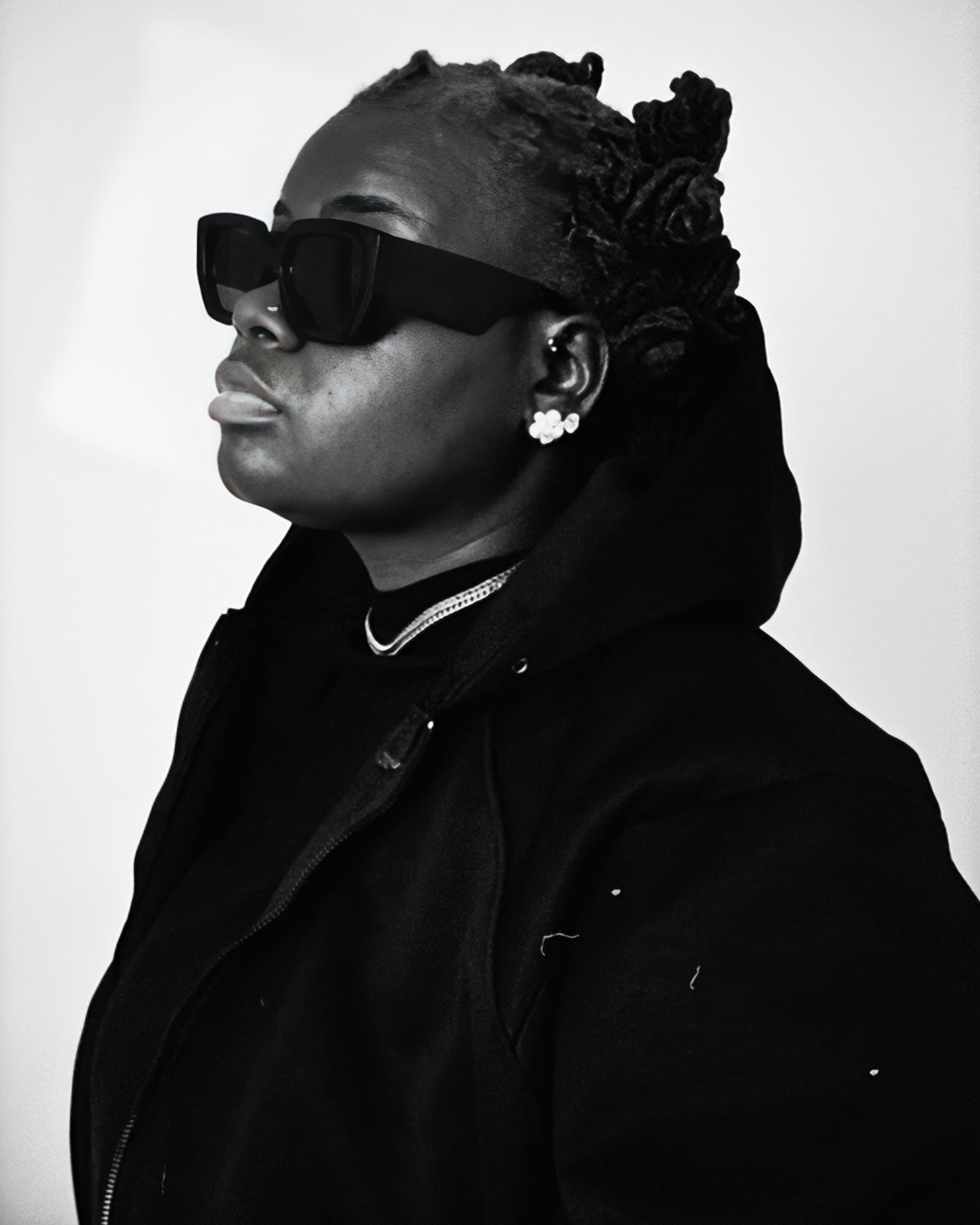
Talk to me about that, in terms of, you know, your fashion, your style, and how that also feeds into your creativity as well?
It took me a while to dress the way I do. At the end of the day, I am from Nigeria, and even as a woman there, whether anybody wants to admit it or not. There's a way you're supposed to look. Yeah, dreadlocks are a no-no. As crazy as that would sound, because we are literally in Africa, but like dreadlocks is seen as a sign of being irresponsible, then obviously my tattoos, and then piercings, it's everything that you should not be as a Nigerian woman or a Nigerian as a whole, that I took on and I embodied. So, it took me a while to get here, comfortable with myself. And for me to embrace who I am, and that I really like experimenting with different things. I'm very expressive, and as time goes by, I'm going to be experimenting with a lot more stuff. When it comes to clothes, it's not just about what I wear right now — especially jewellery and colours — because there was a time in my life when everything was black. I just started dabbling with different colours; some work, some don't. But I feel like life is short, so I try whatever makes you happy.
Having had this experience as a brand-new artist, what has it been like overall?
I'm not going to say it has been easy. There are things that you don't want to do, that you have to do. One thing I struggled with — and that is definitely much better now — is posting on social media. I grew up where Facebook was cool, but we didn't constantly have our phones to our faces like everybody was out, like we were at the cinema, or just being kids —you get what I'm saying. So definitely, now, as an artist, you have to use TikTok and post on Instagram. And so, social media is definitely something I had to get the hang of. Also, just doing interviews where you are talking to a person. And you know, now it's like, even if you're so comfortable with the interviewer, you also need to know that this is going out to the whole world, possibly, and you can't just sit there and say anything.
For anybody who will be introduced to you from the EP, so what do you want them to know about you, and what do you want them to take away from the project?
I think there's something they will probably expect, being that I'm from Nigeria —I grew up in Nigeria —and you're not going to get that EP. My music comes from everything I've listened to, from when I was a child to now. I've travelled a bit, too. So I've always drawn inspiration from different places —like, growing up, you know, my mom made us listen to all sorts of things. We can listen to Fela Kuti today and Tracy Chapman tomorrow, as if it were just one or the other. So you're not going to experience the Afrobeats you're from Nigeria; open your mind to good music, is what I would say.
Lagos Fashion Week 2025, which kicked off on the 29th of October, has come with its usual thrills. As usual, in the lead-up to fashion week, the air buzzed with excitement and a litany of questions; among them, the question of what new sartorial innovations the designers would serve us this year. If the relatively insipid air at recent global fashion weeks, including New York and Paris, prompted a bit of worry about Lagos Fashion Week among fashion enthusiasts and critics, the wonderful displays of the past few days have not only put us all at ease but stirred a flurry of excitement. Several moments from Lagos Fashion Week have jolted social media, stirring spirited conversations and debates.
Take the case of American singer-songwriter Ciara, who looked stunning as she walked for FRUCHÉ wearing a luxuriant red gown and gele combo. The source of rancor? Well, the organizers made the rather curious choice of soundtracking her walk to Akanchawa, a classic Nigerian song that has, in the past few years, taken on something of a parodic tone as skitmakers and meme accounts have adopted it as an anthem.
Among my favorite shows are Studio Imo’s, which leaned into geometric silhouettes, clean lines, and sedate colors, conferring elegance with a modernist spin. Imad Eduso is another brand that impressed. The show brought a gale of fresh air to traditional Benin fashion. Here, ancient red and white motifs, soft suede fabric, and beads—all elements of traditional Benin culture—dovetailed with more contemporary aesthetics.
Dwin the Stoic, a Lagos-based musician-poet, walking for Studio Imo is another moment that served. His outfit—a colorful floor-length crocheted robe paired with brown pants and shoes —was breathtakingly gorgeous. For their debut show, Street Souk served a convincing futuristic perspective on street style. The brand also stirred excitement in other ways. Among their models were the trio of Fresh L, Taves, and Smada—all of whom are Nigerian artists. Going off on a slight tangent, the internet has had its share of teasing Smada, whose walk has been labeled stiff and mechanical. In all fairness, he just might deserve all the banter they’ve lobbed at him; his hands were glued to the front of his thighs throughout his walk.
Music, as always, has played a significant role in Lagos Fashion Week. Last year, we watched Davido dazzle as he strutted down the runway for Ugo Monye, wearing a beige color royal outfit, complete with neck beads, a complementary brown hat, and a priapic scepter. This year, we’ve been treated to a glittering cast of stars including Dwin The Stoic, Ciara, Taves, Smada, and Fresh L, among others. Songs like Njideka Okeke’s classic, Akanchawa, and Zaylevelten’s Fly also roused excitement and scrutiny in equal measure. In all of these, one thing is clear: music has played a major role in this edition of the Lagos Fashion Week.
In the spirit of celebrating and foregrounding the areas of intersection between music and fashion, Deeds Magazine has curated a list of the best fashion moments in Afrobeats videos this year. From Rema’s Fun, which finds the 25-year-old superstar in a crisp white Bola PSD polo shirt—this look absolutely broke the internet—to Ayra Star wearing a bikini emblazoned with the colors of the Nigerian flag in the video of Hot Body, here is the definitive list of the best fashion moments in Afrobeats videos!
Rema Rocking Bola PSD in Fun Video
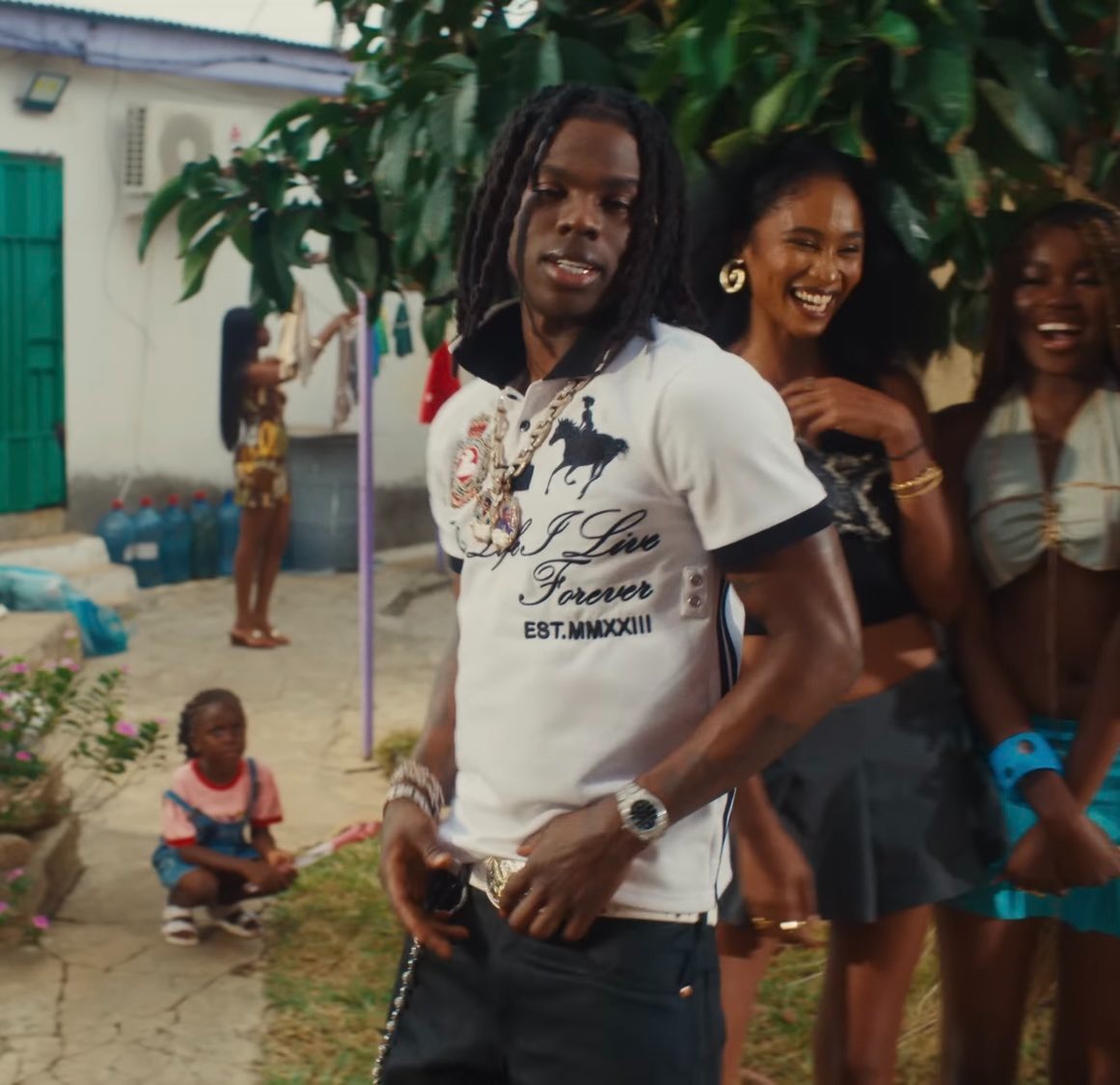
Artist: Rema
Designer: Bola PSD (Top)
Stylist: Mui-Hai Chi
Ayra Starr Wearing Ricky G. Briggs in Hot Body Video
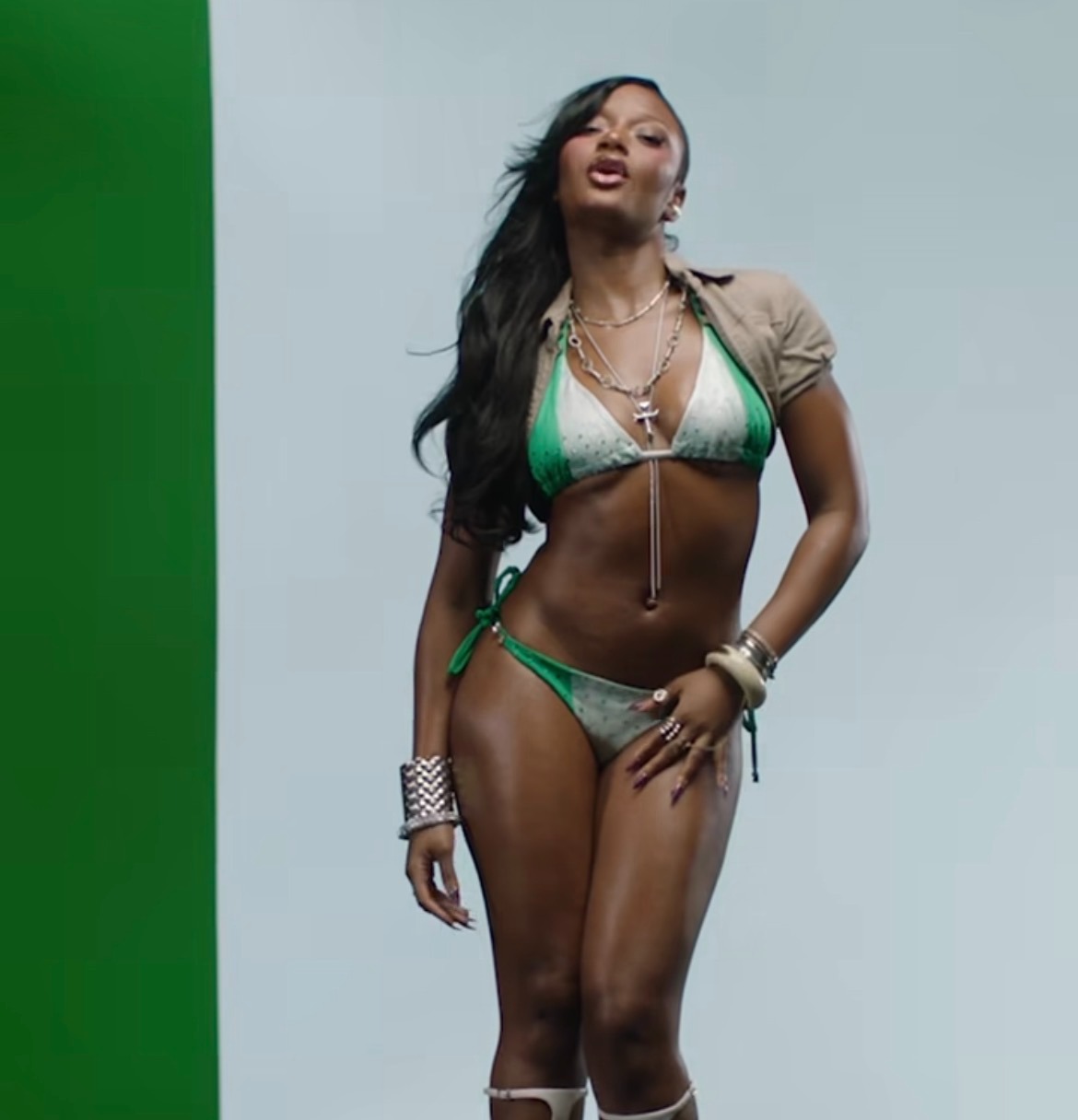
Artist: Ayra Starr
Designer: Ricky G. Briggs
Stylist: Diamond Heart
Wizkid in Kese Video
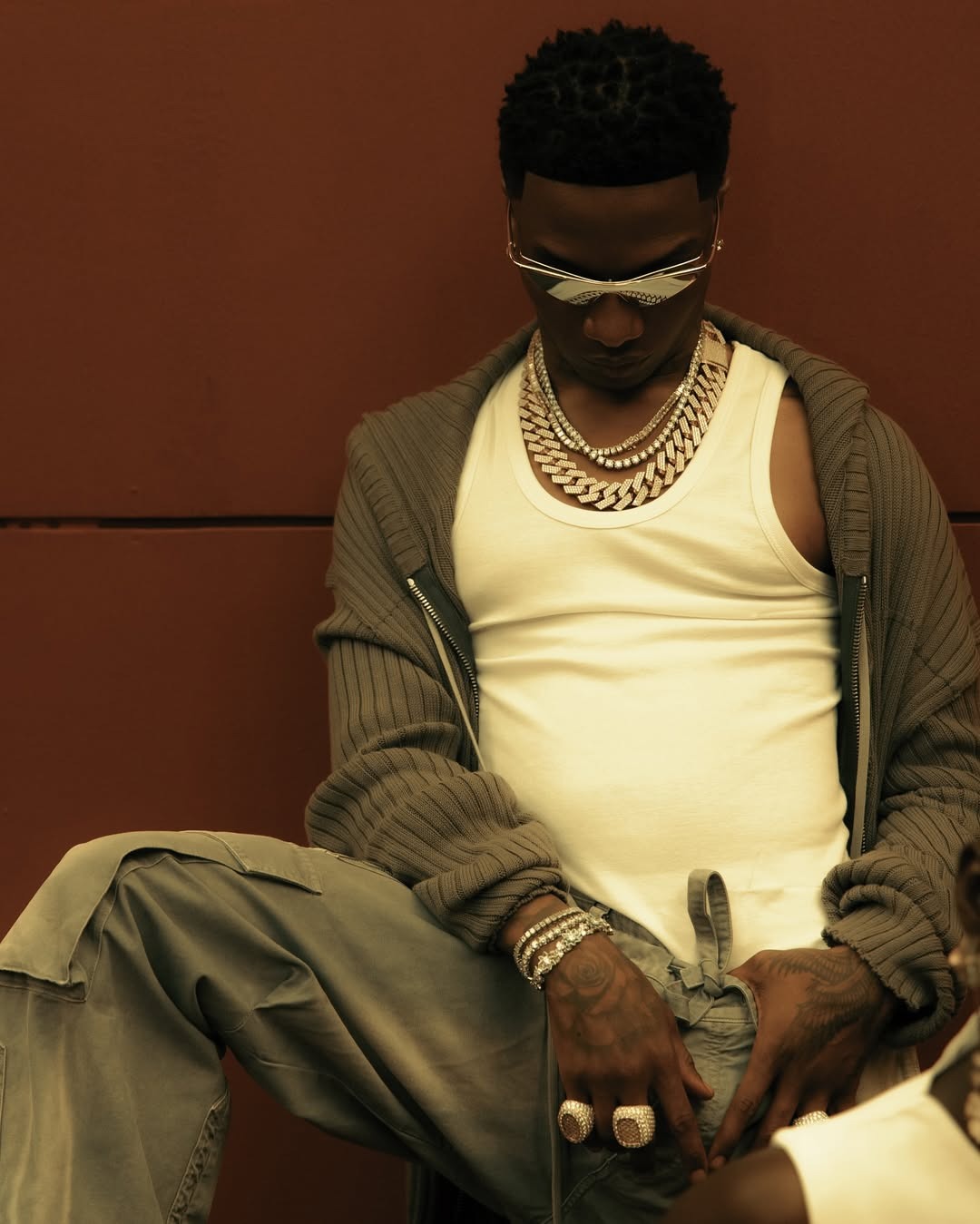
Artist: Wizkid
Stylist: Dunsin Wright
Victony in Tanko Video
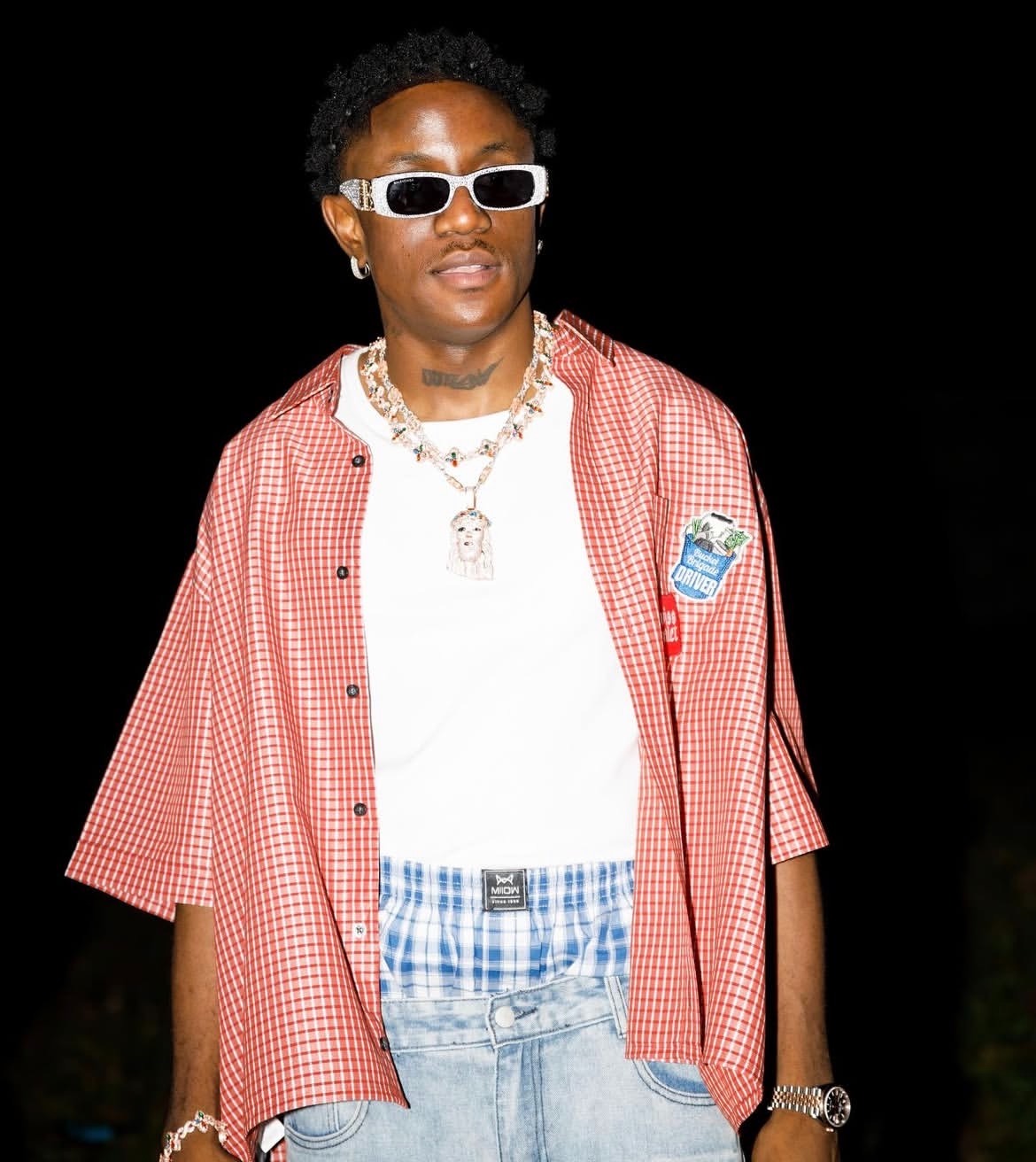
Artist: Victony
Stylist: John Joseph Angel
Deela in Supreme Dee Video
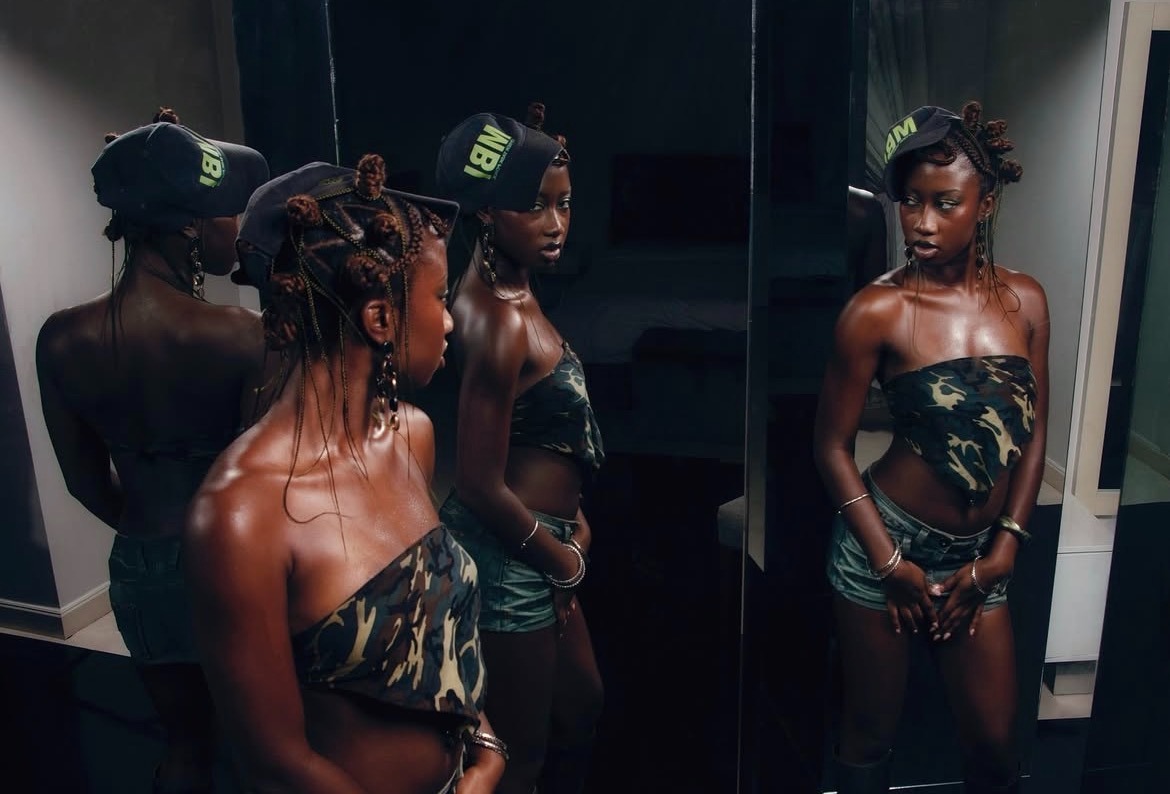
Artist: Deela
Stylist: Diamond Heart
For over a decade, the legendary rap duo Show Dem Camp, comprising Tec and Ghost, have stood as towering figures in Nigerian music. Their presence has been a constant in a generation that continues to demand more from the country’s hip-hop landscape, artists who not only entertain but also embody the culture. Show Dem Camp were never just rappers; they were storytellers, culture shapers, and architects of an identity that helped define what we now recognize as the Alté movement. Their artistic journey has never hinged on fleeting hits or mainstream validation. Instead, it has been built on consistency, authenticity, and an unrelenting commitment to evolution. Across their discography, SDC have perfected their sound, Palmwine music, which marries soulful highlife rhythms with hip-hop, crafting a wave that has become the heartbeat of an entire subculture. Their music doesn’t just reflect the times, it narrates them with depth and introspection.
With their latest project, Afrika Magik, the duo sounds more purposeful than ever: reflective, grounded, and deeply connected to the continent that has always served as the core of their inspiration, featuring ten artists namely Taves, Tems, Lusanda, BOJ, Joey B, Ajebutter, Winny, Moonchild Sanely, Moelogo, Mereba & Lulu.
The album opens with “Libations” , a record that immediately commands attention, inviting you to fasten your seatbelt from the very first note. Over slow, soulful piano strings, the duo delivers top-tier lyricism and confident, braggadocious verses. Tec wastes no time asserting their legacy with the line, “This is Victor Olaiya in ’83, highlife giants they all starting to see,” and goes on to pay powerful homage to icons like King Sunny Ade, Oliver de Coque, Victor Uwaifo, and 2Baba while underscoring SDC’s own growth and influence. Ghost follows with vivid storytelling, reflecting on their humble beginnings, the Alabama days, and the birth of the Alté movement. If there were ever a record that defines SDC in full, “Libations” is it. The project then transitions smoothly into “Pressure” featuring Taves. His smooth Afro-pop vocals glide effortlessly over a laid-back instrumental enriched by a clean trumpet section, creating the perfect backdrop for romance and self-assured charm. Tec and Ghost flex their achievements and newfound status while serenading a lover, culminating in a dynamic post-chorus back-and-forth rap exchange that stands out as one of the album’s highlights.
Love remains the album’s emotional core, whether Tec and Ghost are showing off their success or laying their emotions bare. This is evident on “You Get Me” featuring Tems, a soulful R&B gem built on subtle guitar riffs and gentle percussion. Tems delivers a tender plea for her lover’s attention, while Tec responds with introspective, comforting bars. Ghost, as always, matches the energy with an effortless flow that elevates the record. The “Nollywood Vixens” interlude introduces a cinematic dimension to the project, a theme that has been evident in the rollout of the album from the reimagination of the Jim Iyke and Mike Ezu movie scene for the release of Normally and the cut out clips of 80s Nollywood scenes in promotional visuals for Italawa. This theme continues to carry a very attention-reserving feel to the project and the interlude further acts as the perfect prelude to “Spellbound” featuring Lusanda. On this track, a graceful blend of hip-hop and folk textures creates an emotionally charged atmosphere where Tec and Ghost shed their usual bravado and embrace raw introspection. Both rappers are deeply in touch with their feelings here, laying bare their vulnerabilities, exploring themes of love, longing, and self-awareness while maintaining lyrical precision and poetic grace.
The project gains rhythm with “Normally” featuring BOJ and Joey B, a percussion-driven standout that recalls the dance-floor essence of Lagos nightlife. BOJ’s groovy hook anchors the record, while Tec and Ghost navigate the beat with confidence, playing off each other’s cadences with surgical precision. The track’s vibrancy flows into “Small Chops and Champagne” featuring Ajebutter22, a record that captures the indulgence of success while acknowledging its cost. Tec’s bars radiate calm dominance, Ghost complements him with sly, knowing humor, and Ajebutter’s laid-back chorus ties it together with a flavor only he could deliver. It is a quintessential Alté cocktail of class and confidence.
The energy shifts again on “Pele” featuring Winny, where highlife strings and soft percussion merge beautifully with her angelic vocals. Tec glides over the beat with lyrical precision, maintaining the album’s emotional arc and the tension between love, ambition, and gratitude. Ghost follows with equal poise, reaffirming SDC’s reputation as the undisputed Palmwine Music pioneers. The sonic storytelling continues on “Magik” featuring Moonchild Sanelly, where kwaito and hip-hop collide for a beautiful sonic experience. Afrobeats is not left behind in this odyssey. “Lifestyle” featuring Moelogo and “Italawa” pulse with nostalgic energy, evoking the rhythmic patterns of the early 2000s. Both songs lean into Afrobeat’s timeless groove while reminding listeners of SDC’s versatility. Then comes “Send A Text,” one of the lyrical pinnacles of the album. Over 90s-inspired production with faint strings and mellow piano riffs, Tec and Ghost deliver a masterclass in flow and narrative depth, part reflective and part triumphant. The track feels like a conversation between two men who have seen the industry’s highs and lows and still stand tall.
As the album begins its descent toward closure, things adopt a more reflective mood. “Master Key” featuring Mereba fuses R&B and soul with hip-hop, its romantic tone returning us to the heart of the project’s emotional terrain. Then comes “Rise Again” featuring Lulu. You will find trumpet flourishes stealing the spotlight and Lulu’s voice soaring as the narrative stakes rise. Tec holds his ground, committed to the mantra “if I fall, I go rise again,” while Ghost delivers a courageous, gratitude-filled verse that honors the long journey and consistent achievements of the duo. Finally, the album closes with “I’ll Wait” , an unexpectedly brisk finish. Amapiano-inflected shakers and high-tempo drums sweep you out of your seat as Tec reassures his partner of his constancy and presence. Ghost, as ever, turns in a standout performance, his breath control immaculate, and his storytelling both unique and worthy of the closing act. It is a substantial way to end: full circle, vivid, and memorable.
Afrika Magik is a full-bodied sonic exploration of the continent’s musical DNA. Across its runtime, Show Dem Camp weaves through an intricate tapestry of genres, from the soul-stirring hip-hop foundations that define their lyrical essence to the highlife inflections that pay homage to Nigeria’s musical ancestry. The Palmwine Music undertones, mellow, rhythmic, and sun-soaked, still serve as the heartbeat of their sound, yet the duo stretch their palette wider than ever before. The album is deeply anchored in hip-hop, but it is not confined by it. Instead, it treats rap as a vessel for cultural expression, weaving it fluidly with a spectrum of African genres. The rhythmic backbone of highlife and Palmwine music runs throughout, evoking nostalgia while grounding the project in the organic warmth of live instrumentation, with guitars, percussion, and horns that breathe life into every verse.
There is an evident interplay between Afrobeats, R&B, Alté, neo-soul, and Amapiano-inspired grooves, each genre carefully folded into the fabric of the album without losing its authenticity. The project does not approach these sounds as fleeting experiments but as living traditions, reinterpreted with SDC’s signature finesse. The album ultimately mirrors the vastness of the continent it is named after: diverse, rhythmic, and endlessly evolving. Show Dem Camp succeeded in representing African music’s range as well as demonstrating how interconnected its genres truly are. By blending tradition and innovation, they reaffirm their position as custodians of culture, proving that the African sound, in all its forms, remains both timeless and boundless.
Oluwatosin Oluwole Ajibade, better known as Mr Eazi, is a 34-year-old artist from Port Harcourt. Growing up in Ghana and Nigeria, he invented a unique blend of music named “Banku.” Now, a decade into the game and a pioneer of Afrobeats, he has an important message to share.
We caught up with him right before the release of his EP “Maison Rouge” after a year of celebration of love.
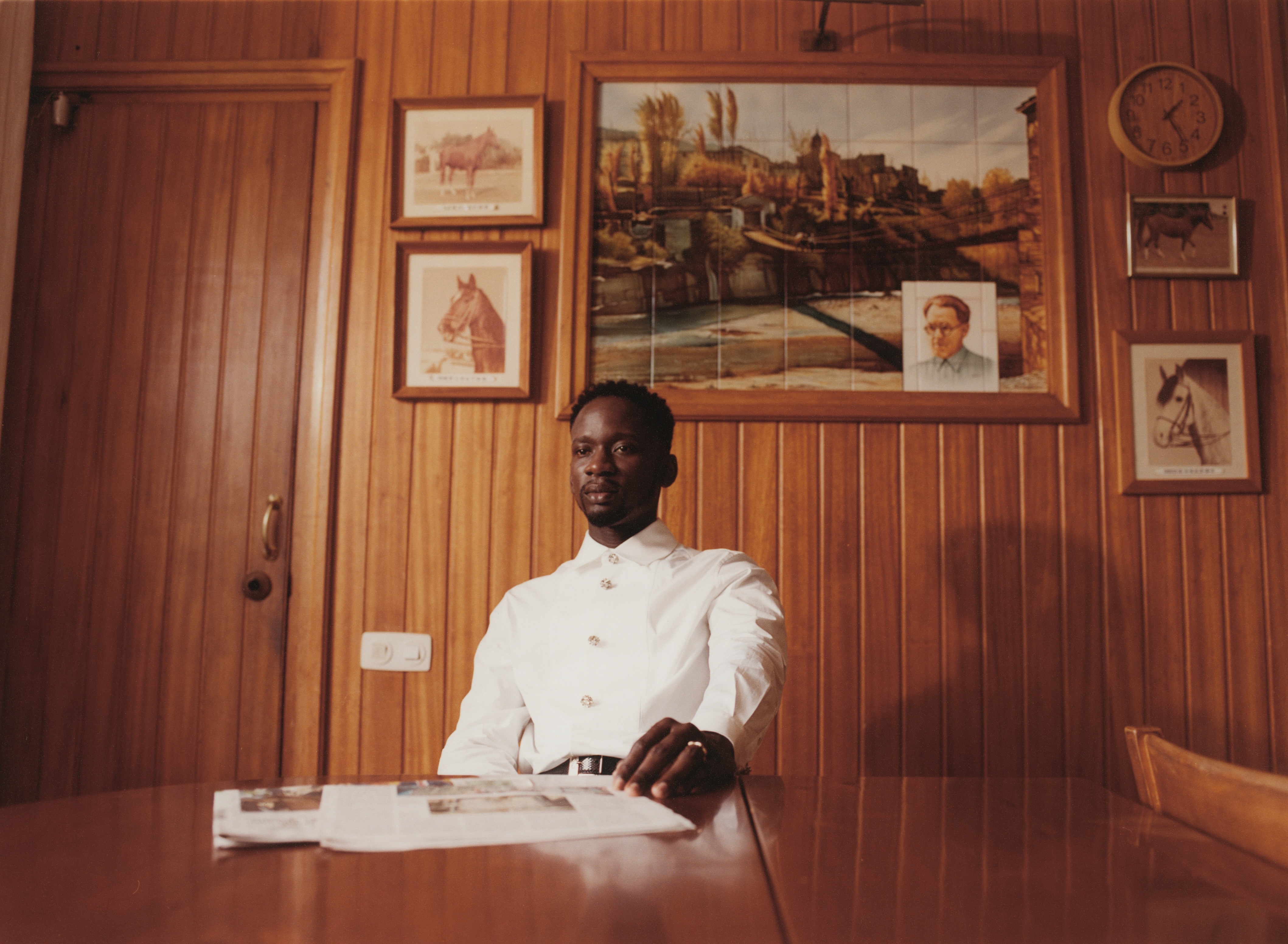
Would you like to introduce yourself to our audience?
Yeah, my name is Mr Eazi. I’m an artist, an entrepreneur, and a builder of things. I make music, which I sometimes call Banku Music, a mix of Ghanaian highlife, Nigerian chord progressions, and my own stories. Over the years, I’ve also built platforms like emPawa to support the next generation of African creatives.
Tell us a little about your upbringing; how was it like for a young Eazi growing up in Port Harcourt?
Growing up in Port Harcourt was interesting. It’s a city full of energy and hustle. My dad was an entrepreneur, my mum ran a small business, so the spirit of building from scratch was always around me. But I also spent time in Lagos and Ghana, so my childhood was really a mix of cultures. That’s why my music naturally blends different influences; it’s who I am.
It’s hard to believe it’s been a decade since “Skin Tight”, a track that helped define the global Afrobeats wave. When you look back, what do you think made that song so timeless?
I think Skin Tight was pure. It wasn’t trying to chase a trend. It was just me and Efya vibing to a beat from Juls, expressing emotion in the simplest form. The honesty in that record made it timeless. People felt it, whether in Lagos or London, Nairobi or New York.
If you could talk to the 2015 version of Mr Eazi, the one just about to drop “Skin Tight”, what advice would you give him now?
I’d tell him to keep trusting his intuition and to rest more. Back then, I didn’t know how fast things could move once a song connects. I’d remind him that success isn’t a sprint, it’s a journey. And to enjoy every moment without losing himself in the rush.
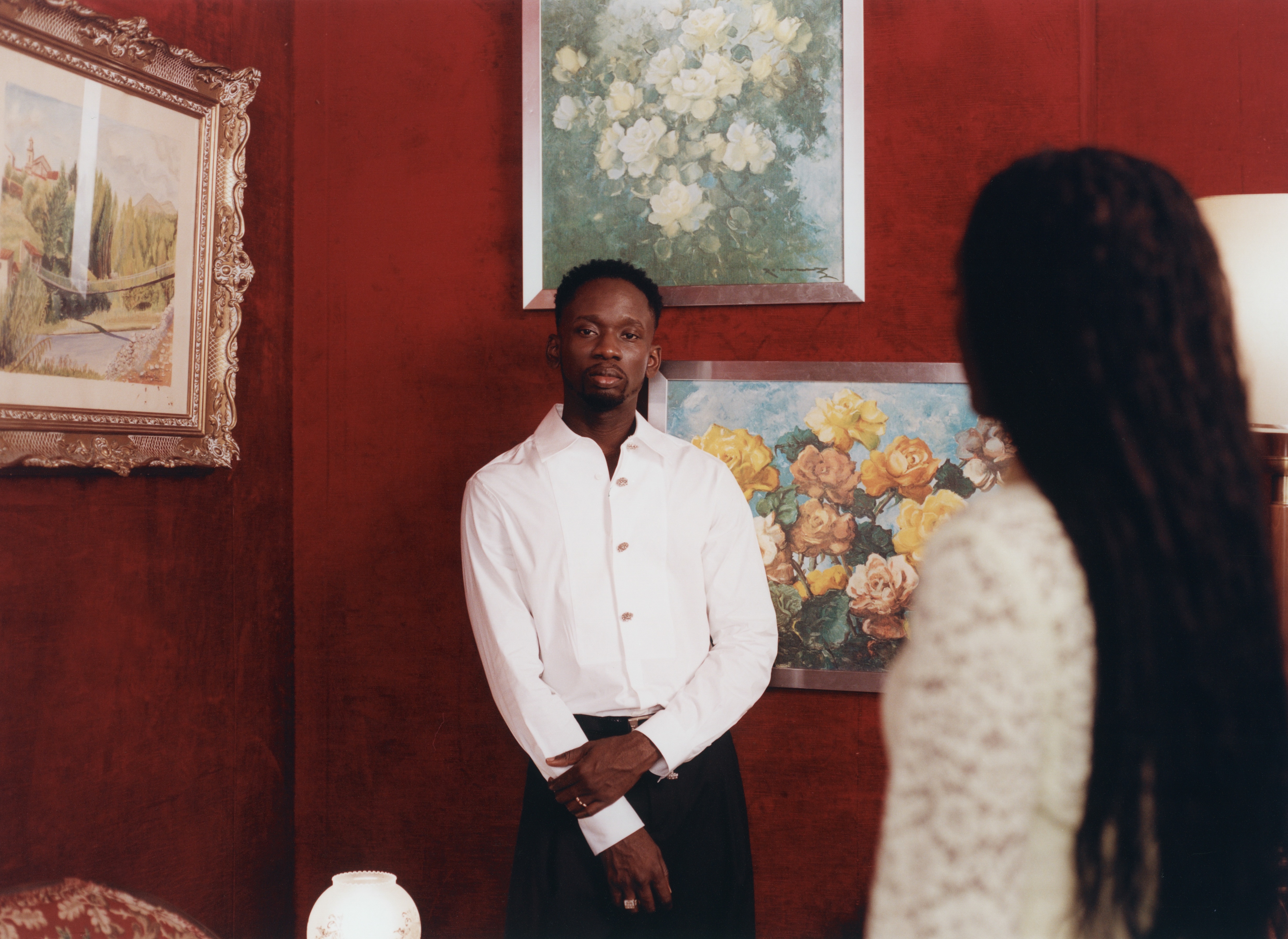
Before we begin to unfold your newest EP, I just have to say congratulations on your beautiful wedding; it was truly a global celebration of love. How has marriage influenced your outlook on life and artistry?
Thank you. Marriage has grounded me. It’s a reminder that beyond the music and the movement, there’s real life happening. It’s taught me balance, understanding love not just as emotion, but as commitment, patience, and growth. That energy definitely reflects in how I see and make music now.
You’ve always infused your music with elements of love and connection. Did this new chapter in your personal life shape the sound or themes of Maison Rouge?
Definitely. Maison Rouge came from a space of peace, clarity, and gratitude. You’ll hear that in the melodies. It’s less about heartbreak or hustle and more about connection, memory, and legacy. It’s like love in different colours, romantic, nostalgic, and even spiritual.

“Maison Rouge” feels like a homecoming to your Banku Music roots. How did the recording process for Maison Rouge compare to your earlier projects? Did you approach it differently after a decade in the industry?
Yeah, this one was very organic. We recorded it in Cotonou about 2/ 3 years ago, at a mansion house painted in clay red, that’s Maison Rouge. It felt like being back to the basics, no pressure, just friends, instruments, and stories. The difference now is experience. I’ve grown as a person, so I know how to guide my sound better while still keeping it raw.
The title Maison Rouge translates to “Red House.” What’s the story or symbolism behind that name?
That’s literally where the project was made, a red-painted house in Cotonou where I spent time reflecting and creating. But symbolically, red represents passion, love, and energy. Maison Rouge became this space of creation, reflection, and rebirth for me. It’s my safe house for art.

As someone who helped pioneer Afrobeats’ international breakthrough, how do you feel about the evolution of the genre today, especially seeing artists like Rema, Ayra Starr, Omah Lay, and others carrying the torch?
It’s beautiful to see. I feel proud, like a big brother watching the younger ones take the sound even further. Afrobeats is no longer a niche; it’s a global culture. The new generation is fearless, and that’s what we’ve always wanted, for the sound to evolve without boundaries.
With Maison Rouge being an homage to your roots and Skin Tight turning ten, what do you hope your legacy will represent for the next generation of Afrobeats?
I hope my legacy shows that you can dream beyond music, that you can build, invest, and create systems that empower others. I want people to look back and say, Mr Eazi didn’t just make hits, he opened doors. That’s what matters most to me, impact that lasts longer than a song.
UK grime pioneer Novelist touched down in Accra on Thursday night. By now, he and Ghana's Afro-drill collective Savage4 are deep into recording sessions for The 7 Days Tape, having already completed 2 days of the intense seven-day recording process. You're not reading about something that happened, you're catching it as it unfolds
The tape drops November 2. With seven days to fuse grime with Afro-drill, the clock is ticking. The sessions are being broadcast live via Balamii Radio (UK) and YFM Ghana, with a launch event at the Free The Youth store in Accra when it's all done. We caught them on Friday October 24, just before they locked in the studio for their first session.
.JPG)
What does it mean to bring grime to Ghana, especially given your Ghanaian heritage?
Novelist: It's an extension of myself and a reflection of something the diaspora has built. Africa is the homeland and the music resonates here just as much as it resonates with our people abroad. Being part of the UK diaspora, we've built many things here, and it's my pleasure to come home and build as well. I want people to see we're not so different. We are one. Whether you're born here or there, it's something we have in our blood. So come home and connect with these guys and bring the vibes. I think it would be very impactful for people to see.
How did you connect with Savage4? What drew you to their sound?
Novelist: I've been building riddims and making good music for a long time. Someone these brothers work with made me aware that they like my music, so that made me interested in what they do. This is a very young relationship, but we all recognize the value in good music. People talk about “levels,” but I look for the vibe — and these brothers have it. There was no question, I wanted to work with them.
.JPG)
You've been vocal about maintaining grime's original sound. How does that translate in a collaboration with Afro-drill?
Novelist: The special thing about grime is it's very creative. You never know exactly what you're gonna get, but there's a certain feeling to it. A new branch from the tree of creativity, we've never seen anything like this before. I'm looking forward to hearing how Savage4 approaches the music. It's exciting because you don't know until you’re in the room.
How important is your relationship with Balamii, and why was it important to have them broadcast this?
Novelist: I've been instrumental since the early days of Balamii Radio. I did some of my first shows there. Even before it became a station, James Browning, (the founder), would come to live shows and record sets. I’ve watched Balamii grow and it’s been part of my career landmarks. This is the right time to merge both worlds as I come home. Balamii is very grassroots. You don't have to be some known artist or superstar for them to give you the platform to do your thing.
.JPG)
What does it mean to collaborate with a UK grime pioneer as Ghana's drill scene emerges?
Savage4: It's huge for us because UK grime and Afro-drill literally come from the same place, same raw energy. This shows how far our sound can travel and how connected the streets are to our music.
How does Tema's vibrant underground music scene influence your sound?
Savage4: Tema is everything. We grew up in it. We live Tema, we breathe Tema. That's where the foundation was laid for us. The underground scene was a necessity for us. We didn't choose to be underground, we were underground. That's where we've been. Tema has brought out so many huge names: La Meme Gang, Asakaa Boys in Kumasi, and now Savage4. Tema shapes us and our sound.
What do you want international audiences to understand about Ghana's street culture through this project?
Savage4: Don’t just hear the music, feel the raw energy, culture and originality. See the fire and the pain. We are writing lines that make sense beyond music itself. Music is our lifestyle and it's in our bloodstream. It's either you're born with it or you adapt to it. That's how it is.
For a lot of young artists, getting airplay on YFM is a rite of passage. How does it feel to have your work showcased there, and what kind of community do you hope to reach through YFM?
Savage4: It’s a dream come true. We literally grew up listening to YFM. The audience is the youth, us, coming up from Tema, from Ghana and beyond. YFM has been able to tap into the streets enough to provide that kind of audience where we can showcase our music. We grew up listening to YFM, and now we finally get to share our sound on YFM. We're very grateful. It's big for us.
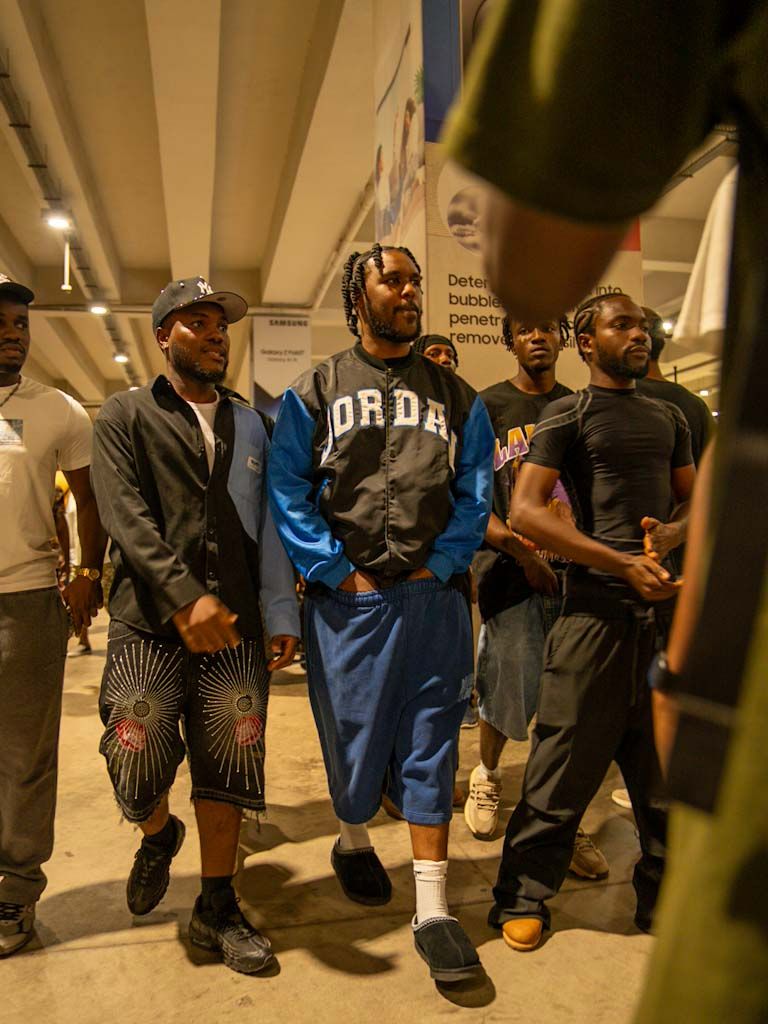
Why "7 Days"? What are you hoping comes out of working under that kind of time pressure?
Novelist: Seven days is perfect because they say pressure makes diamonds. When you do something under pressure, it leaves no space for hesitation and no space for confusion or doubt. I feel like we're guaranteed to make good songs because we're under a time constraint and the vibes can't lie in seven days. I think the pressure of the timing will bring the best out of everybody.
Savage4: Seven is a special number. It doesn't need to take much time. It's about our mindset and how we see the project. Greatness. That’s what we're about to create within these next few days.
Why Free The Youth as the launch venue?
Novelist: They've been known to consistently contribute to the community. To me, anyone who has that standpoint, whatever you do with them is legacy stuff. At the end of the day, that's what we're trying to do. We're trying to free the youth.
Savage4: Exactly. They represent the culture. Real recognizes real. We’re telling the same story, connecting to the streets, and Free The Youth does that too. Their flagship store is the natural home for this. It’s family.
What does "UK to Ghana" mean to you, beyond geography?
Novelist: To me, it means Novelist to Savage4 right now, but on a grand scheme, it's building a spiritual bridge that we can walk back and forth from. That's what we're really doing. We're no different from each other. We're both linking up to make the music and enjoy the vibes. There's so many Ghanaians back home who have never even been to Ghana. I just want to be an example of embracing our roots.
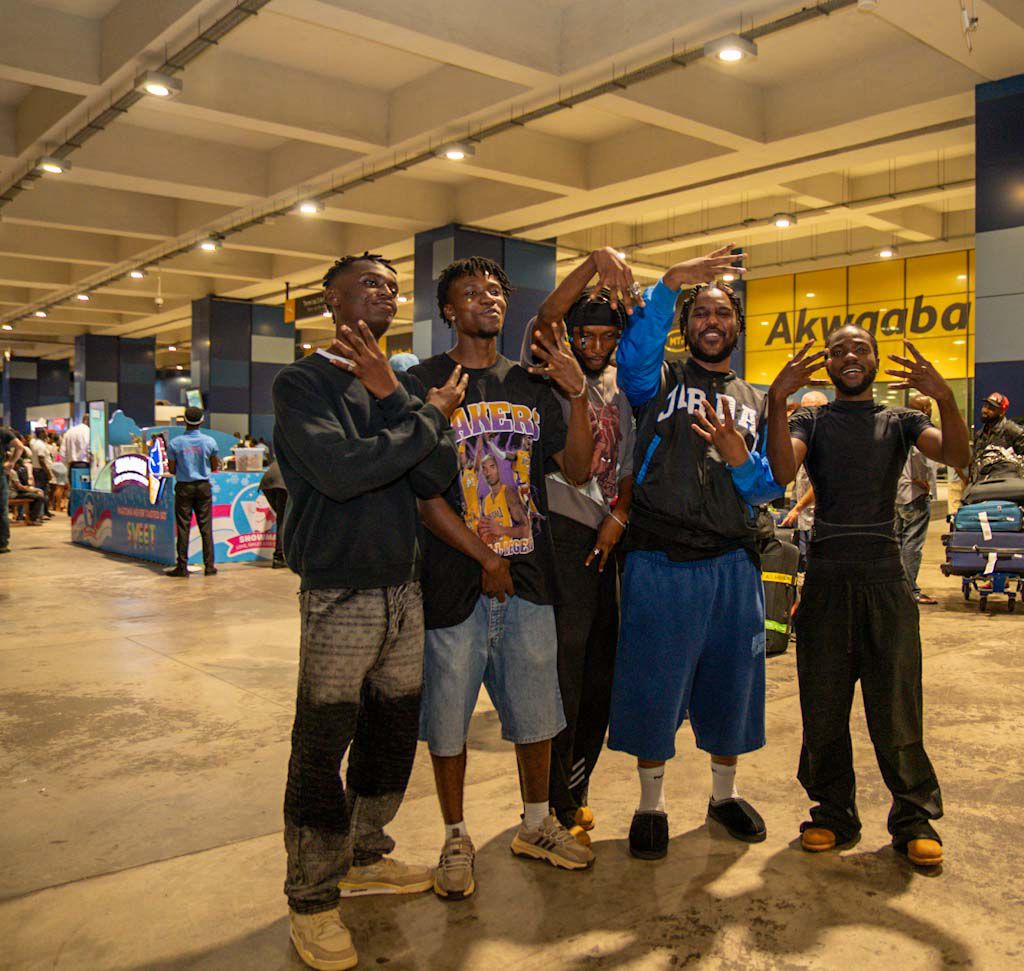
Savage4: It's a spiritual thing. Like Novelist said, we're bridging the gap, bringing music to the other side and bringing theirs to our side as well. Music is the bridge. That's what we're doing right now.
How are you feeling going into the recording sessions? What's the vibe?
Savage4: We are gassed. Really gassed. Expectations are high. When Novelist touched down at the airport, the energy was like we've been together for 10 years. We're just glad we started. It's forward, with love.
Novelist: It felt immediate, like meeting my brothers. No funny vibes, and that will translate in the music. We’re open to the unexpected, but know that we're gonna have fun with it. That's the main thing. The fact that people get to be a part of the process with us, that's exciting for me. We will probably preview some snippets before some of them even come out. We're doing the whole thing in real time.
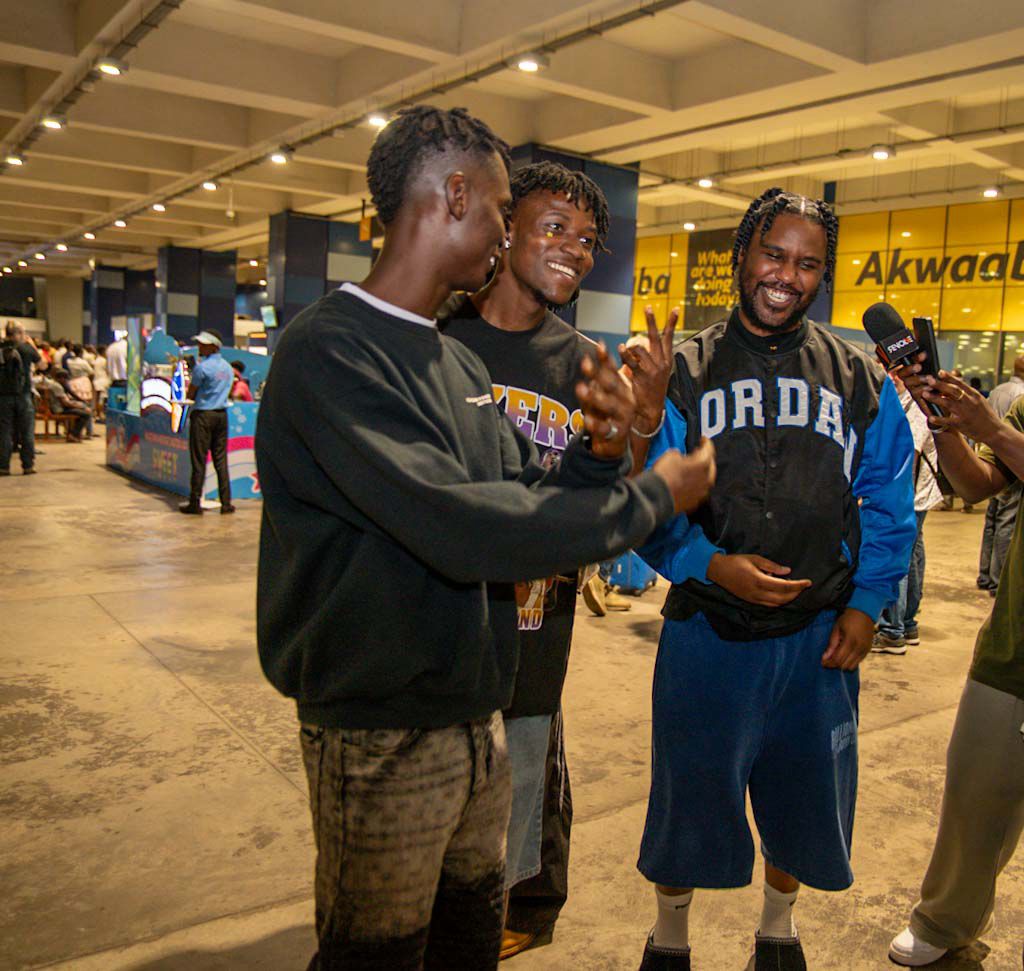
As this interview wrapped on Friday, Novelist and Savage4 headed straight into the studio for Day 1 of 7. Now on Day 3, the sessions are well underway. Over the next few days, they'll preview snippets and share the process in real time. As Novelist put it “the vibes can't lie”. Pressure makes diamonds. In seven days, we'll find out what happens when two sides of the diaspora — Uk Grime and Afro-drill lock in, and create something new together.
The 7 Days Tape. Nov 2, 2025. Free The Youth, Accra.
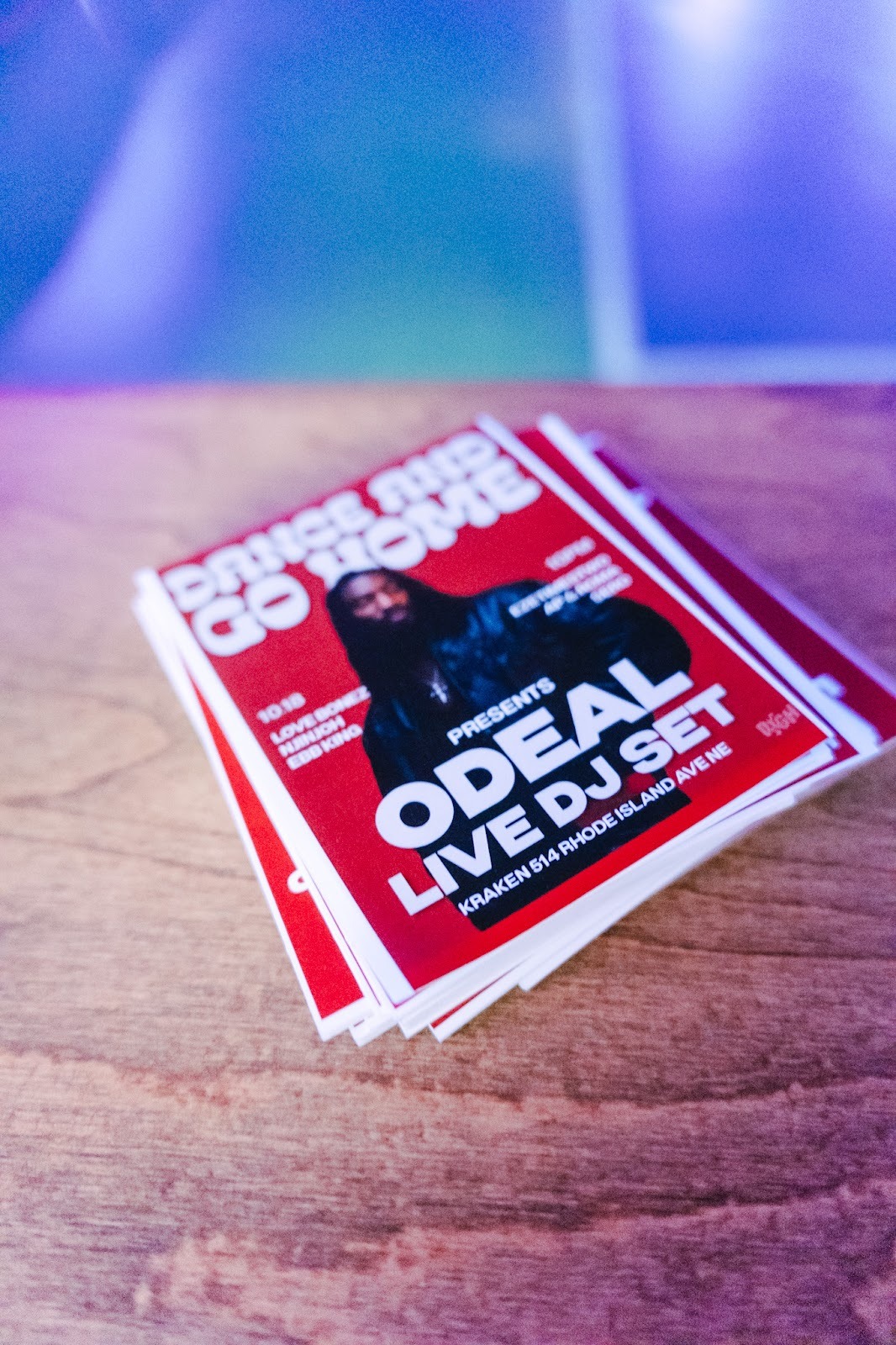
Photo by Jadah Dunyoh
Dance and Go Home is a burgeoning movement dedicated to redefining the modern dance floor experience. Its mission is simple, yet profound: to create high-energy, communal gatherings where every detail is intentional, and genuine connection can flourish. The name itself, "Dance and Go Home", is a hopeful mandate: experience the event to its fullest, filter out the noise, and head home content, having breathed life back into your spirit.
Designing Connection in our world often defined by digital distraction and social separation, Dance and Go Home stands as an antidote. The entire experience is heavily curated, from the lighting and atmosphere to the selection of attendees and the venue itself. Everything serves the core vision of fostering an organic experience.

Photo by Jadah Dunyoh
By evening the playing field, the events create a safe space where pretension fades, and people are truly seen and heard. The divisive "I’m better than you" vibe are successfully removed. This atmosphere encourages genuine interaction. When sections are gone, you find yourself interacting and fellowshipping with people outside of your normal friend group, creating endless possibilities and magic brought together by music and a good time.
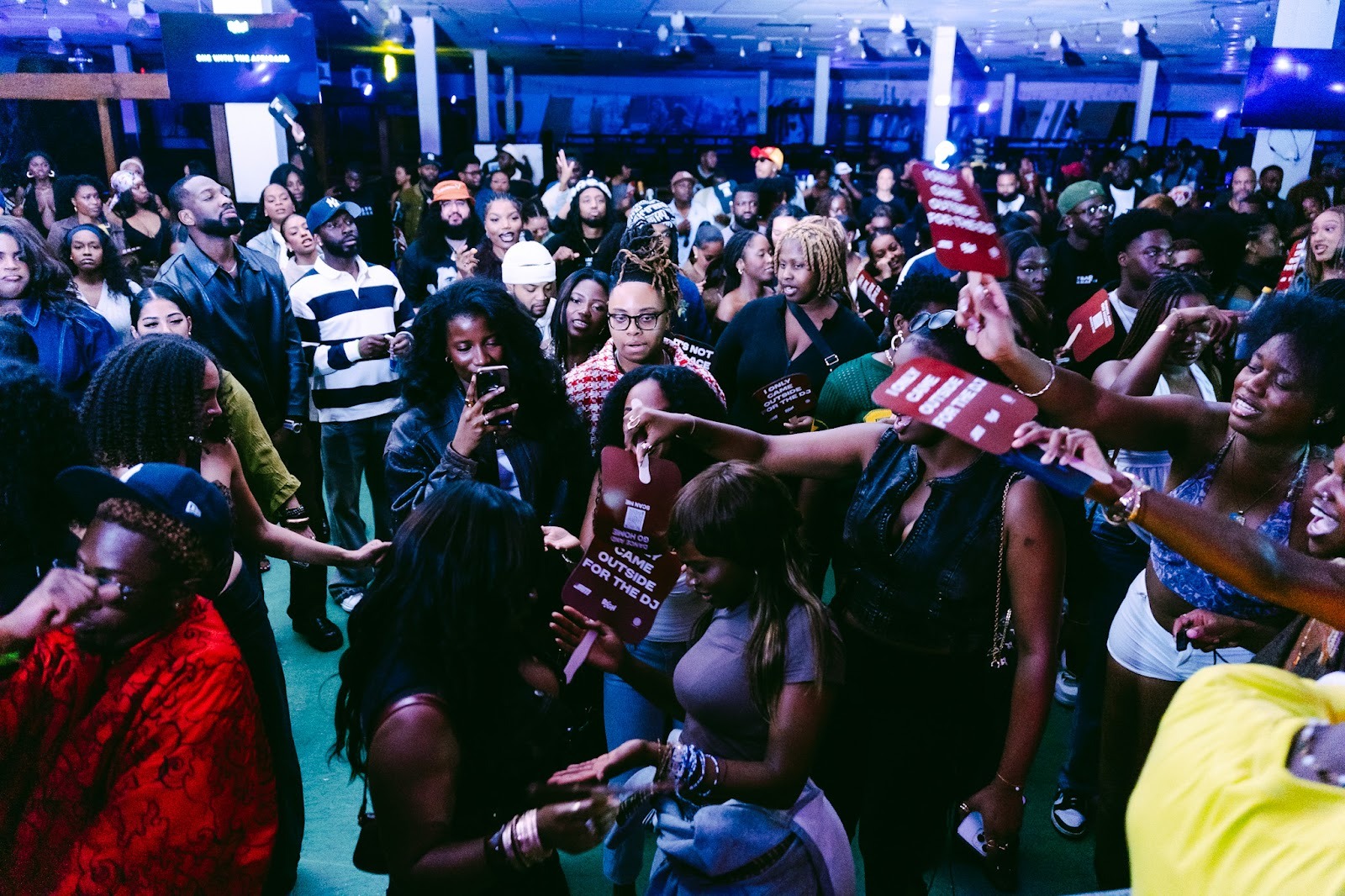
Photo by Jadah Dunyoh
The sheer intentionality extends to their choice of location; for one recent event, the space was literally built from scratch; no one had ever held an event in that space until then. That demonstrates the spirit of the brand: you don’t know what’s possible until you take a chance and just do it.
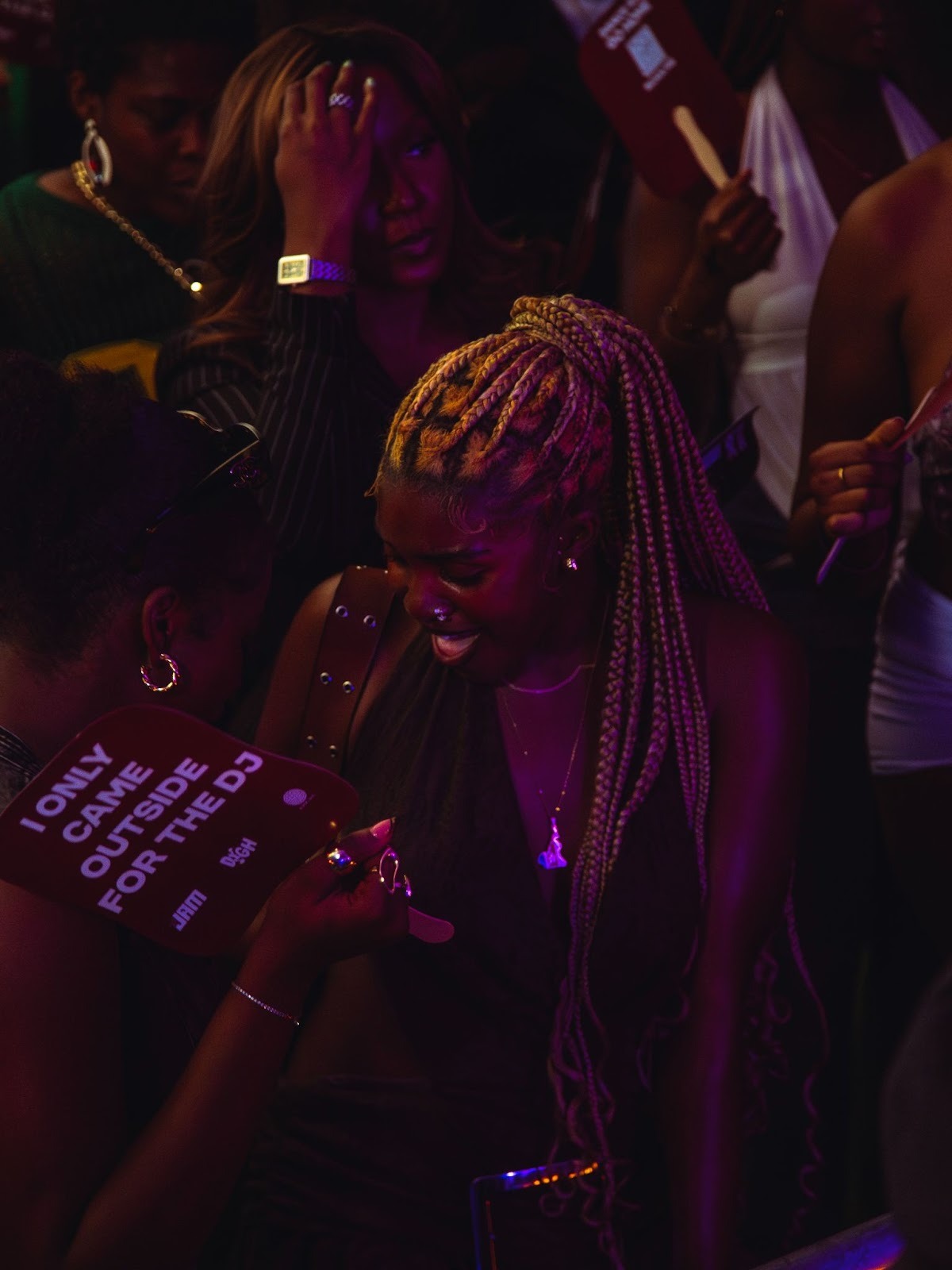
Photo by Taiyone Fields
As the founder and creator, Eze provides the philosophical backbone for the movement. His vision goes beyond a successful party; it is centered on filling a spiritual need for community and authentic connection.
The intentional design includes policies that actively combat the isolation common in modern nightlife. By removing bottle service and focused sections, the brand encourages people to branch out from their usual circle.
“One of my favorite policies is encouraging people to connect with more than just the group they came with... That’s where many conversations, connections, and even relationships used to begin, and we want to bring that back.” — Eze
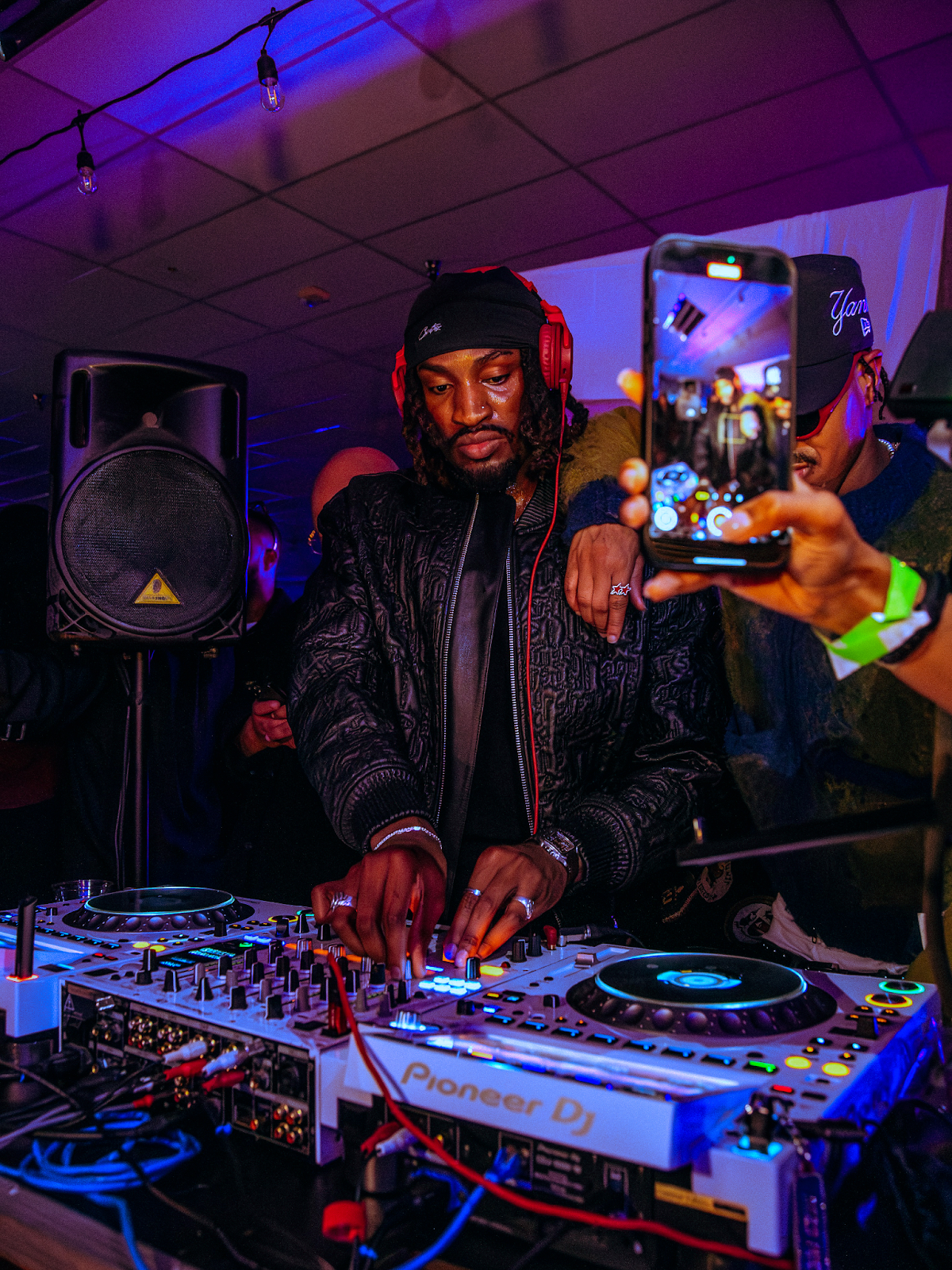
Photo by Taiyone Fields
The recent sold-out special event with artist Odeal served as a brilliant showcase of the
brand's philosophy. Odeal’s involvement highlights Dance and Go Home’s commitment to collaborating with individuals who embody the spirit of boundless potential.
Many attendees knew Odeal for his alluring music, but few realized his depth as a DJ. His electrifying, experiential set, alongside numerous other talented DJs, was a powerful display of not putting limitations on oneself. He is the perfect artist to collaborate with, as his talent, allure, and sound are undeniable.

Photo by Taiyone Fields
A Grounding Frequency The event also featured the premiere of Odeal’s new song with rapper Wale, titled "City on Fire." The track was an undeniable vibe. Odeal’s soul-full, melodic, sultry, and alluring sound, complemented perfectly by Wale’s poetry in motion, created a frequency that was both grounding and transporting. The bass and tone immediately set a mood, the kind you could picture playing late at night with a convertible top down, or simply chilling and vibing by the water, reminiscing. The song is almost definitely playing on repeat.
This collaboration is a clear example of the brand’s philosophy: whoever you are, you don’t have to stay within the box that others have put you in, whether that be society, gender, or upbringing. The possibilities are infinite.
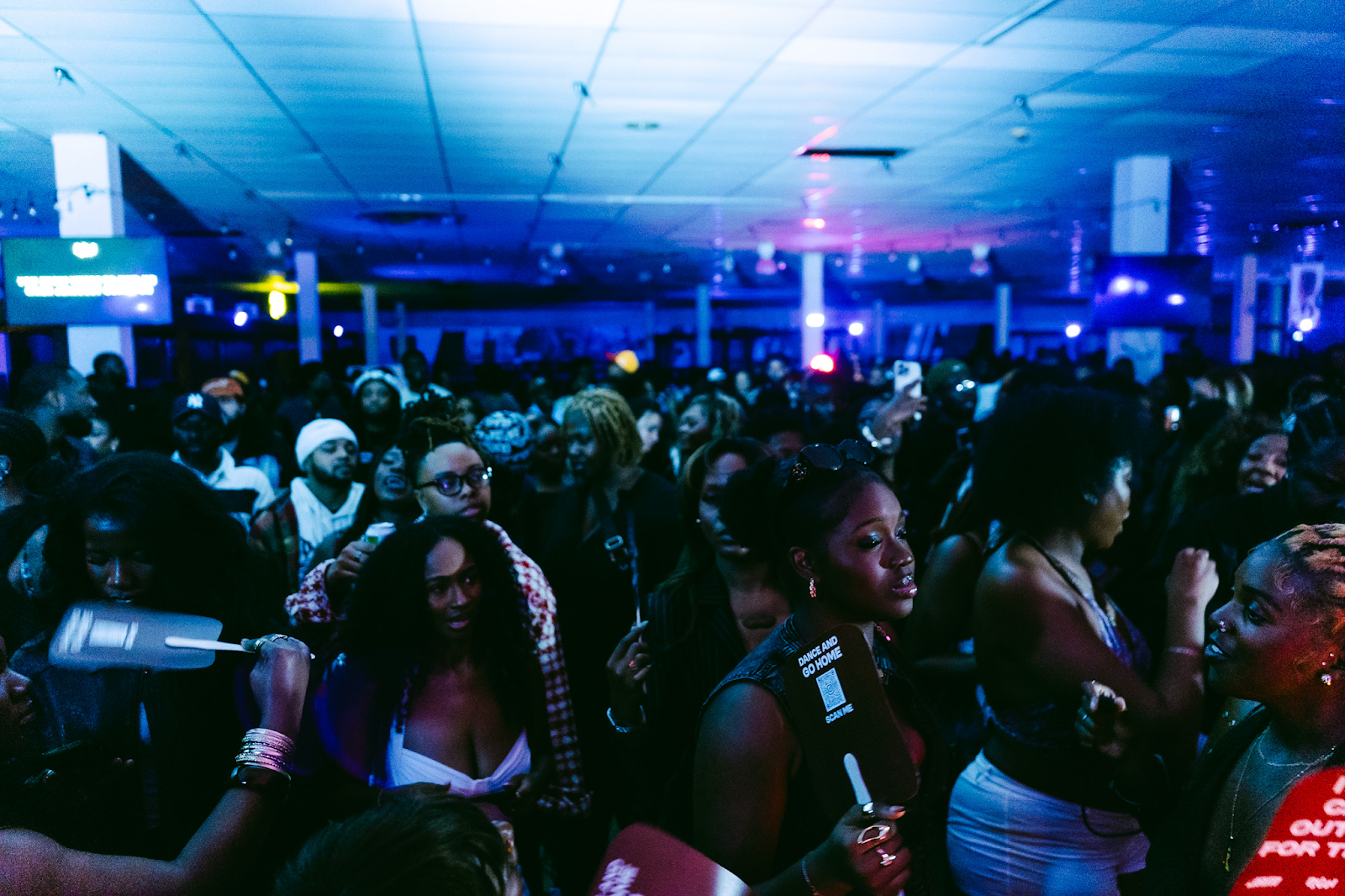
Photo by Jadah Dunyoh
As explained by the founder, Dance and Go Home is not just one thing, it’s multifaceted. It has several branches that have expanded to fit the different needs of the events community base. The founder’s intentionality is palpable, a pure purpose to bring love and life back to the world. Even when answering questions, his perspective was always hopeful. Any hurdle faced was viewed as a lesson rather than a loss, ensuring the movement stays grounded and focused on its positive mission.
Dance and Go Home is a movement, a lifestyle, and a microcosm of hope. The community it creates, full of intentional, positive people who will go on to be world-changers, doctors, lawyers, and scientists, is proof that when people feel good, positive, and intentional, the world becomes a better place. The ultimate hope is that every interaction with the brand inspires people to look within and realize the infinite possibilities within themselves.
“Dammy Krane for the girls!”
Anytime you hear that Fuji-like intro on a track, you already know the song is likely going to be a hit. Oyindamola Johnson Emmanuel, the artist we all know as Dammy Krane, entered the Nigerian music scene like a lightning bolt. Before the Remas, Rugers, and Ayo Maffs, Dammy Krane was one of the young, fearless voices defining the new sound of Afrobeats.
At just 20 years old, he was already signed to 2Baba’s Hypertek Digital, and by 2012, he clinched the Headies Rookie of the Year award, a stamp of promise, charisma, and potential. His early songs carried a kind of street charm that fused Fuji with pop; “Condom Sir,” “My Dear,” “Xteristics”, each one cheeky, melodic, and effortlessly danceable. Dammy Krane wasn’t just making music; he was inventing a sub-style, a hybrid of street lingo, Yoruba rhythm, and youthful mischief that would later become mainstream. Stuff of dreams for a 20-year-old.
Then the spiral began.

First came the 2017 arrest in Miami for alleged credit card fraud, an incident that, though later resolved, cast a long shadow over his name. For a while, it seemed like Dammy Krane had faded into the background of an industry that moves fast and forgets faster. But he didn’t fade; he transformed.
He became louder, bolder, and, depending on who you ask, more controversial. From public feuds with Davido, to constant social media callouts about unpaid debts, to subtle (and not-so-subtle) shots at industry peers, Dammy Krane has repositioned himself as something of a musical troublemaker.

But more recently, another pattern has drawn attention, his habit of dropping songs with titles identical to existing Afrobeats hits. From naming his track Odoo shortly after Wizkid’s, Burna’s No Sign of Weakness, to releasing Jo following similar records by Davido, fans have started asking: is Dammy Krane trolling the industry or just borrowing inspiration?

In an industry where homage and imitation often blur, his timing feels deliberate, sometimes dropping a single right after a bigger artist’s release, using similar titles or even related themes. To critics, it’s the move of a copycat chasing attention. To supporters, it’s a subtle act of rebellion, a way to insert himself into Afrobeats’ fast-moving narrative by any means necessary.
But beneath the noise lies a more complex question: Is Dammy Krane truly a copycat or simply an artist who refused to conform?

His sound, once considered street pop, was arguably ahead of its time. The same streetwise melodies and Fuji inflections he was mocked for are now the lifeblood of today’s Afrobeats. In another timeline, Dammy Krane could have been celebrated as a pioneer of what we now call “Afro-fusion.” Instead, he became the cautionary tale, the “what could’ve been”.
Still, he’s refused to disappear. In recent years, Dammy Krane has turned controversy into a branding tool, dropping diss tracks, reigniting feuds, and leaning fully into the role of Afrobeats’ villain. Whether you agree with his antics or not, there’s something fascinating about his persistence, an artist unwilling to be erased, even when the industry seems to have moved on.
Maybe Dammy Krane’s story isn’t about downfall or redemption. Maybe it’s about a man who refused to play nice in a system that rewards silence.
The heavy question in the air then is, how long will this "villainy" last? Will he give us another hit single? The jury’s out!
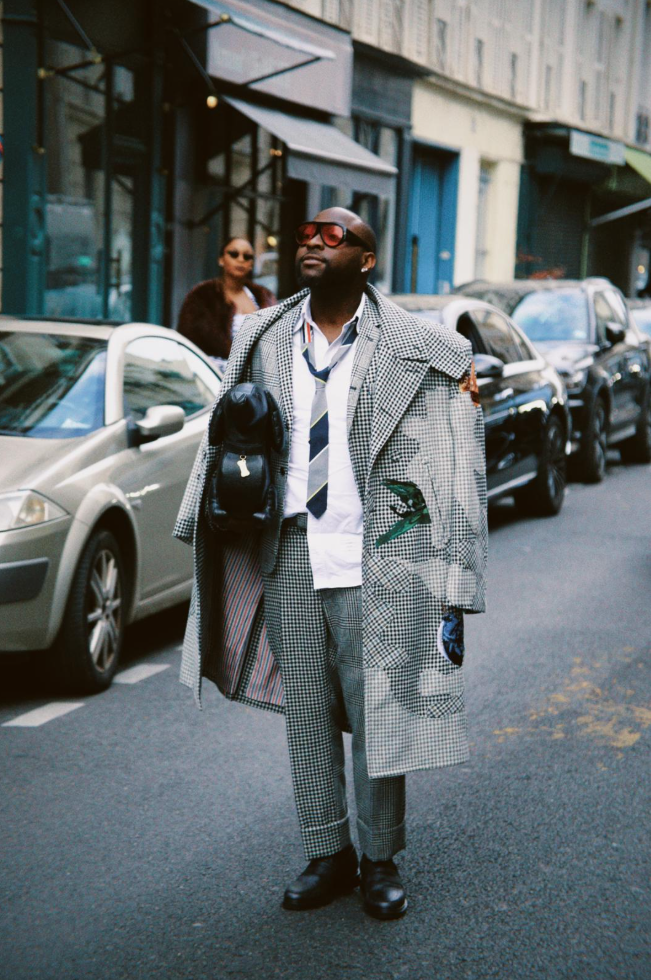
Photo by Daniel Olamiposi
This Paris Fashion Week appearance is far from Davido's first dance with high fashion, but it feels like a culmination of something bigger. We've watched him evolve from music's front row fixture to a bona fide style icon whose fashion choices now spark global conversations, someone who genuinely understands fashion as another form of expression, another way to tell his story. His choices have become more considered, more intentional, and the fashion world has taken notice.

Photo by Daniel Olamiposi
This season at Paris Fashion Week has been particularly notable for him. We had the opportunity of following Davido for a day during fashion week (catch the full experience here), and what struck us most wasn't just the designer fits or the front row seats, it was the ease with which he navigated these spaces. There's something magnetic about watching someone who belongs everywhere because they refuse to dim their light anywhere.
Davido is actively reshaping what it means to be a global African artist in 2025, one who moves seamlessly from music stages to fashion's most prestigious platforms, bringing his culture, his crew, and his authentic self every step of the way.
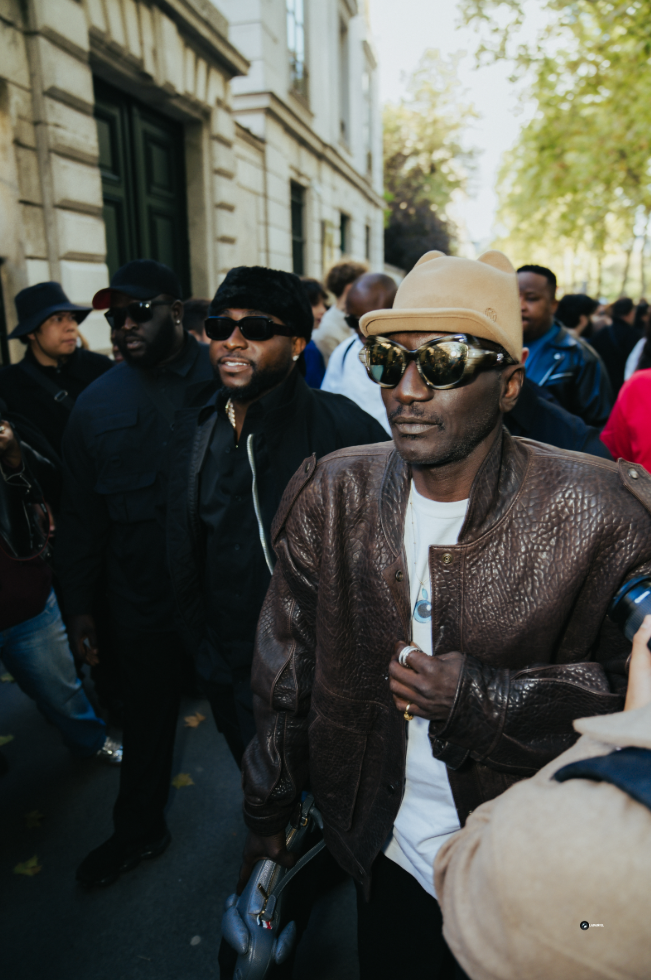
Photo by Daniel Olamiposi
While Davido continues to cement his status as a fashion force, he's also preparing for what might be his most personal endeavor yet this year. He recently announced the highly anticipated Nigerian leg of his 5ive Tour, set to kick off on October 26, 2025,in Akwa Ibom, with stops in Adamawa (October 29), Enugu (November 1), and Ibadan (November 9), before culminating in a grand finale in Lagos on Christmas Day.
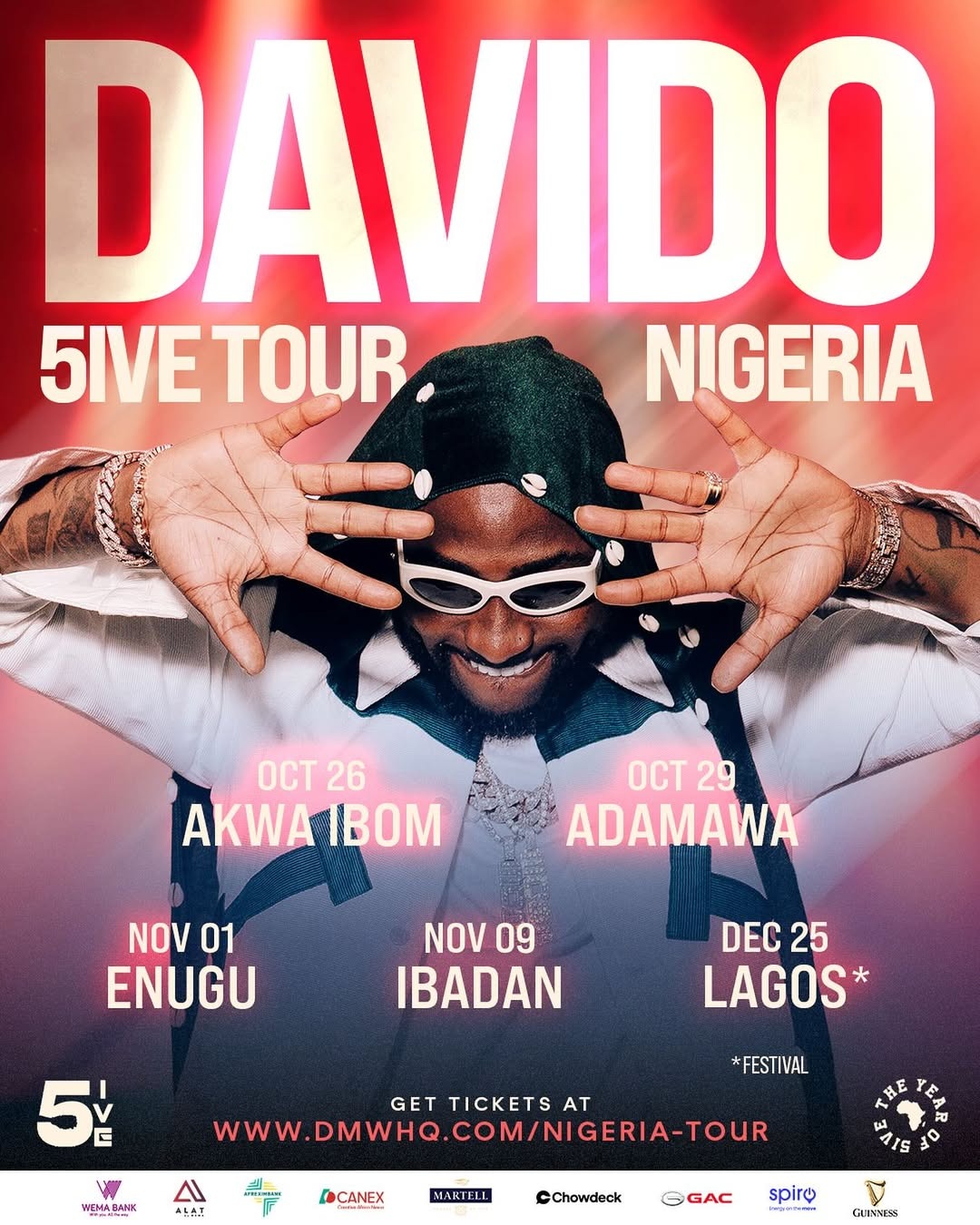
"I'm blessed to perform all around the world, and everywhere I go — Nigeria goes with me," Davido shared in his announcement. "But this time, I'm bringing it HOME. After an unforgettable North American tour, it's only right we bring that energy back where it all began. This one's for the culture. This one's personal. This one's for US."
The tour follows his successful North American run, which wraps up in Atlanta on November 20, 2025, at the State Farm Arena, and is in support of his fifth studio album, 5ive, which dropped in April 2025 to critical acclaim. The homecoming tour feels like a full circle moment for an artist who has spent the year proving that you can conquer the world without losing sight of where you're from.
Davido's Paris Fashion Week moment, styled by Le Jenke in Thom Browne, was about representation. It's about an African artist standing in spaces that once felt inaccessible and making them look like home. It's about a stylist who understands that fashion is storytelling, heritage, and vision. And it's about a fashion house recognizing that global luxury means embracing global voices. Davido is telling a story that the world can't stop watching.

Photo by Daniel Olamiposi
About Davido
David Adedeji Adeleke, known professionally as Davido, is a multi-award-winning Nigerian artist, record producer, and cultural leader whose influence extends far beyond music. With a discography boasting over 2 billion global streams, numerous international awards, and a reputation as one of Africa's most fashion-forward figures, Davido continues to serve as a global ambassador for African creativity and excellence.
About Le Jenke
Jenke Ahmed Tailly, known as Le Jenke, is a Paris-based stylist, creative director, and cultural curator whose work bridges heritage and high fashion. His collaborations span the world's biggest fashion houses and artists, consistently shaping conversations around culture, luxury, and identity.
About Thom Browne
Thom Browne is an American fashion house recognized for redefining modern tailoring with precision, wit, and conceptual excellence, pushing the boundaries of form and storytelling in contemporary fashion.
Odumodublvck’s sophomore album Industry Machine is at once an expansion of his seminal debut album Eziokwu and a radical departure from it. Like Eziokwu, Industry Machine finds Odumodublvck effortlessly toggling between frenetic and often blustery raps and saccharine-sweet melodies. Both projects are steeped in football references and allusions, if you follow him on social media, you will know that football holds a singular fascination for him. Declan Rice, a track on Eziokwu, named for the Arsenal midfielder, went on to become one of the most culturally significant songs of the era; Industry Machine hopes to continue in this tradition, spawning two records named for football stars: Maradona and Vinicius. Both projects also feature covers by artist-designer Olaolu “Slawn” Akeredolu-Ale.
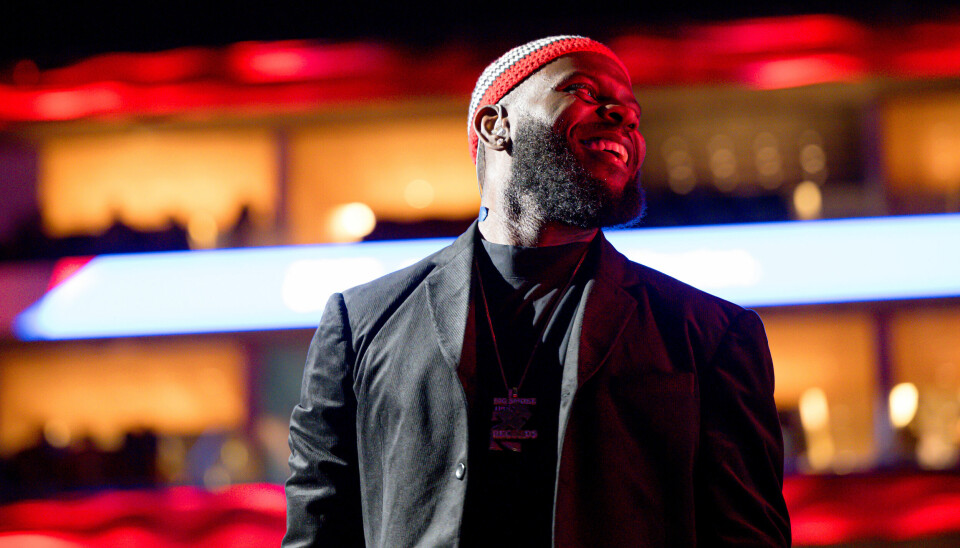
A closer examination, however, reveals that with Industry Machine Odumodublvck has a different, more cavalier set of intentions: flattening aspersions regarding his artistry, bludgeoning his enemies, and cementing himself within the hallowed pantheon of Nigerian rappers, including acts like Mode 9, Olamide, M.I Abaga, Vector the Viper, Naeto C, and a host of others. If, with Eziokwu, he sought to establish himself as a formidable force within Nigeria’s Hip-Hop scene, proving himself capable of parlaying his cult following into mainstream success, with Industry Machine, he trains his focus on cementing himself within Hip-Hop legacy.
Though Odumodublvck had spent the latter half of 2022 and early parts of 2023 on a feverish run of singles, including Picanto, Dog Eat Dog II featuring Cruel Santino and Bella Shmurda, the Fireboy-assisted FIREGUN, and Declan Rice, very few people could anticipate the seismic shifts Eziokwu, released on the 6th of October 2023, would occasion.
Not only did the album go on to become the most commercially successful and one of the most critically acclaimed Nigerian Hip Hop albums of all time, but it also stirred an industry-wide reckoning. Until Eziokwu dropped, Hip Hop in Nigeria had increasingly ceded the spotlight to Afrobeats and other genres, so much so that the prevailing rhetoric held that Nigerians no longer enjoyed Hip Hop, the genre in which stalwarts like M.I. Abaga, Olamide, and Naeto C found immense success. Naturally, Eziokwu’s success forced critics and rappers to interrogate their suppositions and beliefs about the state of the genre, particularly the receptiveness of everyday Nigerians to Hip Hop.
In the aftermath of Eziokwu, two leading schools of thought have emerged. The first holds that Eziokwu provides a template for the contemporary Nigerian rapper looking to achieve mainstream success: marrying traditional Hip Hop with elements of Nigerian culture. This ethos buzzes through the work of the most compelling emerging rappers of today; among them Zaylevelten, Wave$tar, and Artsalghul. Those on the other end of the divide, the Hip Hop purists, if we may—have dismissed Odumodublvck’s distinct style of rap, which favours slang over intricate metaphors and double entendres, as a lesser form of rap. More hawkish critics have claimed his style of music doesn’t qualify as Rap.
The implications of this rhetoric are clear: it seeks to undermine his work and estrange him from the lineage of formidable rappers who have defined the genre at various turns. Industry Machine is largely an emphatic rebuttal to the claims. As such, the project glowers with indignation and finds him feverishly railing against his antagonists. In the titular opening track, Industry Machine, he wrestles against the narratives peddled by his antagonists. “Them say na rubbish we dey talk/ Them say na jargons we dey spit/ Some say na hullabaloo lingua/ But na my music them dey chop.”
In making his case as the latest torchbearer for Nigerian Hip Hop, on this album, he deploys three strategies—enlisting a flotilla of heavyweight artists, among them, Wizkid, Mode 9, Davido, Patoranking, Reminisce, Phyno, and Zlatan; bragging about his achievements and sounding warnings to his antagonists and would-be enemies.
The album is most alive when he’s actively tackling his enemies. When, in the intro of the Pa Salieu-assisted Unaware, he mumbles “Beef na wetin them say make I chop/ Beef na wetin them say make I wallop/ They can never win,” you feel that frisson, that jolt of excitement that invariably surfaces in the opening sequence of a war film. Later in the song when he song when he raps “Picture man begging/ Dem dey wonder how I dominate, ‘he is really doing numbers with his cornerstone rhythms,’” you feel his indignation with forceful clarity.
If You Like Gym—a diss track aimed at Blaqbonez, a rapper who, in the weeks leading to the release of Industry Machine, claimed Odumodublvck could not rap, crackles with a similar fervour. Layi Wasabi, which features legendary rapper Reminisce, is where this motif reaches its crescendo. “Take man for joke like say I no sabi/ You Layi Wasabi, joke man nothing wey you sabi,” he raps, again railing against his denigrators. From another person, that turn of phrase would perhaps have come across as pedestrian, but the vivacity with its distinctive lustre. The chemistry between Reminiscence and Odumodublvck is scintillating, across the song, as they take turns delivering machismo-sodden lyrics, you get the feeling of watching two virtuosos go at it.
Indeed, much of the pleasure of Industry Machine comes from hearing Odumodublvck bounce off energy with his collaborators. Maradona, in which, over a whimsical beat, he teams up with Justin Quiles, and Saweetie, almost feels like a night of karaoke with friends. We feel the same way when we listen to songs like Pay Me featuring Stormzy and Zlatan, and Adenuga featuring Skepta and Anti World Gangsters. His collaboration with Wizkid, Big Time, is also noteworthy. After Wizkid delivers an impassioned verse in which, with his voice thick with emotion, he pulls apart the grief of losing his mother, amongst other things, Odumodublvck offers a stirring consolation: “Baba calm down, rora, otito!”
With 23 songs that span over an hour, Industry Machine, at times, feels superfluous. But it’s an album that stays with you and makes you think of all the times when Hip Hop heavyweights have demanded an industry-wide reckoning. Kendrick Lamar’s beef with Drake easily comes to mind, but in the Nigerian music landscape, M.I. Abaga’s totemic single You Rappers Should Fix Up Your Lives, which prefigured his 2018 album A Study On Self Worth: Yxng Dxnzl, rings with more pertinence. I suspect the album will be here for a long time because it poses a universal question: what do you do when your flowers are being withheld from you? Odumodublvck offers a simple answer: take them for yourself!
Kirko Bangz is much more than a recording artist; he represents a calculated movement. His signature sound—a melodic, sultry blend of R&B and Hip-Hop—has seen significant refinement, mirroring a powerful personal transformation that has taken place over the last few years. This period of growth has crystallized his perspective, both musically and personally. Deeds Editorial recently captured the Houston native, noting that the evolution of his music has been matched by his style. His aesthetic now radiates a sense of relaxed luxury paired with strong structure. In front of the camera, Bangz was effortless, possessing the same natural command and easy confidence he exhibits behind the microphone.
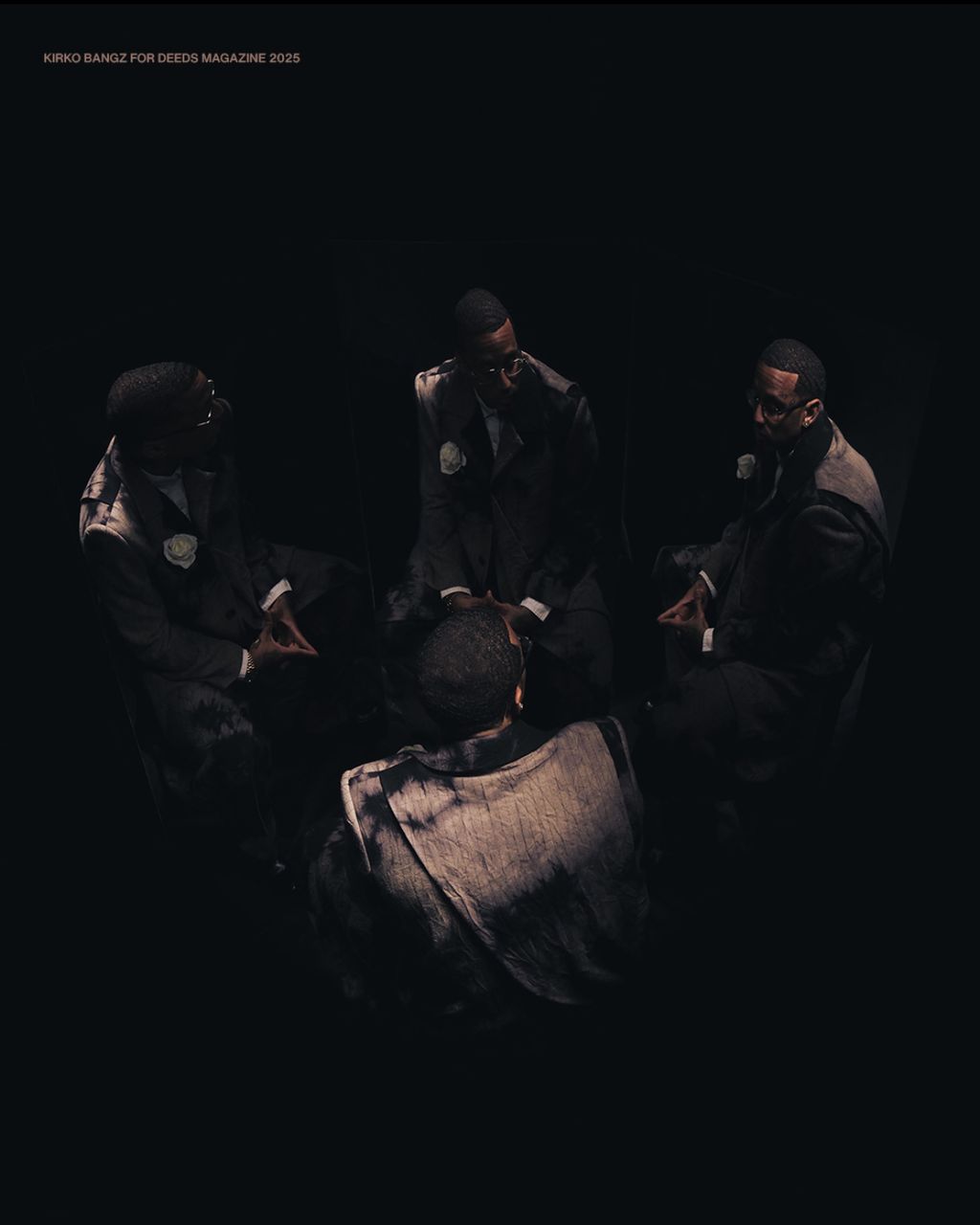
The most compelling aspect of Kirko Bangz’s current chapter is his newfound clarity. He describes this personal progress in the language of an athlete, using the analogy of a basketball player who can now "see the floor better." He has transitioned into the role of a "floor general," orchestra strategically directing his entire process. This shift stems from a conscious and deliberate decision to confront and change his life. As he matured, his point of view changed, leading him to reassess his daily routine and approach to his goals. The artist acknowledged that he was not living up to his own expectations, leading to a pivotal realization: the struggle was me against me. He chose to radically prioritize himself and his well-being, initiating a difficult but necessary overhaul of his habits and environment to pursue his authentic self.

Process and Purity in the Art For Bangz, his art is irrevocably tied to his reality. His music is fundamentally a form of reportage, a chronicle of his authentic, lived experience. This commitment to honesty is a core tenet of his career and something he vows will never stop. His track, "I'll Make It," embodies this ethos. While he recognizes he has achieved a level of success, the song serves as a powerful reminder—a mantra, even—that the work is perpetual. It underlines the necessity of persistent effort and the acceptance of new challenges on a boundless journey. Crucially, this reportage requires experience. Bangz adheres to a philosophy that he must live extensively before he records. His creative process is therefore cyclical: he gathers life experiences—he lives, learns, and engages—and only then does he step into the studio to translate those moments into his music. He has always maintained his autonomy, staying true to his own lane and resisting the urge to follow musical trends, talking about what he chooses, when he chooses.
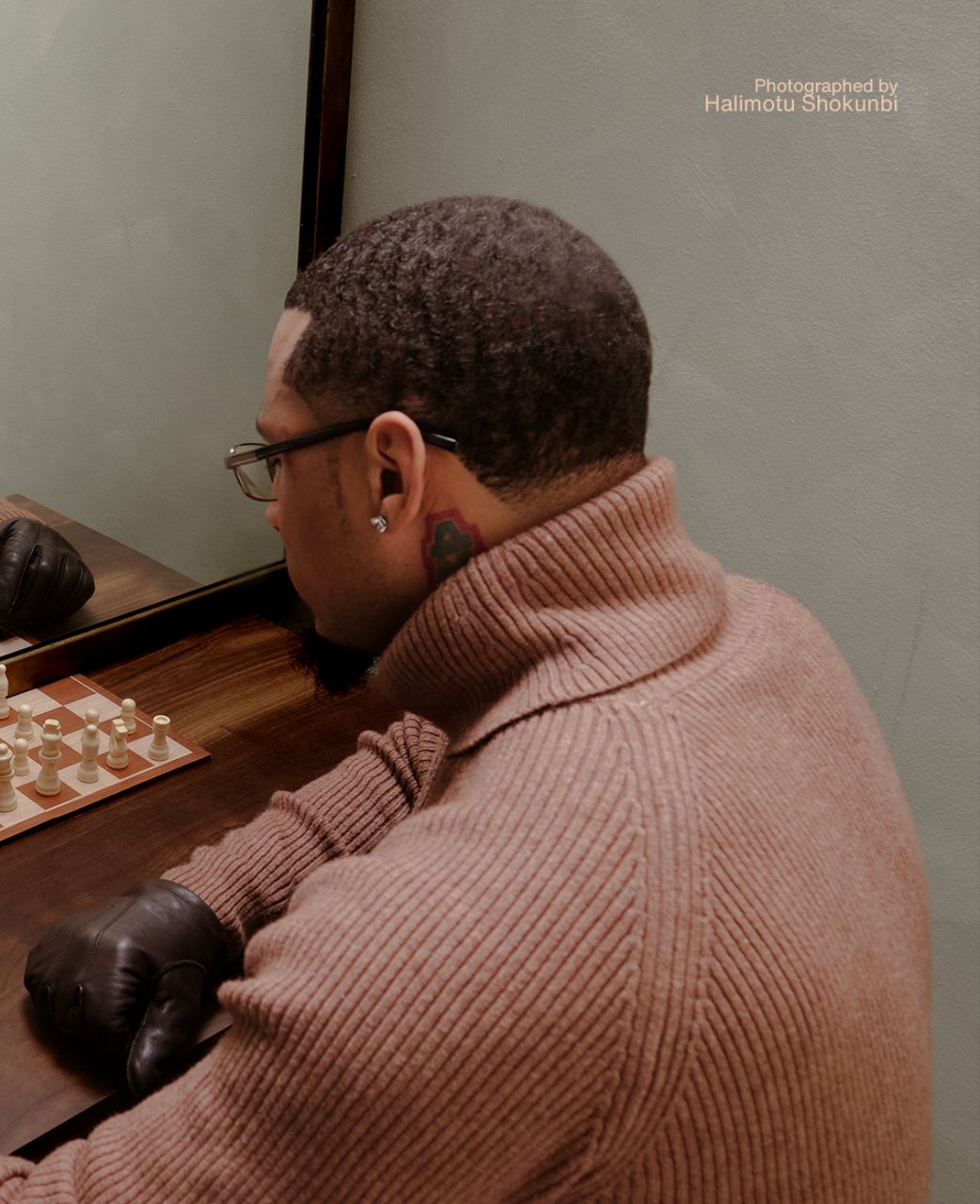
The DNA of Houston, his hometown, remains imprinted on his work. While his recent projects may not strictly conform to traditional "Houston culture," they are driven by the city's inherent spirit: the hustler’s mind frame. This ambition is a tribute to the legacy of Texas artists who built their careers from the ground up, selling their music directly to fans in the street. Despite his passion for creation, he holds a starkly critical view of the music business, describing the industry as being run by "terrible people." He speaks frankly about the systemic issues that prevent artists—particularly young, emerging talent—from receiving the financial and professional respect they deserve. This unwavering honesty about the business contrasts sharply with the integrity he brings to his music. To facilitate his new, organized lifestyle, Bangz has made a significant commitment to physical discipline, transitioning to 5 A.M. gym sessions. This dedication is more than just fitness; it is a structural pillar for his productivity. By carving out time early in the day for rigorous exercise and organization, he ensures these necessary routines do not encroach upon the dedicated time he needs for recording and pursuing his artistic goals. Kirko Bangz’s journey is a refreshing testament to genuine character in a music industry often defined by artifice. His deliberate transition from a talented artist to a strategically organized leader offers a hopeful model for the next generation of creatives.
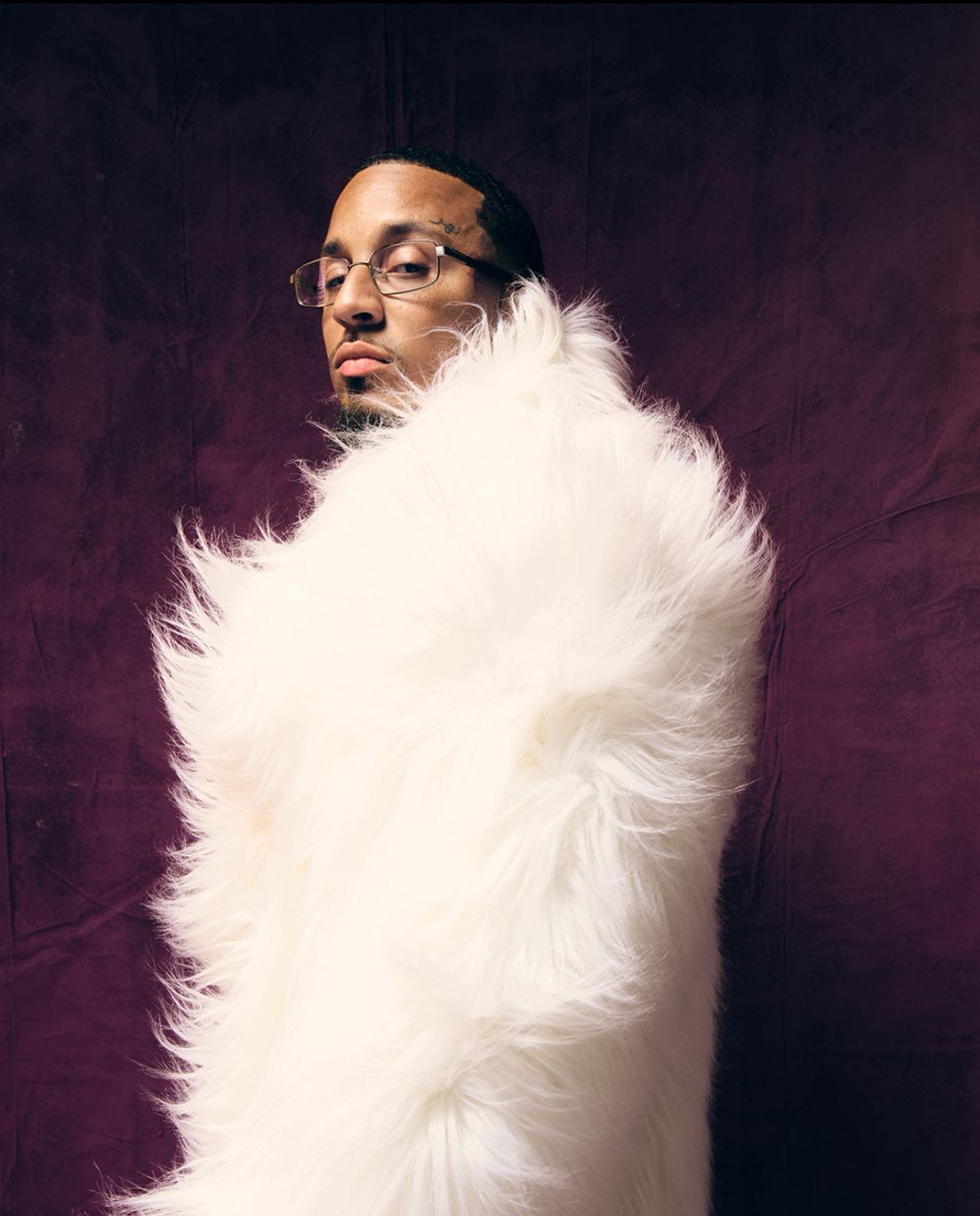
Ife Ogunjobi is a name familiar to anyone who knows about jazz music in the UK. As a trumpet player, composer, and producer, he understands the power of music and its effect on people. Having played instruments since the age of five, he didn't realise that experiencing Hugh Masekela live as a ten-year-old child was what shifted something within him. “When I heard him play the trumpet live, it was something I'd never heard before, and I was drawn to it”, he explains about his early experience with the instrument.
The rest is history, as he has since become a key member of the Mercury Prize Award-winning jazz collective Ezra Collective and has also joined the likes of Burna Boy, Wizkid, and Dave on stage. As a musician, Ife is somebody whose influences range from the likes of King Sunny Adé, Fela Kuti, Ebenezer Obey to Miles Davis, Tems, Dave, Skepta, Kendrick Lamar and Anderson.Paak to name a few. All of them represent the different parts of Ife’s musical identity and are presented on his upcoming EP, Tell Them I’m Here. The EP is a follow-up to his 2023 debut STAY TRUE.
As you press play on the five-track EP. You are presented with the vastness and richness of his musicality, primarily expressed through his trumpet, set against a production that captures aspects of Highlife, Afrobeats, Jazz, R&B, and Hip-Hop, all of which are stunningly captured across the project.
Beginning with “East Street Market” and ending with “Real One”, the EP not only transports sonically but also visually across the inspirations and locations that set the tone and form the scenes presented on the project.
Tell Them I''m Here feels like something new and modern whilst also capturing an element of nostalgia with an ode to Ife’s musical upbringing and his sonic DNA. It is a celebration of his identity, embodying freedom and his ability to express himself in any way that feels true to his identity as an African musician in the new UK Jazz space.
Ahead of his November release, we spoke with Ife about everything from his musical roots and cultural identity in relation to his music, playing the trumpet and what it means to be a trumpet player, performing with the likes of Burna Boy and Wizkid, the EP, the importance of staying true to one's identity and what it means to be a Jazz musician.

Hi Ife, first of all, it is great to be speaking with you. I wanted to start with the visuals for the project. When you listen to the EP, you can easily picture what the songs sound and look like. So how did you come to think of the visuals for this EP?
Yeah, it was really exciting on this project to be able to incorporate all the visuals. With my music, especially with instrumental music, there are no words, so there's so much room for interpretation. Music is one art form of communicating, and visuals are another way of doing it. The two of them working hand in hand to tell one story is really powerful. For example, with “East Street Market”, even though there are no visuals for it, I can paint a picture in my head of what it would look like. Even when I'm writing, I can literally see things. So when we're making that song, it just felt like a market to me, the closest reference I have to a marketplace that I go to all the time was East Street Market. That kind of energy, how busy it is, all the madness that goes on in that market. It felt like that track really, really represented it well. A lot of the time, my music paints pictures in my mind, and hopefully, it does the same for the listener, giving you room to explore and interpret things in your own way. In “Zimbabwe”, again, the way we wanted to create the visuals, I wanted that energy of everyone just literally having a party; there wasn't actually too much to it, but it's more like the song just gives me a bounce and an infectious groove that I can't escape. So I wanted that to be represented in the visuals. It's just ways of enhancing the music and telling the same story it tells. But now, rather than just music, people have the visuals to accompany it.
When you're writing the music, do you tend to put together mood boards, anything visual that informs you of the type of story you want to tell, or the picture that you want to paint with your music? Or is that something that comes out as you're making the songs?
It happens in different ways. With this project, it happened as we were making it. I could see the picture as it was being made. So, for example, with “East Street Market,” I started the song with my friend Gaten Judd, who was the producer on it. He came into the session, and as he was walking in, I was playing old school Highlife songs on YouTube, like King Sunny Adé and Ebenezer Obey. We didn't have a plan in our minds to make that kind of song; we were just going to make something from scratch. However, because of what was playing, we started making a song, and it became “East Street Market”. It was subconsciously in the back of our minds: the energy of highlife, even though it's not really a highlife song, still has that highlife vibe with the guitar and everything on it. As we're making it, I could see it sounding like something I could see, like it sounds like a place I know. And then I started associating that place with East Street Market. So then, because I knew what it looked like, I understood what it needed to sound like and the kind of energy I wanted the track to have.
In your mind, where do you feel like the marriage and your visuals come together in how you saw them for this EP?
With my music, whenever I'm trying to make music, it's not just something where I'm gonna put this out, and then everyone's gonna forget about it in like, four months or whatever. I always try to make timeless music that represents where I'm at in this moment in time. So that anybody who goes back and listens to it will find it still relevant. It still tells a story. Then, with the visuals as well, I give the visuals their own character, so everything works together.
Going all the way back to the beginning of this EP, where did it begin, and how did it come together?
The project started from a conversation I had with my good friend Gaeten, who wrote and produced the EP with me. We were talking about the kind of music I listen to, and many of my influences come from Afrobeats, hip-hop, and different UK-produced music. To tell the story of who I am and present myself musically, I needed to find a way to incorporate that into my music. It was about finding a way to incorporate the energy of where we are now in 2025 into the music, while balancing it with all of my older references. So I feel like this project truly does represent me, because you've got everything that's old school, from King Sunny Ade to Fela Kuti to Miles Davis and Bob Marley, all those older references which have now been mixed in with my new references, stuff like Burna Boy, Wizkid, Tems, Skepta, Kendrick Lamar and Anderson .Paak. And really bringing those worlds together. That is really what represents me as a person, and that's what comes through the music.
You are known to be a trumpet player, and so, for you, what was it that first made you pick up the trumpet and select that to be the instrument you knew you wanted to play? How did that start for you?
I started doing music from as young as I can remember. My mom got me involved in music school and playing instruments from around age five or so. I played the piano when I was really, really young, but I didn't start playing the trumpet until later. It was around the age of 10 that I saw Hugh Masekela perform live, and when I heard him play the trumpet live, it was something I'd never heard before. The energy and the sound of the trumpet were entirely new for me, and I was drawn to it as soon as I heard it. After I saw that performance, I wanted to start playing trumpet, because the trumpet has such a unique sound that you can tell a story in that instrument in a way that you couldn't do on other instruments. And then from then, the rest is history. When I play trumpet now, a lot of it is based on that initial encounter that I had with the trumpet, and in trying to tell my own story and show my own personality through that instrument, because that's what initially drew me to the instrument in the first place.
Having played it for as long as you have, what would you say you have learned, not just in terms of the technical skill of playing the instrument, but what has playing the trumpet taught you?
The biggest lesson I've learned through my years playing the instrument is that you have to tell your own story through that instrument. There are so many trumpet players out there in the world. Hundreds of thousands of people play the instrument. But what is it about it when you play trumpet that defines your sound, and that's the most important thing. I know they are better trumpet players than I in the world, but as long as I'm trying to be my authentic self through the instrument, nobody else can really replicate that. So there's no point in my trying to play like somebody else, because they can already do that better than I. I have to focus on what I'm trying to say through the instrument and make sure it's communicated to whoever's listening. Whenever I play now, whether it's recorded or whether it's live, I'm always trying to connect with the audience and really make them engage with the story I'm telling through the instrument. And that's what music is meant to do at the end of the day, it's meant to make you feel something.
Through your own development and growth as a musician, discovering the type of music you wanted to make, how was the process of finding your sound and developing it into the style you play now?
I definitely discovered my style of music later, from when I started playing. In the beginning, when you are learning music and learning how to play instruments, a lot of it is about imitation. So you copy something else to learn, and then you repeat it back. I got to know the kind of music I wanted to play when I started playing a lot with Burna Boy and Wizkid and doing those shows. When I was playing live, it dawned on me that this is such a big part of who I am as a person. I'd been doing jazz for so long, and then when I was doing those tours, I just completely forgot. I've been listening to Don’t Dull by Wizkid since I was a child. I've been listening to Burna Boy and Wizkid for years. So, getting that Afrobeats influence and all the influences I had growing up became much more important to me because I realised this was a whole other part of my personality that I wasn't really tapping into. So then I just made a conscious choice to balance both sides of this, because they both represent me in different ways. Like, you can't get Ife without jazz, and you also can't get Ife without Afrobeats, hip hop, grime, or funky house. It doesn't exist. Now, when I'm making music, my main focus is generally to be myself, unapologetically, and the only way I can do that musically is by drawing on all the different influences I have. So that is the thought process that made me start interjecting these influences and genres into my music. And that's kind of why my music and how my jazz influence changed slightly from being just jazz to being more of a multi-genre type of music.
As you’ve spoken about performing with Wizkid and Burna Boy. You are somebody who has been on many stages around the world and played with many artists and other musicians. So, how would you say you have been able to develop your performance style and how that has grown through the years?
As an instrumentalist, live music has always been a massive part of my life and what I do. So whenever I'm stepping into that realm, I'm always just curious about new things that are popping up. And a lot of the music I play thrives when it's live. Studio music is great and beautiful, but listening to recorded music and listening to music live are different things and different experiences. The live experience involves considering the elements and energy you can bring from recording the song in the studio to the live performance. I think that's the essence of playing live, and I've been very privileged to perform with the likes of Burna Boy, Wizkid, Ezra Collective and what makes all of those people such great performers in their own right is that they're able to get the energy from the songs that they recorded. They bring an energy that you can't feel through a speaker. You can only feel it when it's live. The biggest challenge and importance when you're playing live music is to bring a different kind of energy. It's like getting another perspective or aspect of the song when you attend the live show.
The title of this EP is called Tell Them I’m Here. In relation to this music and this project, what does the title mean, and how does it capture the essence of what you want people to take from when they listen to this EP?
It is literally showing people this is what I'm about. This is all the influences, all the sounds you're hearing, the way I put it together with the visuals and everything. This is who I am, in a nutshell. And it's me putting that personality and that identity into the world. But then also it has a bit of of a dual meaning, because now that I've had the confidence to put that out into the world, the meaning of Tell Them I'm Here is almost like I hope somebody else who has a dream or any ambition to do their own project, whether it be music or whatever it is, just in life, when you have an idea or an ambition. You're really passionate about it and really convinced about it, you have to be so headstrong about it, to the point that people think you're almost delusional, like this guy's crazy. Why is he still talking about this project that nobody cares about? Because it's like, unless you have that kind of confidence. You may not realise your dreams, but everybody's got their own story to tell. Everyone's got their own dreams and ambitions. So Tell Them I'm Here is almost a motto for life. It's more about not living, not spending your life living someone else's story, telling someone else's story, or listening to what people should tell you to do. You have to live your life the way you want to, how you see it, pursuing your own dreams and ambitions. Because everybody's story is different and unique, and that's the most important thing. So that's the dual meaning of Tell them I'm Here. It's an introduction of what I'm about, but it's also a message for people to be their unapologetic selves truly.

Where did you record the project?
It was made and recorded in London, but a lot of the writing process was done everywhere whilst I was on tour. There are many times when London is the base. But in terms of when I'm writing the songs or writing melodies, I'm always travelling, and I get inspiration at really, really weird and sometimes random times. So, for example, I'll be on a plane and for some reason the melody will hit me then. So then I have to record it on my phone so I don't forget it. Or I'll be in a hotel in a different country, and then I'll have inspiration. Often at night, right before I'm about to go to bed, when you're switching off and your mind is quiet, I get inspiration at that time as well. So inspiration comes at different times, and when I get it, I record it properly in London. But the actual creative part of it is always in different places.
As someone who expresses yourself through instruments, how have you been able to tap into that emotional side of yourself and then put it into your music? Is it an easy process for you because you've been doing it for such a long time? Or does it come as you get older, naturally expressing your thoughts, feelings, and emotions?
It's something that came a bit later because, as someone who makes instrumental music, it's very easy for me to make a song, and it doesn't mean anything. It's very easy to do that, because I don't have to put words to it. However, instrumental music, because there are no words or lyrics, forces you to think as a listener. If they are lyrics and words, they've told you already what to think, so you can relate to the feelings and emotions that are being expressed or spoken about because you know what they are. With instrumental music, if you really listen to it properly, you have to search for the feelings and emotions in there and as a listener, you're forced to say let me make my own story based on what this has given me, and it can almost take you to a different, deeper space in the song. Sometimes, if you can't communicate it with words, use music, art, or visuals; it's like a different way of describing something. And for me
With this EP and the process of how you made it, you’ve spoken about “East Street Market” and “Zimbabwe”, but in terms of the other songs on the project, can you talk us through the other tracks, in terms of how you made those ?
For “Cali”, the song I did with Samm Henshaw, I actually made a beat before the session. I was listening to some random Anderson .Paak song and trying to capture that LA West Coast hip hop energy in my music. So I was making a couple of beats and brought them to the session as a demo. And then from there, we came up with another idea, which ended up being "Cali". I remember when I first heard "Don't Leave," I kind of brushed it aside and thought, I'll look at this later. I'll focus on something else, but then later on, I came back to it, and I was like, this is a really special song, and we should make something out of this. I remember that session; we were trying to make something else, but ended up making "Don't Leave" instead. And then “Real one”, I was into a lot more azz and a lot more R&B. I know I definitely started with the baseline on that one, and trying to get in like a, almost like a jazz R&B kind of energy. So that one kind of started like that, and then as it started taking shape. It kind of found its own awareness identity. But it started with that bass line and getting on, like an R&B kind of energy as well.
With you being in this moment, and with the EP coming up. How does this moment feel for you right now in your journey? How does he feel this represents where you are and where you are in your story?
It feels very assured. Like, I really do know myself. I know the kind of identity I have, and I know the kind of person I am. It's almost like the building blocks of what's to come. Even in 4, 5, 6, or 7 years, no matter what projects and stuff I put out, this project will still hold weight. The message will still be relevant: be yourself, don't try to be anybody else, and don't care what people say about you —focus only on what you're trying to do. And I feel like even in 10 years, that's still going to be relevant. So it feels like this project is the building blocks for me to move forward and create more, and it's still relevant today. It's the start of, yeah, kind of a new journey, basically. So that's kind of how it feels for me right now.
Tell Them I’m Here is out on November 14th.
In an age when music is more than sound, the way an artist brings a record into the world matters as much as the music itself. A rollout has become an art form, part theatre, part comedy, part cinema, part stunt. It gives an album a skin, a story, and a mood that shape how people experience the listening. However, it appears that one truth holds: we don’t release music the same way anymore. Rollout is art, and it demands to be seen.
One of the clearest examples of this art right now is Sarz. For over a decade, Sarz has been one of Afrobeats’ defining producers, shaping sounds for Wizkid, Niniola, and Lojay, among many others. But his latest project, ‘Protect Sarz at All Costs’, is not arriving as just another producer compilation. It is being staged like a cinema. Confirmed collaborators include Asake, Ayra Starr, Lojay, Big Sean and Gunna, names that signal both deep Afrobeats roots and global pop ambition.
The rollout is built around small, sharp, repeatable moments that add up to a larger feeling. In one clip, comedian Layi Wasabi stars in a movie showing at a cinema where Sarz is on a date. Layi, the star of the show, is at the point where he eliminates his opponents and ends the movie, but he is annoyed, and he demands that the soundtrack be played. That soundtrack, of course, is Sarz’s upcoming record. The video works on multiple levels. It is funny, it is shareable, and it makes a point. This is not only music, it is an event. The language of “soundtrack” matters here. By framing the album as cinematic, Sarz places listeners inside a scene before the first chorus even arrives. The rollout turns anticipation into content, and content into conversation.
Equally important is tone. Sarz’s vignettes are comic, mischievous, and recognisable, grounded in everyday humour rather than solemn declarations. That human touch is what gives them power. The rollout promises a crossover in sound and scope, but it does so by making listeners laugh and lean in. When the record lands, it will feel curated, inevitable, and deserved.
Across the Atlantic, Cardi B is playing in an entirely different register but with the same understanding of rollout as art. Her long-awaited sophomore album, ‘Am I the Drama?’, dropped on 19th September 2025, and she announced it with theatre rooted in hustle and humour. In one viral video, Cardi spreads a blanket on the pavement and pretends to sell vinyl and CDs herself, captioning it with a tongue-in-cheek line about her label forcing her to move units in the street. The gesture is comic, but it also recalls an older music economy, when artists literally sold their work hand-to-hand.
She has also leaned into reclamation. Cardi released special courtroom-themed covers for the album, referencing her own viral trial moments that dominated the news cycle in 2025. By turning screenshots and memes into official art, she flips a messy real-life narrative into controlled self-branding, transforming scandal into merchandise, pain into performance, and spectacle into ownership. That same instinct for spectacle showed up again when she set a Guinness World Record with Walmart, delivering ‘Am I the Drama?’ albums by drone to fans in one hour. The stunt turned distribution itself into performance, making even logistics part of the Cardi show.
Placed side by side, Sarz and Cardi show the elasticity of rollout. Sarz uses cinematic comedy to invite the audience into a soundtrack before the music drops. Cardi uses street theatre and courtroom memes to pull listeners into her lived drama. Both strategies flatten the distance between artist and audience. Both say: do not just stream the music, be part of the story.
And there is precedent for this. In 2016, Frank Ocean made mystique itself a rollout device, live-streaming the construction of a staircase in the visual album Endless before unveiling Blonde the next day. He turned withholding into revelation. Beyoncé turned rollout into a spectacle. The 2013 surprise release of ‘Beyoncé’ changed industry norms overnight, and Lemonade fused visual album, narrative control, and cultural punctuation mark. Kendrick Lamar primes audiences with cryptic billboards and teasers that feel like puzzles, turning fans into co-authors of anticipation. Dave in the UK mirrors the thoughtfulness of his music with short films and weighty interviews that serve as scaffolding before the first listen. Burna Boy expanded Afrobeats into global conversation with African Giant, using visuals, politics, and fashion to elevate the album into a statement about identity and presence.
These examples illustrate that rollout is not gimmickry. It is framing. A great rollout can do three things. First, it creates desire beyond what a press release can. Second, it shapes interpretation by starting the narrative before the music plays. Third, it makes the release communal, giving fans the sense of being part of a ritual, not just consumers of content.
That communal edge is crucial. When Cardi sets up shop on the pavement, she roots her album in the street. When Sarz stages a skit in a cinema, he insists the music belongs to the public experience. These gestures collapse hierarchy, making artists feel present, playful, and accessible.
Of course, rollout as art carries risk. Mystique without payoff can curdle into arrogance. Comedy without substance can feel desperate. Frank Ocean’s ‘Blonde’ worked because the music matched the weight of its unveiling. Beyoncé can drop surprises because her vault is vast and her storytelling airtight. For smaller artists, theatrics must never overshadow the record itself.
For Sarz, the fit feels perfect. His sound has always been lush and cinematic, and staging a rollout as miniature films is not a stunt but an extension of his art. For Cardi, too, the choices feel right. Her brand is built on authenticity, humour, and self-possession. Turning courtroom headlines into album covers is risky, but it is also quintessential Cardi: loud, self-aware, and impossible to ignore.
What these cases show is a new grammar for releasing records. The album is no longer an isolated object. It can be a film, a joke, a meme, a ritual, or a conversation starter. Success is not only a chart peak. It is also the viral skit that feels true, the pop-up that sparks a group-chat debate, the cultural moment fans remember being part of.
Sarz is teaching this in the language Afrobeats knows best: humour, storytelling, and communal experience. Cardi is teaching it in the language hip-hop knows best: hustle, spectacle, and reclamation. Together, they remind us that rollout done right is not marketing at all. It is art.
Stylish. Elegant. Fashionable. That’s the definition of ‘Chèlbè’, the title of Lou Phelps’ 11-track sophomore album. A pioneer of the dance-rap fusion many now call “bounce” music, Lou Phelps has been steadily defining his imprint on world music and with the release of Chèlbè, the time is now and has never felt more right.
From start to finish, the project maintains the head-nodding energy that’s become synonymous with Lou Phelps and with a healthy dose of Haitian cultural influence, Chèlbè offers a window into the heart of Montreal’s identity - a city Phelps describes as “a melting pot of influence.”
Lou Phelps' rise has been shaped by both talent and authenticity. From his early days with The Celestics to his solo work, his sound has always reflected his charisma and cultural roots. With Chèlbè, he steps fully into his own, blending classic rap, bounce, and Haitian influences into a style that feels as vibrant and self-assured as he is.
Deeds Magazine sat down with the star, to unpack his project and all that sits awaiting.

What was it like to have Chèlbè out in the world, because this has been a few years in the making hasn’t it?
Man, it feels nice, and I think the people received it well. I'm very happy with that, but I try not to follow the stats as I love the album from head-to-toe.
Talk to me about the word Chèlbè, and do you feel the album encompasses this word sonically?
For the album I tried to capture that and the vibes I've lived, and that was pretty much the idea behind the album. It does the job well, and I think it sounds how Chèlbè should. To me, it feels very reminiscent of the early Odd Future days and that’s what I used to listen to, when I was growing up, so I made music for what I would listen to if I were a fan of me, you know?
Bounce is how you’ve always described your music, it’s almost like a version of G-Funk but Montreal style, especially when listening to ‘PIMP Freestyle’, do you feel there’s been a shift in popularity of Bounce in recent years?
Every big artist has been making songs with some sort of bounce to it, particularly in the hip-hop genre. When I think about Anderson .Paak, one of his first songs I ever heard was, ‘Am I Wrong (feat. Schoolboy Q)’ and then there was ‘Come Down’, and they were bouncy songs that make you nod your head. It's funky. I think rappers want to explore that a bit more, and can they do it? Can they execute it? Who knows? I stuck to the plan. I just kept doing what I do.
I think this style is suited to you, and not many other people can rap on those sorts of beats, because it's not for everyone. However, Goldlink works well…
Goldlink is the only rapper that raps on those types of beats, well one that I can stand for a whole album. Ever since he first started, I've been telling Kay (Kaytranada) “Yo, we gotta work with him”. And then we got him on The Celestics tape - he was like my first ever feature outside of Montreal people. Now we are here again, it's like we’re starting back.

Since we last caught up, has Chèlbè undergone any evolutions?
The last time we spoke was when I released ‘Jungle’, right? Yeah. The album I was going to release had a few songs that I dropped as singles in there. We had this crazy transition from ‘2am Interlude’ into ‘Touché’, but we had to drop it because it was too long and I didn't want to have half of the album out already. There's a few songs I left off and then there's the extra song in the vinyl as well. We’re going to drop a deluxe soon, a deluxe album with the instrumentals and I don't know if you heard my tape that I dropped on Bandcamp. It's called SUGE, which is an acronym for Stand Up Guy Entertainment- a label that I want to start.
Do you think you have a responsibility as an artist to put Montreal on the map?
There's a lot of talent in Montreal, and I'll do my best to put it on display. The thing with Montreal is that everyone wants to be the first one to do stuff. I'm the type of person that doesn't want to do what everyone wants to do, so I'm just letting them do what whatever they want to do with the whole who's the king of Montreal type of thing. I'm not with those types of antics, I'm just here to do music. Then if you want help, I can help you, because we're in proximity, but then if you don't put the effort, or you don't take it seriously, I'm not going to help - I'm saying this as if I'm like a OG. On a whole though, I would definitely love to be the guy that's like, “Montreal, here's this artist”.
What was the track where everything just clicked on the album, when you almost knew the direction that it needed to go in the creative process?
‘Prolly Us’ which was originally called BBW love, and I was trying to be clever because the meaning was ‘Bad Bitches Want Love’. When I heard the sound of that beat, I was like, “Nah, this has to be the sound of the album” - a dancy sample based album. Jungle came around, then ‘After i (feat. Goldlink)’ and then ‘I Dunno’. As much as I wanted a dance-based album, I thought you wouldn’t play this at the club, you would play this while you get ready or when you wind down driving back home. I love club music however people don't necessarily want to hear lyrical stuff. There's specific songs that they listen to. I prefer a bit more substance in my music a tiny bit more.
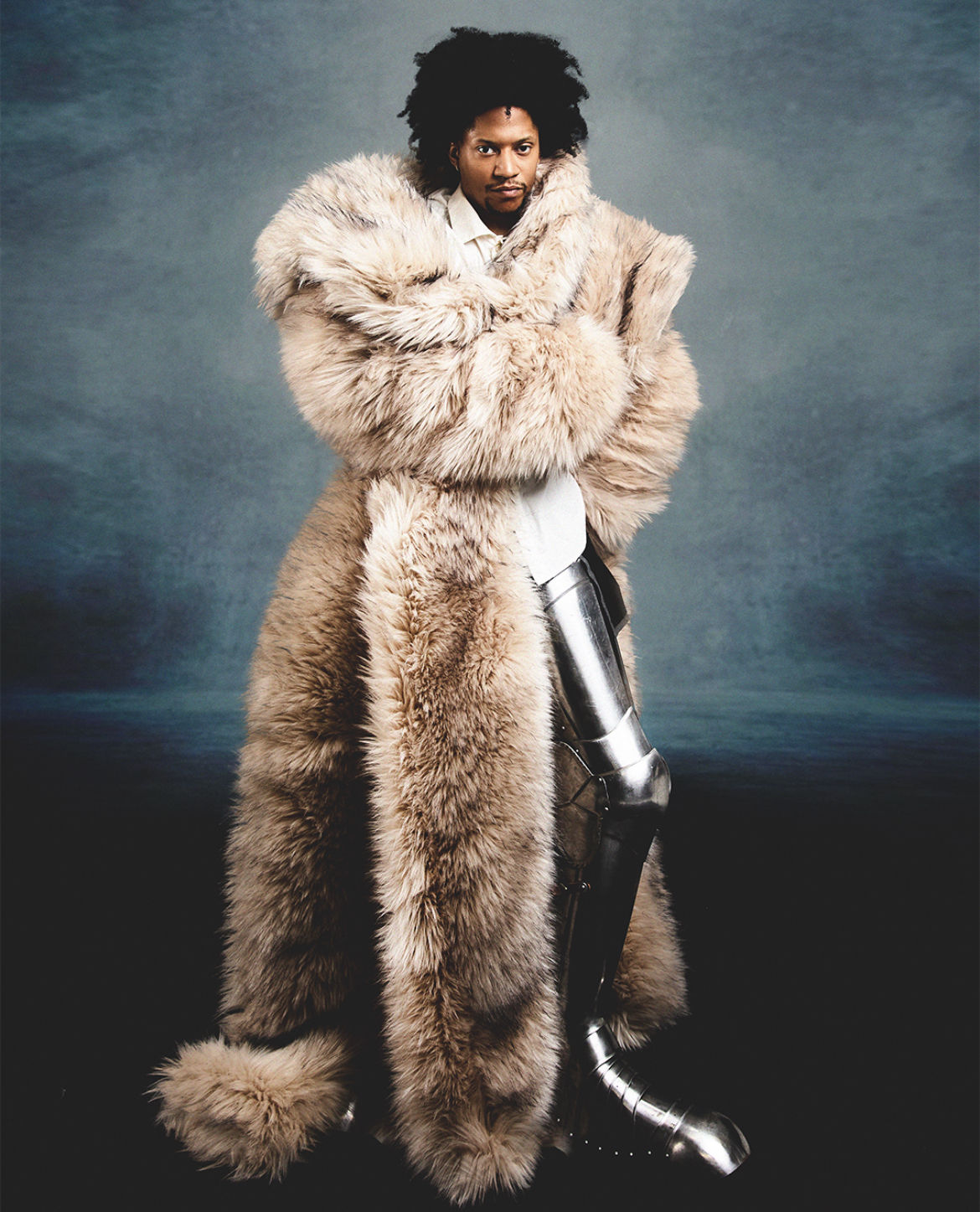
What song on the album means the most to you?
Under My Skin (feat. Nono Black) because I remember that session and it was smooth. The beat was made and I was like “let me try something”. I tried it and it was pretty fire. And then, or, either, either under my skin. If not that song, then ‘AftaParty’ because the first verse is Kay's verse. Kay was like, “You should rap my verse.” And I was like, “Alright, cool”. We were in the studio together, and we made the song together. It felt right. This is a special song to me.
Reflecting on your most recent tour, were there any unexpected moments that's reshaped your perspective?
I didn't expect people to like ‘IS MY MIC ON’ that much. Every time I played ‘PIMP Freestyle’ which really is a freestyle like you just saw the heads bopping, you know, because there was like a pause in between the song before, where I break to cool down. But then once the beat hits, you see the crowd moving their head, and then side to side. I'm like, okay, like, I did my job
Is there a moment in the album where you delved into your identity?
I spit a few Creole bars and try to sprinkle a little bit more of my identity. I would say, ‘Is My Mic On’ is the one song where I'm 100% me. This is like, let's talk about my past, let's talk about where I want to go and let's talk about me identity. Every song to me sounds better in English, completely in English. But when I blend English and Creole, I feel like it's just like a unique touch of mine. I just want to find a way to be creative and have my own identity when it comes to being a rapper, and that's pretty much why I do it, and that's why the English and Creole works well.
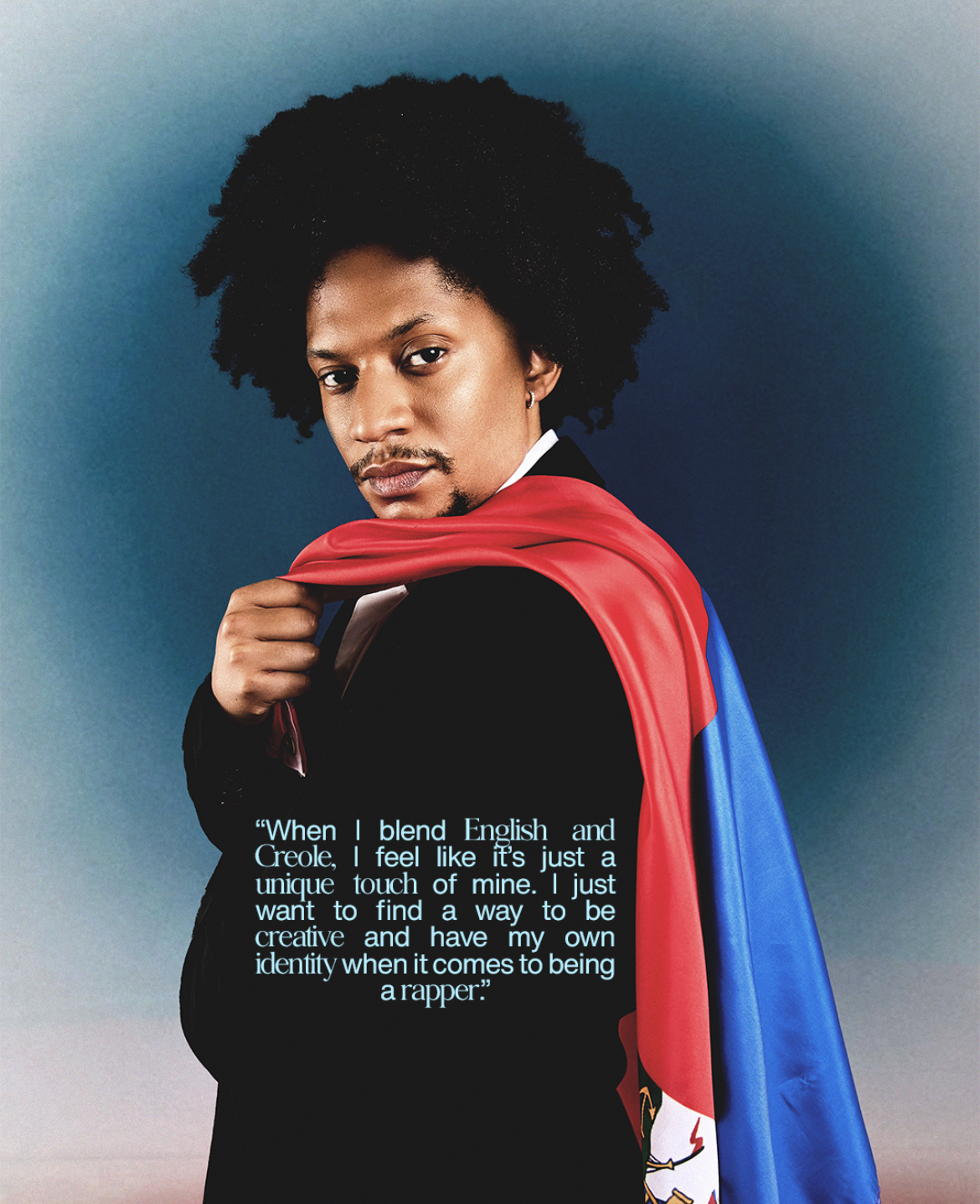
Do you think bounce as a genre carries the essence and influence of like 80s music?
I think it does, especially like when you talk about songs like ‘PROLLY US’. I remember showing my Dad that song for the first time, and he was like “Yo, this is about to be a hit. This about to be crazy”. He never really reacts to any of my music like that. But on bounce, Kaytranda’s drums are the music - his instrumentals are Caribbean inspired, and it carries a lot of the Haitian roots in there. It’s not like I'm doing trap music. It's not American. It's not Canadian sounding. The music is like a representation of what a kid from the suburbs of Montreal would listen to when they’re inspired by J Dilla, Karriem Riggins or Madlib.
What's the mindset do you normally have to get in make sure that you're in that creative zone?
I have to listen to a lot of beats and then once I hear the beat that makes me feel some type of way about it. I'm not going to rap on any beat. It has to be special. Once I feel that special spark, I start toplining, which is where you lay down the flow of the song, or how you want to rap something. Then come the lyrics once that’s locked in.
Now that you put the album out this year what is the next step in terms of evolving your sound and where do you see yourself going with your music?
I would love to be in sessions with other producers, and other artists and instrumentalists, so I can soak up the most knowledge I can before it's too late. Rap has an expiry date, and you have a few years if you're not unique with your shit.
Credits
Photographer: Clare Setian @claresetian
Creative Director: Clare Setian @claresetian and Zekaria Al-Bostani - @zek.snaps.
Producer: Seneo Mwamba @seneomwamba
Hair stylist : Gaia Bezbradica @gaia_maua
Grooming: Afsha Kabani @afshaartistry
Stylist: Josh T Arimoro @joshtarimoro
Movement Director: Ayanna Birch @ayannabirch_
BTS: Naomi Nwabuisi @naomivds
Creative Assistant: Whitney Sanni @its.whit_
Writer: Josh Clubbe @joshclubbe
The kora is one of the most mesmerizing and sophisticated musical instruments in the world. A hallmark of West African heritage, the kora is a 21-stringed instrument that bridges the worlds of harp, lute, and bridge-harp in both form and sound. With its cascading, ethereal tones and intricate playing technique, the kora occupies a sacred space in the musical traditions of the Mandinka people, and its hauntingly beautiful sound continues to captivate global audiences.
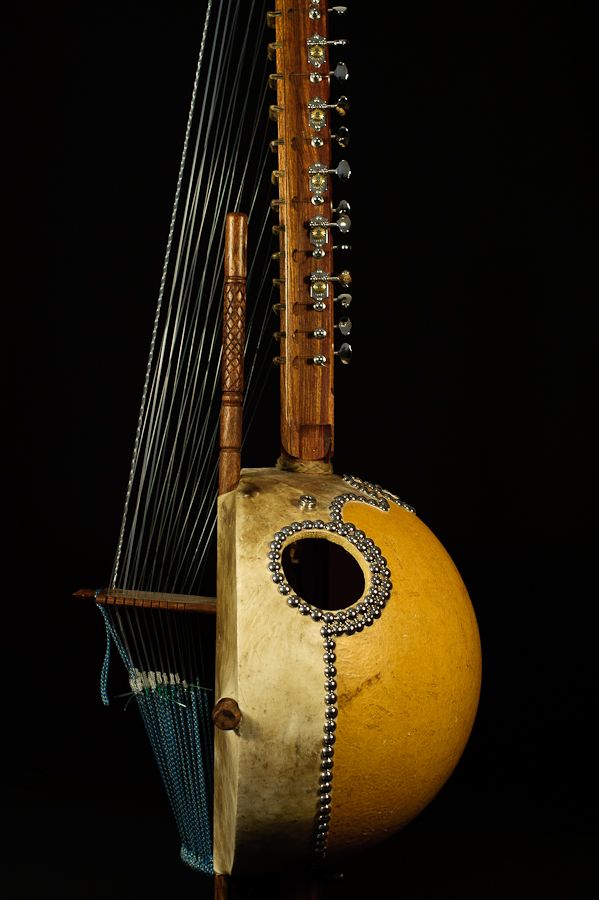
The instrument is traditionally associated with the griot (jeli) caste – hereditary musicians, historians, and storytellers responsible for preserving and transmitting oral histories across generations. According to legend, Jali Mady Wuleng Cissoko was the first person to play the kora, and the first piece ever performed on it was "Kelefaba", a song still regarded as foundational in the kora repertoire.
Though deeply rooted in Malian, Gambian, Senegalese, and Guinean culture, the influence of the kora has spread throughout West Africa and beyond, representing a profound expression of identity, memory, and spiritual connection. It's a 21-stringed, harp-like instrument, constructed from a large calabash gourd and a long wooden neck, with strings traditionally made of antelope hide but now often replaced with nylon.

What makes the kora unique is its bilateral playing technique. The musician plucks the strings using the thumb and forefinger of both hands while gripping the hand posts on either side of the neck. This allows for polyphonic textures and complex interlocking rhythms. The kora is far more than a musical instrument—it is a vessel of history, used to accompany epic tales, praise songs, and moral teachings. Griots would sing of ancestral lineages, battles, and local legends, all while weaving together intricate melodic patterns on the kora.

In many communities, the kora is believed to possess spiritual power. It is often played at ceremonial events, including births, weddings, and funerals, where its music serves to connect the physical and spiritual worlds. Its sound is often described as hypnotic, meditative, and transcendental. Though once confined largely to griot families in West Africa, the kora has achieved increasing international acclaim. Artists such as Toumani Diabaté, Ballaké Sissoko, and Seckou Keita have introduced the instrument to global audiences through collaborations with Western classical, jazz, and pop musicians. One notable recent example is the album "African Rhapsodies" by Seckou Keita in collaboration with the BBC Concert Orchestra. This groundbreaking project beautifully fuses the intricate melodies of the kora with sweeping orchestral arrangements, demonstrating how this ancient instrument can adapt to and elevate contemporary music genres.
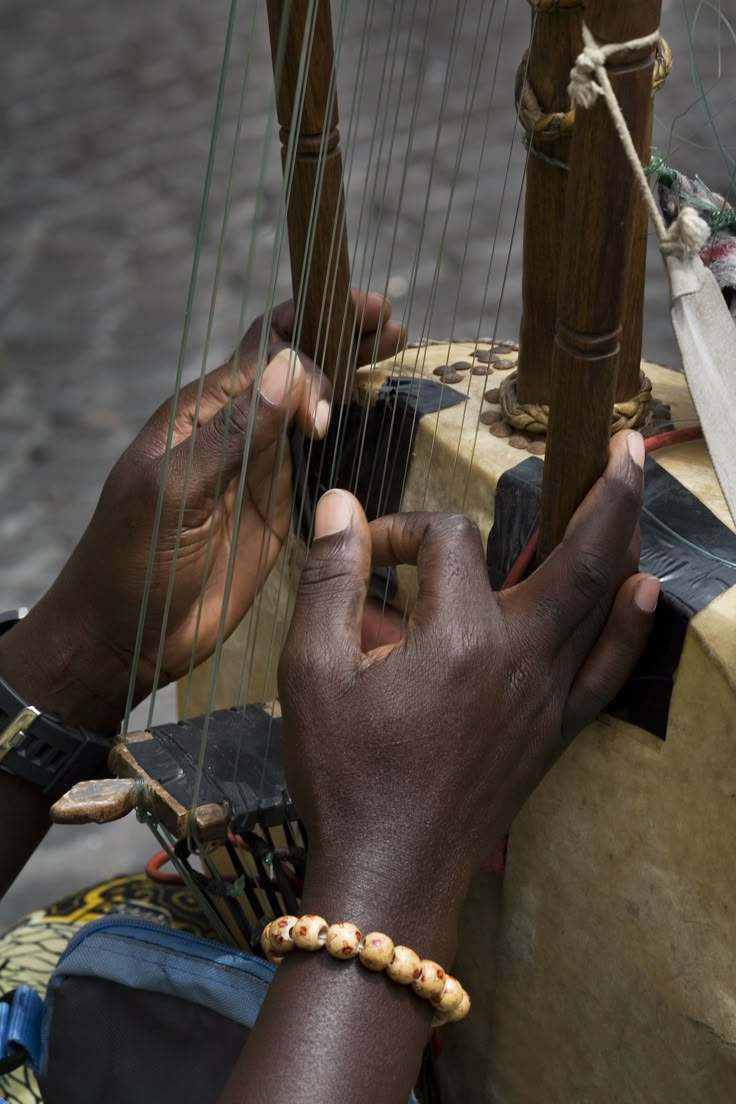
The kora is a story, a philosophy, and a living link to Africa’s musical soul. Its warm, cascading tones continue to inspire musicians and listeners around the world. As it finds new life in global fusion projects and mainstream music, the kora stands as a testament to the enduring beauty and relevance of Africa’s cultural heritage and with more platforms embracing diverse sounds, now is the time to elevate the kora’s visibility and cement its place as one of the world’s most expressive and enchanting musical instruments.
When it comes to R&B talent in Canada, Aqyila is a name that cannot be overlooked. Among the likes of Savannah Ré, Dylan Sinclair, and CHXRRY22, Aqyila's presence has transcended borders, bringing a fresh sound to the genre that feels both intimate and expansive.
Press play on her debut album Falling Into Place, and you're immediately transported. The opening track, "Give Me More," sets an ethereal tone that carries throughout the 11-track project. Featuring two of her viral singles, "Bloom" and "Focus," alongside the previously released "Wolf" and "Limbo," the album maintains a gentle yet intentional flow. "The entire album is a seamless flow of positive emotions," Aqyila explains. Threading through themes of heartbreak, self-love, longing, and empowerment, Falling Into Place showcases a sonically and lyrically evolved artist, one who has grown significantly since her previous EP and early releases.
We caught up with Aqyila to discuss the creation of the album, what it means to go viral, her approach to live performance, and what's next.
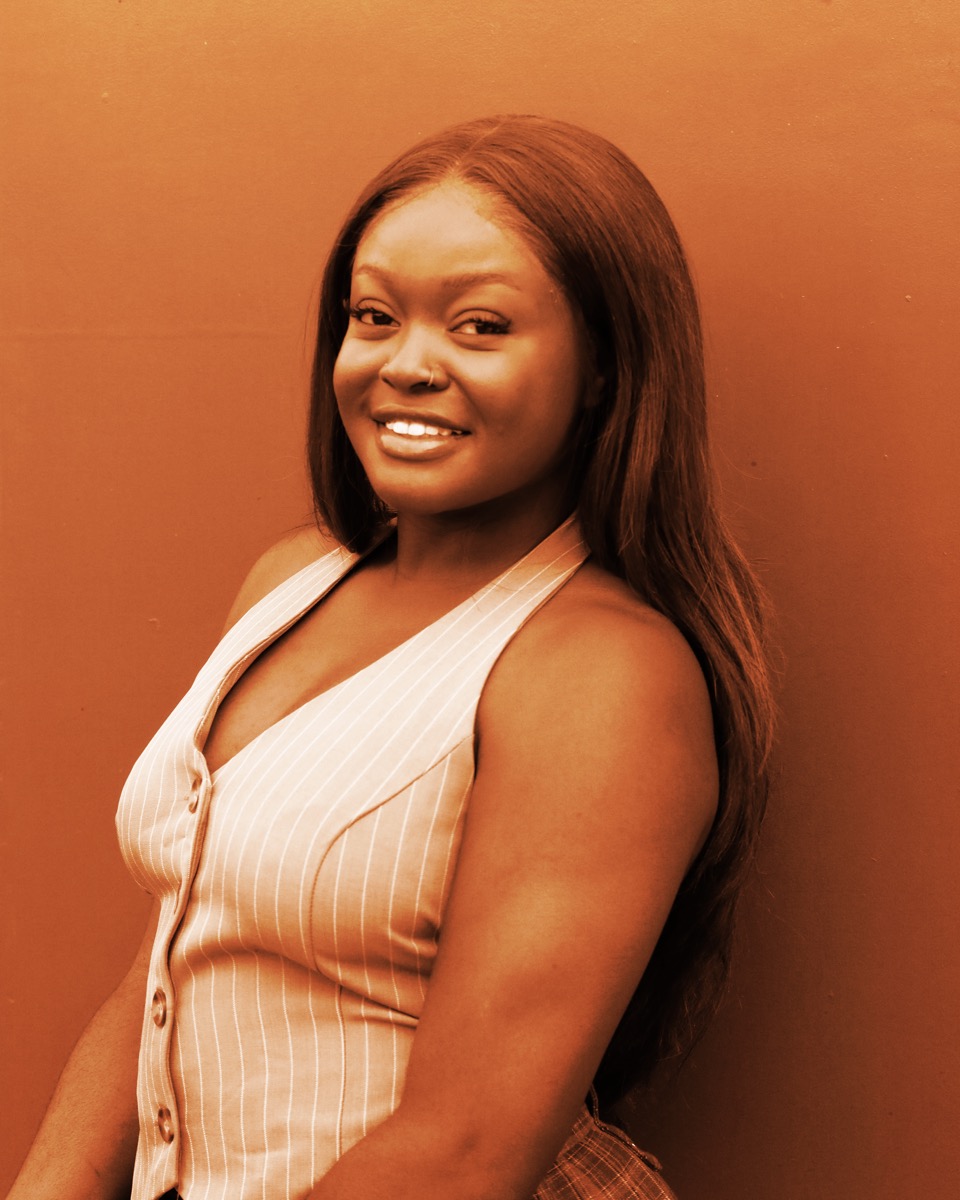
Having put out your debut album, what about this was different compared to your last EP, For The Better?
Making the EP, I still didn't know what I wanted to really share with people, what I wanted to say in the music or how I wanted it to make people feel. At first, it was really going off vibes. However, with this album, I was very intentional with the songs I picked. I knew I wanted songs that I actually love, which I won't get tired of performing. It feels like an easy listen from top to bottom. I'm somebody who listens to other people's music and critiques it, so I wanted to make sure that when people listen to this, they're going to enjoy it from beginning to end. It's a nice Sunday-type album, you can play it while cleaning your house, when you're in a good mood, or when you have friends over.
You open the album with “Give Me More,” which sets the tone for the rest of the album. How did you select that song to be the one to start the album with?
I created that one on my first and only trip to Atlanta. During my session, when we were working on the song and the producer was adding in birds and all those different layers, including the strings, I had already told my A&R that this song would be opening the album. I’m a huge fan of high-quality production and incorporating texture and other elements into it. I want actual movement in the song as it progresses, especially when it starts to build. So I really loved that intro.
In terms of the production of the album and that aspect of things, what was the intentionality in the process of what you wanted it to sound like and what you wanted that to be?
I wanted people not only to hear the words but also to feel the emotion that I’m putting into the mic. “Give Me More” makes me want to melt, especially with that riff right before the hook; it’s just so pretty and soft. That’s how I felt when I was singing in the studio, and every time I sing it, I’m just smiling. The entire album is a seamless flow of positive emotions. You do have songs where I’m talking about heartbreak, like doubt and questioning things, as seen in “You Got Comfortable,” which, for me, I knew was going to be an interlude on the album. That one came about in a session that was not even supposed to be a session. So a lot of the album went with what I was feeling and how I wanted it to paint a rounded picture in terms of its sound.
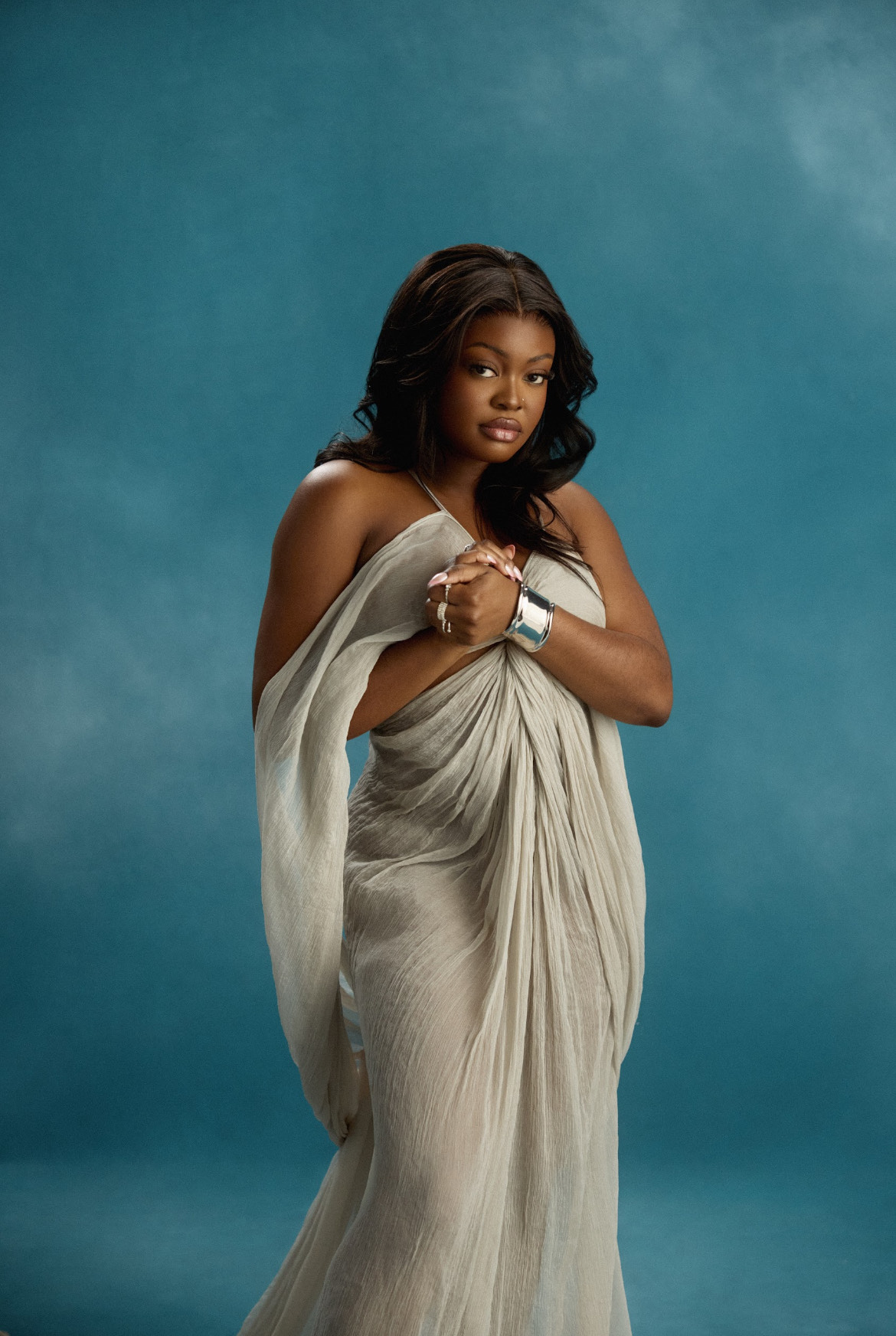
How did you find the process of making this album compared to your first EP?
When I made my EP, it was my first body of work in general. And when you’re in the studio, especially in the early days, you’re going to be a bit more shy because it’s a new environment for you. You may not always feel comfortable speaking up and sharing your feelings about certain things. However, for the album, from then and now, I’m much more confident in my voice, what I want, and how I feel about things. Like, if I feel we’re sitting on something and it’s taking too long to come up with an idea, or I don’t feel strong about it, I say, let’s start something different. My confidence has grown significantly. My lyricism, as well as my singing style, has evolved even further, which is amazing. I’m able to project my voice much more, which helps when working with vocal coaches and when learning to practice and train my voice effectively. The process of using my voice more effectively and growing in my ability to create the album was truly beautiful. I really enjoyed creating the album.
And even though you yourself have grown from the EP to this time in making the album, what would you say have been the growth moments you’ve experienced personally?
I’ve trusted myself more, which has led to significant improvement, and I’ve become less preoccupied with my thoughts, allowing me to take action more easily. On this album, what also helped was having a creative director. I worked with Priya Minhas; she’s from the UK, and she’s amazing. She worked on the album and did an incredible job of helping me curate a vision into a tangible, physical form. Seeing my art take physical form has made me think about what I envision conceptually for the next one. Seeing more of my creative ideas come to life has made me more aware of what I can actually do and less afraid to put things out there.
The creativity of the album is very strong throughout—from the artwork and aesthetic to the incorporation of birds and flowers and everything we’ve seen so far. Was that something that came as you were making the music, or was that something that you thought of later in how you wanted to represent the album as a whole?
It was definitely after the fact when I could see where it was going. I knew for sure I was very much into the whole feminine goddess feel, that Grecian vibe. That’s why in “Soar,” when I see that visual, I have a really flowy dress, looking very soft and feminine. Those elements were ones we wanted to lean into because a lot of the music felt very lush and goddess-like. That was definitely a theme we wanted to tap into, just from the essence and feel of the album and what the music sounded like.
How do you find your creative inspiration? Where would that process start for you?
I create numerous Pinterest boards for content ideas, styling, and various other purposes—even outside of music. That’s where it tends to begin for me in any aspect. And that’s how my whole journey started. I went to Pinterest, downloaded the images, and added them to my vision board. I use it to get a feel for a world that I really want this project to live in and then build it from there.
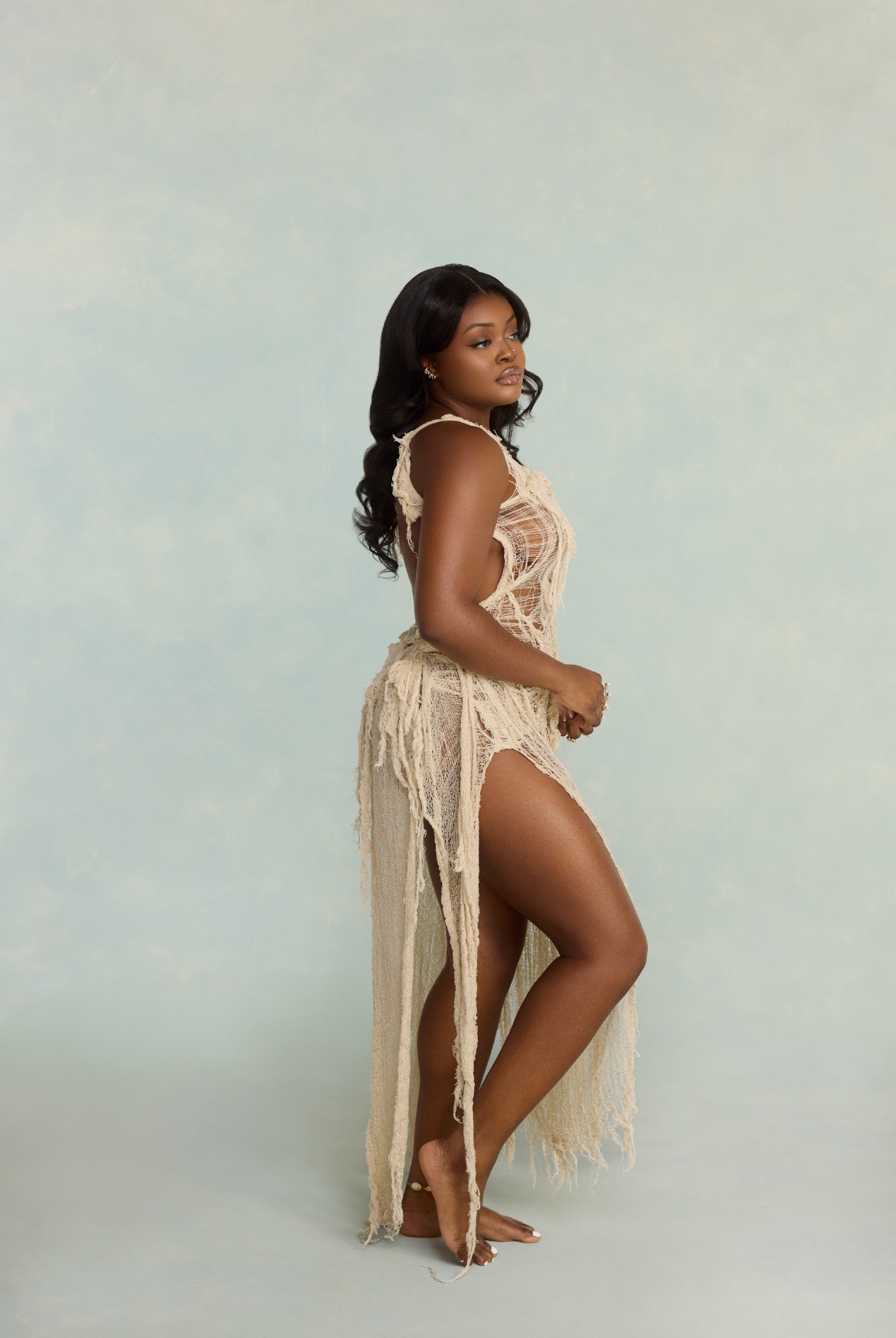
How do you find your musical inspiration in relation to the different types of music that you listen to or even may want to incorporate into your own music?
I listen to a wide range of music all the time, and for me, it’s more about the feeling I connect with. For example, when I listen to someone like Jhené Aiko, I love the way this makes me feel. It’s very soft, very sweet, and introspective. That might be something I want to do, but it’s not necessarily the sound that I’m hearing. It’s more about the feeling, and that’s when I’ll get inspired. Then I’ll pick up my mic and start recording and writing on a beat or something at home. Additionally, when I’m in sessions with other writers, I can always take something from what they bring out, and that might inspire something within myself. Also, traveling is one of my favorite experiences.
Having gone through the experiences and process of making the album, how would you describe the space that you’re in now? What would you say is your current space?
I am continuously evolving and growing. I recall being extremely nervous in my early days about performing, giving interviews, and interacting with people. However, right now, I’m just evolving and learning. Even now, when I think about something like social media—which is the one thing I am trying to tackle—it’s so interesting because people ask me, “How did you make your songs go viral three times?” I don’t know; I wish I knew. I was sitting in front of my camera, putting the lyrics on the screen, and somehow, it just connected. But then I’m also balancing that feeling—thinking that every time I post, this one’s going to be the one that goes viral—because then I start not to enjoy social media. So it’s just staying connected to the feeling of loving these songs no matter what. And if it’s going to connect with somebody, that is the goal. If it connects with hundreds of thousands of people, that’s even better. But my music ends up finding the right people anyway.
What can we expect from the live show?
I’m excited to build the flow of the setlist, especially with a live band—like drums and guitar—and really be able to sing all of these songs live. It’s great because it’s also really R&B, so I can get really soulful with it now. What I love about live shows, too, is that it’s an artistic way to take a different approach to the song. So it’s not the same. Maybe there’s a sick step-up in the song, or there’s a key change, or, you know what I mean, things like that. Those types of elements—other songs, they blend other stuff—yeah, stuff like that. That’s my vibe.
For anyone whose first introduction to you might be through listening to this album, what do you want them to take away from this album and who you are right now?
The title itself, Falling Into Place, suggests that we’re all on our own journeys, and we don’t have all the pieces of the puzzle like life. Oftentimes, we take a turn and do something different. The songs on there are really relatable. There is relationship content on there, and there are moments that promote self-love. And then you’ve got the moments about love. Overall, these are excellent moods that people feel, much like human emotions, which can evoke a range of different feelings.
What are you most looking forward to in terms of the next chapter of Aqyila’s journey?
Creating more music, performing it, and making new connections in life—whether with friends, artists, songwriters, producers, and so on. I want to build a really strong sense of community around me with people who just vibe—vibe with the music, come out to the shows, and want to do the meet and greets. Things like that are my next goal: to really build that.
There's something about a tour finale that just hits different. Maybe it’s knowing this is the last night, or maybe it’s the way the crowd and artist feed off each other’s energies when everyone is fully present. Whatever it was, when Coco Jones took the stage at Camden’s Roundhouse to close her “Why Not More” European Tour, you could feel it in the room. This was going to be special. And boy, were we there to witness and bring you all the gist.

Draped in a dazzling red jumpsuit that caught every stage light like scattered diamonds, Jones commanded the historic venue with the confidence of an artist who has finally stepped into her full power. For those who witnessed her debut London show at KOKO back in 2023, the transformation was undeniable. The promising talent who graced that more intimate stage has evolved into a fully formed performer.
The Grammy Award-winning songstress has travelled a road less straightforward than most. From her early days as a Disney Channel actress to years of navigating an industry that didn't always know what to do with her immense talent, Jones has emerged on the other side with something to prove and the skills to back it up. Her debut album "Why Not More?" was a statement of arrival, and this tour served as its victory lap.
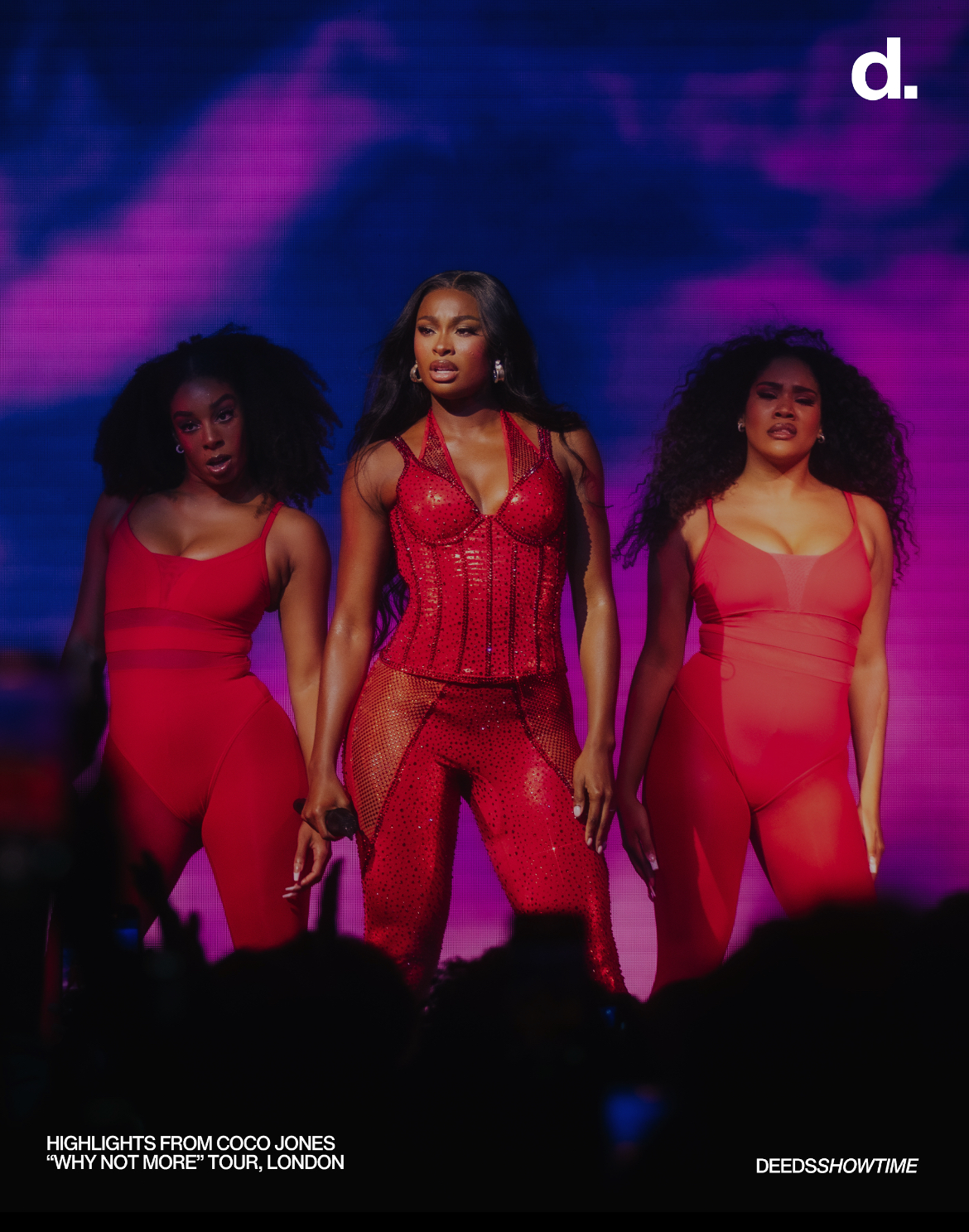
The production choices for the evening were refreshingly minimal, allowing Jones's raw talent to take centre stage. A pair of impeccably synchronized background dancers flanked her throughout the set, their movements adding texture without distraction. Behind them, a raised platform and dynamic backdrop projected shifting visuals that evolved with each song's emotional landscape, creating atmosphere without overwhelming the performance itself.
What truly set the evening apart was Jones's vocal performance. The setlist was a carefully curated journey through her catalogue. "Hit Me Where It Hurts" landed with the emotional weight it demands, while "Nobody Exists" and "Caliber" showcased her ability to navigate complex melodies with ease. "Double Back" got the crowd moving, it was an evening Jones delivered uptempo energy as convincingly as she handled ballads.
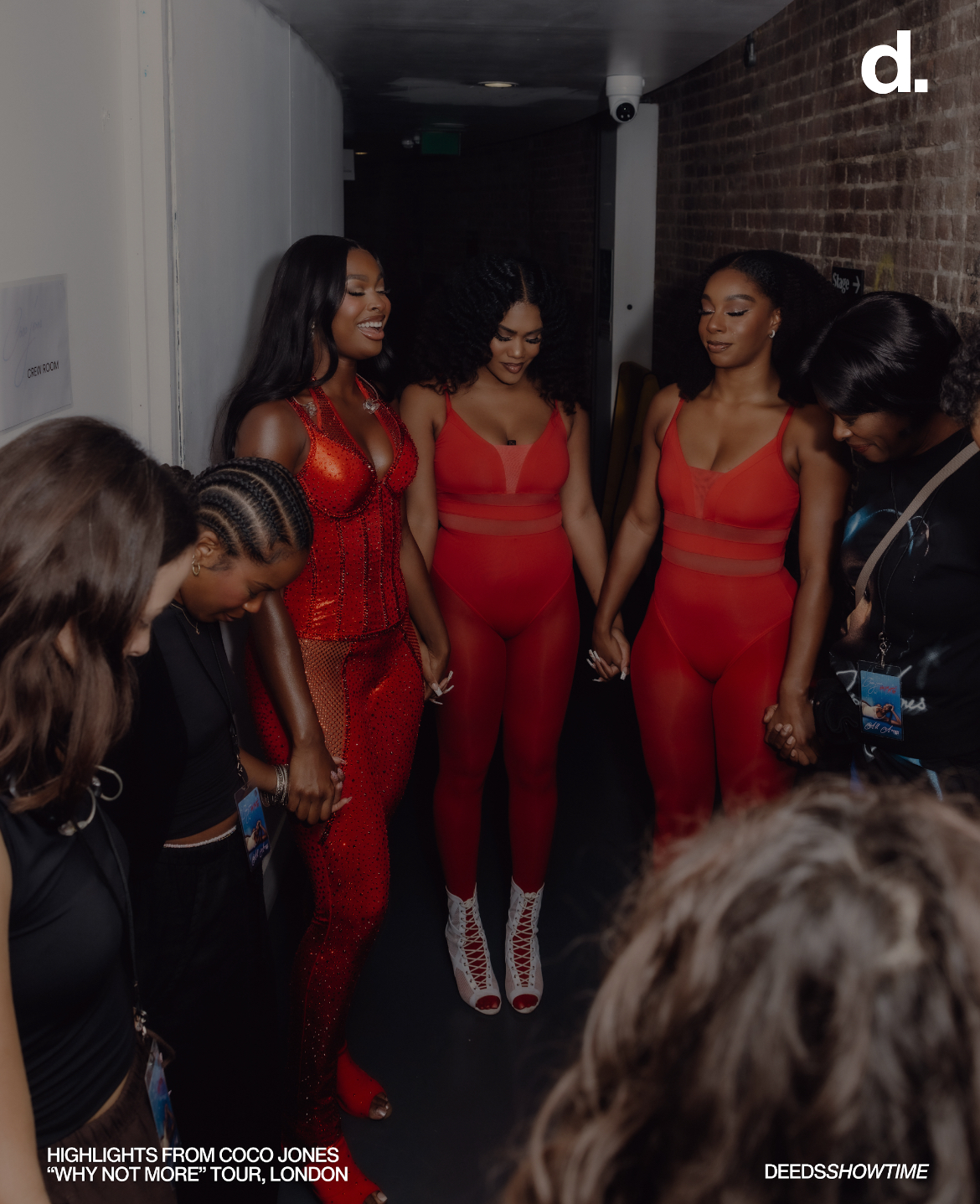
What resonated most deeply, perhaps, was Jones's genuine connection with the Camden crowd. Throughout the evening, she expressed heartfelt gratitude for the London audience's support, her appreciation clearly authentic rather than performative. This emotional vulnerability reached its peak before she performed "ICU", the Grammy Award-winning single that helped catapult her to wider recognition.

Coco Jones is not an artist to be underestimated. Her vocal prowess places her among the RnB elite, while her stage presence and artistic vision mark her as someone with staying power.

The "Why Not More" Tour finale at the Roundhouse wasn't just a great concert, it was a declaration. Jones has arrived, and she's here to claim her rightful place among RnB's brightest stars. For those who were there, it was a privilege to witness. For those who missed it, consider this your warning: the next time Coco Jones comes to London, get your tickets early. This is an artist on an upward trajectory, and watching her ascent is one of contemporary music's great pleasures.
Adekunle Gold has long established himself as one of African music’s most versatile figures—an artist who thrives on evolution. At every stage of his career, he has resisted creative stagnation, constantly reinventing himself through sonic shifts, aesthetic rebranding, and a restless pursuit of new frontiers. His discography, from Gold to About 30, Afro Pop Vol. 1, Catch Me If You Can, Tequila Ever After, and now Fuji, reads like a gallery of distinct eras, each with its own identity and sonic signature.
With Fuji, Adekunle Gold does not merely experiment—he takes a daring leap into the heart of one of Nigeria’s most iconic genres, extending the lineage of Alhaji Sikiru Ayinde Barrister and the Were traditions that birthed it. The 15-track project is a rich exploration of Fuji’s percussive core, filtered through Adekunle Gold’s modern sensibilities and global outlook. It is both homage and innovation: a body of work that seeks to preserve Fuji’s essence while testing its elasticity through fusion with contemporary sounds and collaborations across borders. Contributions from an eclectic cast—Lojay, Shoday, Davido, Don Toliver, 6lack, Asa, Cruel Santino, Simi, Robert Glasper, Soweto Gospel Choir, Mavo, Tkay Maidza, and Yinka Ayefele.
The opening track, “Big Fish”, immediately sets the tone with a Sakara sample from the legendary Lefty Salami Balogun. Adekunle Gold frames the record as a personal reflection on his journey from modest beginnings to the global stage—while the production continually morphs, layering synth motifs over shifting drum sequences. Fuji, at its core, thrives on rhythm, and that rhythmic insistence comes alive on “Don Corleone”. Heavy percussion drives the record, a masterclass in layered drum programming that embodies Fuji’s pulse. The subtle but powerful addition of background vocals from Simi softens the density of the drums, adding a wholesome texture.
On the pre-released “Bobo”, featuring Lojay and Shoday. The track is a fascinating experiment bringing both acts into his world—Lojay’s smooth melodic runs and romantic sensibility colliding with Shoday’s streetwise cadences and Afropop flair, all draped over Fuji instrumentation. Adekunle Gold engineers a meeting point where styles don’t just coexist, but amplify one another. The album takes an intimate turn on “My Love is the Same”, introduced by a heartwarming exchange with his daughter, Deja. Here, Adekunle Gold grapples with the personal costs of artistry—constant travel, physical distance, and the strain it places on family life. Yet the track, tender in tone, serves as an assurance of unwavering love, grounding the larger-than-life sonic experiment in raw humanity.
For African indigenous elements to gain visibility and new audiences, gap bridging has to happen and Global fusion becomes a central theme as the album progresses. On “Believe”, Adekunle Gold reimagines Bill Withers and Grover Washington Jr.’s classic Just the Two of Us, weaving nostalgia with fresh intimacy. It’s a track that feels both familiar and new—an elegant nod to his earlier, soulful style while affirming his current artistic identity. “Love is an Action”, with 6lack, pushes the fusion further, merging Fuji-inspired percussion with hip-hop sensibilities. It’s a daring juxtaposition that proves Fuji is not confined to cultural boundaries, but can converse fluently with global genres.
One of the album’s undeniable highlights is “Many People”, where Adekunle Gold is joined by Yinka Ayefele. Beyond the nostalgia of revisiting Ayefele’s classic, the record is a cultural event in itself—reinventing tradition on a grand scale while celebrating Fuji’s enduring relevance which stands as both a tribute to history and a statement of continuity. Elsewhere, Adekunle Gold expands his palette with “Attack”, featuring Tkay Maidza, Mavo & Cruel Santino. A track rich with two-step Amapiano elements, its layered vocal arrangements and haunting chorus deliver a hypnotic, dancefloor-ready experience. Tkay’s eerie refrain, coupled with Cruel Santino & Mavo’s distinct direction contribute to a record that feels like a bridge of Mainstream Afropop & the Alternative scene, a well done collaboration.
Adekunle Gold’s chemistry with Davido resurfaces on “Only God Can Save Me”, a quintessential Afrobeats cut that tackles the dilemmas of love and dating in contemporary Nigeria. Despite both artists’ marital statuses, the track resonates with its universal relatability, encapsulating the push-and-pull realities of romance in a playful yet poignant way. As the project approaches its closing stretch, Adekunle Gold maintains momentum. “Oba” stands out with its Alujo-driven structure, where trumpet flourishes, layered claps, and intricate vocal textures converge into a vibrant, celebratory tapestry. It is a sonic feast that reaffirms the album’s ethos: tradition as a living, evolving force rather than a static relic.
One of the most striking features of Fuji lies in its production—an aspect that feels deeply intentional. Adekunle Gold has mentioned being particularly hands-on throughout the project’s creation, and that personal involvement radiates through the album’s meticulous arrangements and sonic cohesion. A prime example of this is “Simile”, featuring the Soweto Gospel Choir. The track opens with delicate string progressions—pianos, cello, and violin intertwining in graceful conversation—before the choir’s harmonies enter, transforming the piece into something transcendental. The production is cinematic in scope; that it feels like immersion into a live orchestral performance. Following this grandeur is “I’m Not Done”, which closes the project with introspection and grace. The song takes on a soulful direction, both thematically and musically, with subdued yet powerful instrumentation underscoring Adekunle Gold’s reflective tone. Here, he revisits his journey from his debut, confronting the passage of time while reaffirming his vitality and creative relevance. Despite its reflective nature, this is not a farewell record—it’s a declaration of endurance, a testament to his growth, resilience, and unrelenting drive to keep pushing boundaries.
At a time when African music’s global visibility has reached unprecedented heights, Fuji arrives as both a statement of pride and a lesson in cultural preservation. The world’s eyes are on the continent, and Adekunle Gold seizes that moment to project one of Nigeria’s most authentic indigenous sounds onto the global stage. Yet, what makes Fuji remarkable is not just its revivalist spirit, but its sophistication. Adekunle Gold doesn’t merely pay homage; he redefines the genre by merging it with modern production techniques and cross-continental collaborations without diluting its essence. This album stands as a cultural artifact—an exhibition of how traditional African forms can live, breathe, and evolve within contemporary frameworks. Fuji is not content to exist within nostalgia; it’s an expansion of what the genre can be in the 21st century.
Ultimately, Fuji cements Adekunle Gold’s place as one of modern African music’s most visionary figures. The sequencing is flawless, the production intentional, and the storytelling coherent—each song seamlessly leading into the next, creating an unbroken emotional and sonic narrative. It’s a no-skip project that engages, excites, and educates, all while reaffirming the power of indigenous sound in a global context. With Fuji, Adekunle Gold makes a statement, one that will undoubtedly be remembered as his magnum opus.
If the world reinforces white dresses, a child somewhere with dreams of the pink, posh, and proper wedding. For Monaleo, the Houston-born rapper, singer and songwriter, that dream now shines with grills in her teeth and Black excellence wrapped around her like a crown. At 24, the artist affectionately dubbed “the people’s princess” is defining Black femininity on her own terms while being culturally uncompromising.
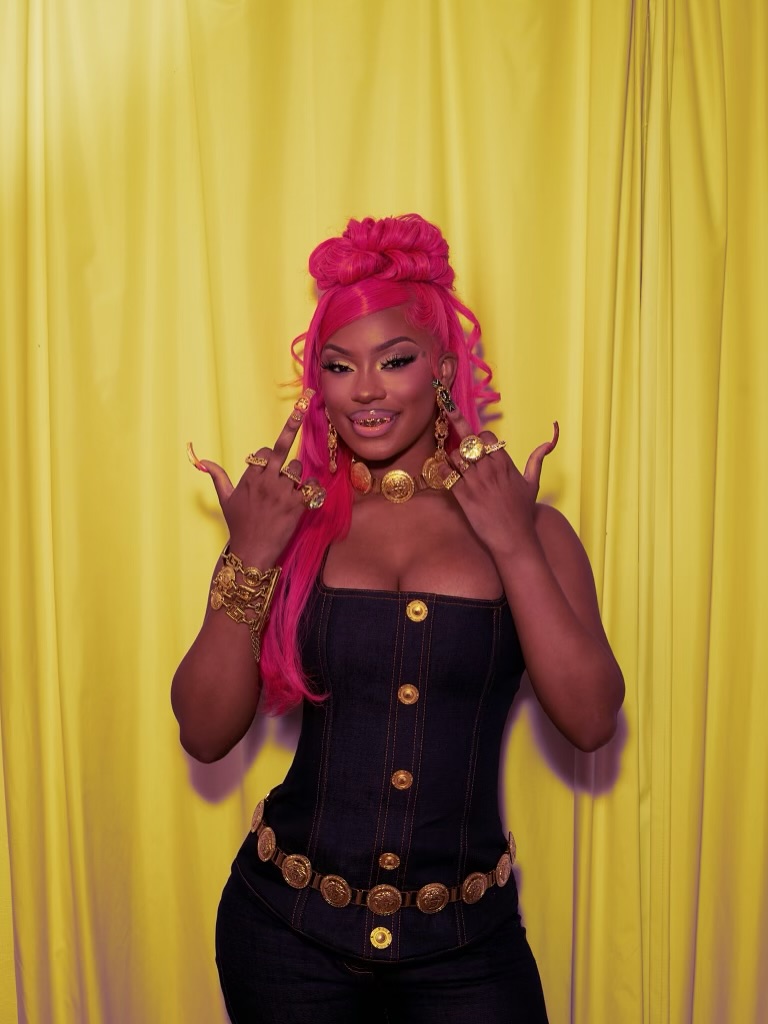
Monaleo, born Leondra Roshawn Gay, began releasing music in 2020, turning heartbreak into breakout success. Her debut single “Beating Down Yo Block,” produced by Merion Krazy, went viral in 2021, sampling Houston legend Yungstar’s “Knockin Pictures Off Da Wall” and anchoring her voice in Southern rap tradition. She followed with “Girls Outside,” a fierce declaration of self-worth built on OG Bobby Billions’ “Outside,” and “Suck It Up,” which paired slick bars with emotional honesty. By 2023, she released her debut album Where the Flowers Don’t Die, featuring Flo Milli, and a year later dropped Throwing Bows, a collaborative EP with Stunna 4 Vegas, Sauce Walka, and Kaliii.
What distinguishes Monaleo, however, is not just her music, but her insistence on making artistry a vehicle for cultural pride and community affirmation. She has spoken candidly about surviving suicide attempts and navigating mental health, giving Black women space to see themselves reflected in moments of fragility and resilience. In May 2023, she gave birth to her first child, Khalick Anthony Caldwell II, with partner Stunna 4 Vegas, whom she married in September 2025.
Even amid personal milestones, Monaleo turns her spotlight into a classroom for cultural education. While on honeymoon with her husband, she released Sexy Soulaan, a sharp, magnetic record that reclaims Black American heritage with a rare sense of urgency. The title itself invokes “Soulaan,” an identity term used by Black Americans, before and after colonization in the United States. In the song and video, she centers Hoodoo rituals, the Black American Heritage Flag, and communal imagery of the cookout, layering in both ancestral tradition and modern swagger.

“Sexy Soulaan” is about sovereignty. With lines like, “If you ain’t Black, stay the f--- out the business,” Monaleo challenges cultural appropriation and demands respect for boundaries around Black spaces. The video’s visuals— elders, family gatherings, symbolic gestures like sweeping and broom rituals turns a club-ready anthem into an archive of cultural knowledge. By embedding this into mainstream rap, she educates as much as she entertains.
Her wedding reinforced this philosophy. Monaleo jumped over a cinnamon broom, a practice with roots in West African traditions and survival rituals among Black people in America. She also appointed grandmothers as flower girls, adding new flair to generational celebration. These gestures, both tender and radical, illustrate her mission: honoring what came before while refreshing it for a new audience.

Critics have debated whether her blunt approach risks alienation. But that tension is the point. By choosing to be unapologetic, Monaleo embodies a model of Black excellence that resists dilution and insists on cultural specificity. For young listeners, particularly Black girls, she stands as proof that femininity, artistry and heritage are not contradictions but pillars of power.
Monaleo has always been about more than music. From her viral start to her most recent release, she has turned every stage whether a Houston street, a recording booth, or a wedding aisle into a platform for collective affirmation. By blending tradition with originality, and by merging personal vulnerability with cultural authority, she’s crafting a legacy that insists on the fullness of Black life.
If the world is looking for today’s princess of Black American culture, Monaleo has already claimed the crown and she’s wearing it pink, gilded, and undeniably her own.
Hennessy Cypher 2025 spotlights pan-African and global artists in a powerful new expression of sound, style and storytelling.
Hennessy, the world's leading cognac brand and a longstanding champion of music, has just dropped the much-anticipated Hennessy Cypher 2025. This launch affirms Hennessy's role at the forefront of global sound: one that successfully blends Hip-Hop, Amapiano and Afrobeats for the first time ever.
Featuring a powerful mix of artists from South Africa, Nigeria, Kenya, Ghana, Tanzania and the UK, this year's Cypher is a pan-African and diaspora collaboration that places Hennessy once more at the forefront of cultural innovation and sound evolution.
The Hennessy Cypher 2025 represents a unique blend of feats: it's a genre-fusing, gender-inclusive and boundary-breaking musical experience designed to showcase Africa's global influence and celebrate the diversity of expression. It also echoes the brand's 'Made for More' philosophy, a belief that when creativity meets culture, the result is always greater than the sum of its parts.
For the first time, the Cypher features female artists while merging Amapiano, Afrobeats and Hip-Hop into a single track. This bold move reflects both the richness of Africa's evolving soundscape and Hennessy's commitment to elevating underrepresented voices and redefining the concept of what a Cypher can be. Six artists widely known for their unique sound and style take centre stage: Kabza De Small, Femi One, Ms Banks, Blaqbonez, Jaivah and Joey B.
"At its core, the Hennessy Cypher is about creativity and passion for music," says Vincent Montalescot, Hennessy's global Chief Marketing Officer. "It is a true collective play, uniting artists who are disrupting genres and shaping culture, across Africa and beyond. As a master blender of talent and vision, Hennessy continues its long-standing relationship with Africa and reaffirms its commitment to championing African creativity on a global stage"
The music video for Cypher 2025 unfolds inside the Hennessy House, a metaphorical mansion where each room represents a different genre, rhythm and cultural movement. This symbolic creative concept brings to life the idea of co-existence over competition, where Hip-Hop, Amapiano and Atrobeats live side by side in a single visual and musical space.
Directed and produced in Cape Town, South Africa, the Hennessy House becomes a canvas for multicultural sound and continental fashion, transitioning from room to room in a sleek journey through a diverse musical landscape.
For over 50 years, Hennessy has been woven into the DNA of Hip-Hop. From Tupac to Snoop, Nas to Drake, the brand has been name-checked in over 4,000 songs, making Hennessy the most mentioned spirit brand in music history.
Experience the 2025 Hennessy Cypher here: https://bfan.link/hennessy-cypher
From South Africa, Kabza De Small is globally recognised as the King of Amapiano.
A pioneer of the genre, he was South Africa's most-streamed artist on Spotify in 2020 and 2024 and recently produced for international artists like Drake and 21 Savage for their It's a Blur tour. In the Cypher, he brings the authentic pulse of township sound, grounding the genre in local roots while elevating it to global prestige.
Representing Kenya, Femi One is a trailblazing rapper known for her Swahili bars and fearless commentary. She won Best Female Rapper at the AFRIMA 2022 Awards and rose to fame with the viral hit Utawezana. In the Cypher, she brings sharp lyricism and cultural authority, making history as one of the two first female artists and the first East African woman to take the Cypher stage.
Born in the UK to Nigerian and Ugandan parents, Ms Banks represents the fusion of diaspora identity and UK rap. She has collaborated with artists like Nicki Minaj and Cardi B and performed at Glastonbury, building a reputation as a fierce lyrical force and style icon. In the Cypher, she brings bold bars and international energy, becoming one of the two female artists and the first UK-based talent to feature in the series.
From Nigeria, Blaqbonez is known for his genre-fluid sound blending hip-hop, Afrobeats and pop. His critically acclaimed album Emeka Must Shine included collaborations with Ludacris and he earned a spot on Rolling Stone's Top Albums list, featured in its list of 50 Hip-Hop innovators shaping the genre. In the Cypher, he delivers sharp wit and boundary-breaking lyricism, representing a bold new voice in African rap.
Jaivah is a rising star from Tanzania known for fusing Amapiano, Bongo Flava and Afrobeats. His 2023 breakout hit Soup became a regional anthem and his latest single Kautaka is gaining traction across Africa, including Nigeria. In the Cypher, he brings experimental energy and East African flavour, expanding the sonic map of the performance.
Hailing from Ghana, Joey B is a rapper and singer celebrated for his effortless fusion of Hip-hop, R&B and Afrobeat. He's won multiple awards at the Vodafone Ghana Music Awards and has collaborated with heavyweights like Sarkodie, King Promise and Mr Eazi. In the Cypher, he brings his signature cool and cultural fluency, bridging underground edge with mainstream appeal.
CREDITS
Cypher music video directed and produced by Human Studio in Cape Town; styled by Bee Diamondhead.
Follow @Hennessy on Instagram, X and YouTube for daily updates.
ABOUT THE HENNESSY CYPHER
First launched in Nigeria in 2011, the Hennessy Cypher has evolved into a powerful platform for musical innovation and cultural storytelling across Africa and now the world. Known for spotlighting the continent's most disruptive voices, the Cypher celebrates lyrical mastery, bold expression and the spirit of progress.
Each year, the Hennessy Cypher brings together a curated lineup of artists who are shaping the future of sound, offering them a space to express, collaborate and represent their unique identities on a global stage.
The Hennessy Cypher is a statement of Hennessy's ongoing commitment to African excellence, cultural progression and the art of blending music, style and storytelling.
ABOUT HENNESSY
Founded on Richard Hennessy's pioneering spirit and with a legacy of over 250 years, the brand spans over 160 countries, but remains rooted in the Charente region in France. Beyond its iconic cognacs, Hennessy embraces cultural collaborations, evidenced through its many partnerships with visionary artists from around
the world. Over the years, Hennessy has worked with cultural icons in design, art, fashion and music to celebrate a diverse range of creativity to reflect the multi-faceted nature of the brand and to bring to life the Hennessy cognac’s versatility.
A snippet of the imminent video for Rema’s latest single, Fun, is currently stirring an outpouring of praise online. To illustrate the extent of the chatter it has stirred, the clip has garnered some 13 million views on X in a little over 48 hours. This goes to show how well fans have received the single, in which, over a glassy production that crests and ebbs like an ocean wave, he flattens chatter around his supposed beef with Omah Lay and expresses desire for a pause from the attendant headwinds of celebrity life. “Abeg pass me my cup/ I just want to have fun/ I no wan worry too much,” he sings wistfully. Despite the song’s slow tempo and introspective bent, which become more conspicuous when we consider it against Afrobeats’ current energetic state, dominated by songs like DJ Tunez’ One Condition and Fola’s You, Fun shot up the charts and holds the top spot on the Nigerian singles chart on Apple Music and Spotify. In less than a month of release, the song has racked up over 12 million Spotify streams.

The song’s arrival, a month after Kelebu, a riotous left-field track that reimagines the Ivorian sound Coupé-décalé, however, initially lent an awkward air to the song’s release. Pop artists and their teams, especially A-listers like Rema, typically plan and schedule releases months and sometimes years in advance, spacing them adequately for maximum impact. Rema’s Fun, however, arrived only two days after Kelebu’s video. Rema and his team appear to have been eager, maybe too eager, to move past the song. Why is this, and what interesting insights might we untangle from all of this?
Since its release, Kelebu has steadily tumbled down the charts even though the song was heavily promoted. At some point, it was all you could see scrolling through TikTok or X. The song’s experimental bent earned it infamy and generated conversations from the get-go. But what really catapulted the song to near ubiquity was the $10,000 (15 million Naira) Rema offered to the winners of a dance challenge for the song. Soon after he made the announcement, social media became saturated with whimsical choreographies to the song. Here’s where it gets interesting: the social media challenge became a phenomenal hit; not only did it monopolise the attention economy on TikTok, but it became one of the most talked-about topics on social media. And yet, the song continued to slide down the charts. The song has disappeared from most charts and is arguably Rema’s worst performing song of all time, but it left us with a trove of lessons.

In Wizkid’s Kese, he sings “Anything wey I drop dem go chop aje.” His tone is blithe, assured. His brag echoes a sentiment shared by many artists’ fanbases. If you’re active on social media, you’d probably have run into one too many zealots bragging that even if their favourite artist coughs on a beat, they’ll play it relentlessly. Once an artist crosses a certain threshold of stardom, it’s taken for granted that it’s impossible for a song or project by the artist to completely flop. The commercial performance of Kelebu shatters this assumption. To be clear, Rema’s case is different from a floundering artist: the singles before Kelebu were met with rapturous praise, as was Fun. Kelebu is a rare instance of the market emphatically rejecting a song by one of the most influential artists of our times. This makes it an interesting case study.
“Form follows function” is a modernist design saying that has permeated everyday vernacular. This phrase can be read in two ways. The first is that the appearance of an object should suggest its function. For example, the protruded handle of a doorknob suggests turning, which is how we get a door to open. The other reading of the phrase is more metaphorical and, by effect, more universal. It holds that every form inherently delimits the functionality of a device or structure. Which is a fancy way of saying that every “form” has its limitations. For example, while a doorknob can be turned to open a door, its form precludes other actions like flipping the door upside down, except that the door is faulty or intentionally designed to surprise people with this anomaly.
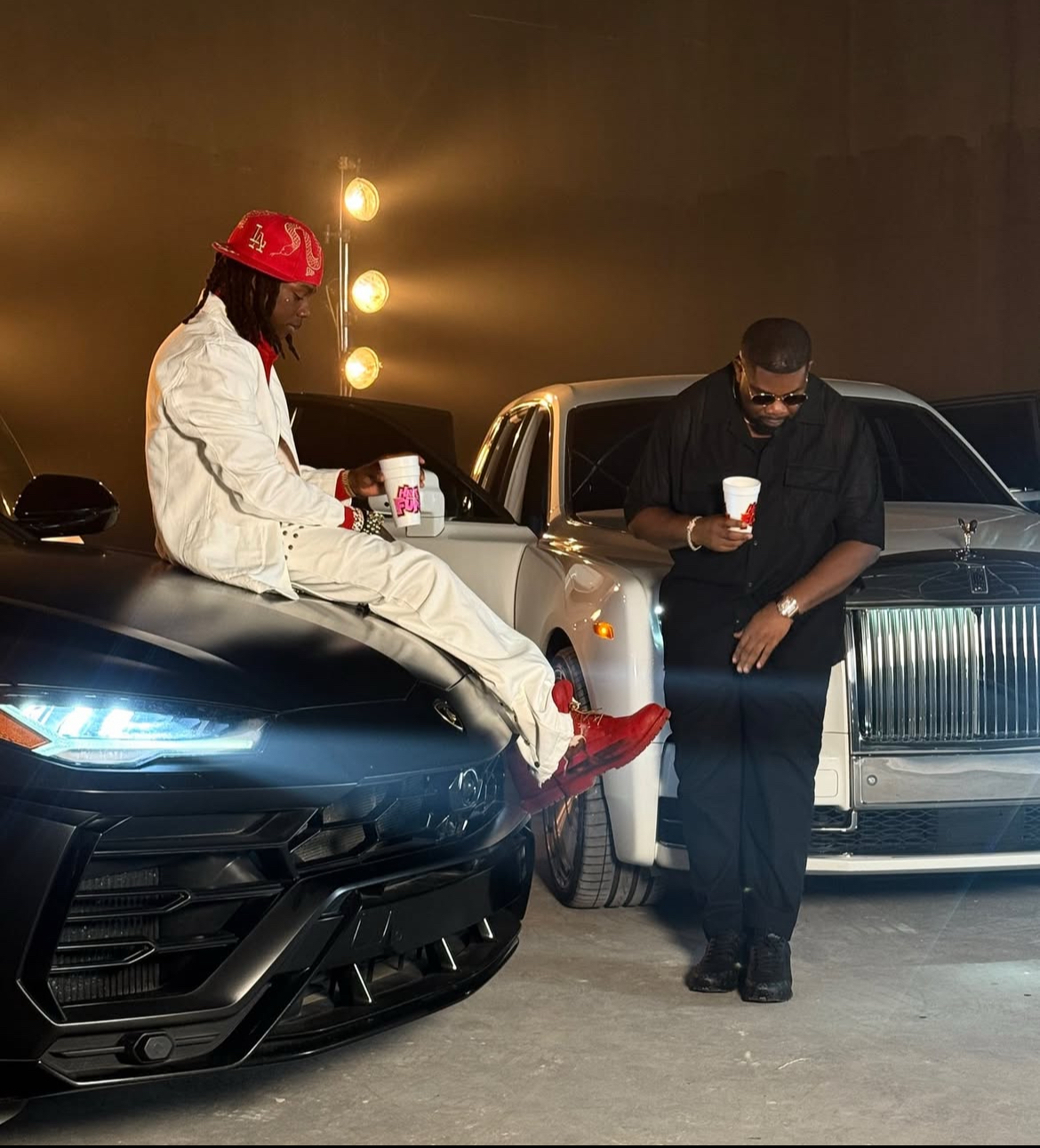
While this second interpretation of the saying is largely unassailable in the mechanical world, in the world of the arts, it’s less so. In fact, some of the most influential artists earned their reputations by subverting the art forms they practised. Take the impressionists, Paul Ceźanne, Van Gogh, Paul Gauguin, who usurped the then-iron-clad notion that the form of painting ought to render a literal depiction of life. Similarly, the modernist writers of the nineteenth and mid-twentieth centuries entirely pulverised and transformed various literary forms, poetry, the short story, journalism to resemble their amorphous ethos. Writers like Virginia Woolf and Joyce abandoned orderly narration to mimic the unfiltered flow of natural thought. T.S. Eliot and James Joyce likewise repudiated coherent storytelling in favor of fragmented narratives. In music, artists like Nina Simone and Bob Dylan disrupted their respective genres earning acclaim in the process.
Since last year, Rema has been on a mission to disrupt Afrobeats. His 2024 album Heis finds him deploying guttural chants and frenetic drums to this end. Similarly, Kelebu continues in this tradition, pushing the frenetic sound he conjured with Heis to a more intense register. The result is a song that excels at being a window into the possibilities Afrobeats can offer but has little commercial appeal. The reason for this is that while the song is exciting, it’s too jarring to sustain multiple listens. In the era of purchasing music physically, through compact discs or vinyl, Kelebu may have fared better. After all, the song is popular. But in the streaming era, which favours songs that are mellow enough to sustain repeated plays and blend in the background, Kelebu’s unfettered exuberance ultimately became its foil. If Rema demonstrated last year with Heis that subversion and commercial acclaim could coexist, with Kelebu, the lesson is that there’s a limit to which the form, Afrobeats, can be subverted before something, commercial success, begins to give.
In the world of Afrobeats, collaboration is more than a creative choice, it’s the heartbeat of the genre’s evolution, the recent partnership between Young Jonn and Wizkid on “Cash Flow” shines a spotlight on how intergenerational synergy is shaping Afrobeats’ next era.
Young Jonn and Wizkid’s “Cash Flow” is more than just a hit single, it’s a celebration of collaboration between two generations of Afrobeats stars. This track marks Young Jonn’s rise from behind-the-scenes producer to front-line artist, a journey endorsed by Wizkid’s powerful co-sign, proving that Afrobeats’ future is built on both legacy and innovation across Africa’s music scenes.
Wizkid’s co-sign remains one of the most influential endorsements in African music. His global stature and credibility don’t just amplify tracks, they elevate careers. When Wizkid lends his voice to Young Jonn’s “Cash Flow,” it’s more than a feature; it’s a powerful vote of confidence, signaling to the industry and fans alike that Young Jonn is ready to step out from behind the console and into the spotlight.
.jpeg)
For years, Young Jonn’s production fingerprints have been on some of Afrobeats’ biggest hits, helping craft the soundscape of a generation. But with “Cash Flow,” he’s transitioned fully into a front-line artist, proving that his talents extend beyond beats into compelling vocals and charismatic presence. This move is a clear declaration that Young Jonn is here to lead, not just support.
This collaboration underscores the vital role of intergenerational partnerships in Afrobeats. The genre thrives on the exchange between seasoned icons and fresh voices, blending legacy with innovation. Wizkid’s collaboration with Young Jonn bridges the gap between Afrobeats’ golden past and its exciting future, inspiring both emerging artists and audiences to embrace the evolving sound, and as one of Africa’s most influential musicians, Wizkid’s support serves as a powerful endorsement and highlights the strength of mentorship and unity within Afrobeats.
.jpeg)
Ultimately, “Cash Flow” is more than just a track; it’s a statement about the power of unity in African music. Through their collaboration, Wizkid and Young Jonn are defining a new chapter one where respect for heritage and hunger for growth exist side by side, ensuring Afrobeats remains a global force to be reckoned with.
There are artists who make music, and there are artists who build worlds. Una Rams belongs firmly in the latter. From his earliest days singing in a Venda church choir to earning a Grammy for his contribution to Black Coffee’s Subconsciously, his journey has been one of resilience, vision, and an unwavering belief in the power of love.
Over the years, I’ve admired how Una has refused to be boxed in by genre, weaving R&B, house, electronic, and hip-hop into a sound that feels at once universal and uniquely his own. To sit with him at this pivotal moment, as he unveils his debut album Meet Me At The Altar, feels like an honour. The project is not just a musical statement but also a love letter—to his wife, his culture, and to the idea that music can heal, preserve, and inspire.
In our conversation, Una opens up about the sacred roots of his artistry, the patience it took to bring this album to life, and the legacy he hopes to leave for both South Africa and the wider world.

You've been releasing music professionally since 2016, starting with your debut single "Nobody". Having stepped into the scene as a teenager, what was your very first contact with music? Who or what initially drew you in—and at what point did you realize this was more than a passion, but a career you wanted to chase?
My first contact with music was through the church—it's a place where I got to understand how music moves people. Seeing people burst into tears because something was just resonating within them meant there was this feeling, and it's a feeling I still chase to this day when I create. I remember being too young and too short to join the choir at church, but I got a Coca-Cola crate, stood on it, and sang with the ladies because my voice hadn't broken yet. That's how much I loved music itself.
With my older brothers in the house writing their own songs and recording on cassettes, it brought music so much closer to me and became something I could see as a form of expression. I didn't just have to hear songs from outside; I could make songs for myself. We tried to start a boy band, which allowed my imagination to soar. When we got a computer, my older brother got a demo version of EJ software, and I'd make beats on there. You just had to make the full thing and export because you couldn't save it, but that honed my skills as a producer.
After a couple of years making my own songs, I got to meet C-Tea, and he really saw something in me. He became the 40 to my Drake—this producer very much focused on building and developing my sound. He encouraged me to experiment on new tracks, and that opened my world up tremendously. I really found my voice in the time we worked together. I remember doing chores on Saturday mornings, imagining that the leaves in the garden were fans' hands reaching out while I performed. That vision for a career had been there all along.
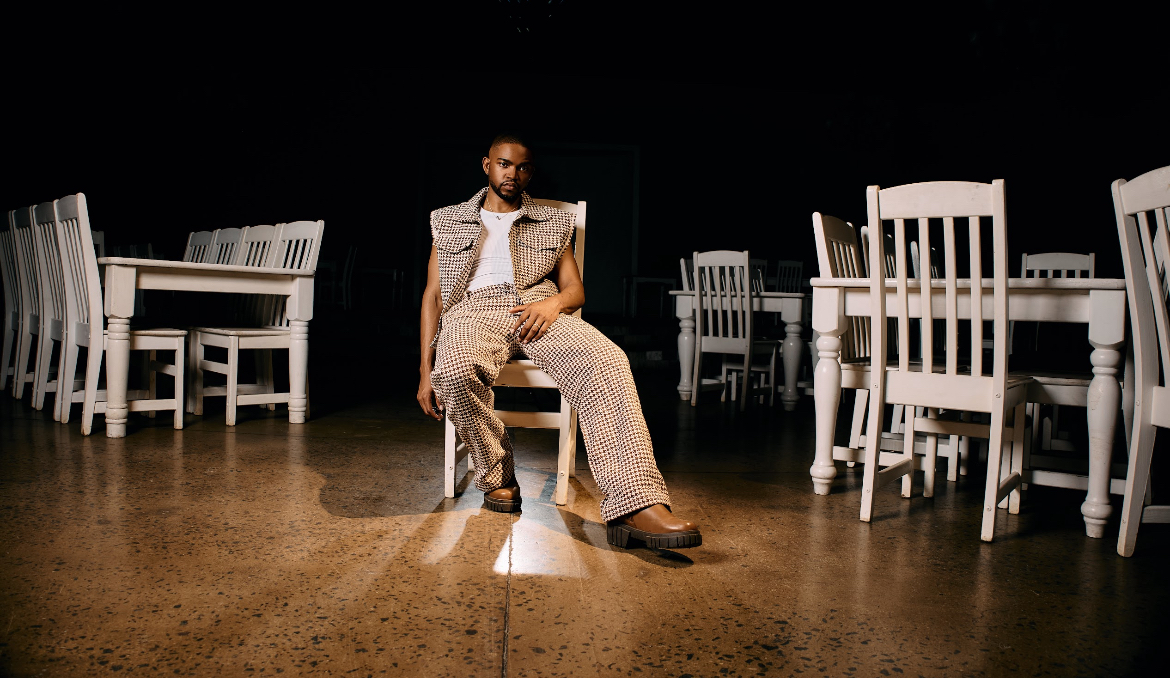
Your artistry doesn't just live in your vocals and songwriting—you're also a strong producer. In fact, Your contribution to "Flava" on Black Coffee's Album "Subconsciously" earned you a Grammy. How did that recognition feel in the moment, and how has it shaped the trajectory of your career since?
It was exciting and scary at the same time. It meant my wildest dreams had come true, but also came with a lot of imposter syndrome. It didn't truly feel like it was mine, and it was difficult for me to accept in the first couple of months. We did our vetting, and I eventually got a certificate that solidified the fact that I was actually a Grammy winner. That became super validating—it let me know that my ideas are great ones and that I can play on the global stage, not just think small.
It was also cool for someone in Coffee's position to see talent and want to take me along for the ride. Seeing a dream like that become realized firsthand made me have so much more belief in the fact that I could achieve my own. And even with this album, that's what I'm gunning for—I want my own Grammy, I want that trophy.

Across your catalogue, you've ventured into R&B, electronic, house, and hip-hop—both on your own projects and through collaborations most especially "Go Deeper" with Idris Elba. How do you maintain that level of versatility without losing your core identity as an artist? And how did the collaboration with him come about?
I don't really believe in genres; I think that's a concept we've artificially manufactured to organize music, but music is just music. I have such a unique taste, and this comes through when I create. I'm not trying to think about what genre I fit and I don't want to be boxed in; I just want to make what my heart wants to in that time, and that gives me so much freedom to truly express myself. The versatility comes from understanding that every collaboration teaches you new dialects while staying
rooted in who you are. C-Tea became the 40 to my Drake... he really taught me to trust my ideas and explore sonic landscapes I'd never dared enter alone. His Ghana bounce was like a musical accent that immediately tells you this person grew up on different influences. He finds unique pockets in his production and timing that South African producers just don't utilize as much. His bounce feels tropical, authentically Afrobeat. That timing, layering, and music theory couldn't have been bred where I'm from. When his Ghana bounce meets my Venda roots, the fusion just sounds like what Africa is: one beautiful, diverse continent sharing the same heartbeat.
The Idris Elba collaboration was divine timing at its finest. I remember saying a prayer asking God for a sign because I was at a point in my career where I needed it—I wanted to know that I was still on the right path and to just get some fuel to keep going. Shortly after saying that prayer, one day I'm working and I just have the urge to check my DMs, which I hardly do, and there it is... a DM from Idris. This idea we had recorded by chance a while back was what he was praising in the DM, and he was super excited about releasing it. It turns out his team had actively been looking for someone to collaborate with and I'd like to thank Aero Manyelo for connecting us. When my name was mentioned, he felt that was the right fit.
It was cool getting on that track and speaking in my mother tongue. I say "Hu kho difha," which means "it's fun," and he heard "Go deeper," so that became a funny situation. But just to be able to fully be myself on such a collaboration added to that validation. It showed me that we're living in a time where the world's so hungry for more diversity. We all want to experience new things, and my culture happens to be that because there hasn't been a lot of interface with it.

I want to say a huge congratulations on your marriage, and I'm very curious how stepping into this new chapter of life changed your perspective as a person and as an artist?
First of all, thank you. It's one of the best things I've ever done. It's funny because I used to think that getting married and eventually having kids meant sacrifice to the point where you don't really get to pursue your dreams. So I was averse to it as a younger person. But having stepped into it, it's done the opposite.
It's put a battery in my back. I'm so blessed and fortunate to be married to a partner that's super supportive and super smart too. She's reminding me of the giant within me and does a great job at letting me be who I am and not only that but amplifying who I am. I feel now more than ever that I have to accomplish what I set out to and achieve my goals and dreams because there are little ones who are looking up to me. Having had a collection of songs exist over the years and finally getting to a point where Matt, my brother and manager, says, "I think we're ready for an album," putting this together was just so special because I then found songs from 2017 or 2019 speaking directly to the time I was living right now. The love I once dreamed of was my reality today, and it was just so beautiful as an artist not just to be able to write a love letter but to dedicate a whole album to my wife.

Your upcoming album “Meet Me At The Altar” is an R&B project and, more personally, a love letter to your wife. Beyond your own story, what do you hope listeners will take away from this album?
I want this to be a celebration of love in the truest sense. I want this to also be a celebration of culture. Universally, we all feel this feeling, but I also want to teach what this means in the South African context or from that perspective. The most audacious act on this album is its opening: transforming "Amazulu," a traditional funeral song, into a celebration of love. It captures the album's DNA, which is turning pain into beauty, honoring the past while creating new meaning. I remember being at a family funeral while in university, a tent pitched outside my grandparents' yard, and between one of the speeches, someone started singing this song. In that moment, it felt like pure healing. For the duration of our singing, my mind completely left the pain of loss and I could just exist in stillness and peace. Repurposing this song felt risky. I didn't know how it would be received, but I grew to accept that what they think about it is none of my business. It might feel taboo to some, but it might also heal someone else out there.
I remember trying to get another artist onboard, and after explaining the concept, they were confused why we were trying this in the first place. They felt it was wrong. But I trusted the vision. For the video, we filmed at a nature reserve with members of an Anglican church as our cast, and they were incredible to work with. They embraced the project with the same excitement we had. I've spoken about this album becoming a sonic museum because we're actively preserving culture for future generations. I've always said that I make soundtracks to life and soundtracks to love in particular. I want people to imagine their lives as these rom-coms, and when you eventually achieve your crush or finally get to marry them, these are the songs that play for people to make memories and moments to.

This album has been seven years in the making. Was the delay about striving for perfection, or were there moments when you simply weren't in the right frame of mind to release it?
I'll be honest to say that I wasn't consciously working on an album most of the time we worked on the songs that are part of this. In that time, I was just freely creating—some of the songs I had initially intended on having as part of a mixtape called "Crush," but I guess God had other plans. I didn't see the point to albums because it feels like our generation is just so fast-paced. In a world where we're quick to scroll and just snapshot captions, I wanted to write a whole essay, so it definitely took time and I definitely did grow through the experience.
A song like "Say The Word" comes to mind because I struggled to write that for a while, and it's only after I got married that I found the words I needed to say. It was so precious opening the vault up to listen back to some of these songs—besides the slight production tweaks, we had really beautiful ideas that had been waiting for their moment. Some songs literally refused to be forgotten, proving my wine theory. "Never Knew" has been one of our toughest to complete—everything that could go wrong, did.
We'd been working with it since 2017, and I'd perform it often at shows, but getting it album-ready became a mission. Stems kept disappearing, original project files got corrupted, and even when we sent it to C-Tea, the first bounce didn't hit the mark. We went back and forth multiple times. Since this was a project from years ago, we were lucky to retrieve any stems at all. We used stemroller, an AI tool that extracts stems from song files, before C-Tea managed to find some original files. The stemroller audio wasn't crystal clear, but we could extract what we needed. Funny enough, I think some of those AI-extracted elements made it onto the final track. But then the guitars started distorting, and we had to bring in Andziso to re-record them completely. At one point, it felt like the whole thing might fall apart. But the most precious records require that kind of patience.

One of my favorite songs on the project is "Priceless Possession." The strings and storytelling make it stand out in a powerful way. Could you walk me through how that record came to life? And, on the flip side, which track did you have the most fun creating?
I heard this song in a dream in 2019. There was a group of people arranged in a circle, singing what became this melody. I woke up because there was some commotion outside, but that melody had already embedded itself in my soul. Both melody and lyrics came through the dream, I had to polish the words after waking, but the foundation was all there. Later that day I managed to go to the studio with C-Tea and my older brother Tondi. I was still sick with flu, so my voice wasn't clear enough, but we managed to come up with that demo. The initial demo took about a day to record, then the song lived in the vault for years.
Seven years later, re-recording brought its own anxiety. I usually keep original takes because I know how hard it is to recapture that initial approach and feeling. Since I'd been sick during the original C-Tea session, I knew this was my chance to get it right. Instead of worrying, I chose to enjoy the process. I knew every lyric by heart, so I could sing it like a live performance. Looking back, I don't know what business I had writing lyrics this profound when I was barely out of my teens—"there's nobody in the world that could give me what we have, there's no money in the world that could buy me what we have." That level of wisdom surprises me, but it shows there was already this deep understanding of love carried within me. Now that I have a child with my wife, those words hit completely different. No one else could give me this love, this family. Only her.
The song that was probably my favorite to make on the album is "I Do," which features J'Something. We were at the camp and we were meant to be working on "Hayani," but it was a very frustrating process. We decided to pivot. There was a "no new song" rule in that camp because the focus was to finish existing songs, but that decision to pivot literally spawned a whole new monster of a track. What followed was pure creative magic. I knew Zadok, Stacy, and Oriah individually but had never seen them work together. When they arrived that day, their communication and workflow immediately screamed chemistry. Oriah started laying down the beat and drum pattern while Zadok simultaneously crafted guitar riffs and I cooked up lyrics. We worked in perfect parallel, bringing our individual pieces together and BOOM! We had a song. Fifteen minutes. That's all it took when you have the right people in the right room at the right time. Then the real magic happened—I gathered everyone in the house to sing the hook together. J Smash, Matt, Raven, Denzel, myself. The whole moment was funny, fun, and beautifully communal. There was genuine shock and excitement that something feeling so integral to the album could emerge from such a relaxed approach. Mid-session, Stacy pulled me aside with an idea: "How about this?" He started singing what became the "Wena" section. Initially, I didn't want the interruption. I was still figuring out my own writing. But I took a breath, calmed down, and let him share his vision. Turns out it was exactly what the song needed! Pure fire.
I have to give props to my wife who suggested that we reach out to J'Something for a collaboration. It was a bit surreal for me and a dream come true... a voice I've heard since my teens when I was starting out in music. Sometimes the best thing you can do is redirect focus completely and let the music win.
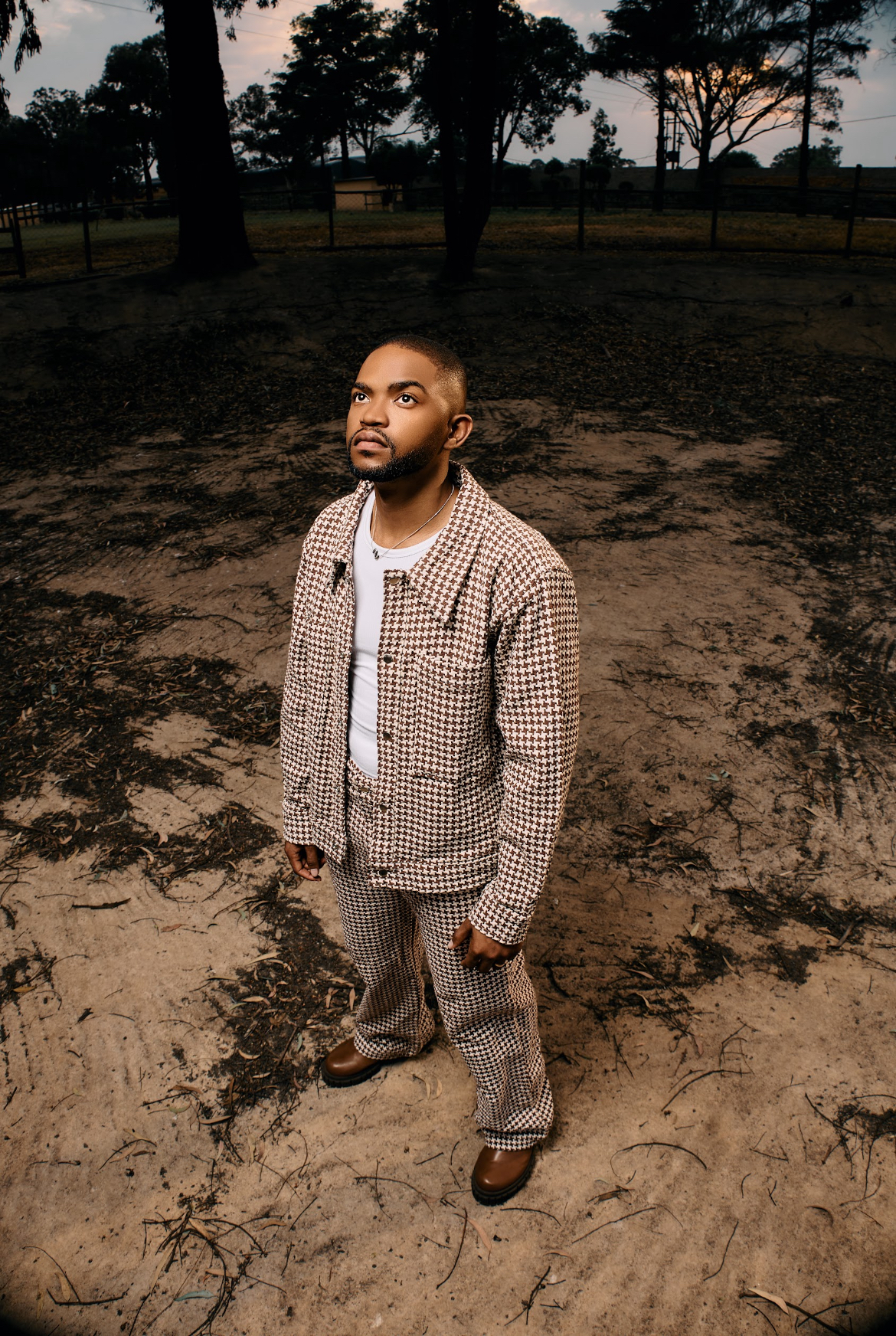
Looking back to 2018, before Meet Me At The Altar began to take shape—and when you were still single—what would you say has been your biggest growth, both personally and musically, between then and now?
I'm definitely less afraid, I'm more confident in who I am and confident in what I can do. I now have a deeper understanding of seasons, and this has come from my walk in life and conversations with my wife, where you're aware of the fact that even mango trees don't bear fruit all year round. They have their time. I have this deep understanding of the fact that I don't have to do everything alone. It does take community. So I'm able to put ego to the side and let ideas win if they benefit what we're focused and working on. That's why I can stand to the side and have my older brother Tondi do a whole song on my debut album, because he could say and sing it in a way that I couldn't.
The most beautiful collaborations have come from this surrender. Working with Amanda Black on "takala," she's Xhosa, I'm Venda, yet she was willing to twist her tongue around my language for the sake of our song. You could hear her accent. She clearly wasn't native to the language, but she was nailing the pronunciation. That effort alone spoke volumes about her commitment to the art. She embraced the collaborative energy, dancing, singing, vibing with all of us like she'd been doing it forever. When I wrote "ndi a mufuna," I worked with Muneyi, who grew up with his grandmother and knows deeper, richer Venda than I do. His writing is phenomenal and watching him sit and absorb the music before writing was mesmerizing. He has this incredible process where it looks like he's leaving notes in the air, then guiding his hand to locate them again. The vocal gymnastics he pulled off, the dynamics he brought... I could never have achieved that level. This song wouldn't be what it is today without his voice. I'm at a place where my passion for seeing a dream achieved goes beyond just myself. I want to see the same not just for my wife and my own family, but for the many kids that grew up in an environment similar to mine. Knowing that representation matters means that they have to see it from somewhere. I'm so proud to wave the Venda flag high and to showcase my culture and my people to the world so they can see just how beautiful Venda and South Africa ultimately are.
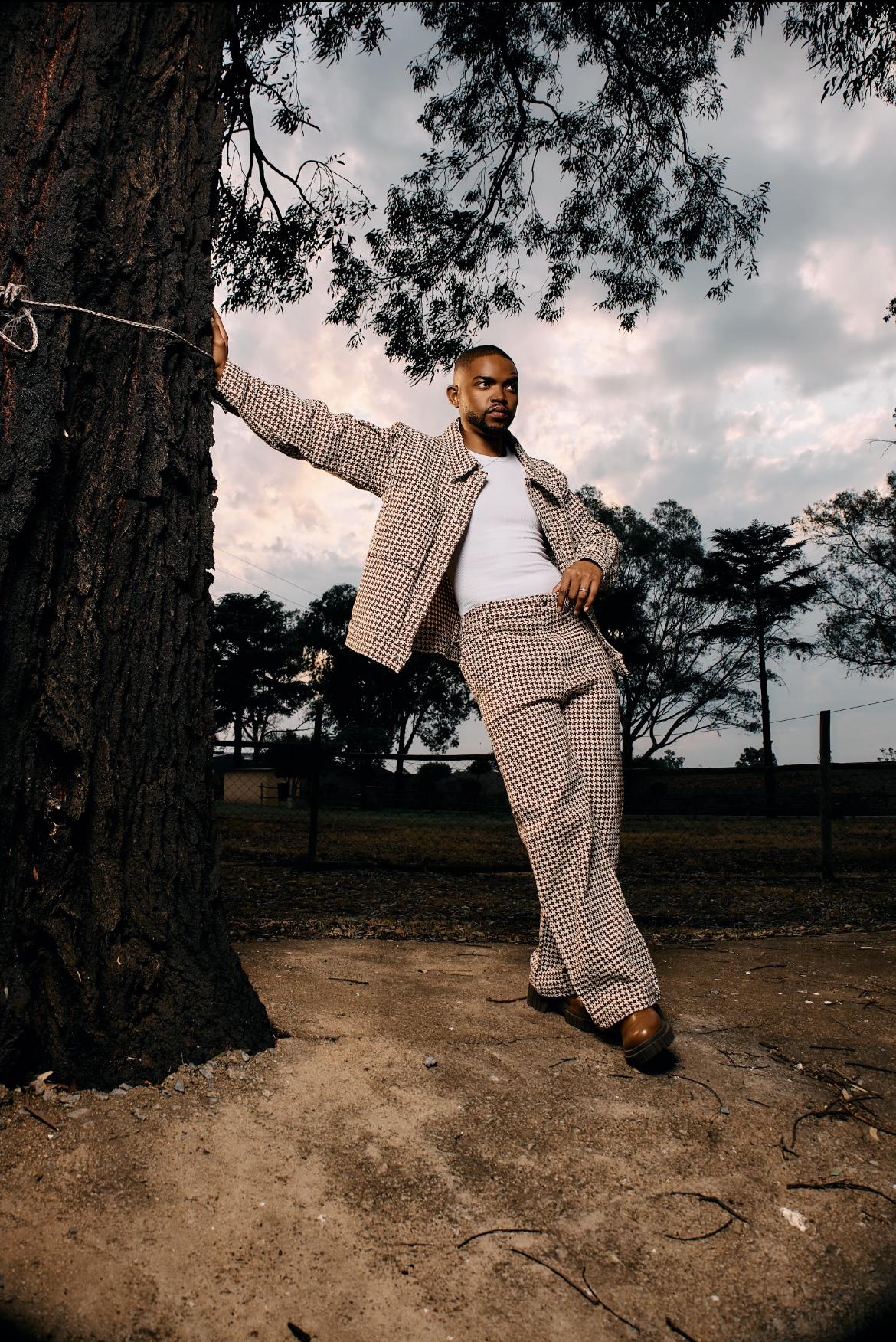
With this album finally out in the world, what do you feel you're contributing to the culture that wasn't there before? And when you think about the long-term, what kind of imprint do you hope to leave on the scene?
To be honest, I'm not spending too much time thinking about that. I'm much rather creating a world I want to see exist. I'm hoping that people can find their favorite songs in there, songs they can really celebrate these moments with, because I'm a big fan of love and I want people to fall in love, live life slowly, and really enjoy these moments. I feel that when love leads, we can have a better world. And as naive as it may sound, I do believe that music is an ingredient in the recipe for changing the world. I want for artists around the world in these fringe villages to know that their voice matters and that they don't have to become anything else but themselves in order to be successful. But beyond the music, I have concrete plans for cultural preservation. I'll continue championing Venda people through direct action. Investing in museums, documentaries, ensuring our own history gets taught properly in schools. Music and its accompanying visuals will play crucial roles in this cultural preservation mission. I want to create a foundation where young Venda artists can access resources to tell their stories authentically. The goal is to make the Rambani name synonymous not just with great music, but with cultural stewardship and community investment.
For Azia, music isn’t just about sound. It’s about language, lineage, and spirit. Through wordsofazia, she builds a world that reaches beyond herself, blending English, French, and Bhété to create something rooted, intentional, and transcendent.
Starting with dropping Lagô last year, she is currently debuting “Modern Wihegou” to the story of Zizimazi, each track becoming a step in her journey: bridging generations, carrying her mother’s teachings, and offering listeners a pause in the race of life.
Her hope is simple but profound: that her music leaves you grounded, at peace, and more connected to yourself, to heritage, and to something greater.
.png)
What’s the story behind your stage name WordsofAzia, what does it mean and what does it represent?
When I first started to think about WordsofAzia, I was reading a lot of poetry. My intent was to create music around words. I also wanted to dissociate this project from myself; I picture it as more than just me, Azia. I had in mind that I wanted other people involved. So Azia might be a person, but WordsofAzia is more– it’s a concept, an idea, a direction.
How do you blend your native language and English? Is there something both languages bring to your music?
I feel like English helps me remain short and effective in what I want to say. It feels less heavy than French, and I also love the sound of it. But Bhété makes me feel rooted— it transcends me. The fact that I’m learning it nourishes me while I create and perform. It also allows me to build a deeper bond with my family.
What particular message would you like to send with your art, especially from your new EP.
.png)
I want people to feel at peace; spiritually centered, calm, and connected to themselves and the world around them. Life can sometimes feel like a race. Through the EP, I want people to pause, reflect, and reconnect.
Walk us through your latest EP "Modern Wihegou". Why that name, and what was the journey from Zizimazi to Sehkeyoulou?
Wihegou is a type of singing in my tribe, Bhété. The idea was to create a bridge between generations and culture, which is why I called it “Modern Wihegou.” For me, Zizimazi represents initiation, the first step, with my mom explaining the story of Zizimazi, the man we all descend from.
The arrival is Sehkeyoulou. When I wrote this song, I felt like I wasn’t looking for anything more—I felt completely content and grateful. That, for me, is the point of our journey, so it had to be the last track.
Who would you say are your musical inspirations?
They are plural—my inspirations come from paintings, poetry, books, speeches I read, sounds I heard on family archive videos, as well as artists I listen to. But the main inspiration for my music is my spiritual journey. It is then shaped by my tools (guitar, percussion) and by the rhythms that resonate with me.
How do you stay focused, staying true to your roots without giving into the temptations of mainstream sounds? Is it by blending Bhété traditions into your music?
First of all, mainstream songs are not my favorite. It’s not the type of music I listen to thinking, “Wow, I want to create that.” I’ve always listened to niche artists who have a very specific audience even though I also listen to mainstream music.
I make music that sounds like what I would love to listen to. I have to enjoy it first before anyone else. By staying true to myself and my taste, that’s how my music takes shape.
.png)
There’s a maternal focus in some of your songs. You often use your mother and grandmother’s vocals, what’s your relationship with them like and why is this a recurring theme in your music?
My mom is the essence. She teaches me how to be a woman on so many levels. When I started working with her, I knew I wanted her to teach me her language so I could one day pass it on to my children. Heritage and transmission are very important to me, which is why my mom holds such a crucial place in WordsofAzia.
Unfortunately, my grandmother is no longer with us, but I like the fact that she lives through these creations.
Your music is very distinct. Some of the songs in the EP almost seem like prayers. Do you practice religion, and would you describe your music as a spiritual outlet?
I don’t practice my faith through music, but it’s important that music doesn’t tear me away from it. It’s a kind of discipline— I want music to have a positive impact on my life and on others. I want my music to help others feel closer to God, and the same goes for me.
Are there certain artistes you would like to collaborate with? Who are they, and why them in particular?
I would love to work with Asa, The Cavemen, Tiken Jah Fakoly, and many more. I have a playlist on Spotify called Deeper Than My Roots with artists I love and who inspire me. Music is about sharing, so I’d love to connect visions with them.
What next can we expect from you? Any events we should be looking forward to?
More music, I’d say! God willing.
On an unseasonably warm evening last week, I plopped into my bed after a painfully long day. I busied myself with the variety of entertainment most accessible to people of my generation. Scrolling through my phone with the frantic velocity of a criminal escaping the scene of a crime, I happened upon news that made me stop—gobsmacked—in my tracks. Taylor Swift had just announced her engagement to Kansas City Chiefs player Travis Michael Kalce. Let’s face it: we all saw this coming. Nonetheless, the news elicited in me so great an emotional response that I had to pause for a moment to interrogate my excitement. I’m not particularly a Swiftie. In fact, what little knowledge I have of her and her music was gleaned, unwittingly, from people around me and, of course, the interminably busy thoroughfare that is the internet. Nonetheless, seeing Taylor and Travis holding each other lovingly, the affection in their eyes is palpable, against a leafy backdrop interspersed with pastel colored flowers, made a part of my heart pulse with mawkish excitement: maybe love exists after all.
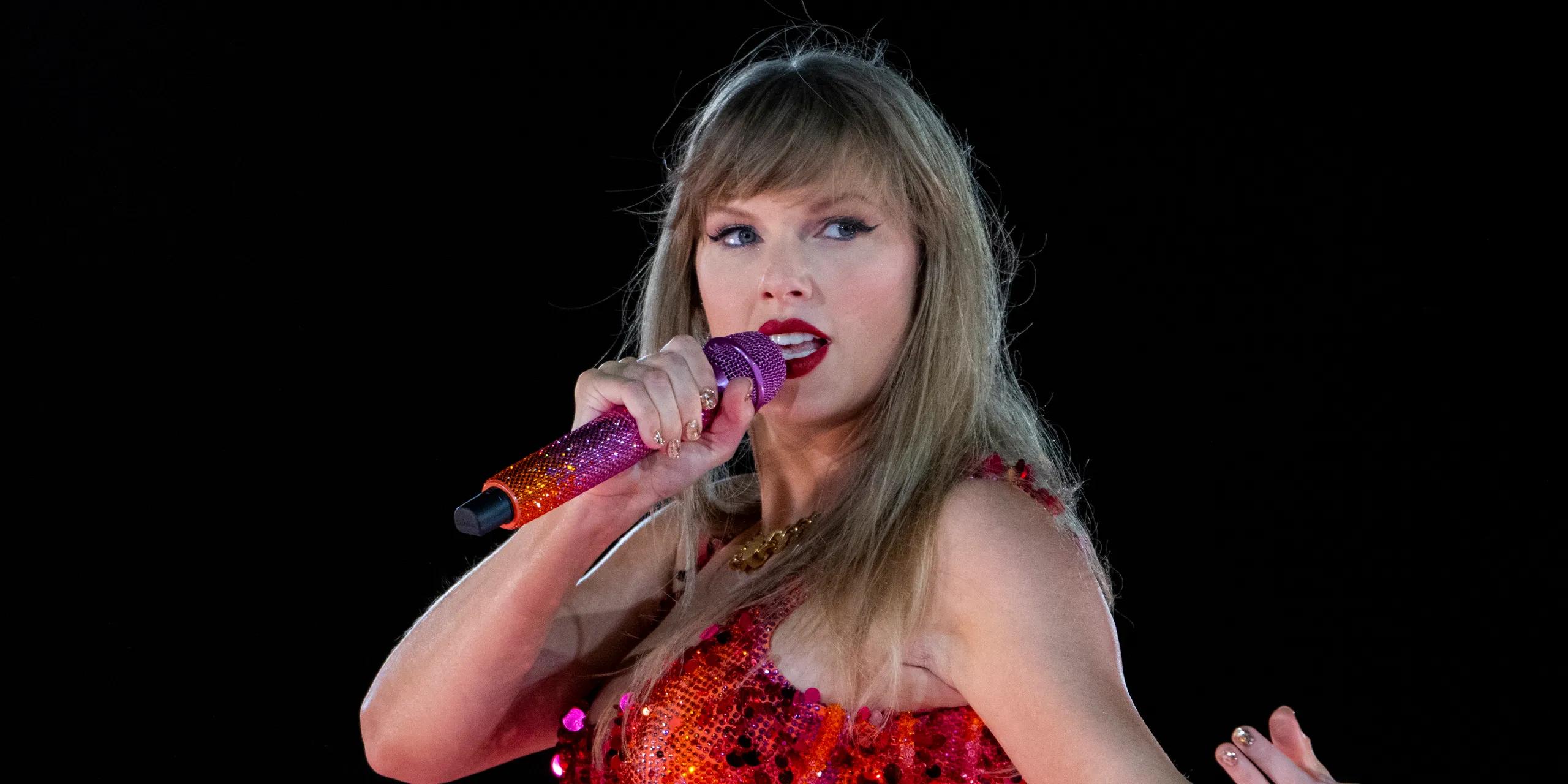
Not too long afterwards, I saw another picture that made me stop, again, gobsmacked. In the grainy, vintage-looking picture, Sabrina Carpenter, another popstar of epic proportions, is on her knees wearing a black dress, hands grasping the feet of a suited man who pulls in a handful of her golden hair. Originally posted on the 11th of June, the picture is hardly new. As Sabrina Carpenter’s then-imminent album, Man’s Best Friend, drew closer to its inexorable release, the picture, which also happens to be the album’s cover, resurfaced on social media with increased forcefulness; and of course, a deluge of opinions, critiques, defences, and polemics rolled in.
At this point, you probably have figured out where this missive, if I can call it that, is headed. Last week in global pop culture was dominated by two incredibly famous, blonde pop stars heralding competing visions of femininity. On the one hand is Taylor Swift, who is a feminist interpretation of the institution, one where traditional gender roles are swapped out for an equitable partnership. On the other however, we have Sabrina Carpenter who seemingly plays into the stereotype of women being fundamentally subservient to men, deploying the iconography of canines as a metaphor for the domesticity expected of women in heteronormative relationships.
In this instalment of PopTakes, a column in which a writer from Deeds’ editorial team distils notable events from the past week in pop culture through their unique lens, I explore these topics and more.
Taylor Swift and Travis Kelce Get Engaged
A sizable swath of the internet has been steeped in jubilation since the engagement pictures of the superstar duo surfaced on social media. It’s not unusual for celebrity relationships to rouse public conversation or fanfare. The scale of the jubilation Swift and Kelce’s engagement has stirred, however, feels unprecedented. What’s most interesting about all of this is that reactions to the news have been overwhelmingly wholesome, which feels like a breath of fresh air in today’s cynical digital milieu. This is partly explained by the mammoth scale of their respective fanbases. But even their detractors, Trump, for example, seem to have been swept up by the air of festivity. Trump, who has posted about hating the singer and said she’s “NO LONGER HOT,” chimed in on the conversation with an uncharacteristically cordial post that reads: “I think he’s a great guy and I think that she’s a terrific person. So I wish them a lot of luck.”
On The Album Cover For Sabrina Carpenter’s Man’s Best Friend Album
“I can’t support this type of communication. Unfollowed,” reads one comment in response to an Instagram post by Sabrina Carpenter of her now infamous album cover. “Don’t, girl!! Don’t normalise this,” reads another. Another one reads “Am I the only one who thinks this is dehumanising to women?” These tweets capture the holy fervour with which many have repudiated Carpenter’s album cover. Last week, in an interview with CBS’s Gayle King, she addressed the backlash. “Y’all need to get out more, I think,” she said. “Between me and my friends and my family and the people that I always share my music and my art with first, it just wasn’t even a conversation… It was just, like, it’s perfect for what the album is, and what it represents.”
Her fans and some more charitable internet denizens have tried to make the case that the album and its cover satirise the power dynamics in heteronormative relationships. Carpenter has, however, offered a different perspective, interpreting it as “being in on the control, being in on your lack of control, and when you want to be in control”, whoever knows what that means. I don’t claim to definitively know her intentions with the album, but I think she is leaning more strongly into the often debasing and servile trad-wife archetype that is synonymous with right-wing politics. With the conservative politics and sentiments on the rise in the US, it’s not hard to see why a female pop star with somewhat conservative leanings would choose to head in this direction. Further elucidating this dynamic is Donald Trump’s reaction hints at liberal values, or as he likes to describe it: wokeism.
The sweeping campaign he has enacted to stamp out progressive ideas from American cultural institutions aside, his attitude towards artists with dissenting politics speaks volumes. While he has viciously lobbed all manner of invectives at Taylor Swift, who is unflinching in her defence of feminism and her liberal values, he has smothered Sydney Sweeney in praise since her infamous American Eagle ad, which many many interpret as a subtle nod to the far-right’s eugenics bent. Whatever the case may be, there are better ways to satirise heteronormative relationships or draw attention to the powerlessness women often feel in our patriarchal society than grovelling at a man’s feet and drawing parallels between women and dogs.
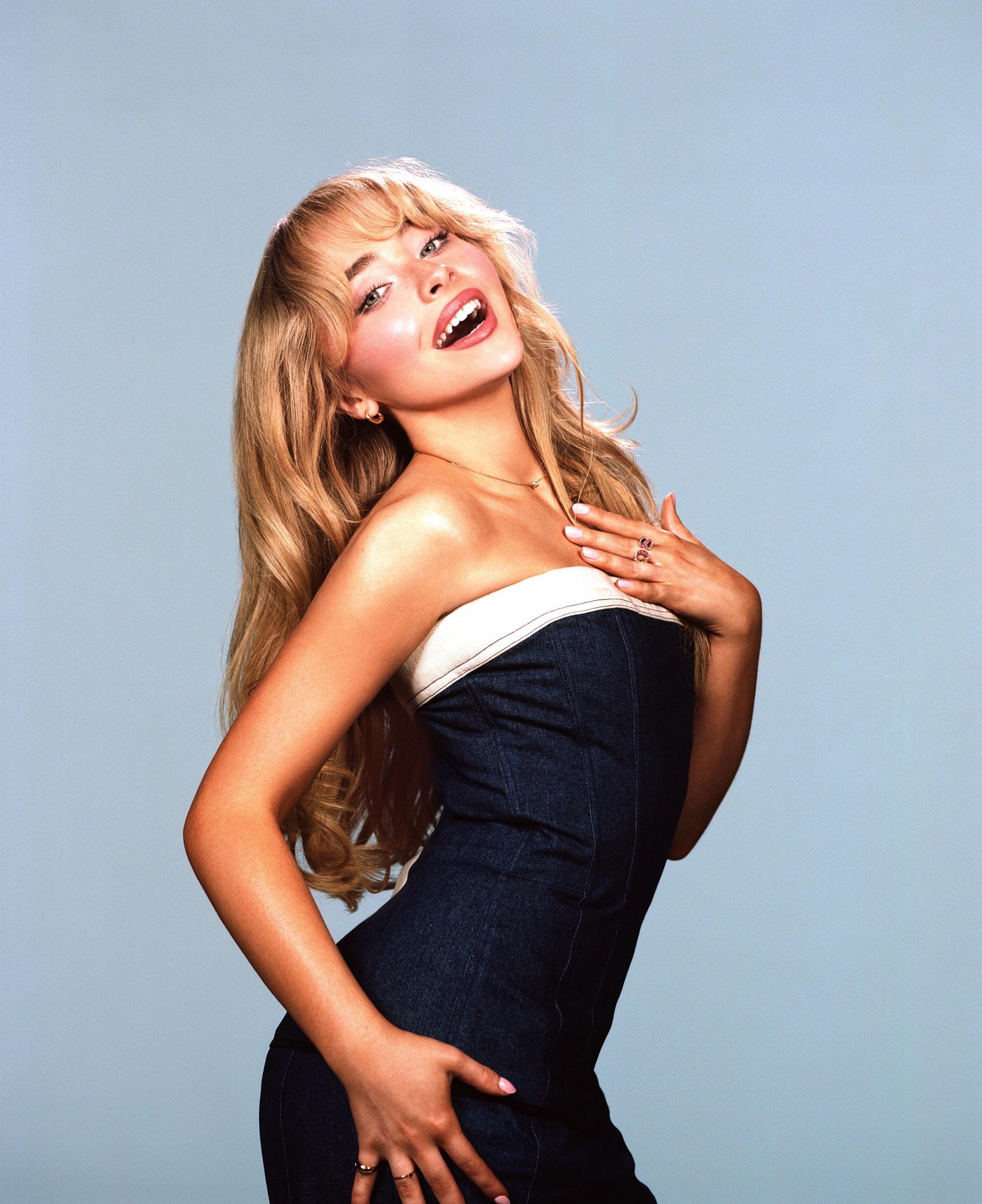
Bryson Tiller Expresses Desire For an Alternative Career Path
Last week, in an interesting turn of events, R&B singer Bryson Tiller, who is hardly ever in the news for controversy, faced a blitz of criticism when he announced that “The moment I have success in something else that can feed my family, I’m done being an artist.” His critics contend that he’s being whiny, ungrateful, and unserious with a career many would kill to have. As I sifted through the deluge of opinions on the subject that had populated my feed with the imperiousness of a roving mob, I mourned internally the internet’s ability to erase our capacity for empathy. Ultimately, Bryson Tiller is human like the rest of us, and if he has lost his spark for music and would like to try his hand at something else, the least we can do is offer him support.
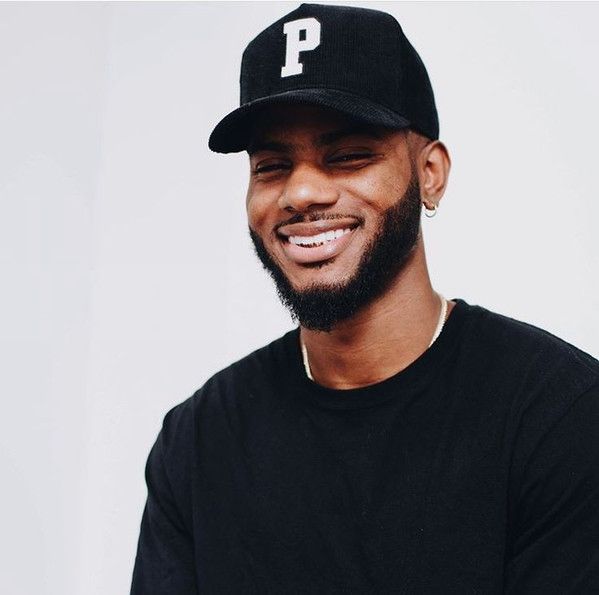
Nigeria's commercial capital has always been synonymous with Afrobeats innovation. Yet, recent years have witnessed a curious phenomenon: Lagos party culture is increasingly gravitating toward foreign sounds, while the genre it birthed continues to conquer global charts. A collective of visionary creatives is changing that narrative.
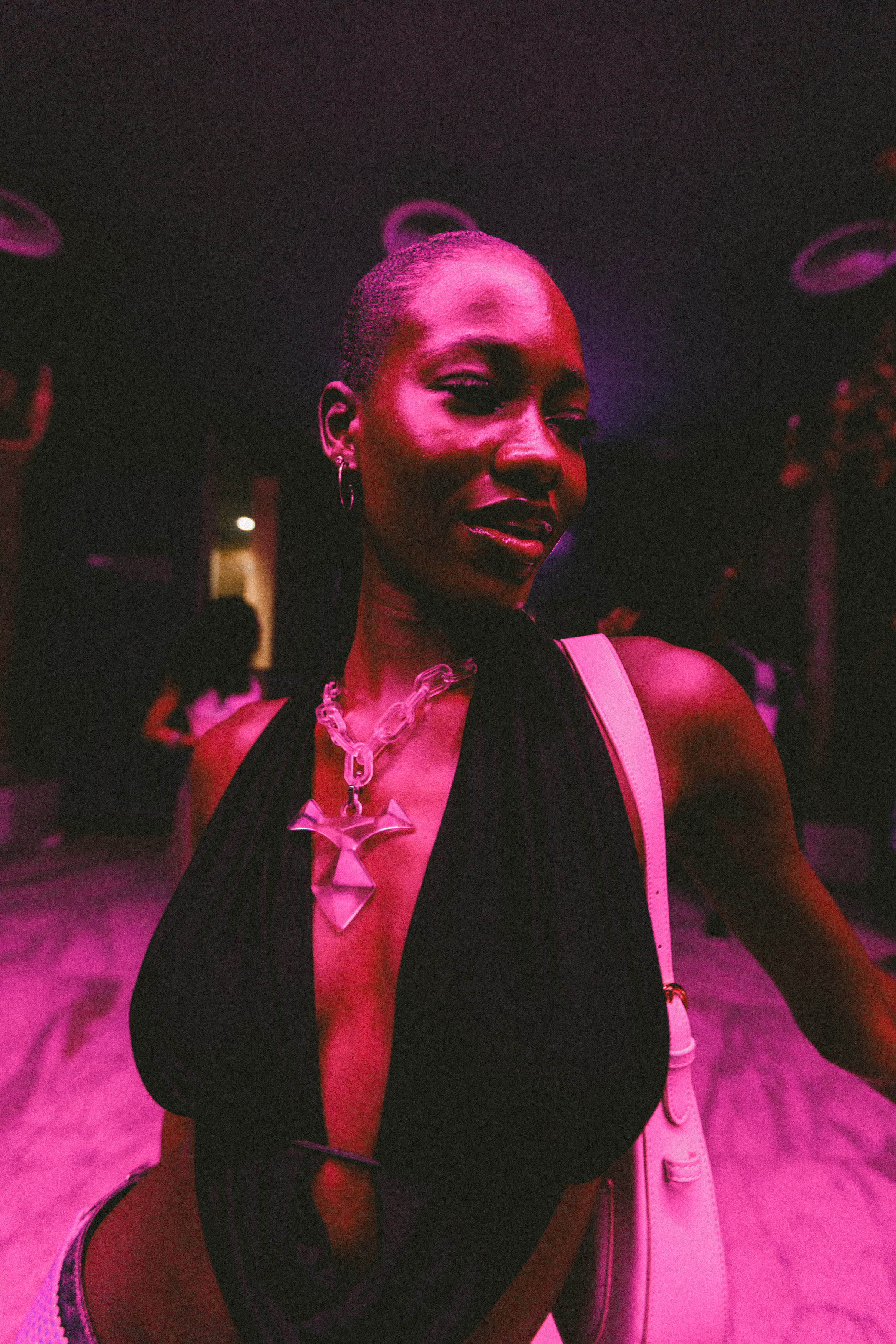
Lagos nightlife has undergone a significant transformation over the past decade. Premium venues across Victoria Island, Lekki, and Ikoyi have predominantly featured amapiano from South Africa and European house music, creating a disconnect between Nigeria's musical export success and its domestic party scene. While Nigerian artists dominate international festivals and streaming platforms, local clubgoers found themselves dancing to imported rhythms rather than homegrown beats.
This shift didn't go unnoticed by industry insiders who recognised the irony: international visitors arriving in Lagos expecting authentic Afrobeats experiences, only to encounter soundscapes that could belong to any cosmopolitan city worldwide.
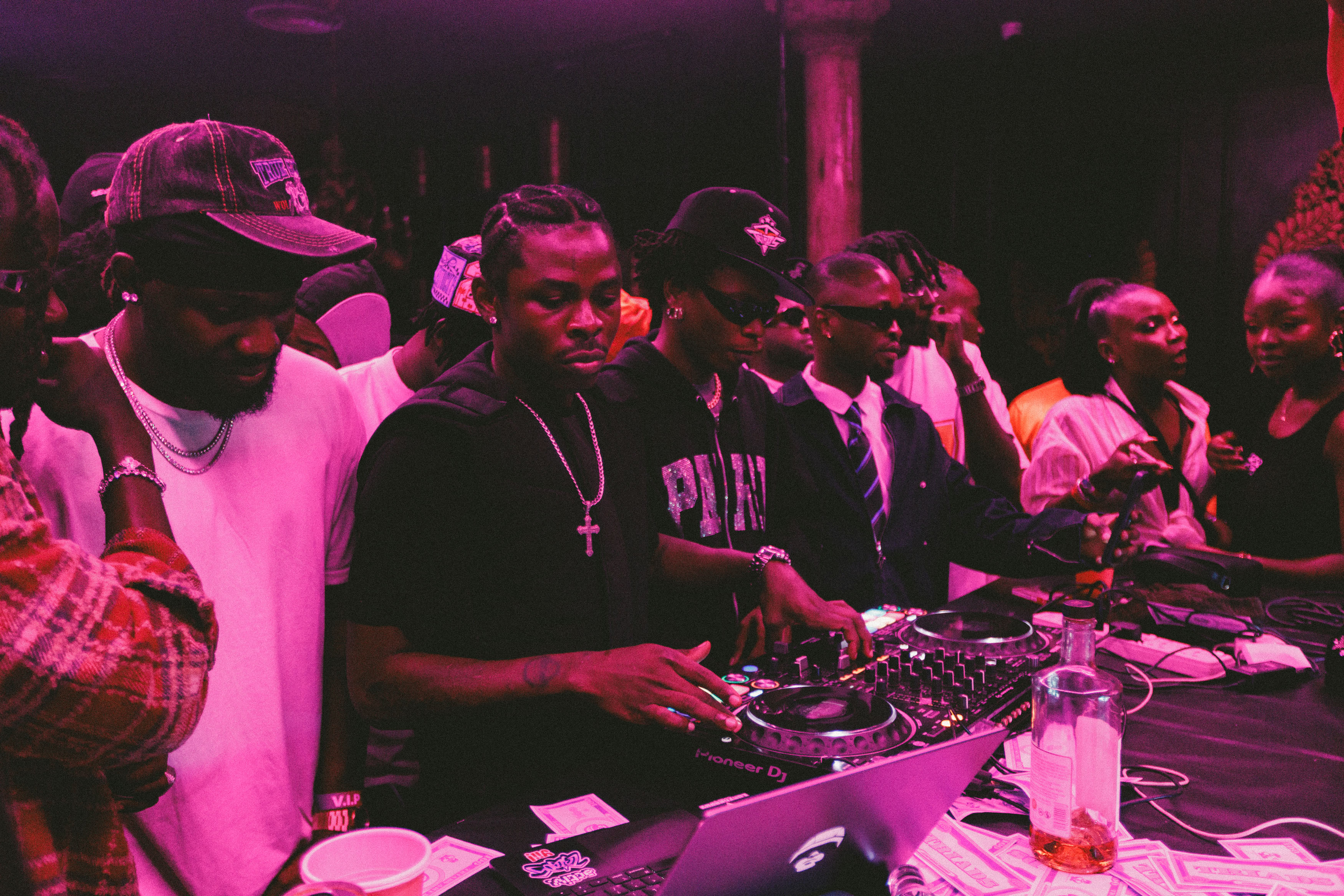
Six creative entrepreneurs decided to address this cultural gap head-on. Samuel Korie, DJ Titanium, Crayvelli, Tolu Daniels, Moronfoluwa 'Foluade' Alabi and Bolaji Oguntolu joined forces to launch Tempo Lagos, an exclusive Afrobeats-only party concept designed to restore Nigerian music's prominence in its birthplace.
The team brings diverse expertise spanning event production, music curation, brand strategy, and entertainment marketing. Their collective vision centres on creating premium experiences that celebrate Nigerian musical heritage while meeting contemporary luxury entertainment standards.
"We noticed that Lagos was losing its musical identity in its own party spaces," Tempo Lagos "International tourists would ask where they could experience authentic Afrobeats nightlife, and we realised we had fewer and fewer answers."

The debut Tempo Lagos event on September 13th, 2025, exceeded all expectations. The carefully curated musical selection showcased Afrobeats across different eras, from foundational tracks that shaped the genre to contemporary hits dominating global charts.

The entertainment industry has taken notice of Tempo Lagos's approach. Music executives, artists' representatives, and venue owners are observing how the concept resonates with Lagos audiences. The success suggests significant demand for culturally authentic nightlife experiences that had been underserved by existing offerings.
Beyond entertainment value, Tempo Lagos addresses broader questions about cultural preservation in rapidly globalising cities. As Lagos positions itself as Africa's premier megacity, maintaining a distinct cultural identity becomes increasingly important for both residents and the tourism sector.

Post-event engagement metrics reveal sustained interest in the Tempo Lagos concept. The organising team reports continuous inquiries about future editions, with potential attendees expressing willingness to travel from other Nigerian cities and African countries for authentic Afrobeats party experiences.
This demand indicates market potential extending beyond Lagos to diaspora communities worldwide. Cities with significant Nigerian populations – London, Houston, Toronto, and Dubai – represent logical expansion opportunities for the Tempo Lagos concept.
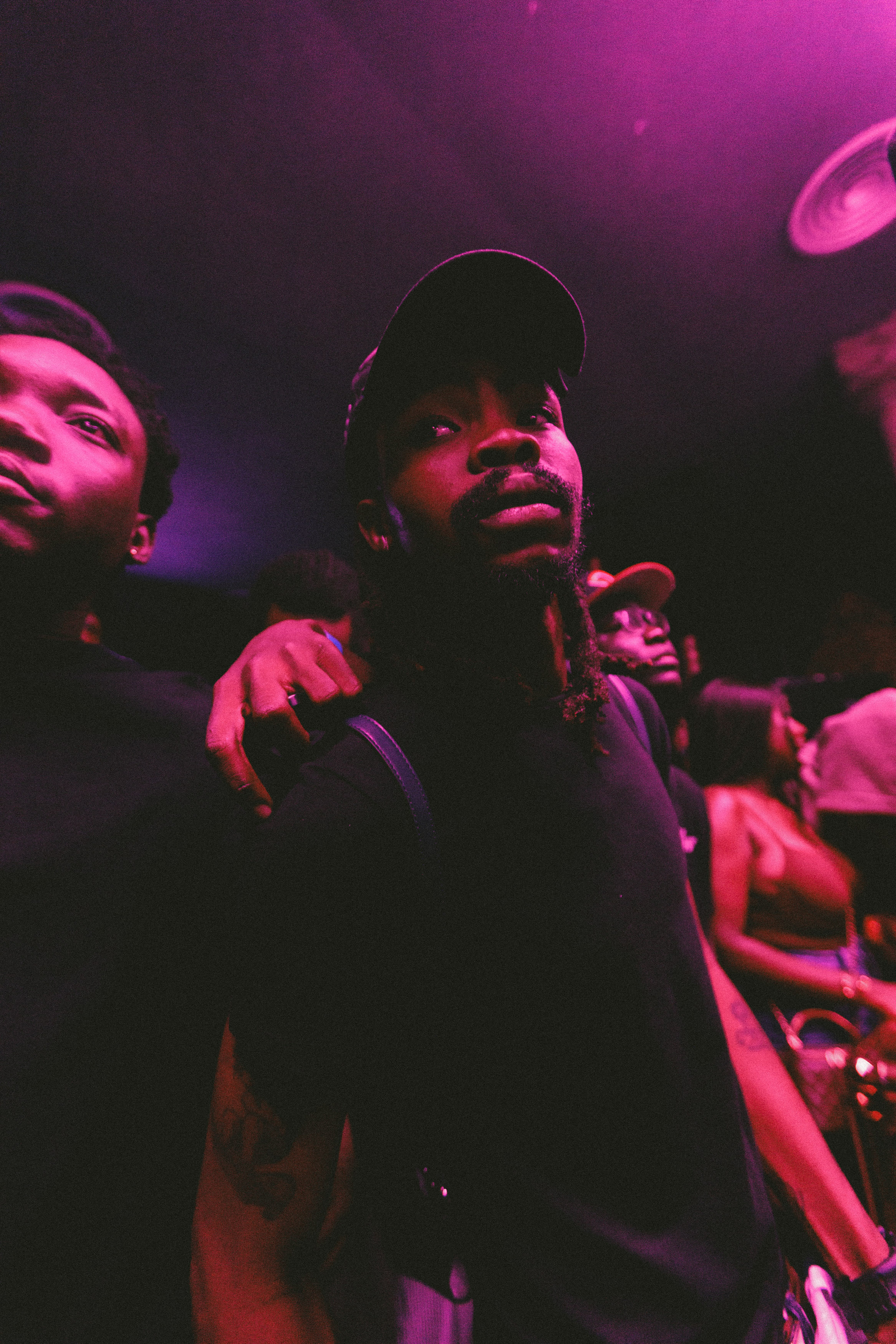
Tempo Lagos represents more than successful event planning; it demonstrates how Nigerian creatives can reclaim narrative control over their cultural products. While Afrobeats achieves unprecedented global success, ensuring its celebration within Nigeria remains crucial for long-term cultural sustainability.
The initiative also highlights opportunities within Nigeria's growing experience economy. As disposable income increases among urban millennials and Gen Z consumers, demand for premium, culturally relevant entertainment options continue to expand.
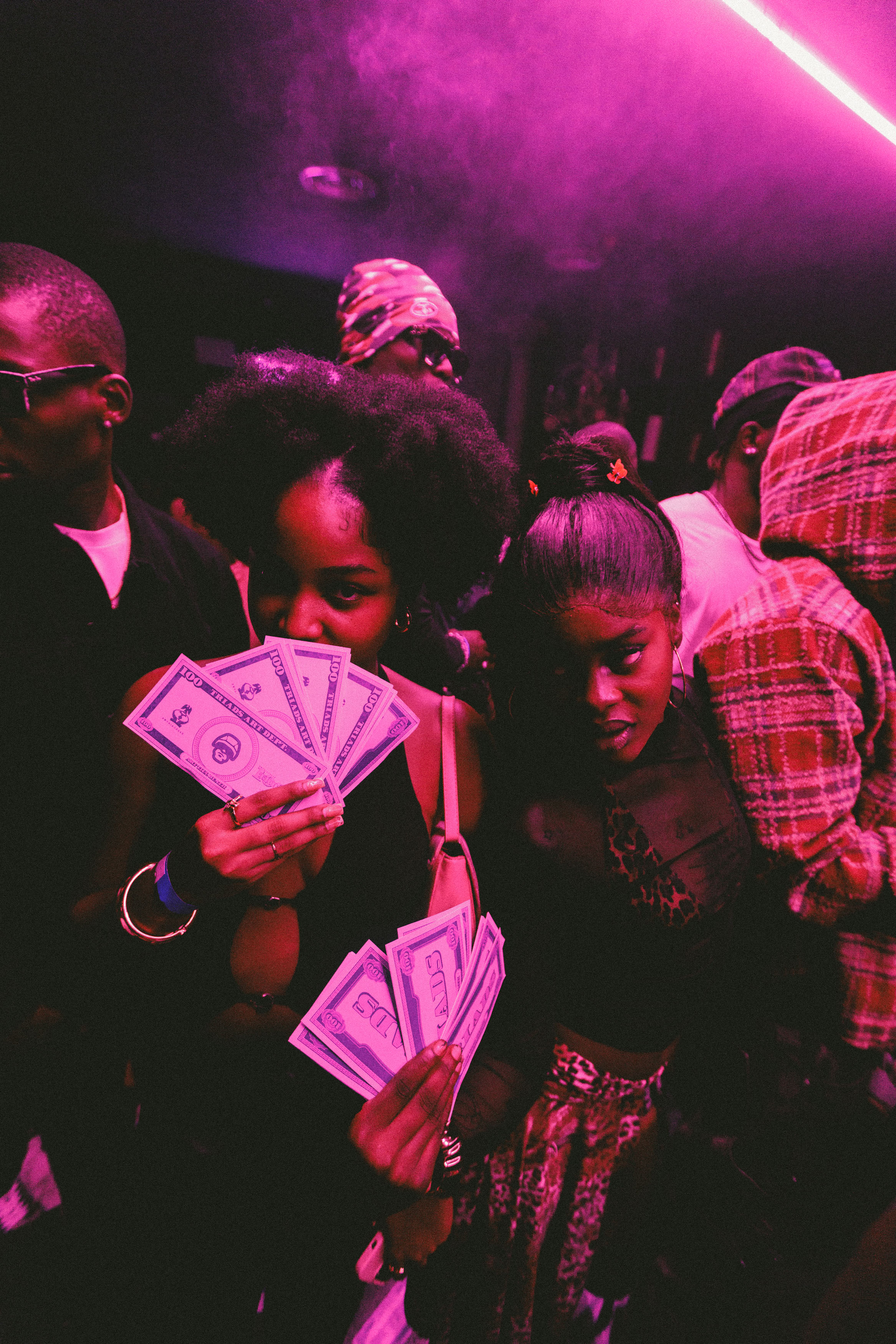
The organisers are already planning subsequent editions, with potential expansion to other Nigerian cities under consideration. Each event aims to refine the concept while maintaining core principles: celebrating Nigerian musical excellence, creating premium experiences, and fostering cultural pride.
Tempo Lagos may signal the beginning of a broader revival in Nigerian-centric entertainment offerings. As the concept proves commercially viable, other entrepreneurs might develop similar culturally authentic experiences across different sectors.
For Lagos nightlife, Tempo Lagos represents evolution rather than revolution – returning to roots while embracing contemporary standards. In doing so, it offers a template for how global cities can maintain cultural distinctiveness while participating in international trends.
The next edition promises to build on September's success, with the organising team committed to establishing Tempo Lagos as Lagos's premier Afrobeats celebration. For a city that gave the world one of its most beloved musical genres, it's about time the party came home.
In philosophy, nuance is the subtle distinction that reveals truth beyond the surface & binds complexity and meaning. To understand nuance is to recognise that truth rarely resides in certainty alone, but often in the spaces between contradictions. This idea of nuance is crucial when revisiting an ongoing debate in the Afrobeats ecosystem: the supposed need for a “reset”
This rhetoric has been one of the most recycled conversations in the scene, resurfacing repeatedly over the past few months. Most recently, it was reignited by a user on X (formerly Twitter), prompting another round of reflection. To properly analyse this claim, we must first understand what a “reset” entails.
By definition, a reset is the act of moving something back to its original position. In the context of Afrobeats, this would suggest returning the music to its earlier roots—its raw, unfiltered beginnings. On the surface, this sounds both ambitious and culturally significant. But the critical question remains: are the artists and listeners genuinely prepared to embrace such a shift?
.jpg)
Take, for instance, Rema’s sophomore album HEIS, released last year. It stood as one of the most culturally grounded projects from a mainstream act in recent memory.
The album was critically acclaimed and heralded by some as the very reset the scene needed. Yet, barely a year later, the conversation resurfaces. Why? Perhaps because Rema himself did not fully commit to the path he signalled, or perhaps because consumers were unwilling to buy into it. Either way, a reset cannot be sustained by claims alone; it requires collective participation.
.jpg)
Asake’s career provides a telling counterexample. His debut album, Mr. Money With the Vibe, introduced a distinctive sonic identity, the ever-present and unique background vocals, heavy Yoruba inflexions, and a fusion of indigenous textures. Crucially, he doubled down on this aesthetic with subsequent projects, Work of Art and Lungu Boy. His persistence ensured that what might have been a passing experiment became a recognisable influence, still shaping the sound of Afrobeats today. The lesson here is clear: a reset demands commitment from artists who are willing to define a path, and it equally demands acceptance from listeners who are willing to journey with them.
.jpg)
Another layer of nuance is the criticism that the scene lacks experimentation or intentionality. While not entirely unfounded, this perspective overlooks a larger truth about the music industry globally. Hundreds of songs are released daily, and not all will strike gold. Experimental projects & records exist, but they are often drowned in the noise of mainstream output. It is ultimately the listener’s responsibility to sift through the abundance and discover the gems. Fatigue may occur, but that reflects personal listening habits rather than a structural flaw in Afrobeats itself. Moreover, mainstream pop acts all over the world rarely deliver pure experimentation. Their survival depends on balancing artistic expression with broad audience appeal, so if the need for exceptional sonic innovation exists, the pop figures might not be the go-to for that.
Thus, when the call for an Afrobeats reset resurfaces, it often reads less like a genuine cultural imperative and more like a convenient excuse. The reality is that no music scene can remain at peak intensity perpetually. Like all cultural movements, Afrobeats will experience cycles of growth, experimentation, and consolidation. Instead of longing for a mythical “reset”, perhaps the more nuanced approach is to recognise these cycles, encourage intentional artistry, and accept that not every moment will feel revolutionary.
The scene doesn’t need a reset; it needs patience, perspective, and the willingness to appreciate evolution as it happens.
Authenticity has become a rare commodity in today's music industry, which makes Mádé Kuti's commitment to conscious artistry all the more striking. A saxophonist, producer, and heir to one of Africa's most revolutionary musical legacies, the grandson of Afrobeat pioneer Fela Anikulapo Kuti and son of Femi Kuti has carved out his own distinctive path in the family tradition, one that honors the past while fearlessly confronting the present.
Fresh from the release of his deeply introspective 2025 album "Chapter 1: Where Does Happiness Come From?", Mádé Kuti continues to push the boundaries of what Afrobeat can be in the 21st century. Following singles like "Stand Tall" and "No More Wars," his latest work "I Won't Run Away" represents a deeply personal evolution in an artist who has never shied away from vulnerability or difficult questions.
We caught up with Mádé at Lagos's iconic New Afrika Shrine, the cultural institution that has been his second home for over two decades. Between rehearsals and the constant hum of creative energy that defines the space, he spoke candidly about inherited responsibility, the state of Nigerian music, and why authenticity remains the most radical act an artist can commit.

Deeds Magazine: Growing up in a family where music and activism are so deeply intertwined, when did you first realize that your own voice and artistry could carry the same power to inspire change that has defined the Kuti name?
Mádé Kuti: I don't think I have the same power. I think that everybody holds an equal amount of power within their presence, their values, their morals, to contribute equally to the benefit of Africa and the benefit of the world in general.
What made me want to chase conscious music, music that sought to inspire people to think similarly to the way we think in the family, which is pan-Africanist and very communal, was growing up and seeing my father perform. It's about the betterment of the people and the betterment of the world in general. Reading the kinds of books that he introduced me to also inspired me. Books like the autobiography of Malcolm X, The Black Man of the Nile and His Family, Stolen Legacy, all these books inspired me to be very conscious in the way I behave, my philosophy, my life, the way I act around my family, the way I want to raise my children. So yeah, I don't think I have the same power. I think everybody has their own standing in how they contribute to the world.
.png)
Deeds Magazine: You've been touring internationally and collaborating with artists from different genres. How has exposure to global music scenes influenced your approach to Afrobeat, and what do you think the genre needs to stay relevant for younger generations?
Mádé Kuti: From touring and the kind of exposure that I've been blessed to have, I think what we can do as an industry in Nigeria is be very careful to procure more means for the average Nigerian musician. We need more venues, for example the only two places that come to mind are the New Afrika Shrine and Freedom Park. We don't have music-specific locations for musicians that play the sax, the guitar, or are in bands. We have so many underground musicians, and they don't have a lot of platforms to share their music and their talent.
I would put more into music education because when I'm on the road and something happens to my sax, it takes me ten minutes to find a sax repair shop to fix my sax or my trumpets. Here, the amount of technicians who can work on musical instruments is very limited. There should be facilities for people that are interested in these things to learn how to do this.
Above all, music education in schools should be taken more seriously. School treated music as if it was not even important. When I got to senior secondary school, it wasn't even an option. Me, basing my entire life on music, I couldn't learn anything about it in school. Every time they asked me to represent the school in competitions, I said no because they didn't teach me anything. I didn't want to use my skills to try to win something for a school that didn't invest in teaching me. It would be really nice if schools taught music with good musicians, because what tends to happen is they find the cheapest option, which steals a lot from children who may have a strong passion for music and might be innately talented. Because they didn't have the right guidance, they'll never discover it. We need better schools, performance venues, industry opportunities, and labels that want to sign musicians who play instruments.
.png)
Deeds Magazine: The music industry has changed dramatically with streaming and social media since your grandfather's era. How are you navigating these new platforms while maintaining the authenticity and political edge that defines the Kuti legacy? Mádé Kuti: As technology advances, musicians have to adapt. With streaming, people have become very used to quick and instant gratification from the arts. They want to hear what they like as quickly as possible and get on to the next thing.
Because it's so accessible, the value of what they're purchasing is reduced, it's almost too accessible. With technology advancing, like now with AI, there's that AI band that has about five hundred thousand listeners per month. This is AI generated music from prompts, basically robotically inspired by other musicians.
It's a degree of theft, a degree of creative abuse, where people do not get the value they're supposed to. When art is diluted, when it's no longer about the human experience or the reality of true love, what the person is feeling at the time, or about activism, it becomes innately less authentic. We need to find a way to balance it. Art should be accessible, but it shouldn't be taken for granted. Art takes a lot of work, and it should be valued for what it brings to the table. Without art, there's no culture.
.png)
Deeds Magazine: You're known for your incredible saxophone skills and production work. Can you walk us through your creative process? Do you start with a political message, a musical idea, or does it vary from song to song? Mádé Kuti: I don't think it's a good thing for a musician to be too boastful because, like Miles Davis said later in his years, he learns every day. If Miles Davis is learning every day, who am I? There's a lot of work that goes into learning an instrument, and I think I get better every day, but I wouldn't say I'm the best or I'm fantastic.
As for how I start music, I start and prioritize the music because I feel that's where the true spirit of sound lies; in sound, in textures, in harmony and rhythm. Then I tend to work on lyrics after that because I want the message of what I write to match the quality of the music that I'm producing.
.png)
Deeds Magazine: Lagos has such a vibrant music scene right now with Afrobeats artists like Burna Boy, Wizkid, and Davido dominating globally. How do you see traditional Afrobeat fitting into this new wave of African music taking over the world? Mádé Kuti: Like in every other community and culture, there should be a balance between progressive and conservative, preserve the authenticity and originality of the genre, and create platforms and spaces to perform and generate income from it. For people who want to progress in a more commercial direction, there should be resources for that as well.
It's nice when there's balance, and I don't feel like there's balance right now in the Nigerian industry. The huge boom in the commercial sector is incomparable to the existence of incredible bands I know that are doing great music but don't get the audience or the opportunity to share their music because of PR and commercial constraints.
.png)
Deeds Magazine: Your family has always been outspoken about African unity and Pan-Africanism. With so much division happening globally right now, what role do you think African artists should play in promoting unity both within the continent and in the diaspora?
Mádé Kuti: Musicians, artists, and creatives should be very intentional about whatever they produce because, consciously or subconsciously, people are influenced by what they consume; what they see, hear, smell, and, very importantly, what they listen to and repeat, sometimes without their own permission. You go into a space and you're hearing music from somewhere. If you're a creative, it's important to be intentional about your message. If it's about love and heartbreak, is it true or are you glorifying a non-existent or abusive relationship? If it's about money, is it true to financial stability and economic sense, or is it just about splurging and being a badass?
I write about the self: self-awareness, accountability, progress, development, things I believe should inspire anyone who listens to be a better person than they were yesterday. If everybody did that, the world would be a better place. If everybody is intentional about the kind of art they produce, society will function a lot more intelligently and intellectually. We are a very consumer based society. So people who have the opportunity to make something that didn't exist before should be very intentional about what they produce.
.png)
Deeds Magazine: Mental health isn't talked about enough in Nigerian society, especially for young people dealing with economic pressures and political frustration. Has music been a form of therapy for you, and do you think artists have a responsibility to address these issues?
Mádé Kuti: Mental health not being addressed in Nigeria, in Africa is a huge issue, and I think that artists like myself try to do our best to contribute positively by the kind of art that we produce. I try to make sure my songs are directed to inspire people so they feel empowered to be the best versions of themselves. Despite a lot of challenges, what they might have to overcome, if we do it together and consciously, we can create a space and community and world that we can be proud of. The world is regressing with the amount of war and right-wing mentality that is coming around, and a lot of conservative, political, almost racist agendas that seem to be going on in the West. In Nigeria, we tend to fight for survival, and we don't address things that call to basic standards of living.
Life moves so fast, it's about how much money you can earn as quickly as possible to eat. You don't really have time to reflect and think, "Okay, I'm an African artist in Africa. What can I do as a person to inspire the youth that may come to see me?" Whatever field you're in, if you're a doctor, are you a good doctor? Are you the best version of yourself? Can a young medical student look at your work and learn from it? We don't really get the opportunity to strive to be the best person. We're put in a very tough spot where we just try to survive. Mental health is a huge problem, a huge reality. Artists can contribute by producing works that are truly conscious and don't deprive people of pure inspiration. But it's really for the government to do the actual work investing in mental health, the arts, education, and infrastructure.

Deeds Magazine: You've performed at some incredible venues worldwide. What's been your most memorable performance so far, and how does the energy differ when you're playing for Nigerian audiences versus international crowds? Mádé Kuti: Serbia with my dad, playing with a very large orchestral ensemble to about sixty thousand people, was incredible. I also did a gig in Italy with a forty-two-piece orchestra, which was fantastic. And Glastonbury with Coldplay was very nice. Those are my top three.
As for audiences: playing the Shrine and winning over that crowd prepared me for anything. If you can get Nigerians to clap for you, you can get the world to clap for you. It’s a tough space. Many people are hearing me for the first time, so we rehearse a lot and deliver every show like it’s the first. Nigerians are critical and proud; they’re not lenient about what they enjoy. Elsewhere, a good performance gets applause; when Nigerians applaud you, it's something special.

Deeds Magazine: The Shrine in Lagos is legendary, it's where your grandfather performed and where the family continues to hold court. What does that space mean to you personally, and how important is it to preserve these cultural institutions for future generations?
Mádé Kuti: The Shrine is where I grew up. But this Shrine is not where Fela performed. The one that Fela performed at wasn't owned by the family. This one that we have now was built in 2000. It's called the New Afrika Shrine. This is where my father and I have been performing for twenty-five years. I feel the Shrine might be the most important cultural space in all of Lagos, if not Nigeria, because it's the only institution that has maintained its very profound philosophy, which is pan-Africanist, about liberal thoughts, conscious thinking, and intellectual mindsets, about risk-taking, freedom of the arts, and freedom of the mind.
.png)
Mádé Kuti’s latest album poses a deceptively simple question—where does happiness come from? Yet the depth of inquiry it represents speaks to the philosophical foundation that has always distinguished the Kuti family's approach to music. Today, African music is experiencing unprecedented global recognition, Mádé's insistence on balance, authenticity, and intentionality offers a compelling counterpoint to the industry's commercial rush. Perhaps most significantly, Mádé embodies the evolution of African activism for a new generation. Where his grandfather's rebellion was often confrontational and explicitly political, Mádé's revolution is quieter but no less radical: the demand for genuine human connection in a digitized world, the call for mental health awareness in societies focused on survival, the insistence that artists bear responsibility for the consciousness they create.
.png)
The Shrine may have changed locations since Fela's time, but its philosophy remains intact, adapted and carried forward by an artist who understands that revolution, like happiness, must be continuously redefined and recommitted to and with each generation. In Mádé Kuti's hands, the family torch burns not with borrowed fire, but with a flame uniquely his own.
It’s not every day that one can say, I had the pleasure of interviewing the first DJ to play at the peak of Mt. Kilimanjaro – that being Tanzania’s very own, Mister Joozey. Having been a long-time fan of Joozey, I knew that he had a powerful story to tell the world of coming from humble beginnings to being one of the most highly sought after DJs from Tanzania.
In this interview we dive into his early childhood where loss drove his love for music and taking chances on himself, regardless of present limitations, became a defining feature of his journey.
As we began this interview, I quickly came to understand that music is everything to Joozey as he went on to detail how one of Tanzania’s biggest stars, Alikiba, was the catalyst to his interest in the art. He knew that he wanted to be in music from a young age but the how was still a lingering question that later revealed itself in the form of mixing records and mastering the craft of transitioning from one rhythm to the next.

Getting to this stage of making a career out of DJing, Joozey had to hustle his way through despair, dropping out of school, moving to cities where he knew no one, and working any and every job he could find to survive.
As if all of that hustling wasn’t enough, in 2023, Joozey made history when he decided to climb Mt. Kilimanjaro and play a 16 minute set at the very top. This embark on Africa’s tallest mountain was a representation of Joozey’s unwavering focus on reaching new heights from conquering the local spots of Dar es Salaam to playing in the biggest venues and crowds across Tanzania, Dubai, Ethiopia and more.
Now, Joozey finds himself in another defining moment as he rebrands himself into an Afro House DJ. Mister Joozey is setting a space that is different. He is not merely doing music but creating a cultural movement that stretches far into fashion, culture, and the artistic expression of ambition.
Joozey’s commitment to his craft is quite frankly undeniable. When we conducted this interview he was due to play a set in front of thousands of people just a few hours afterwards. Nonetheless, he was very gracious with his time as our interview went over and Joozey was still keen on continuing our conversation.
Enjoy my conversation with Mr. Joozey and his Creative Director, John Odul.
What’s your earliest memory of the feeling you had when you first listened to music?
Mister Joozey: 2004 or 2005. After burying my uncle, my younger brother passed away the following morning. After my brother’s death, my mother was never the same. My mother asked what she could give to me, and I asked her to buy me a cassette of Alikiba’s Cinderella album. That day I discovered music could take me far away from my pain, hurt, and troubles of my life. That was the first time I said, ‘I must do something in music in the future.’ Alikiba saved my life I think and my family too.
What does music mean to you?
Joozey: At this moment, music means a lot. Music has brought a revolution to my family. I grew up in conditions that I complained about every day, but now I am in a spiritual relationship with music. Sometimes I say, maybe I am music. All the things I do are not necessarily for my own praise. Everything I do with music leads to so much fruition in my life. Music is a huge component of my life and it has connected me with people who’ve inspired me.

Before embarking on his DJ Career, Joozey always had a plan to move away from home to a bigger city that could offer him more life opportunities. Growing up in the Shinyanga region, he felt limited by the lack of opportunities in his hometown which set forth his initial move to Mwanza, the largest city in his part of Tanzania. He moved to Mwanza in 2010 and hustled his way through the town with any job he could find.
In 2013, he began his journey to Dar. Having no friends or family in Dar es Salaam, Joozey moved into the lively and busy neighborhood of Kariakoo where he picked up various jobs from library security guard, houseboy, burning CDs, and a petty trader to keep him afloat in the Tanzanian business capital.
After the government started cracking down on petty traders, Joozey was left without any means of making money which eventually led him into the world of Djing.
Joozey: I knew I loved music, and I wanted to look for something that I would never get tired of, something that would make it so that I wouldn’t have longing for any other job, something that made me happy whether it made me money or not. And most importantly, something that I could devote my life towards which is how I chose music, specifically Djing which I also knew would make it easier to get me connected with more people in Dar. DJing was a way to get me to a place where I could start making music.
One of the most brand defining aspects of a DJ is their stage name. Can you tell us how you came up with your name and its significance?
Joozey: When I had started Djing, I did not have a stage name. So when people would ask me what’s your name, I would just say my name is “Joseph.” And the late legendary Tanzanian DJ Steve-B, was the first person to call me DJ Joe and then later changed to DJ Jozé as a suggestion from a friend of mine who joked that I looked like someone from Congo based on my look at the time. Upon moving from playing in local spots to the more popular establishments like Masaki, Amour Shamte told me to add a ‘y’ to my name which brought us to DJ Joozey. And now, I want to divorce myself from the names that I was given by others, and I have decided to call myself Mr. Joozey so that I can start fresh and feel like I am an underground DJ. I want to rebrand myself into a new entity that is ready to take over the world.
How would you describe the current environment of the DJ scene in Dar es Salaam and Tanzania wit-large?
John Odul [Mister Joozey’s Creative Director]: We started somewhere and at a certain point we didn’t know how to go above where we began. The DJs in Tanzania have certainly built themselves up to this point but the biggest challenge with them is what I call, the monkey business – where they keep jumping from one genre to the next without really taking time to understand the music. Every DJ right now is all playing the same music, they are all playing Amapiano because it’s so commercialized. Most DJs have failed to become more creative instead of coming up with something that is unique that can separate them and create an audience that will relate to what they are doing.
Joozey: A lot of people are also doing it for money which is why you see a lot of [the DJs] doing whatever they can to trend to make quick money. I would also say that in Tanzania we haven’t fully cultivated our own sound that we could claim ownership, which is why John and I are trying to see how to shape this space and help our fellow [Tanzanian] DJs see the vision of where the world is headed and learn from the success we see from our friends in South Africa.

Mr. Joozey recently reintroduced himself to the world as an “Afro House DJ.” What was the reasoning behind this rebranding?
John: Afro House has a lot of history, and we start from house music which started in Chicago. Then we had the fusion of house into African culture making it Afro house to the point that it becomes an identity of Africa itself. And Afro House is so powerful. As you look at amapiano right now, it's transforming itself, slowly leaning more into Afro House. So, we also wanted to be a part of that journey. If this is the direction the world is taking, then we want to be sitting at the table.
I had a conversation with Joozey saying that, ‘I think it's time that we go that direction and nobody to this point is taking any risk in this country to do what we are doing.’
How have Tanzanians reacted to your “Afro House” rebrand?
Joozey: When we started the rebranding, Tanzanians weren’t fully onboard since they associated house music with the West. So, John and I had to sit down to think of ways of connecting with our audience by taking popular songs and turning them into Afro House remixes. And it has been easy for Tanzanians to now connect more with our Afro House direction, to where now they have become familiar with popular Afro House tracks. Right now, I am working on original Afro House tracks including ones that incorporate classical Swahili music from the likes of Bi Kidude.
One of Tanzania’s most popular home-grown sounds is Singeli, do you plan on doing any mixes or projects that incorporate this sound?
Joozey: A lot of the tracks that I play are Singeli. I always play Singeli every day because it works well in Tanzania. The challenge Singeli has from spreading internationally is for one reason, it is a hyper-localized Tanzanian-based sound. It has origins in local Swahili spiritual music called Mnanda from the coastal region of the country. So, what I am working on right now is developing a fusion sound of Singeli and Afro House as a way of standing out and doing something completely different from the field. But it’s also another way that I can help to introduce Singeli to the world, because its current arrangement is specifically made for the Tanzanian ear which makes it a little bit difficult to translate into the international market.
Another challenge with Singeli is that it is not an easy genre to mix from a DJ standpoint and it has very high BPMs with some tracks averaging around 200 BPMs. If a few of us here in Tanzania sit down and think about how to market and rearrange the sound, I think that it has a strong chance of going international.

In 2023, you played the Tanzanian national anthem on top of Mt Kilimanjaro, which is the highest free standing mountain in the world. Can you tell us what that moment meant for you, in not only climbing the mountain, but also being able to play in an environment that not many DJs around the world can ever claim to have done?
Joozey: Well, you know, that idea came from John.
John: We wanted to tell a story that not only involves music but that could integrate music, culture, and what we have as a country. The whole concept was to highlight all the places that are found in Tanzania that are a bit different from other countries. Joozey was to be that person to carry this task, and I don’t even know how he did it because it was quite a difficult task to pull through. Kilimanjaro was technically the final destination of this content rollout. And so, we are going to work backwards to the other destinations which include Zanzibar, Serengeti, to Mwanza, and Dodoma (Capitol of Tanzania), with every single destination requiring a set that represents the local essence of those spaces.
Joozey: For me, climbing Mt. Kilimanjaro and playing music there was actually very easy because my message was that ‘I am from Tanzania, and there is someone named Joozey here. We are coming to the world!’
I don’t think I could have finished this interview with a better ending than Mister Joozey’s very own words of claiming his spot in this growing global African DJ landscape. The world has been put on notice; Tanzania’s very own has a sound that your ears have not had the pleasure of absorbing.
Solomon Fox’s days typically follow a strict schedule. He wakes up late in the morning, grabs a cup of coffee, and walks around his neighbourhood, after which he dives into making music. There’s no exact timeframe for the period he spends in his studio tinkering with his keyboard or one of his many guitars as he works out the finer details of a new song or perfects an existing one. He simply keeps at it until he has to do something else, grab lunch, take a call, or attend to one of life’s attendant responsibilities. The real magic however typically happens later in the afternoon when he returns to making music. Having taken care of the bulk of the day’s responsibilities and vagaries, he enters into a flow state that mirrors the surreal placidity of his music.
“Today has been different,” he tells me during our conversation, one balmy Wednesday afternoon in late August. Wearing a white shirt and a brown jacket with the Marlboro logo, he radiates the warm, fuzzy energy of his music, which deftly blends Neo-Soul and R&B into an enrapturing whole. It’s still early in the afternoon but the day has been intense. He has just announced a tour spanning eight cities ahead of his debut album Sweettooth, and is preparing for a festival scheduled to be held during the weekend at a farm in Southern Virginia that he and a bunch of friends bought during the pandemic. “It’s called Grouse Fest. It’s kind of like a DIY festival my friends and I put together. There’s going to be a lot of fun other stuff; a scavenger hunt and like mud wrestling and random other fun things. But it's also my first performance with the new material, so this is going to be a good little trial run of the album,” He runs his fingers through his slightly tousled hair, his face flickering between nervous excitement and a contagious calmness.

Solomon’s lore follows the rollercoaster pattern of a Pixar film. Which is to say that his career had mostly unspooled with the idyllic stability of a straight line, until a shift occurred that set him on a different, less predictable but equally more exciting path. Having led a career as a critically acclaimed producer, earning two Grammy nominations and one Oscar nomination for Best Original Song for the Gospel-infused anthem Stand Up for the film Harriet, and working with a dizzying array of prodigious artists including Smino and Emeline, in 2020, during the pandemic, he finally acquiesced to a throbbing desire to take on a career as a singer.
Raised in Durham, California by hippie parents, both of whom are professors, Solomon’s childhood resembled something from a children’s picture book. He spent afternoons running around in the woods, climbing trees, and performing stunts with his brother. Music was also a prominent fixture of his childhood. They didn’t have a television, so to stave off boredom, the boys would compose songs and conjure fascinating worlds that contrasted the small, quiet town they lived in. Despite his natural aptitude for music, Solomon didn’t imagine himself having a career in music. He was fascinated with baseball and entertained dreams of a professional career playing the sport. It wasn’t until high school, when he started to play shows with his band Young Bull that the notion of a career as a professional musician began to take shape in his mind.
Solomon has a wry, awkward sense of humor that is surprisingly potent at eliciting hearty laughter. “The first song I remember writing was a love song for my middle school crush. I remember I called it Ecila because her name was Alice and that was how you spell it backwards.” He pauses to laugh. “It didn’t work out though, she rejected me before she even heard the song,” he tells me when I ask about the first song he wrote. His sanguine disposition however often belies a more fraught internal sense. Dating back to his childhood he had always written his own material and daydreamed about performing his songs to throngs of doting fans. He however made his way into music through music production, a smooth transition from his days playing in his high school band, and settled into that mold.
It’s a story we can all relate to. How many times have we pushed aside lofty dreams, instead settling for the more agreeable version of life we live in? Is it fear or comfort or that lulls us into accepting what life foists on us, especially when we’re at a comfortable place, instead of lurching into the great unknown where dreams and fantasies take on increased possibility? “I always had my own songs but I was kind of nervous to share them,” he says. “It was always the fear of not succeeding or being seen as good enough as a vocalist.” During the lockdown, infected with the revolutionary spirit that seems to have washed over the entire human race, he felt overcome by an implacable desire to put out his own music. His years as a producer, away from the spotlight, had helped him develop as an artist but now he was ready for the next step in his story.
His first mixtape in 2021 officially launched his career as a singer and since then he’s been on a journey that’s equal parts exhilarating and scary. His anxieties notwithstanding, he has been trundling ahead and is showing no signs of slowing down. With his forthcoming album Sweettooth, he expects to turbocharge the momentum he’s been building. Sweettooth, Solomon tells me, is inspired by a previous relationship and explores the murky in-between area between falling hopelessly in love with someone and never wanting to speak to them again. His next single Reconcile drops on September 10. Solomon is palpably stoked about it.
Despite his excitement his career as a singer has come with profound changes. “There’s a lot more pressure to lead them to where you want them to be,” he says, referring as much to his team as his fans. Occasionally he feels performance anxiety, he tells me, recalling a performance in Los Angeles. But it usually fades away when he realizes he’s just where he should be; at home on the stage. “It’s more pressure but it’s also more payoff because you get the experience of seeing people sing words you wrote back to you.”
When you press play on After Midnight, the debut album from Ghanaian Afro-R&B artist Gyakie, you enter a space exploring love, self-discovery, healing, and vulnerability. The 17 track project features collaborations with 6LACK, Kojey Radical, Headie One, Shatta Wale, and Omar Sterling, among others. The album presents a much more grown and elevated Gyakie than we last heard on her 2022 EP MY DIARY.
.png)
Reflecting on this evolution, Gyakie points to a deliberate three-year stretch of growth and learning. “We started working on this project three years ago. I had to learn a great deal; I really wanted to gain knowledge, acquire new ideas, and have a lot of experiences, so that I could draw inspiration to write about many different things,” she explains. The result is an album that blends R&B, Afropop, Highlife, and subtle touches from other genres into a cohesive whole.
Since releasing her debut single, “Love Is Pretty,” in 2019, Gyakie’s path has moved through two EPs: 2021’s Seed and 2022’s My Diary, toward this full length statement. After Midnight is both a milestone and a mirror: reflecting how her talent has evolved across the years.
In this conversation, we dive into the album’s three-year journey, the intentionality behind the music, collaboration, and what comes next.
.png)
What space are you in now, and how are you feeling in this moment with the album being out?
It's really a lot of butterflies in my stomach, from the beginning of this year, mainly because the album was going to come out this year. When the year started, I felt excited because I couldn't wait for the day when the entire project would finally be made available for everyone to enjoy. So I've really been in full excitement, since it's my first album coming out.
How long has the process been in the making for this album?
We started working on this project three years ago. It's been three years now, and I really can't believe how fast three years have gone by. This is mainly because of how intentional we wanted to be when it comes to every single record on this album, from the first track to the last track.
From the moment you put out my diary to get this point, like, what would you say has been the most significant shift for you, and like, even going from that time and that experience to then making the album, what was the most significant difference for you in that moment?
That would be learning. I had to learn a great deal; I really wanted to gain knowledge, acquire new ideas, and have experiences in various forms, so that I could draw inspiration to write about many different things. When it came to this project, I took the time to learn a great deal about music, not just my writing, but also production, lyrics, and everything that goes into creating the songs on the project. I had to learn and develop my knowledge and listening skills to create this project in a way that sounds mature, in terms of the lyrics, production, and composition. I really had to put myself in that space within those three years of making the project, to learn more and widen the kind of things I know when it comes to music.
As an individual, what would you say has been the most significant difference in yourself, in those three years and in that time of making this album?
I like how you put it, because three years ago, I was younger than I am now, and in that space, anybody experiencing three years of life would have so many different things from the past and now. So, as a person, aside from the music, there has been a massive change in so many aspects of my life, and I think that has also influenced the creation of the album so much, and that's why we had to keep going back to the drawing board to make changes in between. That is three years of knowing so much, three years of experiencing so much, and three years of learning and unlearning a lot of things. As for me personally, I've also experienced growth and change, and I've learned a lot about myself in general.
.png)
In terms of arriving at the songs that you did for the album, like, how did you come to those final tracks? From when you first started to when you ended up?
When it came to picking up the final tracks that was going to make it, there was one of the most hectic parts of every process around the project, because it's so many good songs that we have, to be able to to be able to take some in and take some out, It was always a difficult situation, So one of the things that we really paid attention to with the songs that actually made it is the song in its entirety. Anything that a particular song is lacking, even if it's a single tiny thing, means that song has to go for the one that has everything in it. It's full perfection to make it. And that's what made it easy at a point, because it was really one of the few difficult things that we had to face when it came to taking some songs out and which one is whose favourite, and this one really wants this one to be in there. So that one took us a minute, but we were finally able to capture the ones that will make it through for this one.
If this is the first time that you're listening to this album, what do you think this album says about you, and what do you want people to take away from this album as they listen to it?
Really and truly, if it is somebody that actually knows me from 2019 from Seed EP and M Diary and the singles that have dropped, like I was mentioning earlier, one of the major things that person will actually spot is the maturity in the sound, how my sound has actually evolved and gotten ten times better, you will listen to the song from the beginning to the end. You'll be able to tell that this has really been put together, really well. Everything was intentional, everything was done so that it would be so perfect, since it's my debut album, and I wanted people around me to be able to tell that I have grown and for them to say she's actually getting way better than she was before. And the people who will listen to the album will also be able to testify, even if they haven't been in a close environment with me. So that is definitely going to be maturity. And the way I always talk about my sound, Afro-fusion, this is a project. This is where people get to hear and feel the name of that genre, because from the intro to the last song, there's a blend and a taste of everybody's favourite genre on this project.
.png)
So, even going with “SankofA” as the first single, and that being like the introduction to what's going to be the album. Why did you want to go with that song as the first, the first introduction to what the album's going to be?
It's a personal favourite. It's actually the last song that made it to the album. It really represents my sound in its highest form. If you listen to “Sankofa”, it made sense to bring that out as the first record, so that my audience would have a taste of what to expect on this project with Sankofa.
Which one was like a stand up moment that you had in the time in the studio that you made, if that makes sense?
There's a song called “y2k luv” with Omar Sterling. That song, we really spent a lot of days trying to crack the code of the song. It felt like a puzzle; most of the songs, if I actually started recording, there's a high chance that I'd finish them in the same studio session, or some of them, I would come back the next day and finish. But “y2k luv” was one record that really took a lot of energy out of us in the studio. We spent close to two weeks on it. It was something like recording on one day and then going back another day to find the right things to bring it together.
Was there a song on the album that challenged you in the aspect of writing, whether you know, whether it was because it was emotional, or for whatever reason?
There is a song on the album called “is it worth it?” There was a lot of emotion in the studio when I was recording it with the producer, Sosa (SOSAONTHEWAVE). So that has to be the song that really, really hits my emotions when I was writing it, because it was really a song that I was speaking from a personal space. I was speaking about my actual life. So, at that time, the producer wasn't in a good place. So we're having a conversation about life and what he's been going through. We're having conversations around that. That also gave him, the producer, an inspiration for the production to have that kind of emotion. And at that time, too, I also had all those things I said in the song running on my mind, so I put that into the song.
.jpg)
From when you first started making music to releasing your debut album, what has it meant for you to be in this moment in your career?
It's actually a dream come true. When I started making music, I was waiting for the moment when I would actually drop an album. I released my first EP, Seed, and then MY DIARY, along with a few singles that followed. I have always been looking forward to the day that my album is finally out. So, my entire journey from the beginning till now has really been a dream come true, and to be able to sit back and look at every single thing that I’ve been able to do and how big the future looks from here, it's just dreams that we are witnessing. Just seeing it come to light, you know, when I think about the hard work, the sweat, the good times, and the bad times, there's a lot of emotion behind this whole project. It's really a dream come true to be able to look at everything we've been able to achieve and do, and the things we're even about to do.
And as an individual outside of music, just somebody who has always had this dream and been in the industry for the time that you have been, how does this feel?
If there were that option to see that time of me dropping my first record, “Love is Pretty”,' I can imagine my friend and I really laughing at ourselves. Like, can you actually believe that this is where it has actually gotten to? Sometimes I look at myself in front of the mirror, and I'm just amazed. This whole thing started with me as a student on campus in Kumasi, and look at where it has gotten to now. Sometimes I do speak to myself in front of the mirror, ask myself a few questions, and be like, Girl, can you see where all of this has actually gotten to now? And it's really exciting times for me.
I hope that we're gonna be getting a tour, and we're going to be seeing you perform these songs live.
Yes, we're definitely going on tour. We're definitely going to go on tour after doing an album. Another thing that I've had on my bucket list is touring, and that's going to be next up for me. My people around the world should actually be looking forward and have their ears to the ground for tour dates. And we'll be starting the tour really soon.
.png)
What are you most looking forward to?
I am looking forward to getting really involved with my fan base, which is small but growing. For the past three years, since I've released a few singles, this album has finally come out. Like I said, we're now about to go on tour, so I can't wait actually to be able to meet my fans. You know, go on tour, do some Meet and Greets. It's another moment. That I've been looking forward to. I'm very excited to be meeting all these amazing people around the world that has been enjoying Gykie music but haven't seen me in person yet. I haven't experienced you in person yet, and that's one thing aside from the album that I'm anticipating and looking forward to.
.png)
With After Midnight, Gyakie doesn’t just introduce a debut album, she reintroduces herself. It’s the sound of an artist who has taken her time, embraced growth, and crafted a body of work that carries both her roots and her future. As she prepares to bring these songs to life on stage, Gyakie stands not just at the beginning of a new chapter, but at the height of her readiness to claim her place on the global stage.
Rising R&B powerhouse Rukmani is redefining what it means to be a Nigerian artist on the global stage. With her electrifying new single Not Nice, featuring rap trailblazer SGaWD, Rukmani delivers more than just a track; she delivers an anthem of empowerment, resilience, and unapologetic womanhood.
Set against the vibrant backdrop of Lagos, Not Nice unpacks a narrative all too familiar: two women discovering they’ve been played by the same Yoruba demon. But instead of rivalry, Rukmani and SGaWD flip the script, transforming the pain of manipulation into a powerful reclamation of confidence and sisterhood. The storyline, amplified by the charismatic cameo of rapper and socialite Fresh L, resonates with cultural authenticity while boldly pushing conversations about solidarity and self-worth..

The accompanying visuals for Not Nice are a cinematic experience; sleek, stylish, and unmistakably Lagos. With nods to Y2K nostalgia and Nollywood aesthetics, the video delivers a fresh yet familiar vibe, balancing retro flair with modern artistry. Beyond the music, the visuals capture a cultural moment: one that celebrates bold femininity, resilience, and the ever-dynamic energy of Nigerian youth culture.
This release follows the momentum of Rukmani’s debut project 3XL, an 8-track masterstroke that showcased her ability to blend soulful R&B melodies with Afro-fusion rhythms and poignant storytelling. With fan favourites like Woman Joseph (Club mix), From Softie to you and Compromise, the album established Rukmani as one of the most compelling new voices in Nigeria’s evolving music scene.

With Not Nice, Rukmani isn’t just releasing a song—she’s cementing her position as a fearless voice from Nigeria with international resonance. Her artistry speaks to the local while echoing globally, placing her firmly in the lineage of African artists reshaping the soundscape of contemporary music.
Dancehall music has been one of the most dominant music genres for the past decades ever since it emerged in the late 1970s as a stripped-down, more rhythmically aggressive offshoot of reggae. The genre’s name itself was tied to the spaces it thrived in: the dance halls, where sound systems blasted riddims and deejays rode them with their distinctive patois flows. By the 1980s, pioneers like Yellowman, Shabba Ranks, and Super Cat were shaping dancehall into a global sound, leaning heavily on digital rhythms such as the iconic “Sleng Teng” riddim of 1985, often cited as the birth of digital dancehall. This transition set the stage for its export to wider audiences, with artists like Beenie Man, Bounty Killer, Buju Banton, Sean Paul, Vybz Kartel crossing over internationally while still retaining their Jamaican grit.
But as fast as dancehall rose, its grip on the global stage began to loosen. The cracks appeared in the late 2000s and International markets that once embraced the infectious chaos of dancehall began to turn away, partly because of content controversies. Many of the genre’s biggest stars were criticized for homophobic lyrics, leading to boycotts, bans, and shrinking radio play in key markets like the UK and parts of Europe. Suddenly, the music that thrived on rebellion was boxed in by political and cultural backlash. Also came competition. Afrobeats rose to prominence, filling the dancehall-shaped void on global playlists. It brought the same energy—party-ready, percussive, irresistibly danceable—but packaged with cleaner narratives, fewer controversies.
But if 2025 has shown anything, it’s that dancehall is roaring back with vengeance. The resurgence has been impossible to ignore. Vybz Kartel, long considered a figure trapped in controversy and distance, is once again at the center of the movement. Against all odds, his return to the spotlight has reignited interest in the genre, culminating in historic sold-out shows at the Barclays Center in Brooklyn and London’s O2 Arena—milestones that would’ve seemed unlikely during dancehall’s quieter years. His presence has reminded fans why he is regarded as one of Jamaica’s most electrifying cultural exports, and his renewed visibility is breathing credibility back into the global market for dancehall.
But he isn’t doing it alone. A new wave of stars is amplifying the genre’s resurgence, artists like Valiant, Masicka, Byron Messia, Projexx with the success of Shake it To The Max which had Shensea & Skillbeng on it. Dancehall is enjoying a rare second act. Its icons are reclaiming stages once lost, and its new stars are charting futures that extend well beyond the Caribbean.
When Wizard Chan broke out in 2022 with the gravity of Earth Song, he marked himself as something more than a fleeting voice in Nigeria’s expansive Afrobeats scene. His music, self-described as Afro-Teme (from the Ijaw word Teme, meaning “feel it”), has always been less about chasing trends and more about cultivating an atmosphere of depth, spirituality, and cultural resonance. With his debut album, Healer’s Chapel, a 14-track gospel project featuring Bona Nime, PDSTRN, and Joeboy. Wizard Chan doesn’t just build on the foundation of his earlier EPs (The Messenger and Time Traveller); he constructs a cathedral of sound and purpose, a space where grief, healing, and transcendence coexist.
What makes Healer’s Chapel remarkable is how it welds Wizard Chan’s deeply personal narratives to broader human concerns. He invokes legacy from the very start, I Want to Live Forever is a declaration of intent, situating his art in a long lineage of creators who seek immortality through sound. His mission is clear: to preserve his roots, to elevate his people, and to craft music that carries emotional permanence.
The album’s most compelling stretches reveal an artist unafraid to wrestle with contradiction. On Healer’s Chapel (ft. Bona Nime) and Quick Report (ft. PDSTRN), he critiques hypocrisy and systemic rot with the cadence of a prophet, while on Promised Land he envisions utopia, “a land that is full of peace, no hate in the sky, no jealousy in the air”, a radical imagining in an age fractured by tribalism, gender wars, and digital disillusion.
Yet Wizard Chan avoids sinking into sermonizing by allowing space for playfulness and nostalgia. Oh My Home reworks a childhood jingle familiar to generations of Nigerians, infusing the album with levity and warmth before he plunges back into vulnerability. On Flee Oh Sickness, he confronts mortality directly, recounting an overdose scare with the clarity of someone who has looked death in the face and lived to offer thanks.
This balance between the communal and the confessional anchors the record’s emotional weight. Tracks like In My Defense and Yours Truly are raw acknowledgements of guilt and absence, while Sober wrestles with the ghosts of addiction, admitting relapse even while celebrating growth. The thematic arc crescendos on Heal, where he recognises that pain never disappears but can be met with resilience, clarity, and a renewed relationship with God.
The closing track, Dein Na Mu (“Go in Peace” in Ijaw), is perhaps the album’s most personal moment. A tribute to the departed, elevated by Llona’s backing vocals, it distils the record’s essence: sorrow transfigured into beauty, death met with reverence, and language itself serving as cultural preservation. Healer’s Chapel is an open letter and also a diary, deeply rooted in the local while stretching toward the universal. Where the scene is dominated by immediacy and escapism, Wizard Chan insists on art that endures, art that feels. This debut is a deep human statement and music not just to hear, but to believe in.
Tapz Gallantino’s Crash Course Reality TV unfolds like a fever dream set against the clock, a project designed not to be shuffled but to be lived in sequence. Each song is anchored to a time stamp, beginning at 11 PM with the isolating quiet of Lonely and spiraling through midnight confessions, gossip-fueled interludes, and insomniac yearning, before the curtain closes at 6 AM with Dust It Off. A nocturnal diary, a soundtrack for hours that feel elastic, stretching and snapping in ways only the sleepless truly understand.
Musically, Tapz leans further into his self-coined punk R&B, though here the edges are softer, more cinematic, more intimate. The guitars and synths don’t shout so much as they brood, creating atmospheres where his voice can fracture into whispers, yelps, and hooks that feel overheard rather than performed. Tracks like 3 AM (Gossip Gurls) carry the jitter of a cigarette-lit balcony conversation, while 5:55 AM (Come Back Home) aches with the exhaustion and clarity that arrive only when night begins to surrender to day. The record feels built not for the club nor the radio but for headphones pressed close in the dark, every sound amplified by solitude.
The beauty of Crash Course Reality TV lies in its concept: a linear, timestamped journey through the night. But that same tight framework occasionally works against it. By grounding each track in mood over immediacy, Tapz risks blurring songs together, turning cohesion into monotony. This isn’t a collection of anthems but of vignettes, stitched together with raw honesty. What the album sacrifices in pop impact, it regains in atmosphere, sketching a reality that feels painfully familiar to anyone who’s ever stayed up too late with their thoughts running endless loops.
The project resonates as a meditation on hyper-connected loneliness. The “reality TV” of the title hints at both spectacle and performance— the endless scroll of curated chaos that keeps us awake in bed, the strange intimacy of lives half-lived through screens. Tapz mirrors that reality by offering a soundtrack that is both voyeuristic and confessional, an album that listens as much as it speaks. In doing so, he situated himself firmly in the lineage of artists who understand that the most profound truths emerge not in daylight but in the insomniac hours.
Crash Course Reality TV doesn’t seek to resolve the night’s questions; It lingers in them. By 6 AM, there are no grand revelations, just the faint relief of moving forward, of “dusting it off.” It’s a record of repetition, of circling moods and shifting energies, but also one of intimacy and vision. Tapz has crafted an emotional clock, a sonic reality show where the only contestant is himself and the prize is endurance.
Ten years ago, childhood friends Eben Badu, Rizky Lasehido, and Maru Asmellash joined forces to found The New Originals. What started as a creative output for their shared experiences and passions during a time when embarking on creative pursuits wasn't as encouraged as it is now has since turned into a multidisciplinary brand merging fashion with film, music, and community in refreshingly unconventional ways.
With The New Originals, TNO for short, thinking outside of the box is not just a slogan. Instead, it's the foundational mindset of a brand whose colourful ecosystem has created ripple effects far beyond the founders' native Amsterdam. From collaborations with the likes of Tema-based collective Free The Youth to Cape Town's Broke Boys and Barcelona's Voodoo Club, The New Originals are blazing their very own trail—one rooted in shared values of cultural heritage, excitement for creative talent, and dedication to their communities. As we approach the brand's 10th anniversary, we sat down with the three founders to dive into their decades-long journey of intentional brand-building.
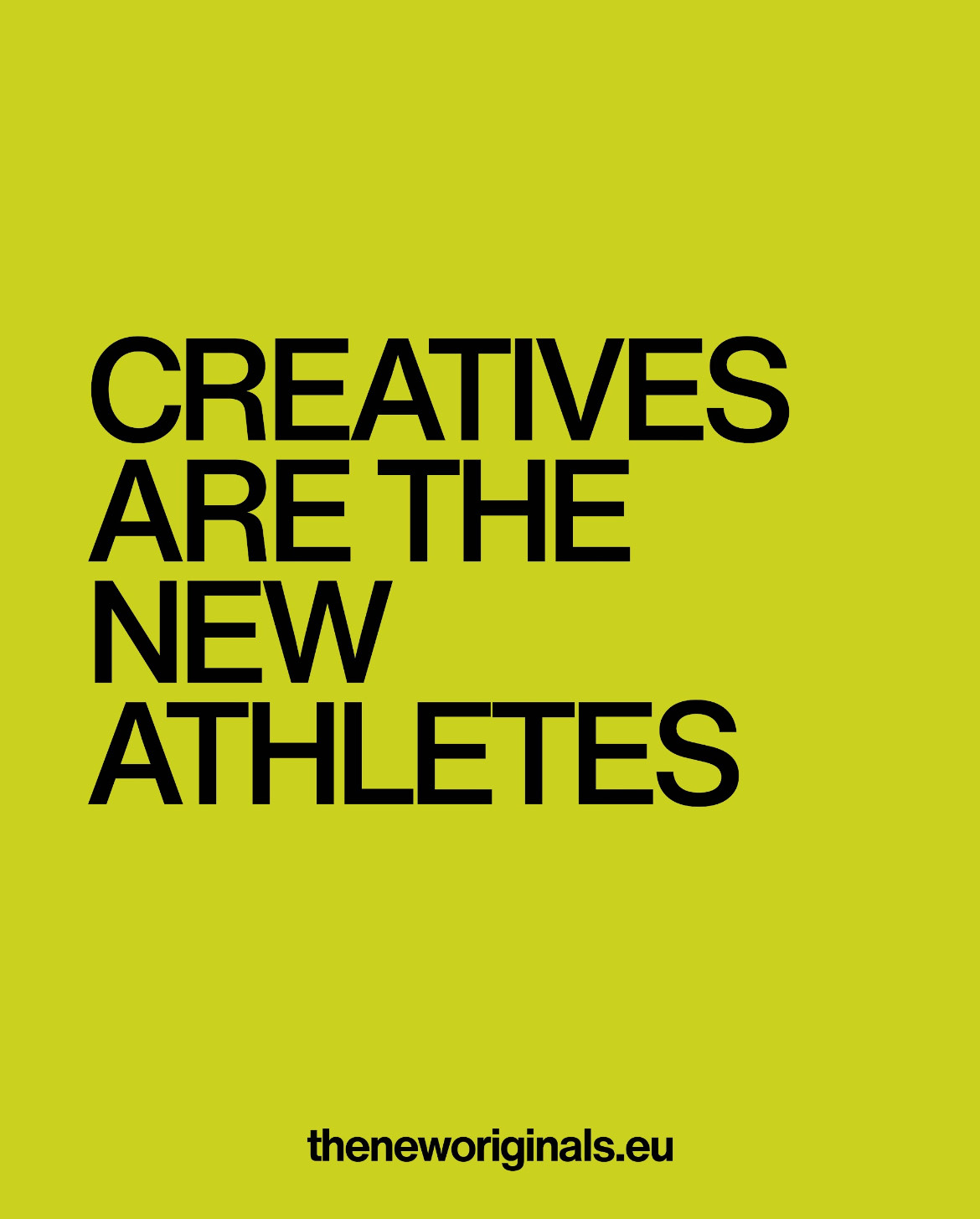
Deeds: We’re coming up on the 10th anniversary of The New Originals. Looking back at this past decade, how does it feel to have reached this milestone?
The New Originals: We're grateful to have made it to the double digits; that's an achievement to be proud of. Throughout all these years, the team expanded and went through many different phases that each taught us so much. Looking back, we had the early days, then the foundational years in the middle, and the phase we're in right now. They're all so different from each other.
We added new ways of working, tried a lot of things out, and learned so many things from distribution to finance and production—you name it. A decade feels long, but the most recent years have been the most intense. We're grateful to be here still, actively building and breaking the stigma that working with friends or family is too challenging.
Deeds: Speaking of challenges, what are some obstacles you’ve faced, and how did you overcome them?
The New Originals: When you get started and release your first drop, there are no expectations. You have the freedom to build from scratch, and everything you do is cool because it's a first. But once you're a few years in and others depend on you, pressures and expectations start growing. It's not just about having fun anymore; you have to provide.
The target shifts, and you operate from a different mindset where you ask yourself questions like 'can we do the same thing as last year, can we top it?' That's a challenge. A lot of the obstacles we've faced are part of running the business. Let's say a factory makes a mistake and we discover it too late, or we have stock that we need to clear by getting creative and printing something on top to sell still; those things are minor. Sometimes you have to absorb a loss. Bigger obstacles would be when we have ambitions that the market responds to differently.
Those are the more significant ones in our case, mainly because we're very active in B2B. It's an ever-changing industry where we constantly face new obstacles in terms of what the customer is buying, the direction in which the industry is developing and which influences are at play. As a brand, you have to be versatile and able to adjust.

Deeds: What was your initial vision when you first started? Has that vision evolved?
The New Originals: We've always stayed the same course. We still talk about and stand for the same things, which is building a platform for creativity and young talent, being the builders of a stage that gives others room to perform. Those things are deep in our core. That core and that mission have always stayed the same, but the means or the context have changed a bit. There was a time when we said we would never do personal interviews because we wanted the brand to speak for itself, and now we're sitting here.
When you're building an organisation and people start to trust you, the game changes, and you need to give back. We also used to say we would never make clothing in simple colours like black or white, only in crazy and playful ones, but that changed as well. As time goes on, it's not strange that style, taste and mindset shift a bit. After all, we're 10 years older than we were when we first started!
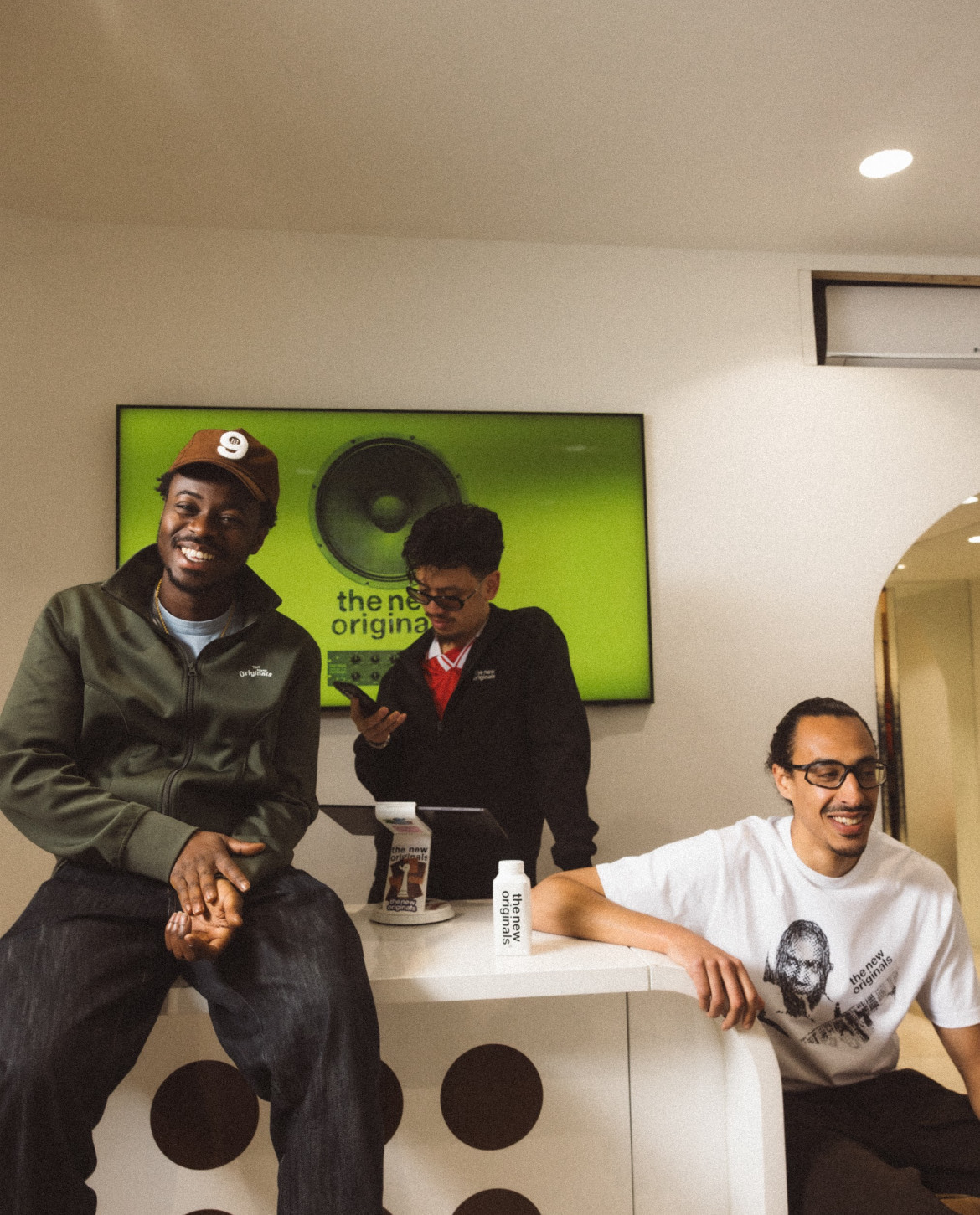
Deeds: Your slogan is Think Outside of the Box. How does your approach reflect this ethos?
The New Originals: If you look at the three of us, it's not just a business we're running or a brand we're building. It's not work, it's our life. The mindset of thinking outside the box starts with the drive to keep going no matter what. None of us is from an academic background, so we learn as we go. If you look at that process, it's a lot of trial and error. But that's also part of this ethos. And we want to spread the word that, no matter the domain or industry, great stuff can come from effort and daring to try new things.
How this comes back in the company is often in the type of decisions we make. We run our warehouse, for example. Thinking outside the box also applies to the subjects we discuss, which are close to us and our passions. Ty is a bit unconventional to some, like connecting chess and board games with fashion, showcasing our collection in a short film or being part of a festival, but we like to take risks with some of the things we do. These are all things that are unnecessary or uncommon if you think of what a fashion brand is traditionally supposed to be.
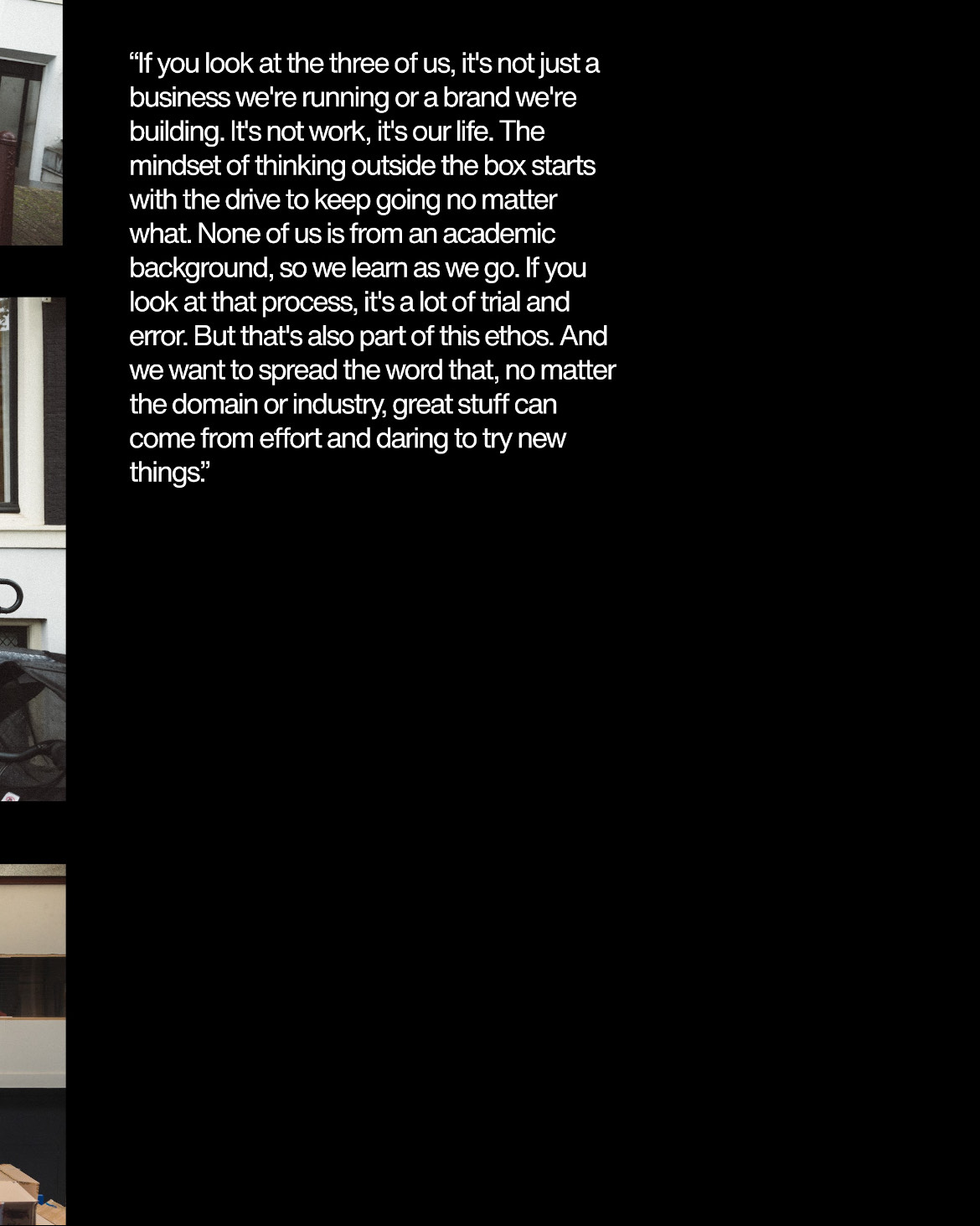
Deeds: On the subject of going beyond fashion, you built the TNO sound system in 2017. Where did that idea come from?
The New Originals: We built the speaker wall in 2017, but the sound system has a more extended history that began as a DJ collective until everyone in that collective eventually focused on their own paths. By building that wall, we didn't want to create a revival of this DJ collective but a reference to sound system culture, which has always been a part of our ethos and wanting to bring people together. At the time, it felt like sound systems were just reduced to DJs, which diluted the idea of where this culture originated from. Now, it's back in the mainstream conversation, and several brands have a sound system. We're super happy to see this rise in popularity again because we've used ours more in the last year than in the three years before that.

Deeds: We can’t talk about TNO without talking about Zeedijk. What does it mean to have your flagship store there?
The New Originals: We were very specific about this location. For context, you have Chinatown, the red light district and a lot of Amsterdam history there, but it wasn't always the destination that it is now. Patta made it the place to be, and then we got invited to be a part of Zeedijk 60 together with Bonne Suits and Sumibu. Zeedijk 60 was like an embassy for kids who didn't know where to go in the city centre. At that time, we were quite a small brand, so we gained a lot from having that shared physical space. What this street is to the kids now, that's what Kalverstraat and Nieuwe Dijk were for us 15 years ago.
Eventually, we started growing and doing things that required more space, like building a five-by-five life-sized chess set. Within the same year that we were still at Zeedijk 60, we opened our flagship next door because we needed the extra room. The store's opening day was beautiful and took over the whole street. It also felt like people were just as happy as we were to see us take that next step there.

Deeds: As an Amsterdam-based brand, how important is it to represent your city globally?
The New Originals: Amsterdam and the Netherlands aren't exactly considered a top-tier country when it comes to fashion or clothing compared to other cities and countries. We're the underdog, but you can benefit from that misconception. When people think of the Netherlands, they also have a different image in their head than the three of us walking in. We have a different story to tell about this place we call home. We can show you something that you wouldn't see or find otherwise.
The first time we went to a Fashion Week was in Berlin, and we felt a sense of Dutch pride there. It was almost like we were representing our city. With all of these new emerging brands now, there's also this element of wanting to support each other and bring the whole gang. Going to a city like Paris and making people there realise that Amsterdam has character feels good. We have something to say and something to add.

Deeds: Between the three of you, how do you split roles and responsibilities?
The New Originals: It's ever-changing because we keep growing and learning, but each of us has our strengths. There's Eben's creativity, natural feel and impulses, Rizky's focus on strategy and organisational processes, and Maru, who navigates a lot of our collaborations and conversations with third parties, is great at putting thoughts and ideas into words. Eben and Maru work on the concepts together in the beginning stages of a collection, while Rizky streamlines the processes. It's a balance of helping each other but also butting heads at times. Sometimes, spontaneous impulses can interfere with the processes, but they can also be such an impactful factor that they entirely change the course of a project for the better.
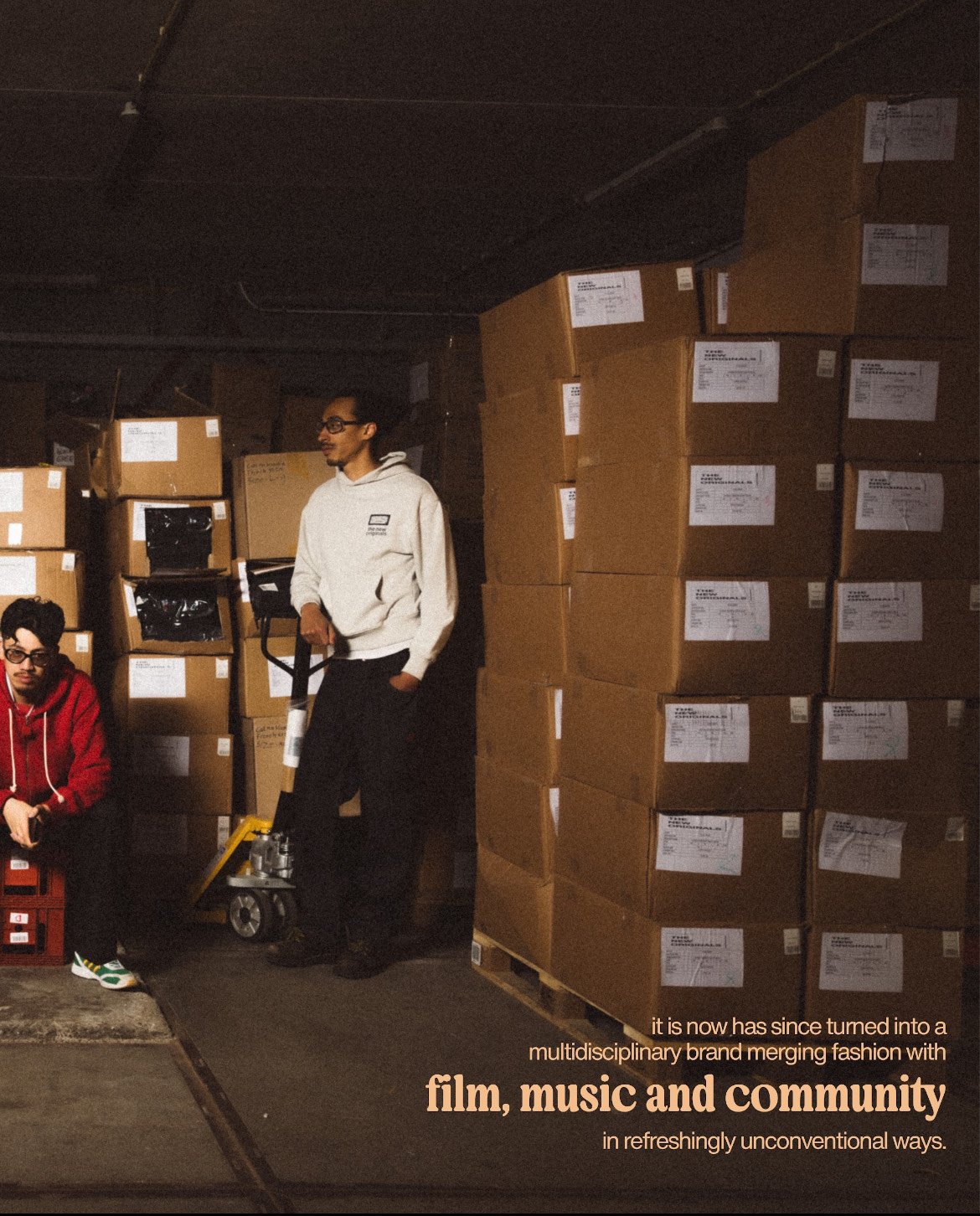
Deeds: Let's talk about your visual storytelling. From your SS25 campaign to the short films you've put out, your visuals are powerful and intentional. Why is it essential for you to visually expand the TNO story beyond just clothes?
The New Originals: Our ideas are visual first. They always say something about us and who we are. We didn't want to make the brand about us, but we did want to make it about the things that move us or are important to us. The culture, the lifestyle, the people—those are the main reasons why we're here. A lot of the visuals we create are made with starting talents. We need something, and we have the idea. There's a new talent that needs to make work - let's go. For them, it's a moment to work on their craft, and for us, it helps us bring our visions to life. These things are important to us because we don't know anything but telling stories together with the people who inspire us.
We're not fashion designers who are trained in the craziest cuts; that's something we're learning. We're also not the most skilled businessmen; we're still learning that as well. At our core, we're just storytellers who love to hang out and exchange. The first connection between us was our shared interests, which is what brought us together.
We have a lot of conversations about efficiency, where we discuss things like how much attention we want to pay to the visual identity versus how much time we spend on the essential but fundamental processes that a clothing brand needs to stay alive. Our message and our story can only be amplified if we keep the business alive and growing. We cannot make bigger projects if we don't grow. This may go back to the question about obstacles. The moment we lean more towards commercial, it feels like we need more storytelling, but when there's a lot of storytelling with less commercial success, we're like 'yo what are we doing, we're not a gallery'. There's always a balance to be found.
Deeds: Some of your most popular pieces are the CATNA designs. Did you anticipate how iconic it would become?
The New Originals: The slogan was an Instagram caption that Eben came up with for a post about a fitting day we organised with 150 young talents and artists from Amsterdam to showcase a new collection. We had set up this creative exercise—an experiment. Eben took a picture and wrote 'creatives are the new athletes' in the caption. From there, we eventually put it on a t-shirt and decided that it had to be a part of our collections moving forward. What's so special about it is that it wasn't intentional at all, and now it's become this whole thing. We learned that you can't plan or anticipate such an authentic impact. It just naturally became a part of the story.
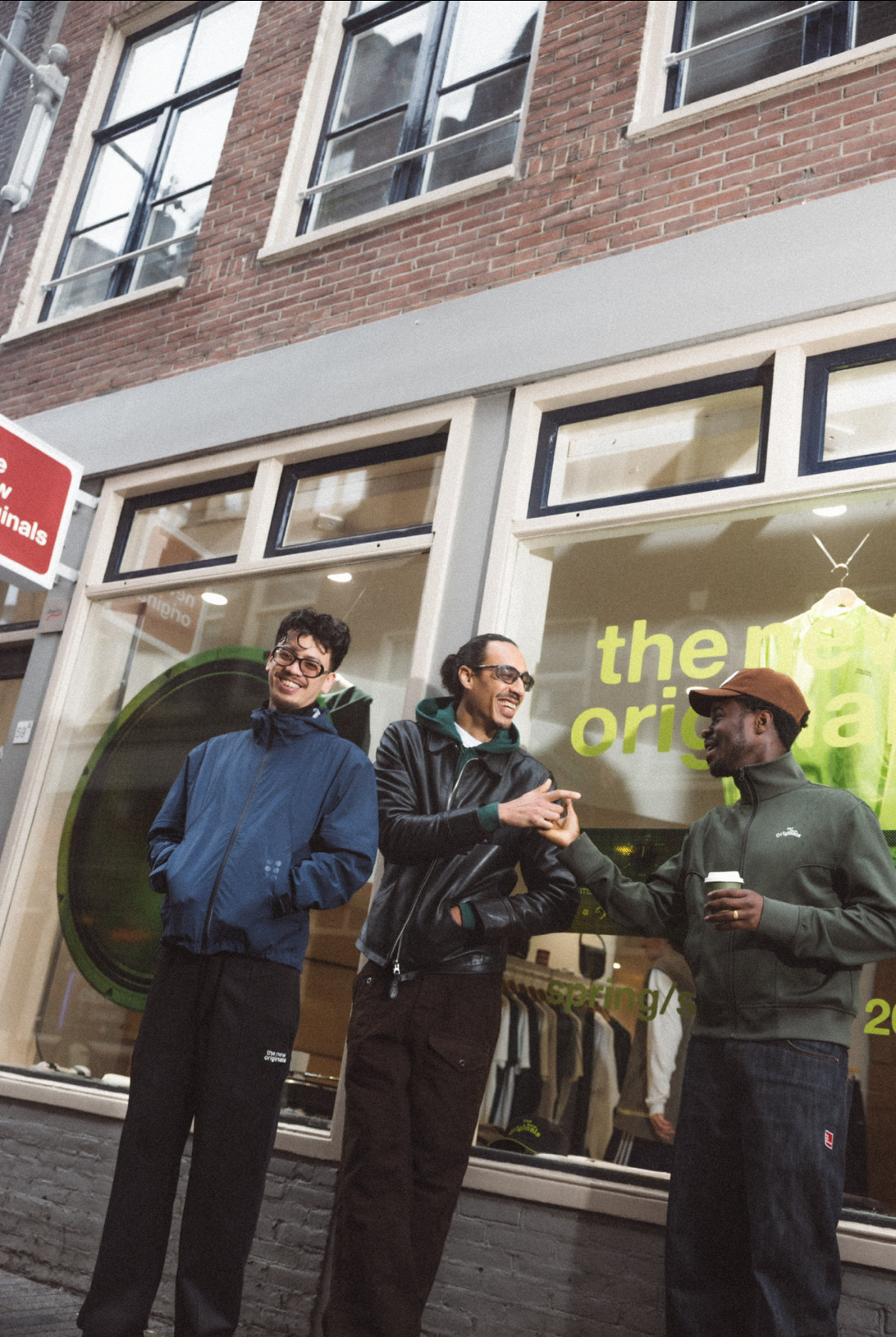
Deeds: Are there any dream collaborations you’re working towards?
The New Originals: We've collaborated with brands and collectives like The Voodoo Club from Barcelona, Free The Youth from Accra and Broke Boys from Cape Town. What's special about these collaborations is that neither side may be huge in terms of numbers. Still, we understand each other on some level because we're on the same mission and doing similar things, just in different cities.
Revenue and numbers, of course, matter, but for us, it's really about this ecosystem of creative people and collectives that are building something meaningful in their respective cities. You recognise yourself in the other. Those are the types of partnerships we want to keep expanding because there's so much substance beyond the product. Bigger brands come with nice opportunities, and we would like to grow in that direction as well, but those often feel more commercially oriented. We've just become very conscious of what fulfils us.
Deeds: As a brand that has always encouraged and stood for young creatives pushing the envelope, what word of advice would you give a young maker who is trying to build their own thing?
The New Originals: The red thread in a lot of what we've been saying is that the stories we tell or the things we capitalise on at times are part of who we are. Who you are is not something you run out of. You can try to be something else, but at some point, there's a limit. From our experience, taking inspiration from what makes you and where you're from is never-ending. You can keep telling those stories because it's something personal. With that, always stay grateful for everything you do. If you sell your first 10 t-shirts, be grateful for those 10, and that number might turn into 150 or 200 next time.
Deeds: If you had to choose one word that encapsulates TNO, what would it be?
The New Originals: Not one word, but CATNA - creatives are the new athletes. If we stick with one word, then Amsterdam.
There’s a creative flair and striking aura about how The New Originals operate. What seemingly started as an innocouous exploration of creative curisity has quickly blossomed into a decade-long movement deeply rooted in collectiveness and storytelling. From the humble streets of Amsterdam to prominent global stages, TNO is empahic proof that consistency begets rewards. As they venture further into prominence, we watch with a stern anticipation as they build a legacy with redefining creativity.
Nigerian singer and songwriter Chidozie Godsfavour Ugochinyere, better known as FAVE, broke through in the stillness of 2020 when viral freestyles cut through the noise and “Baby Riddim” cemented her as one of Afrobeats’ most promising voices, a blend of soul, R&B and raw honesty. Since then she has carved her own lane, collaborating with Olamide on “PonPon” and “Want” and with Davido on “Kante”, while keeping her writing intimate and emotion first. Now, on the cusp of her debut album, Global Afropop superstar Yemi Alade sits with FAVE for a candid, cross generational conversation about artistry, ambition, softness, strength and navigating the spotlight as African women in music today.
.png)
Yemi Alade: Most times your songs explore romance and vulnerability, and also have a subtle strength, especially in the texture of your vocals and how you transmit those emotions with your range. How do you balance softness and emotional honesty while still holding on to the parts of you that need guarding? How do you create your art, as music?
FAVE: For the most part, my emotions are usually heightened, which people mix up with being someone who just cries a lot. The difference is I feel every emotion very deeply, almost too highly. In my songs, even if you can tell the story I am talking about is sad or dark, the way my voice delivers things always seems like, “Oh yeah, this is someone who is strong,” talking about this particular type of situation. There is a lot of strength in my voice. That comes from how much I feel things. I am not the kind of person to have an experience that passes me; I always feel it in a very, very deep manner. So I translate that in my songs, and I try to make sure I can let the listener feel that emotion as well.
.png)
Yemi Alade: I think that is very beautiful, for you to feel that side of yourself and be able to translate that into music. Inasmuch as you say you may be singing a sad song but it sounds strong, I feel like there is strength in being able to sing the things that people keep on the inside. It is like speaking your own truth; the truth can never lie. That’s really beautiful. Omowunmi, when I started off my career, the one thing she told me is that anytime I sing a song I should make sure that it is true. If it is a sad song, I really need to sing like I am sad; it’s called emoting. I feel you are very good at emoting, especially when you go on sad songs, even when you sing, am I supposed to dance or cry?
Yemi Alade: Either way, you are an emoter. Feeling emotions the way you do is a blessing. I am the same, oh.
FAVE: I know now, Pisces.
Yemi Alade: Are you a Pisces? You’re a March baby?
FAVE: Yes! Our birthdays come after each other.
Yemi Alade: We’re actually even birthday mates. Forget it, it’s over!
FAVE: That’s why we are one and the same.
Yemi Alade: You hinted you were going on your very first tour. How does it feel to go on your first tour outside of the motherland?
FAVE: Going on tour for the first time is something I have been waiting for, for a long time, patiently, not anxiously. When it is the right time, it will be the right time. I didn’t want to rush things. That paid off because a lot of artists starting off don’t realize tour is a lot of money; production, styling, traveling, accommodation, and you have to cater for the other people on the road with you. Most people are in a hurry to tour: “Yeah, my song is popping; let me go to Europe, let me go to America,” but if you don’t have sufficient money, you almost won’t enjoy yourself. You might end up in debt. When we finished the tour, we still had money to pay people.
It wasn’t a huge tour. Out of ten cities, we went to seven. I figured I should be the only one on stage; traveling with a band would not be cost effective. So we did new productions of songs I already had on streaming to make them sound live, a reconstruction of the beat. We got a music director to arrange the songs with a live band. I did half my set live with no backing track, and the other half with the track; I was doing mostly dancing and singing. I paired the two sides of myself: the side that loves to sing with nothing underneath, and the side that wants a party, a dutty party. This tour let me show both sides, calm and collected, and high energy, very ragga, in love with dance and upbeat music. I enjoyed myself on tour.
I will put my money toward a band or anything that adds to the music experience, as opposed to what I look like. What’s important is my connection with the people on stage, the music. Wearing shoes that I can’t move in, I don’t want that. I am at the stage of small halls, 500 people. I want to enjoy this stage before things get bigger.
.png)
Yemi Alade: That is a very beautiful unraveling of events. It is important for every musician to go into the world, experience things, and make their choices. Some artists will wear their home clothes instead of investing in styling because you are fixed on the vision. You are such an intelligent musician. I feel a lot of artists are losing their musicianship, it is dying because they are not watering that flower. I am happy you intend to water it. I pray all the means you need will come in the exact quantity you need. What are five things that are always in your bag, show night or daytime?
FAVE: My wallet with my cards. Makeup, because you never really know; you have to touch up here and there. Chewing gum, because the night goes on and then you’re like, “I need a fresh breath.” A pocket perfume, those small samples. My phone. And if I am going to the beach, I would probably put in…
Yemi Alade (at the same time): A pair of glasses.
FAVE: A book.
Yemi Alade: I never read at the beach before; that’s another level!
FAVE: I think because I’m in the U.S., I am seeing the other side to culture; normally I would never do that.
Yemi Alade: I took a book to the beach once to shield myself from the sun. It did something.
Yemi Alade: On tour, what was your favorite city; the one you felt you really connected with?
FAVE: Amsterdam!
Yemi Alade: Amsterdam is iconic for me too! Don’t tell me it’s the weed… don’t tell me it’s weeeeeed.
FAVE: It’s not! Amsterdam is amazing. I enjoyed myself from beginning to end. The reception from the crowd was shocking; hearing them sing word for word. It felt like we were performing together. New York was really good; D.C., too. But Amsterdam was different. The energy felt like Lagos, your own city. After the show I took photos with a lot of people; it was nice to connect outside the stage. Why was it your favorite?
Yemi Alade: On my first European tour, that was my last city. I discovered they are very in tune with African culture. You see posters around the city with white chalk marks, African musicians. They love Fela. They are rooted in the history of Afrobeats. And they want to sing your song to you, like they are performing for you. Every move you make is appreciated. It’s like there is a connection you can’t see, vibrations. Amsterdam has a very high vibration.
.png)
Yemi Alade: What’s your dream city to perform in that you haven’t yet?
FAVE: I don’t have a venue. Growing up, I never took interest in venues; I just knew big stage or small stage. It was last year I found out what Madison Square Garden was; I am vibing. But Brazil, because people say Brazilians are willing to dance to anyone’s music and accept anyone. It’s about people knowing how to connect with your music. They are receptive; their ears are open. With a Nigerian crowd, sometimes people don’t listen; they wait to vibe with the most popular song. I’m chasing places where I can convert people who’ve never heard of me before. I want to sing to a crowd in love with music so they discover me and we connect. That’s what I want to do with my life.
Yemi Alade: That’s beautiful. You’re describing festivals. Abroad, everybody leaves home to have fun. They receive you whether it’s slow or fast. I can’t wait to see you at festivals. Brazil is fun to perform; I’ve been three times, São Paulo and another city. They will rock your world. They have Yoruba ancestry; they are rooted in the culture and rhythm.
FAVE: Exactly! That rhythm. They have it in them as well.
Yemi Alade: The favela is kind of like the ghetto. They have nice things there. I can’t wait for you to go and enjoy it.
FAVE: Anyone reading this, you need to buy me a ticket to Brazil.
Yemi Alade: Direct, please take her to São Paulo.
FAVE: São Paulo, I’m coming for you.
Yemi Alade: But don’t go anywhere they tell you not to go.
FAVE: I am an obedient tourist; my stubbornness hasn’t reached that level.
.png)
Yemi Alade: Every artist has emotions or sounds they usually don’t indulge. Since you have a new album coming, are there sounds you previously weren’t a fan of that made the album?
FAVE: : Yes. Growing up on music, I always felt Afrobeats was something I would never do. I felt the pace was too fast for me and it focused too much on rhythm and beat and less on lyrics. I’ve always been in love with deep music; Adele, Sia the poetry of it. My first single, “M.O.M.M.S.”, in 2019 is very slow, very lo-fi. In 2020, when COVID hit, I decided to try something new. I tweeted for producers to send me beats, and I posted videos on Twitter. That’s how I met Afrobeats producers. I started writing a lot. “N.B.U” popped after a freestyle went viral; that was my first Afrobeats song. From there, I realized I don’t have limitations. If I connect with a sound, I’m eager to do what I can on it, because the vibe I bring isn’t something anyone else has brought before. Now I don’t say no to a genre. In sessions, when producers ask, “What genre?” I say, “Play me anything.” I have a song on my project called “Afrobeats.” On it I’m talking about how I dey run from Afrobeats but Afrobeats still comes to look for me. As an African, you can’t really run from it. It’s in your blood. Foreign instrumentalists sometimes find our rhythm difficult, but tell any African player, “Play pam pam parampan,” they get it. There’s a connection in our blood. I need to explore that. So it used to be Afrobeats, but no more.
.png)
Yemi Alade: That is beautiful. I hear the soul in your voice. What about songs inspired by a movie, a book, a random conversation, a third party point of view, anything that didn’t happen directly to you? Is there a song like that on your album?
FAVE: Let me think. I have to list the album songs in my head.
Yemi Alade: Take your time. Was everything written purely on your experiences?
FAVE: I think so. Honestly, it’s hard to tell. I absorb things easily. Some experiences I’ve seen and registered with me could end up in a song, mixed with my experience. For the most part, these are my stories. There’s a song where I’m telling people to awaken their “rude government.” I got to a point where I felt people come and go. Time is fickle and precious. If there’s something you want to get done, do it. That’s the rude awakening. Get up and move. You don’t know what will happen tomorrow. Use the time, the people, the resources in front of you. Explore. Go out. Don’t limit yourself in the name of “I have time.” I want people to listen and feel like, in some way, they know who I am.
Yemi Alade: Lola Young. Her song “Messy” was the first I heard. She just released “One Thing”. I’ve been following her since I discovered her. She is different to me out of the box, unconventional. Her voice is not conventional. Sometimes she talks while singing and then goes back. It’s amazing. I know you’ll like her if you check her out. She toured recently and dropped a video for the new song very unconventional. Usually, when it’s time to shoot a video, people expect us to look cute, be beautiful, and be a woman. I love when women push the boundaries and do crazy things. You’re not so concerned about looking pretty because you already are. If the story you’re telling has to get you bloodied or tattered to pass the message, then that is what we have to do. That song and video push me to be more unconventional as an artist, which I’ve always wanted. Besides that, her music is amazing. She’s my number one dream collaboration.
Yemi Alade: Have you established contact with her yet?
FAVE: No. I don’t even know how that’s going to happen.
Yemi Alade: Sometimes you put it into the universe and people echo it and it finds its way to you.
FAVE: Yes, I am putting it out there.
Yemi Alade: Most times, people prefer that women in the industry are not opinionated. They want us to focus on aesthetics and be pretty and quiet. How have you coped with that? What’s your advice to women who will come after you?
FAVE: Whatever you feel you want to say, your opinions matter. We’ve come too far to be quiet. Being emotional, intuitive, and observant doesn’t serve the world if we can’t say what we’re feeling. I am opinionated, and sometimes it bites me, but I would pick that over being quiet. Closed mouths don’t get fed. You can end up five years down the line in a career you haven’t been 100% in because you were trying to make others happy. Say what you’re feeling. You have the same rights. It’s not fair when you feel a type of way about something and don’t say it.
In the industry, especially with men, it can be shocking to see how they react when you insist on something. In Beyoncé's tour documentary there’s a scene where she told a guy the camera and lens to use. He said he didn’t have that lens. She asked again, “You don’t have that lens?” He said, “We have it, but we thought we wouldn't need it.” She said, “You need to get the lens.” That happens often. Sometimes a man feels like your opinion isn’t valid because he thinks he’s the expert. You find yourself repeating things or explaining when you shouldn’t have to. We should trust each other and do what’s necessary especially when it concerns a woman. Say your mind. Be respectful, but say your mind.
Yemi Alade: The media and even sweet fans try to pit one artist against another. I’ve experienced it. I’m sure they’ve tried it with you. What is your message to the media?
FAVE: The media has been this way since the dawn of time, clickbait, ways to make money. It’s worse for women. They don’t accord the same respect. They act like there’s only space for one woman, which makes no sense. You have all these men, and you’re not pitting them unless there is cult beef between fans. With women, it’s like there can only be one queen. That’s my issue with the blogs. Women are the prize. Too often here they think women are inferior in music or entertainment. In the rest of the world women hold the baton. They don’t realize how powerful a coalition of women can be. My note to them is simple: just watch and see. With time, we ourselves are going to change things for the better.
.png)
Yemi Alade: To wrap up, if you could describe your album in one word?
FAVE: Splash!
Yemi Alade: What’s the title of the album?
FAVE: I don’t want to say. I’ll tell you in private.
Yemi Alade: What should people look out for, what’s the “It” factor?
FAVE: Me. I’m the “it” factor.
Yemi Alade: Hey, wahala oh!
FAVE: This is my first album. I don’t know what people are expecting, but whatever it is, the album will supersede it. I am putting my entire everything into the project.
Yemi Alade: How many tracks?
FAVE: I feel it’s going to be 12, but anything can happen and we might add one more for an intro. But it’s going to be 12.
Yemi Alade: That’s my hardest part, the selection, because I’m attached to every song. Most times I wish I could step out when the team is selecting, but if they pick, I’ll come and be against everything.
FAVE: You’re like, “Oh my God, this song is not there.”
Yemi Alade: Yes, yes, yes. So the best way is for all of us to choose it together, je je. We had such a great conversation. You’re kind to have shared your thoughts so openly. I hope the best for you. I can’t wait to experience you on stage, and eventually both of us on stage at the same time.
FAVE: Thank you for taking time out of your schedule to do this interview. I would have preferred nobody else but you, to be honest.
Yemi Alade: Thank you, my sweet potato! You’re so sweet, FAVE! Honestly, you are really sweet. I appreciate your personality and who you are. Abeg, try not to change. Don’t allow this bitter world to change you. You are a sweetheart. I pray the best for you always. Keep doing you, my darling, plenty money coming your way, abeg, plenty money. Bye, darling.
FAVE: Bye. Thank you, my queen!
Deeds Magazine is honored to bring you this rare meeting of minds between Yemi Alade and FAVE. As they compare notes on vulnerability, touring, genre boundaries and finding their voices, you can hear their shared commitment to authenticity and a fearless desire to push the culture forward.
Photographer/Producer: @debraorols
BTS/Video: @colematthews408
Styling: @Elsshaban for @7thstreetshowroom
Makeup: @charismaraye
Graphic Designer: @shalemalone
Management: @savingsoft
Record Label: @atlanticrecords
One way of viewing an artist's career in its entirety is to consider it through the lens of the canon events that spangle its tapestry. Take the case of Ye, who is perhaps Hip Hop’s most notorious provocateur. His career is typically bifurcated into his pre and post Life of Pablo eras—the period in which the album was released is considered by many as the start of his inexorable unraveling. For BurnaBoy, who is one of Africa’s greatest exports, the period in which he released his 2018 globe-trotting hit Ye, is considered to be the start of his ascent to global superstardom—and by effect, his most significant canon moment.
By this measure, one of the most effective ways to consider Gunna’s oeuvre would be to split it into two categories: projects before and after his 2022 RICO charge, which involved more than 27 others affiliated with YSL Records, including Young Thug, who at the time was Gunna’s close friend and label boss.
When in December of 2022, after spending 7 months in jail, Gunna was released after pleading guilty to one charge of conspiring to violate the state's Racketeer Influenced and Corrupt Organizations Act, he began another kind of interment, this time swapping the physical bars of a jail cell for pariah status within his immediate community. The reasons for this shift are various, the most significant however is that many interpreted his plea deal as evidence of him having cooperated with federal agents, even though he has refuted this claim. Since regaining his freedom and facing the attendant blitz of criticism lobbed at him since then, his music has commensurately taken on a dark, brooding tenor.
In Bread and Butter, from A Gift and a Curse—his first album after his RICO charge—he’s wistful, solemn, as he reflects on flaky relationships and makes a case for his innocence. “I had been down bad inside a dark tunnel,” he sings over melancholy chords. Later in the song he sings “Never gave no statement or agree to take no stand on 'em/ On whatever you niggas on and trust me, l'ma stand on it.” His desperation to be heard, to be believed is palpable in these lyrics. Likewise they elicit a visceral reaction in the listener: we all know the feeling of being misunderstood or worse—falsely accused. In The Last of Wun, he’s still addressing these interlocutors but where in A Gift and a Curse he offers desperate entreaties, here he’s rapping with a chip on his shoulders, meeting the scorn from his antagonists with equal derision.
It’s telling that a lot of the album finds him rhapsodizing about his opulent lifestyle and how far he’s come—themes he frequently plumbed in the period before his RICO trial. But while he interrogates familiar themes he does so with a newfound confidence that bespeaks maturity. “Live my life like a movie, how I do it, you can imagine/ I spent trip this winter in a jacuzzi, in the cabins,” he raps on Let That Sink In, a slow-burning track in which he cheekily dispatches subliminal shots at his antagonists and exults in his grandeur. Sakapse, gp, Just Say That, Him All Along, and the Offset-assisted At My Purest, find him in a similar register interspersing panoramic tableaus of opulence with cheeky taunts directed at his foes.
Wealth, particularly the obscene, bombastic kind, is a well-worn trope of Hip-Hop, having been explored by everyone from Jay Z to Lil Baby. As a result, it can sometimes feel vacuous, cliche. But hearing Gunna rap about speeding down the block in his black Maybach or splurging on watches in Zurich has the opposite effect. The glistening production and the intricate details he supplies confer the album with a cinematic quality. Take Sakpase. With a production that feels lush and whimsical in equal measure, listening feels like a late night commute to a party. You’re with a party of friends in a barely lit car, booze is flowing freely, as are other stimulants common at parties. It’s not so much the thoughts of the party that excites but the experience of being jointly steeped in anticipation for what the night might offer.
Some of the most exhilarating moments on the album arrive when he retires the playful jabs on songs like Let That Sink In in service of more potent blows to his foes. Listening to Podcast, for example, evokes the feeling of leaning up in your seat while playing a video game to get serious. In Biting My Game he derides his enemies for being “broke as a pencil,” and accuses them of “biting my game.” Across the song he offers boastful lyrics about his elevated lifestyle. But here, the intent is less about self-exultation than it is about taunting his foes. Herein lies the strength of the album. In the hands of a lesser rapper, this project would perhaps have spiralled into a reckless and frenzied display of vengeance, creating a project too toxic for a casual listen. Gunna however lacquers moments of vindictiveness with picturesque tableaus of opulence. The effect? It truly feels like he has moved on from the hurt he variously alludes to in A Gift and a Curse and is now living his best life.
KIARI, Offset’s third solo album, has just dropped, and it is an empathetic and emotional contrast to his earlier works. Offset embodies the adversities he has faced to this point, weaving his passion and pain into lyrics and melody. The project feels like both a personal diary and a proclamation of a new identity. This complexity gives the album layers, adding a depth that makes it distinctly powerful. Offset is intentional about the emotional focus he places on this project. “I named my album KIARI because it’s like me looking at myself in the mirror—my real life, how far I’ve come and what I’ve done, the good and the bad, the mistakes.” Throughout the 18 tracks, he intricately balances ambition with emotional vulnerability, each song contributing a unique element to the masterpiece that is KIARI.
The album is a refined blend of trap beats and textured backdrops. Offset doesn’t stray far from his musical instincts, delivering an album that is both emotionally layered and unmistakably his. Unlike his previous solo projects—Father of 4 (2019) and Set It Off (2023), which centered more on fatherhood, fame, and success—KIARI introduces novel themes.
One of the most emphatic emphasis on his personal struggles is encapsulated with “Move On,” where Offset reflects on his split from Cardi B to which he handles with notable maturity. The refrain “Tryna move on in peace” runs through the chorus, emphasizing his acceptance of the situation and his resolve for detachment. Yet he also hints that this peace may not be mutual. Lines like “Happy for you, why you ain’t happy for me” and “Not playing yo’ games today, we look like some fool” suggest conflict and lingering pain.
“Never Let Go” is another song on the tracks that carries deep introspection. It is a powerful tribute to Takeoff where Offset candidly mourns his loss and addresses this grief had impacted his life. “I lost my brother, but I gained an angel,” he declares. The song is both elegy and affirmation, showing his willingness to carry grief while moving forward. He underscores the physical toll of loss, rapping, “Ain’t been the same ‘cause this pain fuck up everything. I mean everything, I even lost the wedding ring.” Featuring John Legend, the track uses Legend’s soulful vocals as a vessel for raw emotion, heightening the song’s warmth and poignancy.
Although the album embodies Offset’s emotional journey, the trap genre’s trademark upbeat tempo sometimes undercuts the emotional storytelling, creating a tension between bouncy rhythms and affecting themes. This distraction risks the project being dismissed as just another Offset release, even as it strives to push beyond.
Still, KIARI is undeniably Offset’s most complex work to date. The ingenious blending of contemporary trap with authentic self-exploration reflects both artistic growth and emotional maturity. With this album, Offset fully embraces the solo persona, stepping out of the shadow of Migos. More than just a collection of songs, KIARI is an album birthed from adversity, a raw and layered body of work that cements Offset as an artist willing to turn personal struggle into powerful art.
Defying gender norms is in. Misogynistic thought processes, however, are proving harder to push out. At the 2025 Afrofuture concert, Nigerian artist Asake surprised fans with a cobalt blue pixie cut. Known for his wardrobe containing pieces from the women's section of clothing stores, as said in his interview with GQ magazine, Asake is persistent in his slight deviance from the gender norms. Asake’s look was hailed as bold, but it is obvious that men in the spotlight often embrace genderqueer fashion, simultaneously reinforcing the very stereotypes that continue to diminish women.
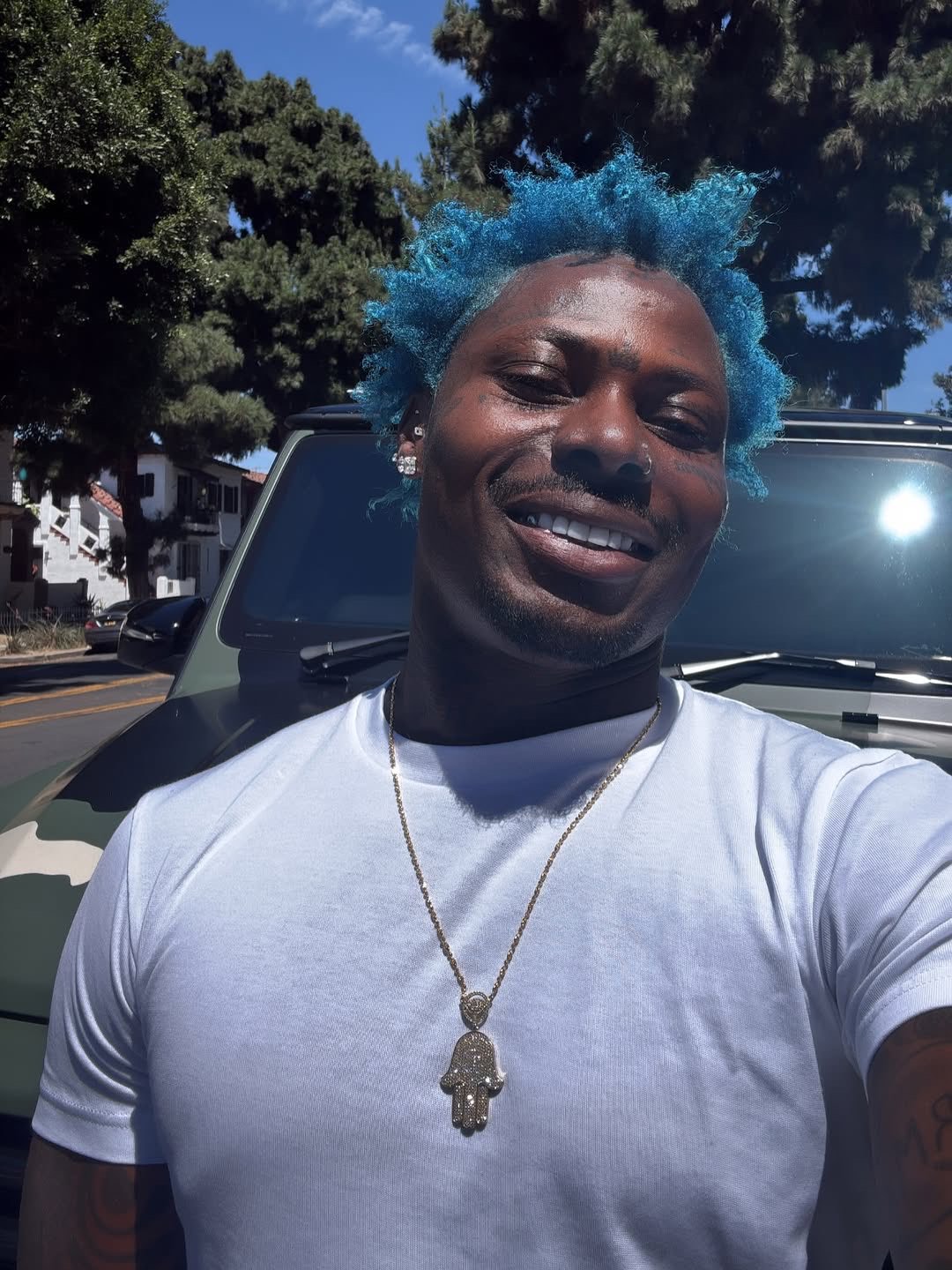
“Wearing skirts or pixie cuts doesn’t dismantle misogyny if you’re still holding up the walls that confine women,” said Lagos-based cultural critic Jumoke Adebanjo. “The issue isn’t men exploring feminine style, it’s that society praises them for it while still policing women who do the same.”
Asake isn’t alone. American rappers Drake and Kanye West have long played with silhouettes, accessories, and aesthetics that blur gender lines. Drake appeared on stage in painted nails and colourful cropped jackets, while West made skirts a centrepiece of his Yeezus era. Both, however, have faced scrutiny for lyrics that objectify women and perpetuate sexist tropes.
In fashion, Tom Ford pushed androgyny to the forefront, designing for both men and women in ways that merged sensuality with power. Yet Ford’s campaigns often drew criticism for treating women as props, further complicating the narrative. “Equal opportunity objectification” was his defence, one that did little to unsettle the underlying issue.
Fashion historians note that this contradiction has deep roots. Medieval Christian thought linked women’s adornment with promiscuity, marking feminine self-expression as dangerous. Those ideas echo today in the way society still judges women more harshly for clothing choices while praising men who adopt similar looks.
Experts warn that style alone cannot dismantle systemic sexism. “Men entering ‘feminine’ fashion spaces are celebrated as innovators,” Adebanjo said. “But when women own their femininity, whether through clothes, lyrics, or makeup, they’re often reduced to stereotypes.”
As artists continue to embrace gender-fluid looks, the next step must be accountability: ensuring that liberation in fashion does not mask regression in thought.
“Defying gender norms should be about breaking boxes, not just decorating them,” Adebanjo added.
Controversy—or more broadly speaking, being made into fodder for public discourse- is an occupational hazard of celebrity. Every public figure gets their share. In a sense, this penchant for dissecting and debating the minutiae of our favourite celebrities is as much a reflection of the innate human desire for gossip as it is a reflection of our tendency to venerate celebrities. We elevate them to standard fitting only perhaps for demi-gods. And so every lapse on their part takes on commensurate weight. Likewise, affronts to our favorite celebrities often come across as personal attacks, much like how one might feel aggrieved at a slanderous statement towards one’s religion or beliefs.
Tyla, like every other celebrity, is often the subject of public debate. But in recent times it has started to feel as though she is disproportionately affected by controversy. Last year, she was harangued several times by Black Americans who took offense at her addressing herself as coloured. The word “coloured,” you see has a different valence in America and in South Africa, where Tyla is from. While in America the word crackles with racist undertones that trace back to the Jim Crow era, in South Africa, however, the word is a common descriptor for people of mixed race. This misunderstanding however had her in the crosshairs of certain Black Americans. Her various wins at the Afrobeats category of several award shows have stirred controversy, as has her allusion that the chant “we wanna party” derives from South Africa.
This time, the commercial performance of her just-released EP We Wanna Party has once again centered her in public conversation. The project sold about 3700 units in the US in its first week, which has prompted chatter about her “decline.” Social media is awash with comments, some malicious, others concerned about the potency of her powers which in 2023 spawned her tour de force Water. Joe Budden, by way of his eponymous podcast, echoed the sentiment, which had been gaining momentum on social media, that her modest, if “poor,” commercial showing is the result of her having “fallen out with the Black community”-an allusion to her comments about being coloured. All of this then raises the question of whether Tyla’s WWP flopped and what to make of her career trajectory.
In answering this question it's first important to note that while Tyla has increasingly become a force within the American pop culture scene, she is not an American artist. She is from South Africa and presents herself as a global artist. So, using first-week sales in the US as an ironclad yardstick for gauging her success is entirely misguided. The second point to consider is that WWP is an EP with four tracks, two of which are pre-released singles. As it is an EP, the project also wasn’t propped up by the promotional expedients synonymous with pushing out an album.
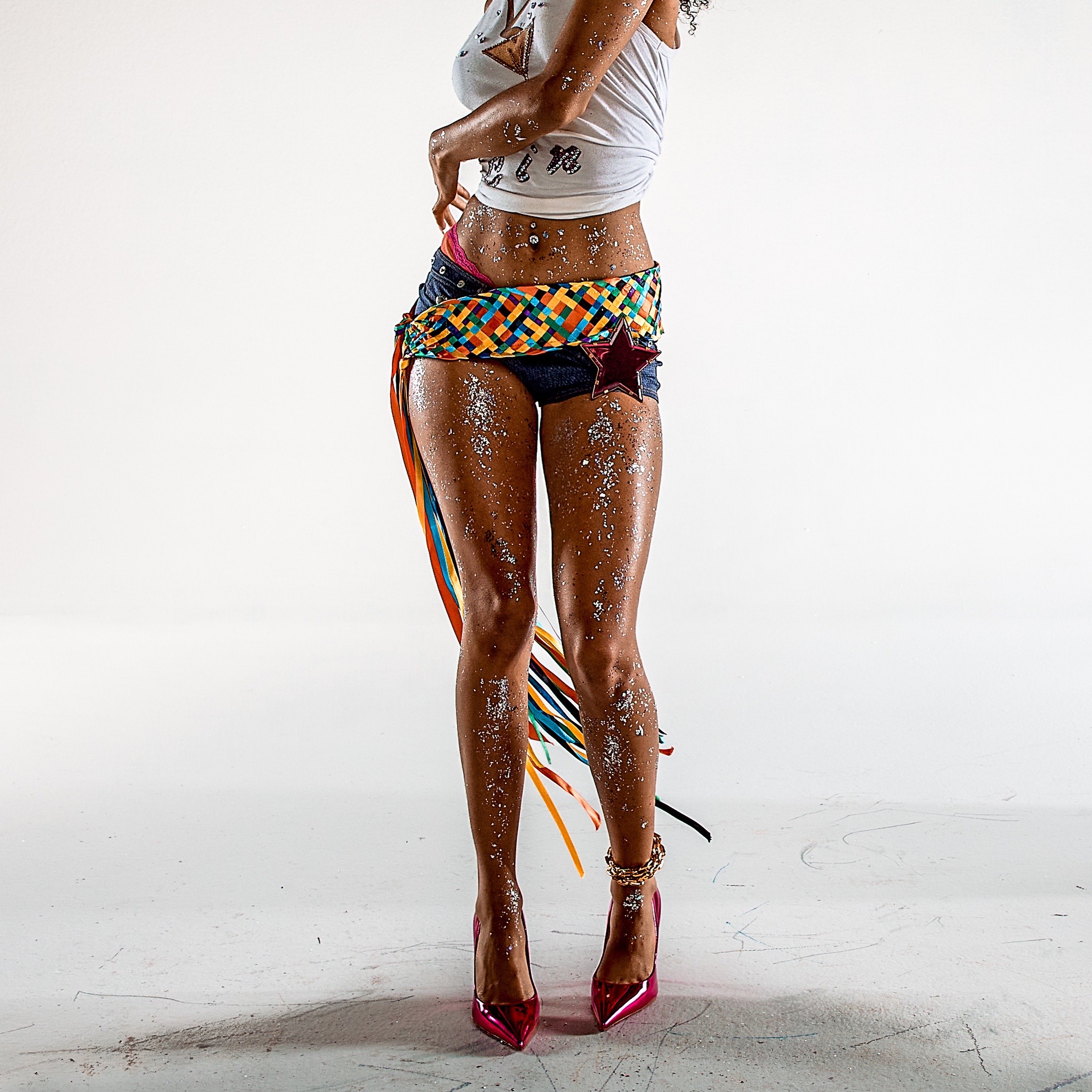
Having given nuance to the situation we can now look into the actual numbers. In its first week, the album tallied some 12 million on-demand streams on Spotify and crossed the 60 million mark on the platform (adding the extant streams of the pre-released singles.) These numbers are far from extraordinary but they are a far cry from the flop tag with which many have characterized the album.
If we similarly take nuance into account when considering WWP‘s first week album sales in the US, what turns up is pretty interesting. With around 24,000 units sold in the US in its first week, Tyla’s eponymous debut album is widely considered successful. But that number accounts for 17 tracks. Which means each track averaged about 1400 units. With 3700 units sold, Tyla’s WWP averaged 925 units per track, which is not astronomically far off from her successful album, which, by the way, had in it one of the biggest global hits that year. Another way to look at this is by comparing the numbers to similar projects by African artists. Wizkid’s 4-track S2, which holds the record of having the biggest first week sales numbers in the US for an EP by an African artist, recorded 4,500 units in its first week.
Putting all of this in perspective, for an EP with two pre-released singles, Tyla’s WWP is far from a flop.
It has been five years since Fireboy DML released Apollo, and yet, the memories of hearing it for the first time remain as vivid as ever. I remember that cold night, just me, my earpods, and the quiet anticipation of a follow-up to his already-classic debut, Laughter, Tears & Goosebumps.
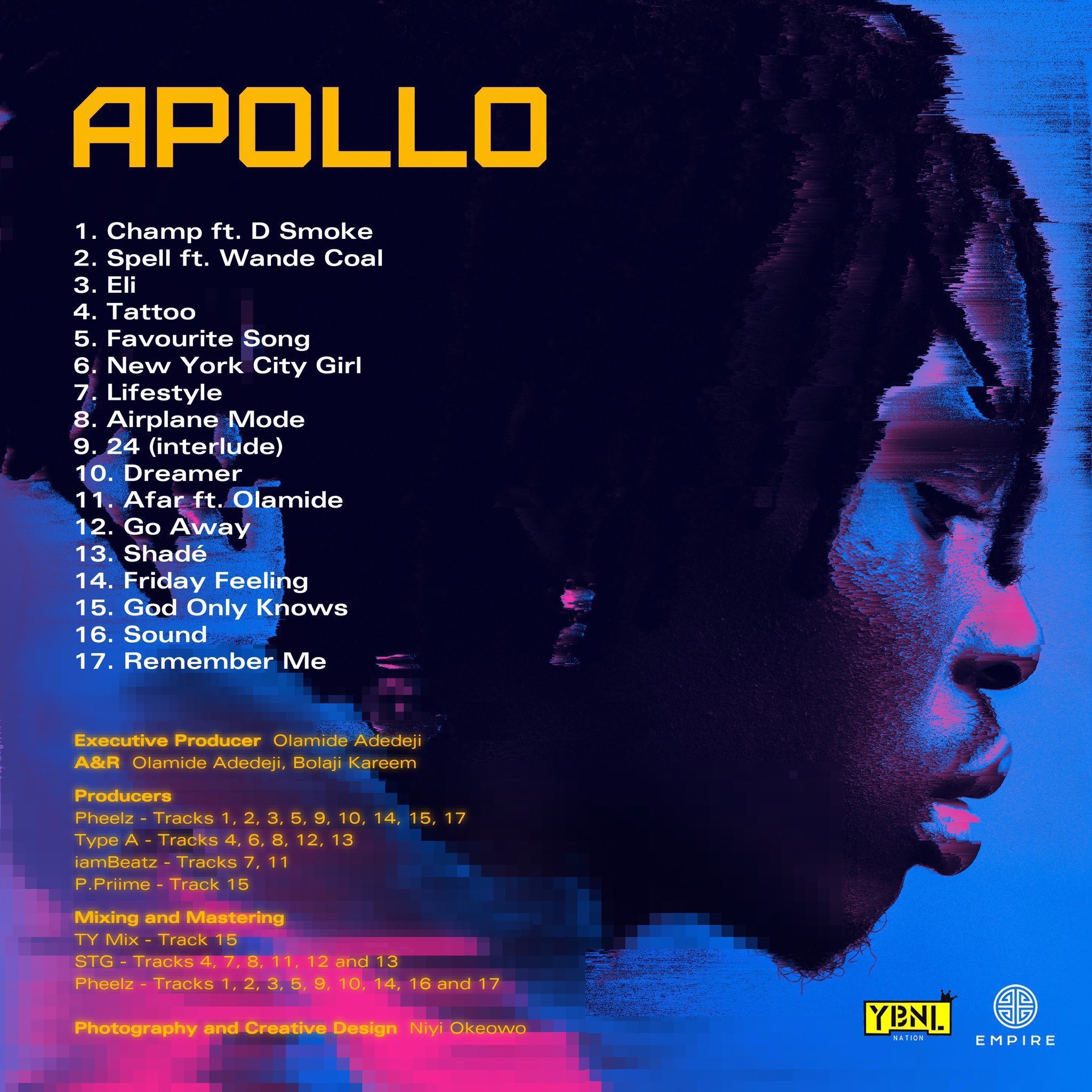
The moment Champion played, I rose from my bed, overcome with goosebumps, shivers tracing my skin. The sound was bigger than music; it was a revelation. Then came Spell featuring Wande Coal, a song that embodied its very title. I was enchanted, caught in its trance, unable to do anything but surrender to the rhythm. By the second track, the addiction had begun.
Eli and Tattoo pulled at hidden desires, weaving intimacy and longing into melodies so raw that I found myself yearning for connection. Fireboy wasn’t just singing; he was transmitting emotions, and I was receiving every pulse, every wave. By the time Favourite Song arrived, it was 2 a.m. and I was dancing alone, as though in a packed club. The project had already claimed the title of “favourite” before I even reached its halfway mark. Then came Airplane Mode, one of the most introspective records Afrobeats has ever known. Stark yet comforting, lonely yet inspiring, it spoke truths within the span of three minutes. Fireboy’s genius was undeniable, impossible to ignore.
Dreamer continued on that emotional axis, a ballad so tender it nearly moved me to tears. It was not just a vocal performance; it was a confession, a mirror for anyone listening. Few songs demand that you feel, but Dreamer does exactly that. And then, to close, Remember Me. A haunting finale that sealed Apollo as a body of work drenched in honesty, passion, and humanity.
This is not a review of the album—it is a recollection of emotions. A celebration of what artistry can do when it is honest and unfiltered. It is about remembering the way real music impacts the soul, the way Fireboy’s Apollo did, and continues to do, for countless listeners. Five years on, Apollo remains immortal in the history of Afrobeats. It was more than an album—it was a gift. And today, as we celebrate this masterpiece, we also celebrate the artist behind it. Thank you, Fireboy DML, for crafting a work so beautiful, so enduring, and so deeply human.
Touring has always been one of the oldest, most effective ways for musicians to grow, even before streaming and social media turned music into something we carry in our pockets.
In Nigeria, long before stadium shows and global festivals became the ultimate goal for most of our biggest stars, artists learned early on that moving from city to city, meeting fans in person, and performing for crowds that had only ever heard them on radio or cassette was the surest way to build something lasting. In the days when distribution was physical and promotional tours meant literally carrying your records from one radio station to the next, those who were willing to make the rounds found their names etched into the memories of people far beyond their home cities. University tours were a thing, and rightly so in those days.

Over the years, many Nigerian artists have embraced this approach, tailoring it to fit their careers and audiences. From the national roadshows of telecom giants in the mid-2000s that put dozens of acts on the road together, to self-funded campus tours, to label-backed promotional runs, touring in Nigeria has taken different forms but kept the same goal: to connect.
Runtown, for instance, was part of the 2017 Glo Mega Music Nationwide Tour, one of the most ambitious entertainment circuits of the decade, visiting dozens of cities and sharing the stage with some of the biggest names in Afropop. Mayorkun, early in his career, built a loyal following with his Mayor of Lagos campus and city runs, turning university fields and open spaces into screaming grounds for his growing fan base. Yemi Alade, although more associated with pan-African touring, has also made her mark locally, making sure to include Nigerian cities and campuses on her extensive performance schedules. Even smaller acts have understood that in a country with 36 states and a Federal Capital Territory, the audience is not just in Lagos or Abuja — the crowd in Makurdi or Calabar can be just as loud, just as loyal.
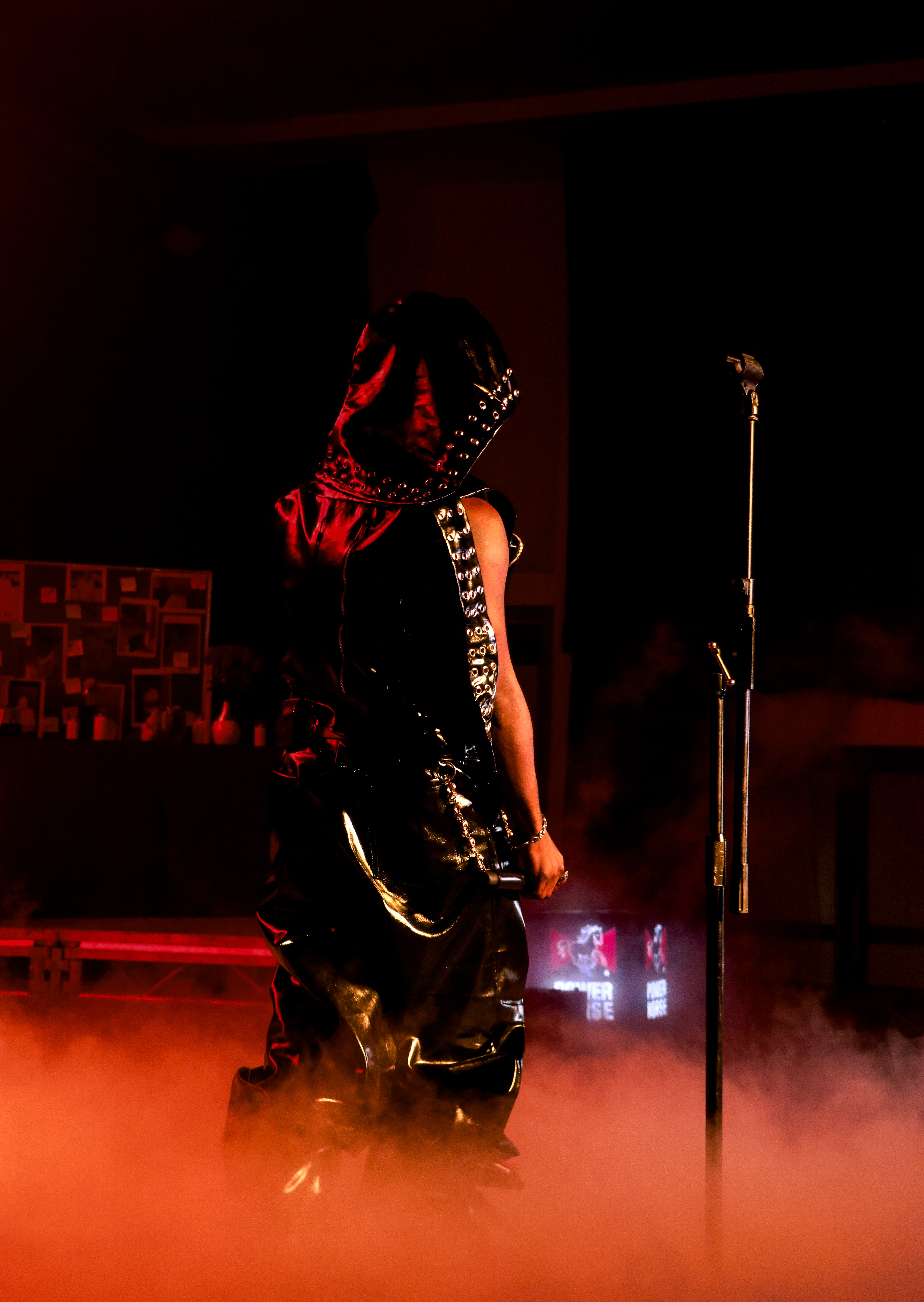
Nationwide tours, however, are a different beast. They require more than just booking a few scattered dates. They demand logistical planning that accounts for travel distances, venue readiness, regional differences in crowd sizes, and sometimes even local security realities. They can also be expensive, which is why they’re less common among newer acts and often undertaken by those with strong backing or a very clear strategy. And when an artist does decide to go that route, it’s usually because they’re trying to do more than just promote a single, they’re building a movement.
That is exactly what makes Llona’s story stand out. Known to his fans as Commander, Llona is an Indie artist who has spent most of 2025 on the road for his Homeless Nationwide Tour, a project that has transformed him from a promising name into a serious contender for the next wave of Nigerian stars. The tour was announced in February 2025 on Llona’s official page and kicked off shortly after, with Zaria as the first stop. From the start, the scale was ambitious. Public listings and promotional material point to a run covering 23 cities and 25 shows across the country; Zaria, Makurdi, Kano, Edo, Owerri, Ibadan, Port Harcourt, Taraba and a host of other cities, the point remains: Llona set out to touch as many corners of Nigeria as possible, and in doing so, he’s left an impression on thousands of fans who now sing his lyrics word for word.
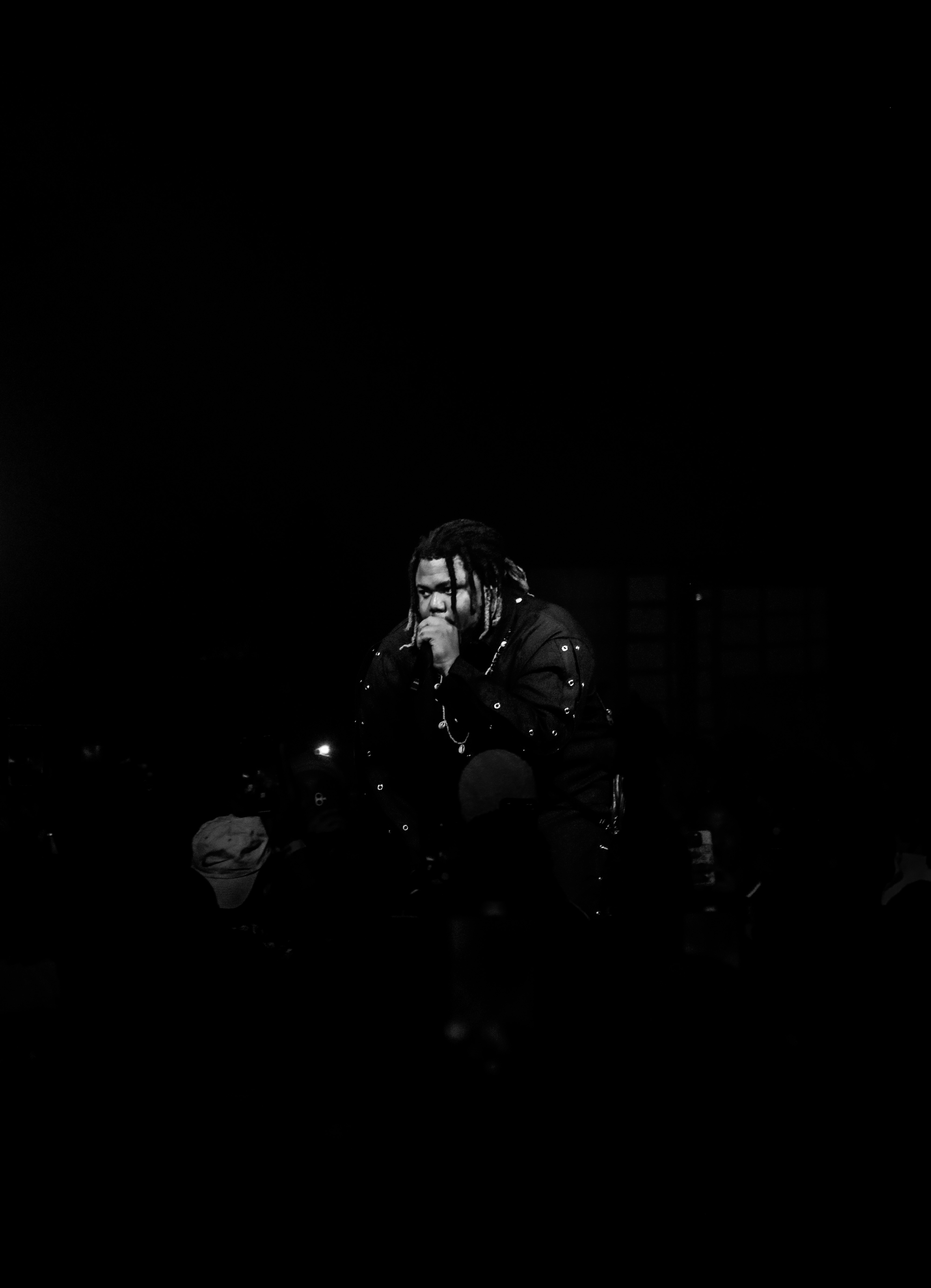
In a recent tweet, he wrote about how even though a lot of people did not believe in the vision, he only needed his Manager, Mide, to believe in it.
That belief has been more than symbolic. Badmanmide, as he is better known, has been the steady hand behind the Commander story. Since spotting Llona online and linking with him in 2023, he has shaped the rollout of the Homeless album, built the strategy around its message, and carried much of the weight of taking a 21-city dream on the road. From managing logistics and negotiations to sitting beside Llona in conversations about the project, his role has been equal parts architect and anchor. The result is a partnership that feels less like artist and manager and more like two people betting on the same vision, and winning.
Touring across Nigeria is not just about the kilometres between each city; it’s about the cultural and emotional distance you bridge when you step onto a stage in a place you’ve never performed before. Llona has taken this to heart. From Makurdi to Kano, Abuja to Port Harcourt, down to the Lagos finale, each stop has been documented not just as another date on the calendar but as a shared experience between artist and audience.
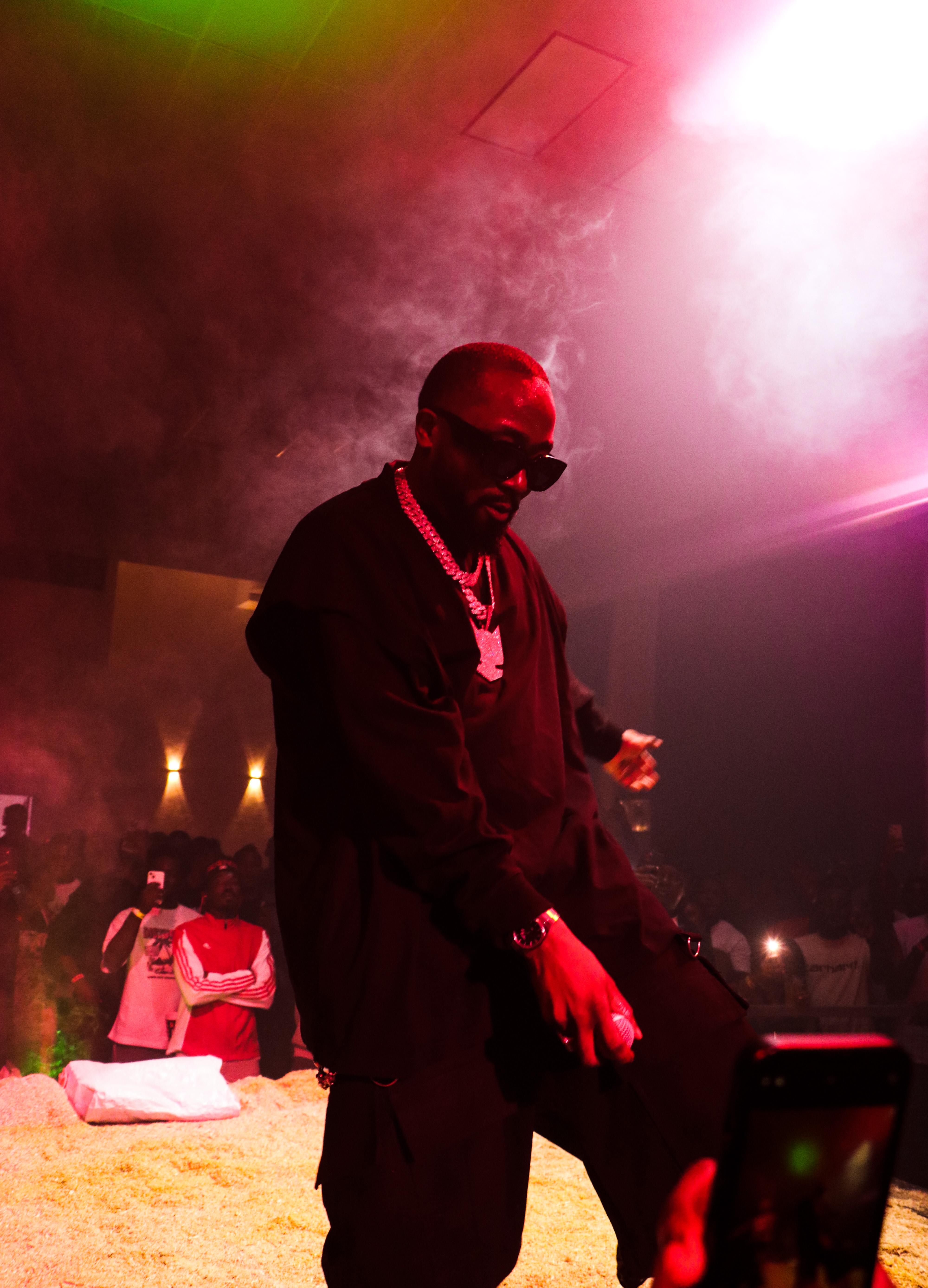
It hasn’t all been smooth sailing; the planned Jos stop in Plateau State had to be cancelled due to security concerns, a reminder that while music can cross boundaries, reality sometimes draws its own lines.
At different points in the tour, Llona has shared the stage with some remarkable collaborators. Fave joined him in both Kano and Abuja, her voice adding another layer of magic to those nights. Wizard Chan, who was also billed for parts of the tour, appeared in Kano and is tied to performances in Port Harcourt, bringing his own fan energy into the mix. The Abuja stop, captured in a flurry of videos and fan clips, was a high-energy night where Llona’s performance of his single Dead Flowers turned into a communal sing-along, with the crowd shouting back every lyric.
By the time the tour rolled into Lagos for its grand finale, it had grown into something much bigger than a promotional run. That night at The Podium in Lekki saw appearances from MI Abaga, Ycee, Illbliss, and Ice Prince, turning it into an all-star celebration of one of the most ambitious tours Nigeria has seen in recent years.
The Lagos finale also marked a commercial milestone. Power Horse, the energy drink brand, had a visible activation at the event, an endorsement of Llona’s rising commercial value. Sponsorships like this are the kind of partnerships that nationwide tours can unlock, as brands look to align with artists who have proven they can pull crowds beyond the usual hotspots. It’s the type of synergy that makes touring not just a creative statement but a smart business move.
What’s made the Homeless Nationwide Tour so effective is that it’s been grounded in authenticity. Llona’s Homeless album, released in late July 2024, has been the heartbeat of this run. Instead of flooding the market with new releases, he chose to let the project breathe, building its life on the road. This decision meant that fans in each city weren’t just hearing his songs for the first time; they were stepping into the world he created with the album, a world they had already been living in through streaming and social media. The result has been a sense of ownership among his audience. They’re not just listening to Homeless; they’re part of it.
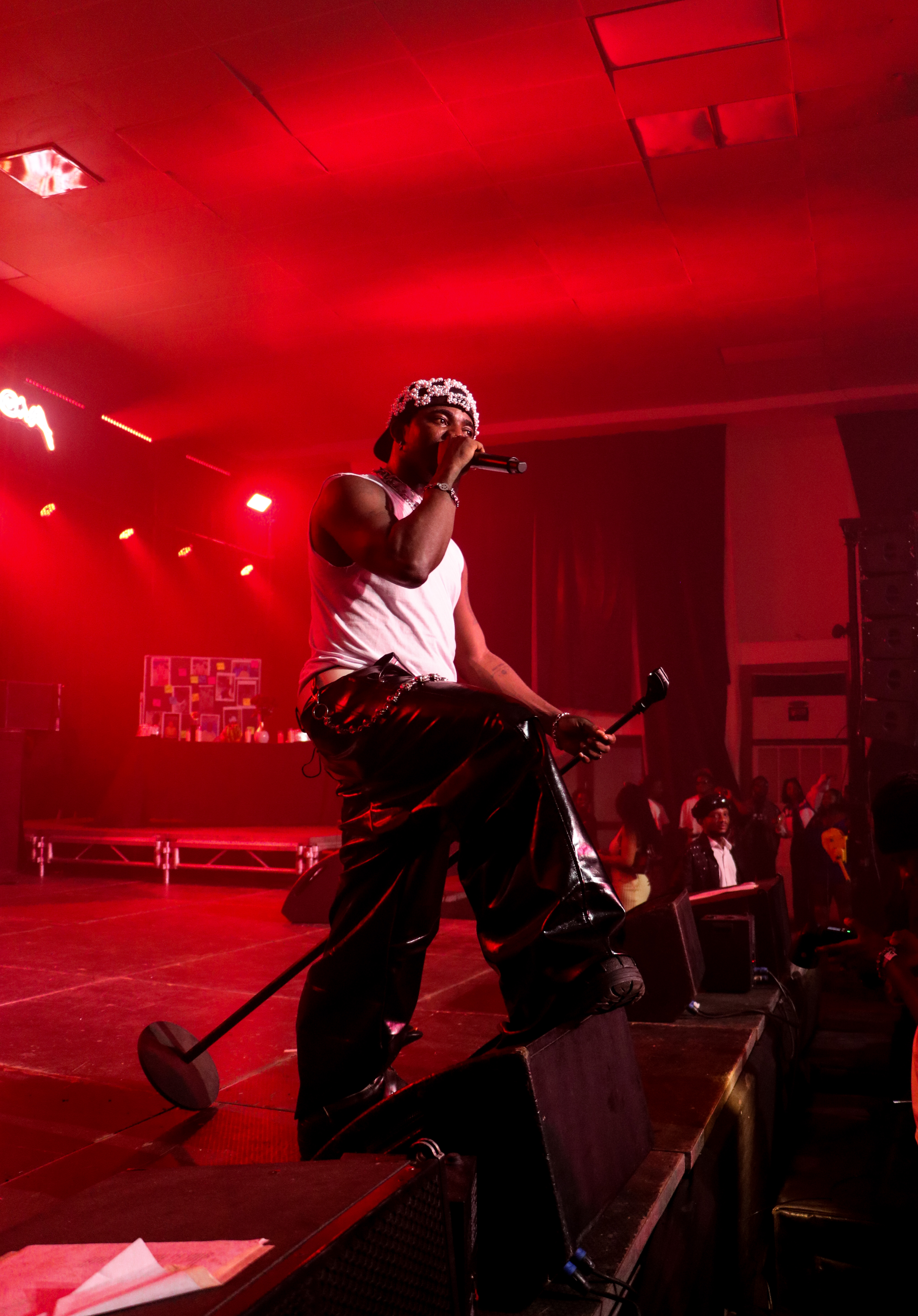
This approach mirrors the most effective touring strategies in Nigerian music history. The artists who’ve left the deepest marks are those who have been willing to go where the fans are, not just where the cameras are. It’s the same logic that drove those early Glo tours, the campus runs of the late 2010s, and the local circuits that still take place away from the glare of national press. For Llona, the Homeless Nationwide Tour has been more than a series of performances. It’s been a statement: that a young artist can take control of his narrative, can build his own momentum, and can create a cultural moment without waiting for the gatekeepers of Lagos or Abuja to hand him the spotlight.
And at the centre of that control has been the Llona–Badmanmide partnership. Just two years in, their relationship has already defined the way Llona moves: deliberate, independent, and vision-driven. It is the kind of manager–artist bond that often decides whether a promising career turns into a lasting one.
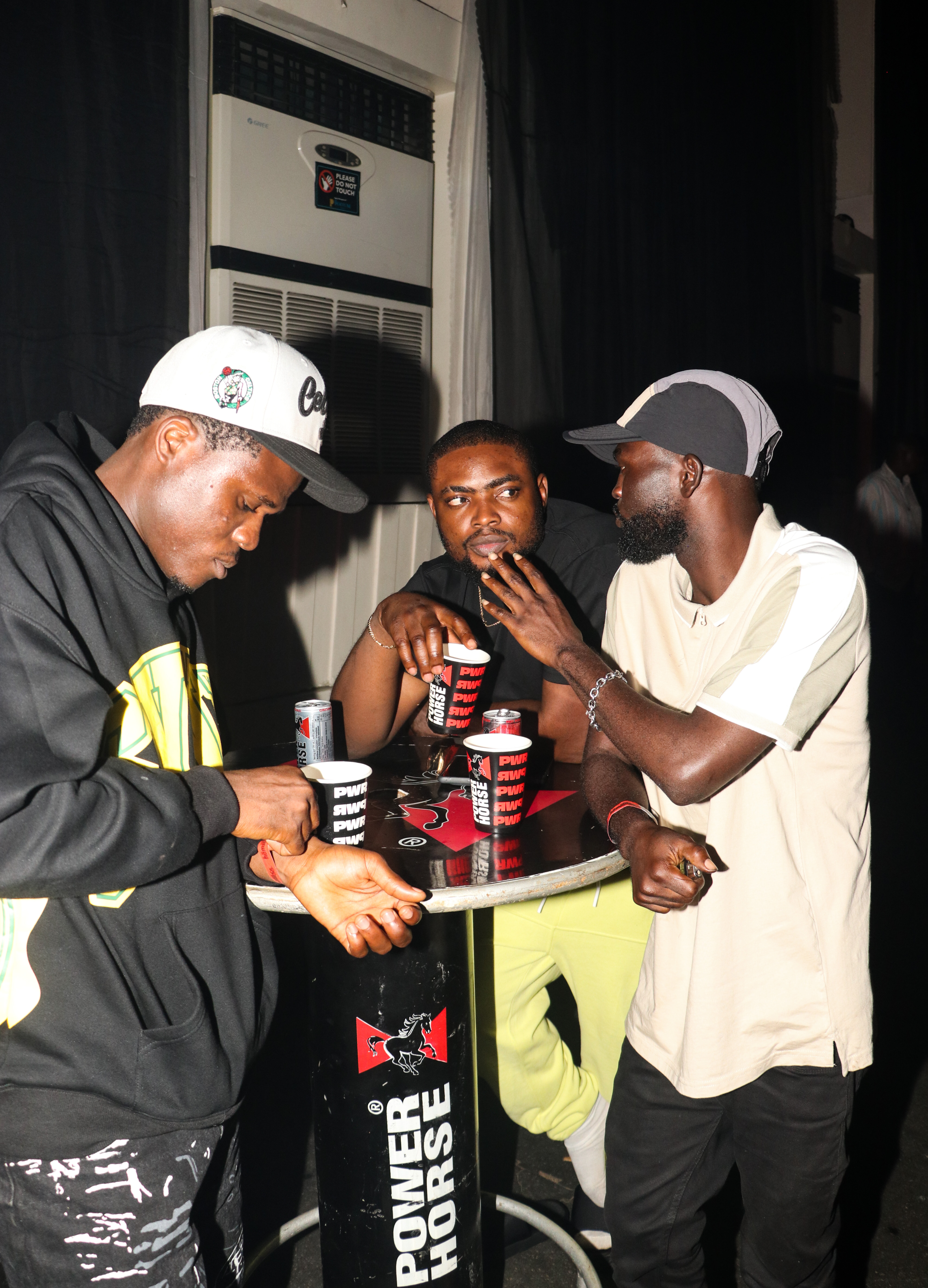
From the first chord struck in Zaria to the last cheer in Lagos, the tour has become proof of what’s possible when ambition meets planning. The cancelled Jos stop is a reminder of the unpredictability of the road, but the rest of the journey proves the point: touring in Nigeria still works. It still builds careers. And when it’s done with intent, as Llona has done it, it can turn a debut album into the foundation of a lasting legacy.
Nationwide tours may be rare, but they remain one of the most powerful tools an artist can use to grow. Llona’s Homeless Nationwide Tour has shown that even in a market dominated by digital hype, nothing replaces the energy of a live performance, the connection of shared space, and the slow, deliberate work of winning over one city at a time. In a country as vast and varied as Nigeria, that’s how movements are built. And right now, Llona is leading one.
This Friday, August 22nd, a unique musical experience awaits you at the exclusive Piano People In The Park, set to take place at Southwark Park in London. Following a triumphant launch that featured unforgettable sets from Vigro Deep, Young Stunna, and the iconic Scorpion Kings, the second edition promises an even more special performance-a two-hour set by the one and only Kabza De Small.
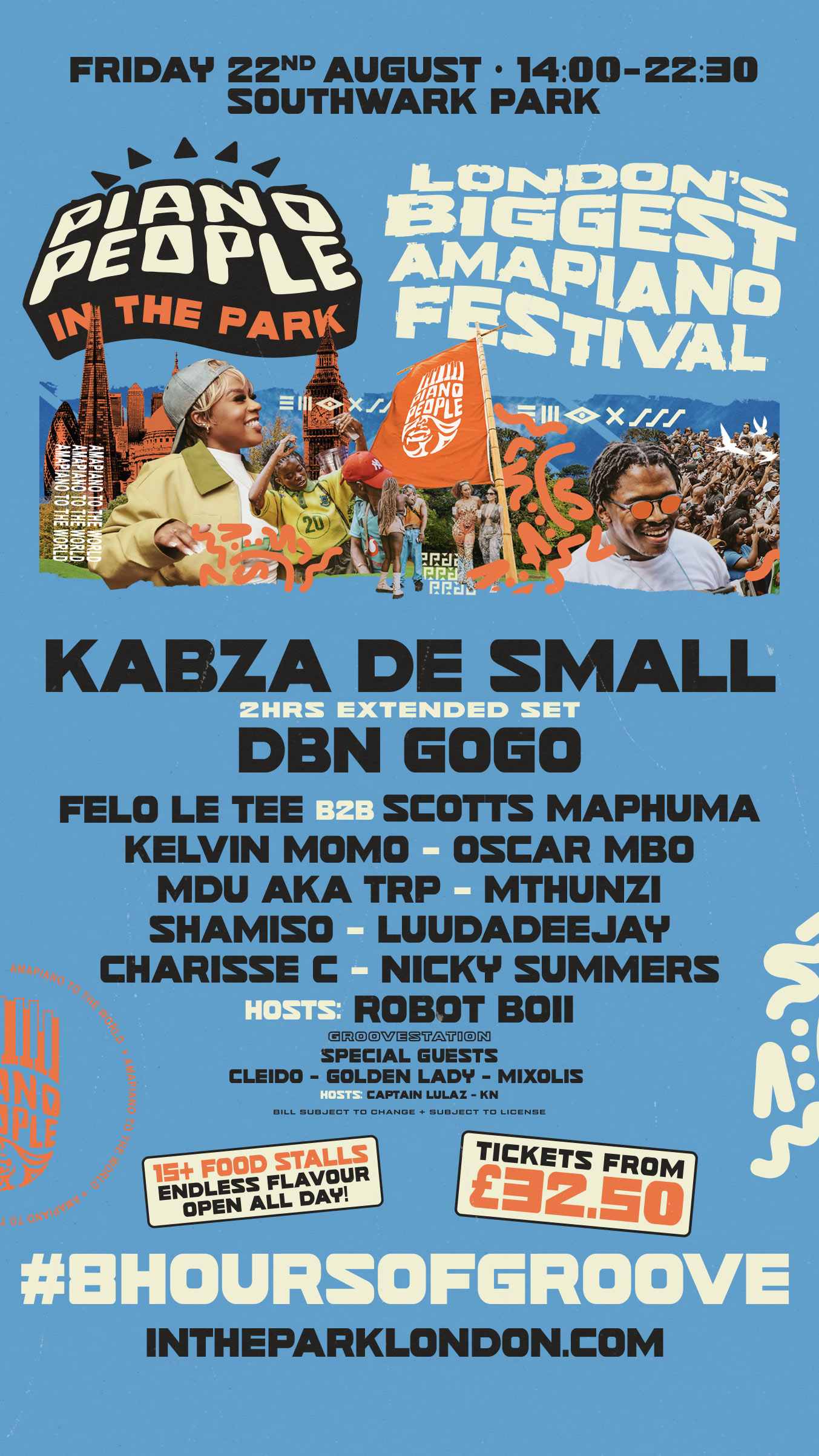
Joining Kabza De Small are some of Amapiano’s most diverse and talented artists, including DBN Gogo, Felo Le Tee, Scotts Maphuma, Kelvin Momo, Charcisse C, and Nicky Summers, among others. The festival, running from 2 pm to 10:30 pm, will treat you to 8 hours of non-stop Groove.
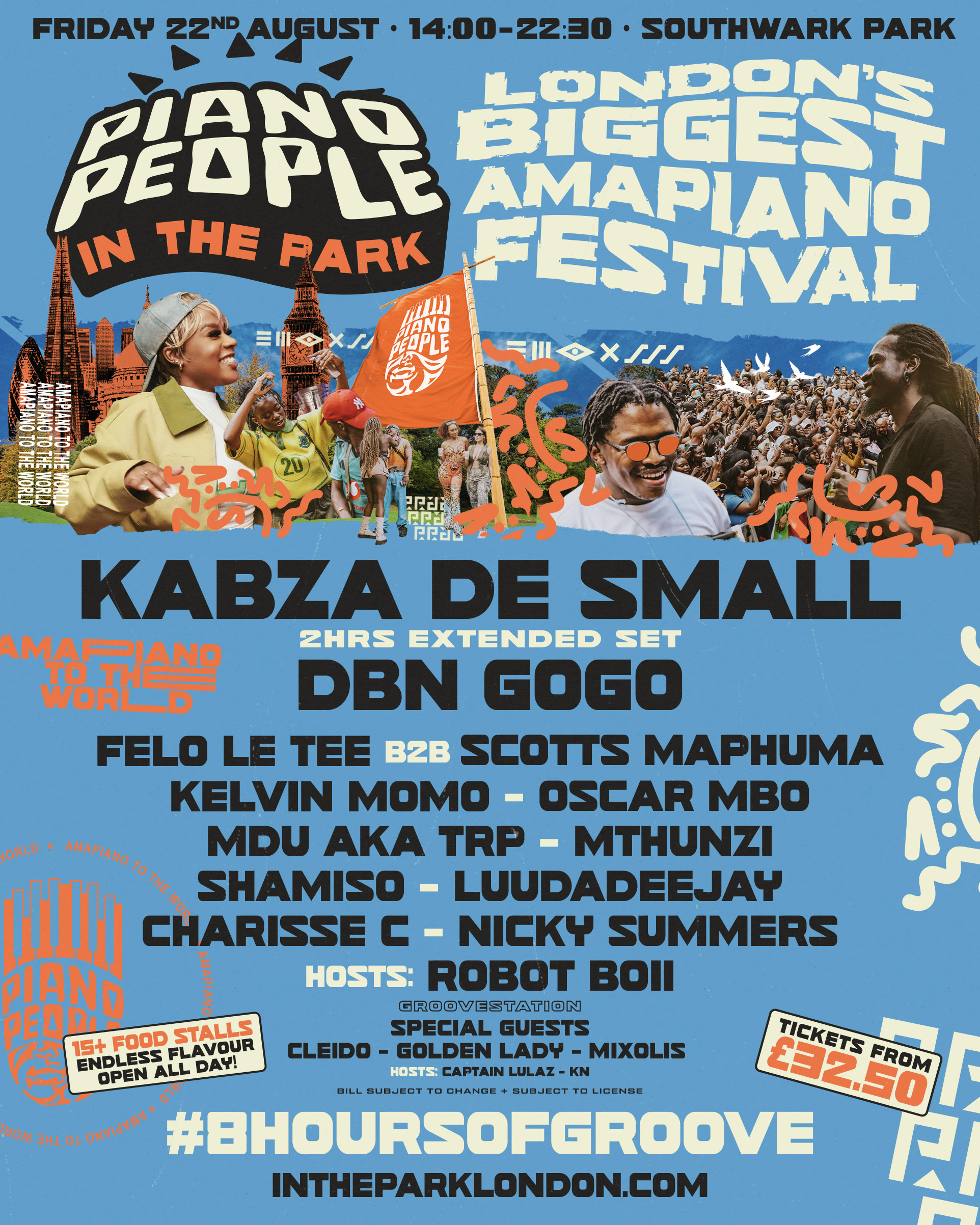
Following the success of Afronation Portugal, where the sandy beaches were graced by the likes of Uncle Waffles, DBN Gogo, Young Stunna, 2wobunnies, Nkozsana Daughter, Shakes & Les, KMAT and many others, we are now eagerly anticipating another incredible day of music, food, and vibes at Piano People In The Park. If last year is anything to go by, it will be a day of pure enjoyment.
The opening day of the 2025 All Points East edition was filled with anticipation and excitement. The announcement of Cleo Sol as the headliner, alongside the collective SAULT and Chronixx, was a mystery that unfolded through a series of intriguing Instagram posts from both Cleo and SAULT, with the title of Provenance and the date August 15th.
.png)
Once it was confirmed that the show would be the opening of All Points East, the lineup was announced, which included the likes of Kirk Franklin, Ms Dynamite, NAO, Sasha Keable, Joe Kay, Mariah The Scientist, and CARI, to name a few. There was a real buzz as to what the day would bring.
The anticipation came with several speed bumps, the first being the schedule, which was announced a few days before the festival was set to take place. With timing clashovers across several acts, it was going to be a day of running around from stage to stage. The second being the announcement on the morning of the that the headlining act set would be moved an hour earlier to 5 pm and be a continuous set, which raised some further confusion as to the various other acts that were set to be playing at the same time and which sets would have to be sacrifice for audiences wanting not to miss the main act.
.png)
Nonetheless, the energy in Victoria Park was buzzing once I arrived at the festival. Navigating the stage timings meant catching a few moments from the artists. Catching the tail end of Mariah The Scientist, she closed off her set with her single “Burning Blue”, which sounded sharp with her vocals. Sasha Keable was unsurprising, given her run in the past year. Fresh off the release of her EP Act Right she stunned the West Stage with her powerful vocals as she delivered a 30 minute set that consisted of tracks from her EP including ‘can’t stop’ ‘act right’ ‘feel something, ‘WHY’ as well as previewing a new unreleased track ‘How Far’ which has previously been teased and was announced as being “On the way”.
The standout moment of the day was undoubtedly Kirk Franklin's performance. He delivered a Gospel performance of praise and worship that was brimming with high energy from the moment he stepped on stage. The crowd was electrified, feeling the energy of the music and Franklin's infectious enthusiasm as he danced, jumped, and moved around on the North Stage. His 45-minute performance, which included his songs like ‘My Life is In Your Hands’, ' I Smile’, ' Brighter Days’ and ‘Love Theory’, was a truly enlightening, spiritually healing, and a celebration of love and positivity, which was much needed.
.png)
Coming off the energy of Kirk, all was set for the delivery of the headlining act, which is where things took a bit of a turn. The initial set, which was due to start at 5 pm, began an hour later with the introduction to the mainstage beginning just after 6 pm. One thing that cannot be faulted was the stage design, which was a peak moment of the main East Stage. It consisted of a large pyramid in the middle of the field, connected by a long runway to the mainstage, which had various sandy-esque boulders and smaller pyramids on stage. The opening performance consist of an instrumental performance with an orchestra and a procession of actors and other performers who took to the stage and began what would consist of many dramatic displays across the night with a series of dramatic pieces which for some were comparative of a easter sunday church performance which infused storytelling that was described by some as a “GSCE drama performance.” However, the concept may have had some promise with its relation of provenance, the story of humanity and redemption and other aspects. Its execution did not quite come across as intended. With pieces often dragging out longer than they should have, the crowd became impatient to see SAULT and Cleo Sol’s musical offerings. The fact that this was set against the blazing heat made it even more challenging.
.png)
As the evening progressed, SAULT’s appearance came with the presence of their not-so-mysterious members, which included Cleo Sol as they played through some of their songs, which included “Free”, “Let Me Go” “, Why Why Why Why and Wildfires” to name a few songs. After another set of dramatic performances came Chronixx, who had joined Sault to perform Warrior. His set was a standout moment of the night, set against the setting sun as he kept the seemingly restless audience going. The timing moved closer towards the end of the night. Everybody who had been waiting since 5 pm was ready for Cleo Sol, who closed out the stage. It was just before 10 pm, after a messy and confusing appearance of Mos Def (also known as Yasiin Bey), who was spinning on stage.
.png)
When the time came for Cleo to emerge, she did not disappoint as she entered the stage with the presence of a goddess and an angelic voice to match it as she played through a number of her songs. At 10 pm, of course, people felt that her appearance was too late and resulted in a set that was only 45 minutes to 50 minutes due to the curfew. All that being said all those that were waiting for hours to busk in her sounds and vibes were greatly rewarded as she sang through songs like “There Will Be No Fire” “Rose In The Dark” “Why Dont You” “You Are Loved” “Sunshine” as well as a preview of a new unreleased track.” crowds started leaving halfway through her not to miss the rush of the end of the festival. One might say that had she come onstage earlier, we could’ve gotten more than what was given.
.png)
All in all, the concept delivered great promise in its idea and what was meant to be put out there for the audience. However, the execution did not quite deliver as intended, for a setting that was not a festival and not set against 30-degree heat outdoors. It was a great effort made, but this is something that should have been taken into account with the various factors that impact a festival crowd. I’m sure some people might have appreciated the offering and felt like it delivered 10/10; however, for many, it stirred confusion, and many questioned some of the creative decisions. However, as a day of music, it delivered on that front.
.jpg)
Numerous factors are involved in the liminal space between a musician and international recognition. In essence, these elements serve as the foundation of a musician's artistic appeal, forming their personality via constant improvement and offering a guide for negotiating a very unstable field. Because they offer an agency to manage the complexities of the music industry, record labels are essential to the growth of art. By providing them with a platform to market and showcase their music in ways that are beyond their capabilities, these brands empower musicians. They dissuade artists from being sequestered in their silos and therefore play an intricate role in shaping the course of one’s career, impacting not only their commercial success but also providing mediums to define their place in the music space. Record labels oversee everything, and this focus encompasses production, promotion, distribution, and exposure of their music. With proper management, an artist can essentially propel their career to greater heights, extending their reach and maximising their talent; this is the very problem.
Artists are beginning to get used to the benefits of associating with these record labels, and it would seem that the greater majority of mainstream artists are showing a propensity to produce music in favour of eventually getting signed and maintaining their status as label stars. This has raised questions about the creative ethos of the contemporary music scene and challenged the independence of artists. Consequently, this has also created a lack of distinction or variance amongst artists and their contemporaries, consolidating the narrative that the majority of mainstream artists sound alike. This conformity greatly compromises the autonomy an artist possesses. They are a business, so they are financially motivated and would, therefore, configure the direction of the brand to what they believe would yield more monetary benefits. Invariably, that may cause compromises in creative expression and autonomy, as they often do not tolerate tangent ideas or thoughts. As a result, artists often struggle to balance creative expression with financial marketability.

In an interview, Charli XCX insists that labels pressure musicians to conform to actions that would make them globally liked. Shey says that, “These days, labels are desperate for artists to be liked, and the currency of niceness is really important in selling records; otherwise, you’re bad, evil, and wrong.” She says. “Persona is intrinsic to the modern-day artist, unless you completely reject it, and do something alien-like and cold… I can’t wait to do that, actually. I can’t wait for someone to be really cold and mean and icy. But we’re not in a place where any major artist could do that. I hope someone dares.” Essentially, Charli highlights how label marketing dynamics stifle artistic expression, establishing creative restraints that prioritise a superficial persona over one’s authentic self. Similarly, Russ nods to the creative independence that comes with being an indie artist, saying that I just got to move on ideas quicker because I didn’t have to run anything by anyone. The freedom is unmatched.” He highlights the bureaucracy of implementing ideas and how these setbacks infringe on creative advancements.
There seems to be an industry-wide pattern where contracts are drawn to label vision, even if that involves limiting creative freedom and financial benefits. Over the years, we have witnessed an array of musician and label controversies that highlight the contradictory landscapes between brand visions and artistic expression.
The ethos of the current music landscape reflects one that is generic and shows a penchant for following in the same direction as time goes on. Therefore, measures must be taken to enhance and refine the current music industry landscape. Unequivocally, the current milieu of the music industry has undergone a seismic shift with the integration of music record labels. The desire and voracity for label affiliations have stifled creative juices from the fruits of creative and innovative minds, leaving little to no room for creative growth. Therefore, we must stress the need for artists to be more discerning upon dealing with record labels. It is important to set boundaries and acknowledge issues when they have exceeded the threshold.
Eight years after the eventful release of Wizkid’s third studio album, Sounds From The Other Side, I would like to say I was one of the early believers, one of those who fervently parried the deluge of criticisms that were lobbied at it upon its release, but unfortunately, I wasn’t. Certainly, I wasn’t in the camp of the denigrators either, a group of which BNXN is an alumnus. To be entirely fair, he wasn’t yet the celebrity he is today, or a celebrity at all. From all indications, he was your average unconcerned teen chasing a dopamine hit by firing off his latest incandescent opinion. But even so, the tweet is no less scathing. “If I say that Daddy Yo song is trash, y’all will probably go mad, so yay! Mad jam!” it reads.
My initial thoughts were less dramatic, more vague, so vague that even I was unsure of my exact feelings towards it. In retrospect, it’s something of a delusion that I first listened to the album on the road. Maybe “road” oversells it a little. I was on a street with a party of friends, we were four in total. We had spent the afternoon ambling, no, roaming, rather aimlessly through the meandering streets that crisscrossed our neighborhood. We had hopped between all our houses, which served as layover points, where we could rest, eat, revel in sily and often titillating gossip, and, of course, play video games. So, thinking back, it’s surprising that I didn’t take advantage of one of our many stops to properly listen to the album, since I knew it was out.
I plugged my white Samsung earphones, those oddly shaped ones where one wire hangs lower than the other, into my ears, and navigated to the album. It was evening, the sun had turned purple-amber and shafts of gentle sunlight filtered into my eyes as I strolled amid friends. Listening to Sweet Love, which opens the album, in this balmy scene felt like an act of providence, like things were playing out just as they should. The song is upbeat, but not so much that it overwhelms or strips you of agency, leaving you the option of either dancing or tuning out. Sweet Love is gentle, inviting, beguiling. It shimmers with a distinctive summery aura; just like a Friday at the beach, steeped in booze, coastal breeze, picturesque scenes, and the tactile feedback of the sand beneath your feet.
The next song? Come Closer, an expansive and gloriously amorphous sound that cross-pollinates Afrobeats with the range of sounds emanating from the Caribbean at the time and the brooding variety of R&B being heralded by acts like Drake and The Weeknd. Even with a Drake feature, he held his own, took up space. The entire song scans as an announcement of his ascendancy. “Came into the game, no one replace me.” What a way to open a song! It flowed in seamlessly from Sweet Love, the first track. It also helped that it was the lead single and the third in a series of Wizkid-Drake collaborations.
The album began to come apart at the seams, for me at least, on track 3: Naughty Ride featuring Major Lazer. My verdict: too noisy. I had a similar opinion of the Chris Brown-assisted African Bad Gyal. It seemed to me that all the sonic elements were competing for the spotlight. The melodies were characteristically immaculate, but whatever pleasure they supplied was undercut by the relentlessly pummeling drums and those horns which are wholly jarring. I spent the rest of my time with the album like a petulant toddler running through a crate of apples by taking a hesitant bite and puckering his face before discarding it for another.
I managed to rescue some gems from the fragments: All For Love featuring Bucie, Picture Perfect, Gbese featuring Trey Songz, and Nobody. But as a body of work, SFTOS left many questions. I would later watch an interview—on Apple Music’s YouTube channel—in which a tangibly younger Wizkid, wearing a neon green hoodie, explains that he thinks of the project as an EP or a mixtape, and that he had originally intended to put it out for free. But at the time, the album’s sonic incongruity left me dazed, and not in a good way. In the coming weeks and months, as the star-studded album failed to occasion the kind of international success that many had projected, the criticism of the album would only intensify. And while I didn’t join the marauding mob, how could I? I liked a handful of the songs. I dawdled on the sidelines, watching it all play out in front of me.
On the 14th of July, 2025, the album turned eight. I had hardly scrolled twice before I started to see rhapsodic tweets about the album. Tweets praising the album for its innovative bent filled my feed. “This album was way ahead of its time,” appeared several times. In an interesting turn of events, BNXN posted a series of videos in which he passionately sings along to songs from the album. At some point, in one of the videos, he pauses and releases an excited gasp. “Cheee… Wizzy.” Given the visceral memory I have of the deluge of criticism the album initially received, the near-universal love it received on its eighth anniversary felt incongruous, almost. It felt like one of those movies in which the protagonist lands in an alternative universe, one that's almost a near replica of their original timeline, save for a few tiny details.
For all my surprise, the reality is that the critical opinion of the album has progressively softened over the years. One reason for this is that, bar a few exceptions, as projects recede in time, we tend to subliminally confer them with added heft, nudging them towards the rarified corpus we describe as “classics.” Humans tend to remember the past more fondly, reserving our indignation for the present and our anxieties for the future. Remember how we would bemoan the quality of old Nollywood films and compare them with their American counterparts? Isn't it poetic that these very films are now venerated for qualities such as faithfulness to portraying a close approximation of the Nigerian experience and the good-natured humor of many of these films?
But beyond this, the album’s reputation has soared because when we listen to songs like One For Me, Picture Perfect, Nobody, and Come Closer, we recognize the early germs of what would become the distinctive flavour of Afro-R&B that Wizkid has now perfected, the aural aesthetic that has ensured his continued relevance and produced songs like Essence, Frames and Slow. As such, the album has become something of a shorthand for the intervening phase in an artist’s career in which they lean into experimentation in search of something fresh. In defending Asake’s current phase, his fans tend to describe it as his SFTOS era. I have also witnessed this characterization being invoked in defence of other similarly left-field and misunderstood projects. SFTOS is not without its flaws, some of the transitions still feel wonky and the lack of a thematic anchor still takes its toll on the listening experience, but in an age where experimentation feels like an antique from a distant past, SFTOS is tangible proof of the merits of sonic innovation.
In a global pop landscape increasingly defined by borderless sound, Amaarae continues to be a rare kind of cartographer—one who charts new emotional and sonic territories without discarding the compass of her West African roots. Black Star, her follow-up to the critically embraced “Fountain Baby”, is less a mere collection of tracks than a kinetic constellation: each song a blazing fragment that, when connected, forms a vision of futurism anchored in history. The album is a study in hybridity, a sound that doesn’t just blur genres but seems to liquefy them entirely, pouring them into the molten mold of her voice. It is an album built on the confident synthesis of sonic worlds that rarely intersect.
The opener, “Stuck Up,” hits like a strobe in a subterranean São Paulo club—its electropop chassis welded to the percussive grit of Brazilian funk. The lyrics don’t just pulse; they thump with the insistence of a bassline that refuses to release your sternum. This is music that doesn’t invite you to dance; it abducts you into movement.
“Starkilla” takes a different orbit—futuristic techno rendered with a spatial, almost zero-gravity sheen. Amaarae’s voice, cuts through like a beam of light refracted in deep space. By interpolating Kelis’s “Milkshake,” she collapses two decades of pop history into a seamless fold, rendering nostalgia as a launchpad.
The amapiano undercurrents emerge in “ms360” where log drums throb beneath a coolly commanding presence, of Naomi Campbell reading the lines ‘They call me a bitch, a villain, controversial diva, no. I am the Black star’ .This is Amaarae’s skill at its sharpest—making luxury and rhythm feel like synonyms.
On “Kiss Me Thru the Phone Pt2” featuring Pink Pantheress the tempo eases, and with it, the emotional register shifts. The lushness of her vocals carries a kind of vulnerable clarity, the kind that doesn’t so much fill a room but makes a very lone presence. Sampling Sisqó’s “Thong Song” and nodding to Soulja Boy’s 2008 internet-era anthem, she transforms kitsch into intimacy, reframing it as soft confession rather than digital flirt.
“B2B” is a rare feat of synthesis—electro drums and amapiano grooves converging into a midpoint where Spanish strings flare in a mid-song detour, changing the melody’s gravitational pull. The romantic motif deepens in “She Is My Drug” where longing is sculpted into melody. Amaarae’s vocals pierce through the production like sunlight through blinds—narrow beams illuminating the contours of desire.
The lead singles already hinted at the album’s scale. “Girlie Pop” is pure gloss, but it’s “S.M.O” that crystallizes her ethos. Infused with 1980s Ghanaian highlife and undergirded by Detroit club bass, the track feels like an archival record rediscovered and electrified—heritage made ecstatic.
Amaarae’s command over EDM emerges again on “Fineshyt”, where her lyricism doesn’t merely ride the beat; it fuses with it, like phosphorescent paint glowing against the throb of a club wall. On “Dream Scenario” A collaboration with R&B legend Charlie Wilson, this track gleams with the warmth of a meeting between generations. Their voices weave together like silk and steel, creating a calm, celebratory space that bridges eras of Black music.
“100DRUM” , where “Dream Scenario” is polished, wild and exhilarating. Distorted percussion (perhaps the titular hundred drums all at once) collides with submerged vocals in a dizzying whirl. Beneath the chaos lies a sweetness, proof that unpredictability can be beautiful.
The final track “FREE THE YOUTH” lands like a rallying cry. Heart-thumping percussion drives forward as Amaarae ties the album’s threads together — the cultural fusion, the genre-hopping, the defiance of expectation — into a sufficient thematic close. It’s a liberation anthem and a curtain call, ensuring Black Star ends not as a fade-out but as a brave punctuation mark.
Black Star is a luminous, shape-shifting project — too expansive for neat genre boundaries, too self-assured to dilute its vision. Every song is a new room in the same house: some lit in strobes, others in candlelight, all bound by the same foundation. By interweaving her West African roots with global pop futurism, Amaarae joins a vanguard of Black diasporic artists redefining the mainstream — not by asking for space, but by building new worlds entirely.
The album is alive with invention, and most of the time, that raw energy is its greatest strength. But there are points where ambition runs too close to excess. Some songs feel pitched just on the edge of coherence, threatening to collapse under the weight of their own ideas. Still, those are minor quibbles beside the bigger achievements: Black Star rides the tension between fusion and fragmentation, depth and danceability. It’s a project that insists you pay attention or give in.
Despite signs that a new Gunna album was imminent, when, on Monday, he announced the impending arrival of a new album, The Last Wun, most were taken aback. The fact that the album is scheduled for release this Friday, a mere four days from its announcement, also heightened the excitement around it. The album's rollout, The Last Wun, has since unspooled with the smooth precision of a cruise missile.
In the time since he announced the album, he has whetted the appetite of fans with a slew of promotional videos. Among them is one monochrome clip in which he teases a song with Wizkid. In the clip, captioned “FOREVER,” we see him and Wizkid in a studio session, by turns, recording and bobbing their heads to the glistening production.
Whatever excitement this video stirred up intensified with the release of the official track list. In addition to Wizkid, the album features other Afrobeats stalwarts, namely BurnaBoy and Asake. The prospect of having three of the most important touchstones within the Afrobeats milieu on a Gunna album has sent fans into fits of ecstasy—for the music, yes; but also because this move signals Gunna’s intent to further deepen his relationship with Afrobeats culture.
One tweet reads: “Gunna is so wise. He peeped that he’s currently the biggest foreign artist in NG and he’s trying to cement that with his incoming album by featuring the top 3 biggest NG artists currently. A smart artist!”
Gunna’s dalliance with Afrobeats traces back to 2018 when he featured on Davido’s Big Picture, a summery pop song on his A Good Time album. Since then his numerous collaborations with Afrobeats acts have made him something of an honorary Afrobeats act.
In 2023, at a concert in Los Angeles, Gunna brought out Nigerian Gospel artist Victor Thompson for a performance of his hit single This Year. He later collaborated with Thompson for a remix of the song. Later that year, he teamed up with legendary Nigerian producer Sarz and Asake for a single called Happiness, a cherry song which straddles Afrobeats and Amapiano. In December last year, he visited Nigeria, headlining the Rhythm Unplugged, an annual Nigerian music festival.
The Last Wun, upon release, will certainly offer a surfeit of gems to listeners. But for Afrobeats fans in particular, his collaborations with Wizkid, Asake, and BurnaBoy will offer a special thrill.
Streaming giant Spotify is no stranger to controversy. Over the years, the company has incited public indignation for a litany of reasons. Since its founding, nearly two decades ago, Spotify has faced sporadic criticism for its meagre payouts, an average of $3 for a thousand streams to artists. The company has also come under fire for offering right-wing conspiracy podcast hosts splashy contracts. In 2022, Spotify users threatened to jettison the platform owing to a contract the company provided to the Joe Rogan Podcast. Spotify currently faces another blitz of criticism, but this time, the source of public ire comes from the investment overtures of its CEO, Daniel Ek, as opposed to any direct action of the company.
Ek has announced that he led a funding round of some $700 million, through his investing firm, Prima Materia, into European defence firm Helsing, which specialises in AI-driven autonomous weapon systems.
In a world currently ravaged by wars and conflicts on multiple fronts, the travesty in the Gaza Strip and the civil war in Sudan being prominent examples, Ek’s decision to lurch into what many are calling an “arms race” has rubbed many the wrong way. Social media is awash with incandescent criticism of Ek’s move. A growing number of users have also threatened to quit the app; some have left altogether.
Several artists have also joined the fray, criticising Ek and pulling their discographies from Spotify. “So here we are, artists helping to build algorithms to sell our music,” says David Bridle, one such artist who has redacted his body of work from Spotify, “ and the success of that algorithm determines the flow of wealth to a man who invests in building machines that could kill people.” “Ek is investing in technology that can cause suffering and death. Spotify used to seem like a necessary evil. By association, it now just seems evil,” Bridle continues, in his op-ed for The Guardian.
Deerhoof, an acclaimed band based in California’s Bay Area, has also pulled its catalogue from Spotify. Speaking to the Los Angeles Times, Greg Saunier, the band’s founder, said: “Every time someone listens to our music on Spotify, does that mean another dollar siphoned off to make all that we’ve seen in Gaza more frequent and profitable?”
In 2022, Russia’s president, Vladimir Putin, directed a full-scale invasion of neighbouring Ukraine, putting an end to decades of relative world peace. Despite signs of an imminent invasion in the preceding months, the invasion left the world reeling with shock. Western world powers, most notably the United States, quickly rallied around Ukraine, condemning Russia and supplying Ukraine with aid, funds, weapons, and safe passage for its fleeing citizenry. Given the outpouring of support towards Ukraine’s cause as well as the blitz of sanctions that were placed on Russia, the thinking was that in no time, Russia would sue for a ceasefire on account of military exhaustion and the impacts on the economic straits imposed on it. So far, that hasn’t happened.
Instead, the conflict in Ukraine has escalated, confounding even Donald Trump, who during his 2024 campaign trial, claimed he would “have that war settled in 24 hours.” Since 2022, the world has exploded in wars and the spectre of military aggression. Sudan is currently steeped in a devastating civil war heralded by the factions of the country’s military. Since 2023, when the war began, an estimated 150,000 people have been killed and millions more have been displaced. The middle east is similarly fraught with conflicts and tensions, ranging from the war in the Gaza Strip; which many have referred to as a Genocide, to the more recent joint action between the United States and Israel, in which they pulverized Iran’s nuclear program by sending a hail of bombs down Iran’s Natanz uranium enrichment facility and the Esfahan complex.
Tensions between China and the island country of Taiwan, located 100 miles off the coast of Southeastern China, continue to rise, with China increasingly conducting “military exercises” close to Taiwan’s coast. China and India similarly share tensions over certain borders and have in the past few months bolstered their military presence in the disputed regions.
The implication of this is that war is now big business, and Silicon Valley entrepreneurs, famed for their uncanny and often unscrupulous capitalist sensibilities, have flocked to the arms business. Peter Thiel, who has been a longtime investor and proponent of the arms industry, even at a time when it made him something of an oddball amongst his software-leaning counterparts, has been joined by stalwarts like Meta’s CTO Andrew Bosworth, former Google CEO Eric Schmidt, Palmer Lucky, Daniel Elk, and a host of others.
While Silicon Valley’s overt tilt towards the defence industry might seem entirely bad, there is a spate of upsides. Palantir’s technology was deployed, to great success, in the aftermath of 9/11, helping the U.S. Army make sense of a litany of fragmented data from its numerous agencies. U.S.-supplied drones have also offered tactical advantages to Ukraine, helping them counter Russian airstrikes and delivering precise attacks against Russian forces. If anything, the events of the past few years show that Daniel Ek and a vast swath of Silicon Valley investors, despite their putative commitment to saving the world, are simply following the money, wherever it leads.
Coupé Decalé, Makossa, and Soukous play a major part in this Dance Anthem
If you’ve been paying close attention to the music sphere, then you would have noticed that there has been a rise in Francophone hitmakers within English-speaking territories for the past two years. While Nigerians and South Africans are on top of the English-speaking African population, Congolese artists are known for dominating the French top charts, followed by Ivory Coast and even Cameroonian influences. Together, they have made their mark in each of their respective lanes. However, while the two groups mostly stayed apart, in recent years, they’ve become more eager to collaborate and borrow each other’s sounds. For example, Congolese biggest Soukous artist Fally Ipupa was featured in Oxlade’s 2024 song “IFA.” Most notably, French Afropop singers Tayc and Dadju made an appearance in Davido’s latest album “5ive” earlier this year. As of late, Asake just released a song, “BADMAN GANGSTA” with French-Mélo artist Tiakola, making him the first Congolese artist to chart number one in Nigeria.
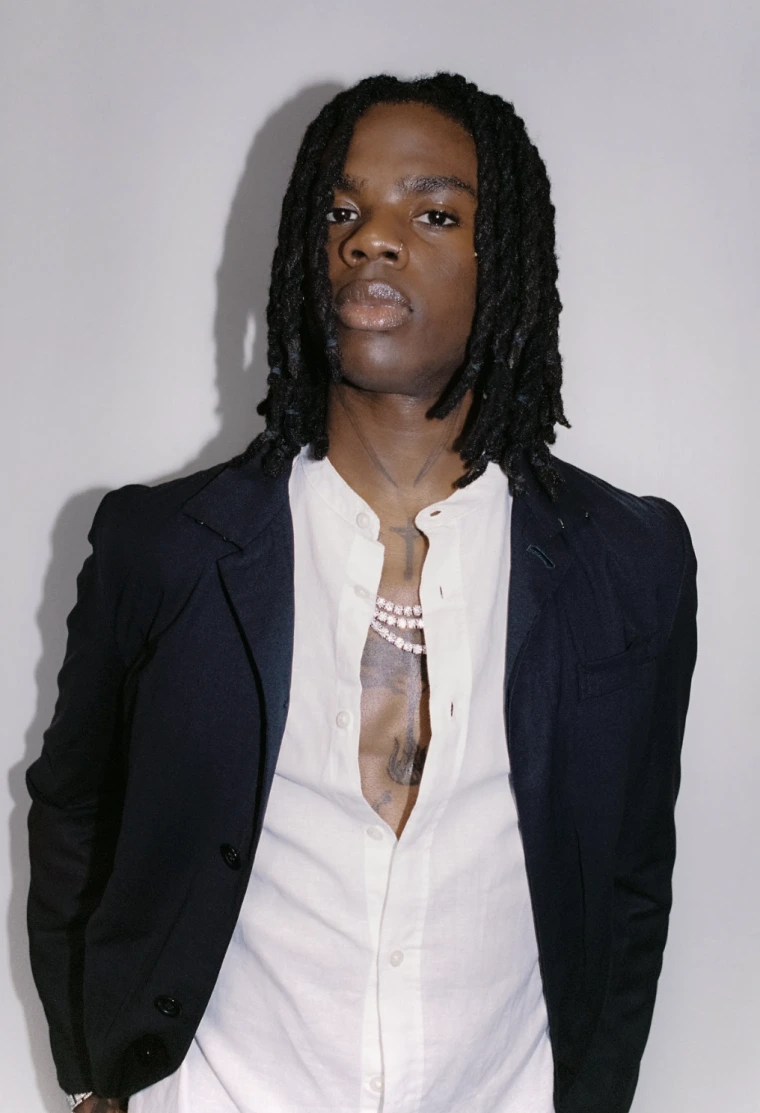
It was only a matter of time until Afrobeats prince Rema would contribute to this phenomenon, and as he does it best, he chose to experiment with elements borrowed from Coupé Decalé, Soukous, Mokassa and more.
In a new article with Rolling Stone, Rema revealed that during school parties as a child, they used to play Caribbean and Francophone dance music. While young Rema did enjoy the vibe, although he does not understand French, he also remembers the singers seemingly repeating a few words over and over again throughout the song. Another important take not mentioned, yet audible, is a special rhythm and pace that the sounds of those regions are famously known for, which are all elements present in his third single of this year, “Kelebu.”
Even in the word Kelebu that Rema chose as both the title and its repetitive refrain, it sounds a little bit like the French phrase fait debout, or its correct phrasing, which would be metez-vous debout. This translates in English as stand up! In the context of a party, the DJ might feel the need to order the crowd to stand up and dance, as in this instance, it is necessary. Similarly, Rema, in the preview, jumps in full force and says Kelebu to urge listeners to dance.
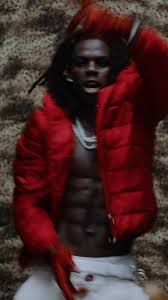
Produced by London, Ambezza and Nik D, it is not surprising that Rema did not make a complete shift similar to his last album “HEIS,” and instead, he extended his rave era while adding fresh new drums and even a dance challenge with a price into the mix. His raging rap-like vocal performance is very much intact while attempting to create his own version of a summer anthem. When trying something new, it does not come without scrutiny and at the beginning of his rollout, it seemed like the internet was divided on how to feel about the song. Some individuals from the regions Rema drew inspiration from even went as far as saying they do not hear the resemblance sonically with Coupé Decalé and the rest.
Now that the single has been released, what conclusion can we make about “Kelebu?” It is too early to suggest whether those not in favour of the preview will change their mind in due time and give this song another chance; however, one thing is clear: this is Rema’s loose interpretation of a terrain he is not familiar with, but grew up listening to at a particular time. The producers took easily recognisable elements such as fast-paced drums similar to Coupé Decalé and created something new. Their intent wasn’t to copy and paste an existing soundscape but instead, merge worlds together and attract listeners of a growing scene in the space Rema occupies. At a time when French artists are becoming more prevalent in English-speaking regions, collaborations between the two groups are more prominent, this presents a perfect opportunity for listeners on both sides to explore the range of artists each of them has to offer.
Tyler, the Creator released his ninth studio album, Don’t Tap the Glass, on Monday, marking a sharp and electrifying turn in his already unpredictable creative journey.
The 10-track project, clocking in at just under 30 minutes, dropped with little advance notice. Its release was preceded by mysterious installations of life-sized figures enclosed in glass around Los Angeles and New York City, a listening party with no phones allowed, and the launch of a minimalist website featuring odd directives like “BODY MOVEMENT. NO SITTING STILL” and “ONLY SPEAK IN GLORY.”
The surprise rollout was quintessential Tyler— unconventional, immersive and steeped in aesthetic symbolism. But the album itself pushes even further.
Unlike the cinematic narrative arc of his 2024 LP Chromakopia, which leaned heavily into storytelling and introspection, Don’t Tap the Glass is driven almost entirely by rhythm. Influenced by funk, techno, and 1980s bass-heavy dance music, the album bursts with kinetic energy, inviting listeners to surrender their inhibitions and move.
“I’m tired of seeing people afraid to dance at shows,” Tyler said in a rare Instagram post. “Y’all worried about how you look or who’s recording. This one’s for movement. Let it go.”
The album opens with “Big Poe,” a track that flips Busta Rhymes’ “Pass the Courvoisier Part II” into a thumping dancefloor anthem. From there, Tyler bounces between retro disco influences and modern electronic flourishes, producing every beat himself.
“I’ll Take Care of You” interpolates elements of his 2015 project Cherry Bomb and Atlanta crunk staple Knuck If You Buck, while “Ring Ring Ring” rides a groove reminiscent of Michael Jackson’s Off the Wall. Despite the upbeat tone, a few tracks, such as “Don’t You Worry Baby” and “Tell Me What It Is,” allow room for softness and vulnerability.
At the heart of the album lies a clear theme: presence. The phrase “Don’t Tap the Glass” functions as a metaphor for resisting the surveillance culture that dominates modern life. Tyler urges listeners to reject the impulse to observe and judge and instead, to live in the moment.
The accompanying visuals and installations amplify this message. At the L.A. listening party, guests encountered mirrored environments, fogged windows, and signs warning against breaking the illusion. Phones were banned, and participation, not performance was encouraged.
“This is his most precise work to date,” said Amber Knight, a music curator who attended the event. “He’s using simplicity to say something big. It’s music as movement, not memory.”
Though brief in runtime, Don’t Tap the Glass represents a creative high point for Tyler, who continues to evolve as a producer, performer and visual artist. Nearly 15 years into his career, he still resists classification, proving once again that he is one of music’s most inventive forces.
The album is available exclusively via streaming platforms and Tyler’s website, donttaptheglass.com. A limited run of physical editions is expected to be released next month.
When you think of artists coming from Nigeria, the last thing to come to mind is a reserved, off the limelight and discreet newcomer in every aspect imaginable. Yet Serøtonin, believed to be from the Southern region of Nigeria, has triumphed as the next big thing in town without any noise but impeccable music. However, who is this mysterious singer behind the viral song ‘Venus’ featuring faceless?

Introduction
I think it is important to empathize on how private this emerging artist really is. No, seriously, we don’t even know his real name or age. It is widely agreed upon that Serøtonin had his first foot in our algorithm through covers he would share via. TikTok. What made him ultimately stand out from the crowd was his mixture of native languages such as Yoruba, Igbo and even Zulu! And still prevalent in his few music that he has released today. This quickly escalated into a co-sign from one of Tems manager Donawon who invited him to perform at her private listening party. Moreover, legend Davido joined the rank with a follow after Serøtonin covered one of his songs. It is safe to say that if the new kid’s intention was to make us hooked, he inevitably succeeded. Although his collection of covers were breathtaking, it is his own music that made us stay.
Music
With only two official singles (Besides a few features), Serøtonin carries an impressive amount of over 2 millions monthly listeners on Spotify. To best describe Serøtonin’s sound, I believe he sits somewhere between a retrospective Omah Lay and a genre-blending act like Victony. He operates amongst Afro-fusion, African folks and deep soul elements, making him a spiritual force to reckon with. However, where he really got our attention is within his romantic lyrics. Often serenading his muse, Serøtonin will go beyond just to confess and express his love. In the song ‘Faceless’ for example, he sings; “I want to fly you to Puerto Rico” in the first few seconds. Whereas on ‘May 10th,’ he dares to sing; “Let us do what the Gods forbid motor.” Those sweet confessions of love would make any female listeners in awe and it sure did.
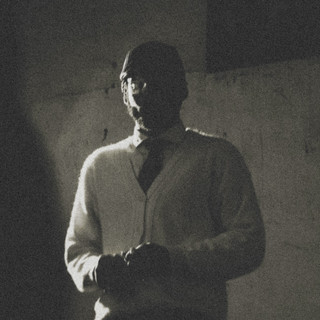
Others
There are other aspects that we tend to dismiss; however, seemingly helps Serøtonin’s overall image to stay relevant in a time where attention is the biggest currency. The shells in his dreads, often white ensemble and sombre edits in the few photos he shares via social media all contribute to his mystique. Not only does his aesthetic fit the sound of his music, but also sets a precedent to which his supporters religiously follow. A great example is a snippet he has teased over two months ago with still no release date nor indication of what direction he aims to take next. Many similar artists would be scrutinized for this move; however, Serøtonin’s supporters understand him and everyday builds up the anticipation.
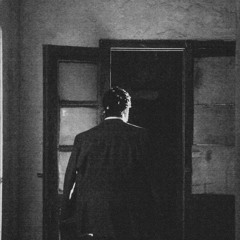
Conclusion
Now that we have a better idea of the artist, what conclusion can be made about Serøtonin? He is a unique artist who prioritizes music over stardom and this decision has benefitted him tremendously. With praises from the industry and a hardcore fanbase, Serøtonin is not falling out of our playlists any time soon. What most would describe as a slow growth, but due to the fact that his talent is undeniable, him choosing to be private doesn’t disturb his outreach to the slightest. Au contraire, it only amplifies it, while he has total control of his image and the pace in which he unveils his singles. Perhaps it is a pathway more emerging artists should consider themselves.
“Not going to lie, I just woke up,” Sosocamo says. It has not been long since he appeared on my screen wearing a white shirt that starkly contrasts his dark jaw-length dreadlocks. “I was up late last night making music,” he offers, trading his live feed for a bright orange circle that sits on my screen like a forlorn egg yolk. It’s 6:30pm in Lagos where I live, and the sun is retiring, sending streaks of amber light through my windows. In North Carolina where he’s calling from, it’s 1:30pm, the sun is boisterous and flecks of clouds quietly drift overhead.
Sosocamo recently released his debut album No Service, a 13-track project flush with the breezy and broody ambience that often colors a late-night drive of sobering introspection. In the cover art, he wears black pants and a matching black jacket stippled with gems, which opens to reveal a white tee. He poses with his hands in his pocket, looking at something outside the frame, as the grass in the field behind him lilts in the direction of a gusting breeze.
“It’s still surreal.” He says of his growing celebrity. “I’ve been waiting for a long time, so I don’t think it changed me,” he continues. He still lives in North Carolina, where he was born and raised. He occasionally runs into friends from his childhood. When I ask how the experience feels, his reply is curt: “Pretty normal for the most part.” During a listening party held in Rayleigh, close to his home, he spotted some old buddies in the crowd. He describes the experience of meeting them after the show as awesome. “The album is a homage to North Carolina, that's why the album cover was just out in the fields, in the middle of nowhere. It’s also why I called the album No Service.
The rest of our conversation has been transcribed below and edited lightly for clarity
.jpeg)
How would you describe yourself?
I like to just make good-ass music, and I be chilling though, you feel me? So that's really what I am up to.
Interesting. How did you start making music?
So I've been making music for about 10 years now. I started when I was, like, 14. I always thought rapping was cool. So eventually I just made a setup in my room and stuff. And it just kind of evolved and it grew from there. It's been a long ride.
You know it’s interesting that you say this because in my years as a journalist, I’ve heard variations of this story. Do you mind sharing more details on your setup, what went into that?
Well, my dad was a music producer. My entire family, in fact, was very musical. They pretty much inspired me to try it myself. So I saved up like a hundred dollars. At the time I was 14, so I was broke as hell. I remember I went to the bank to get one of those $100 Visa gift cards and when I got back home I just got on Amazon and ordered my first setup. I think it was like a gaming pc setup.
Do you remember the first song you ever made, and what was the experience like?
The first song that I ever made was with my friend from middle school. I think we were taking band class together. We were both music nerds or whatever. We made our first song in his dad's basement at around 1 a.m. It was cool.
What kind of song was it? Was it a Rap song?
Yeah, we were rapping you know it was just some random type beat on YouTube.
.jpeg)
I always joke that at some point every guy had aspirations of being a successful rapper. The only difference is that some people, at some point, sequester this aspiration in service of a more plausible career choice, while others keep plowing ahead. At what point did you know you were going to take music seriously?
At first, I did it just for fun. I thought it was cool to put auto-tune in my voice and just be in my room and make songs. After doing that for some years, I started doing it (producing) for people around me. So, for a while, I thought I would just be an engineer. I kind of kept music for myself as a hobby but once I met my girlfriend who is now my executive producer—she makes pretty much all my beats or helps touch them up—I started taking music a lot more seriously.
That’s interesting, what year was that?
It was 2022.
Oh wow, that’s not too long ago
Yeah. So, my girlfriend and I have been together for a couple of years now.
Let’s get into your new album. It’s terrific. I especially like how it samples a generous array of sounds whilst remaining sonically cohesive. Did you go into the process of making the project with a fully formed idea, or did you kind of make it up along the way?
We went into it with an idea but it just evolved as we were making it.
.jpeg)
I’m very curious as to how you make music. What’s your creative process like?
I record and track myself. I think it's more fun when I record and make the music myself, so I usually just punch in. I feel like punching in is just like writing without actually writing, I'm just doing it on the computer yeah. About my process, I'll probably spark a smoke for a little bit, chill, and then I'll look through beats for about 10 minutes. I load up a song, and I just start punching myself in. When I go to New York or LA, sometimes I'll have an engineer that'll do it for me.
How long on average does it take you to complete a song?
I usually make a song for an hour, 30 minutes, or two hours.
My favorite song on the album is Chronic. In the past week or so, I've probably played it 20 times. What’s the story behind the song?
I appreciate that. I remember when Keep Steady just started picking up—I had just started working with my current label, Broke Records. So, that was the first time that I had ever received any form of money for music. As soon as I got that check from the label, I bought a whole new setup and Chronic was the first song that I made on that first new setup that I bought.
.jpeg)
Outside of music, what do you do for fun?
Yesterday I just bought a lifetime gym membership for the first time. I did not know they would go so crazy. I was like ‘damn they have a sauna in here.’ I think they have a court. I’m going to be there every day. I like to hoop. I might do some yoga. I’ve never done yoga before. I just bought a new P5. I was just playing Spider-Man the other night. That was lit. So, I'm just a simple dude.
Francis LeBlanc sits comfortably in his own success story. At 24, the Haitian-American singer-songwriter who goes by Fridayy has already earned three Grammy nominations, landed chart-topping collaborations with DJ Khaled’s God Did and Lil Baby’s Forever, and built a devoted following of over 1.5 million on Instagram where he calls himself "Melody God." But his path to recognition wasn't built on viral moments or industry connections. It was forged through years of genuine artistry and an unwavering commitment to melody.
.jpeg)
Fridayy's musical foundation began at age six in his father's church in Philadelphia, where he learned to play piano, bass, and guitar. Born February 12, 2000, he grew up surrounded by music, with his pastor father and musical brothers creating an environment where creativity flourished naturally. "Growing up in a Haitian household taught me to create from the heart, to sing and speak in a way that truly reflects what people feel and go through," he reveals. "That foundation has had a powerful impact on my music today."
.jpeg)
His brothers became his first and most influential teachers. "I'd say my biggest unexpected mentors were my brothers—Musikspirit, Jean, Leo, and France," he shares. "They weren't formal mentors in the traditional sense, but growing up and making music with them really shaped certain aspects of my sound and how I approach making music. That shared creative environment taught me collaboration, experimentation, and staying true to my voice."
What distinguishes Fridayy is his philosophy that melody reigns supreme. "For me, melody is everything," he explains. "If I can create something that sticks with you, I feel like I've already won. The lyrics come after, once I've captured the feeling." This approach has proven successful; his 2023 single When It Comes to You climbed both the Billboard Hot 100 and Hot R&B/Hip-Hop Songs charts, peaking at No. 97 and No. 29 respectively, while his collaborations with major artists have consistently found commercial success.
.jpeg)
The breakthrough came through his work as a songwriter and featured artist. His vocals on DJ Khaled's "God Did" (peaked at No. 17 on the Hot 100) and Lil Baby's "Forever" (peaked at No. 8) both reached the chart's top 20, with "God Did" earning him three Grammy nominations in 2022. These collaborations showcased his ability to complement established artists while maintaining his distinctive sound.
Despite his recent success, Fridayy's journey to artistic authenticity took considerable time. "It took me nearly a decade to truly find my voice," he admits. "I had to unlearn the habit of mimicking those I admire and instead draw inspiration from them to shape a sound that's entirely my own." The pivotal moment came when Timbaland reposted his work on Instagram, a validation that confirmed he was on the right path.
His relationship with R&B reflects this balance between tradition and innovation. "R&B has always been close to my heart, it's a big part of who I am as an artist," he explains. "My music pulls from that deep-rooted tradition, but I also like to stretch its edges and blend it with other influences. Some of my songs feel like classic R&B, while others take it somewhere new."
.jpeg)
Even as he pushes boundaries, Fridayy holds tight to what he considers R&B's essential elements. "Background vocals and raw emotion are the pillars of R&B that I'll always hold onto," he states. "There's something timeless about layered harmonies and the kind of vulnerability the genre invites. It's about love, pain, joy and being fully open. No matter how the sound evolves, that emotional honesty is what makes R&B special."
This reverence for tradition, combined with his willingness to experiment, has made him a sought-after collaborator. His work spans from classic R&B sounds to more contemporary productions, always anchored by his distinctive vocal approach and melodic sensibilities.
Success brought hard-earned lessons about the music industry's realities. "Taxes and that this is a business at the end of the day," he says with a laugh. "I've learned to approach everything professionally and not look for friendships in the wrong places. Respect goes a long way, but you've got to stay on point."
.jpeg)
His approach to managing expectations reflects this practical wisdom. "I remind myself that I'm driving my own car and trying to be like everyone else will only lead to a crash out," he explains. "The more I stay true to myself, the more I realize there's no traffic in my own lane. Authenticity creates clarity."
Fridayy's songwriting process centers on creating genuine connections with listeners. "I believe we're all dealing with something, and that shared human experience is powerful," he reveals. "I write from a deeply personal place, but I try to leave space for the fans to see themselves in the music. It's not just about my story, it's about creating something that feels honest and relatable."
.jpeg)
The emotional impact he seeks goes beyond entertainment. "I want people to feel empowered, to know that they're not alone and that they can push through whatever life throws at them," he states. "My music is about resilience, about finding light in the dark. I want listeners to walk away feeling like they can do anything and they must keep going."
His ambitions extend beyond performing. "Headlining an arena tour and launching my own label are two big goals for me," he reveals. "I want to create a space where I can sign and develop talent, building something bigger than just my own music." His vision for the industry reflects his belief in nurturing authentic talent: "I'd bring back signing artists for their raw talent, not just because they have a viral song. There's something powerful about discovering an artist based on their full potential, not just a moment."
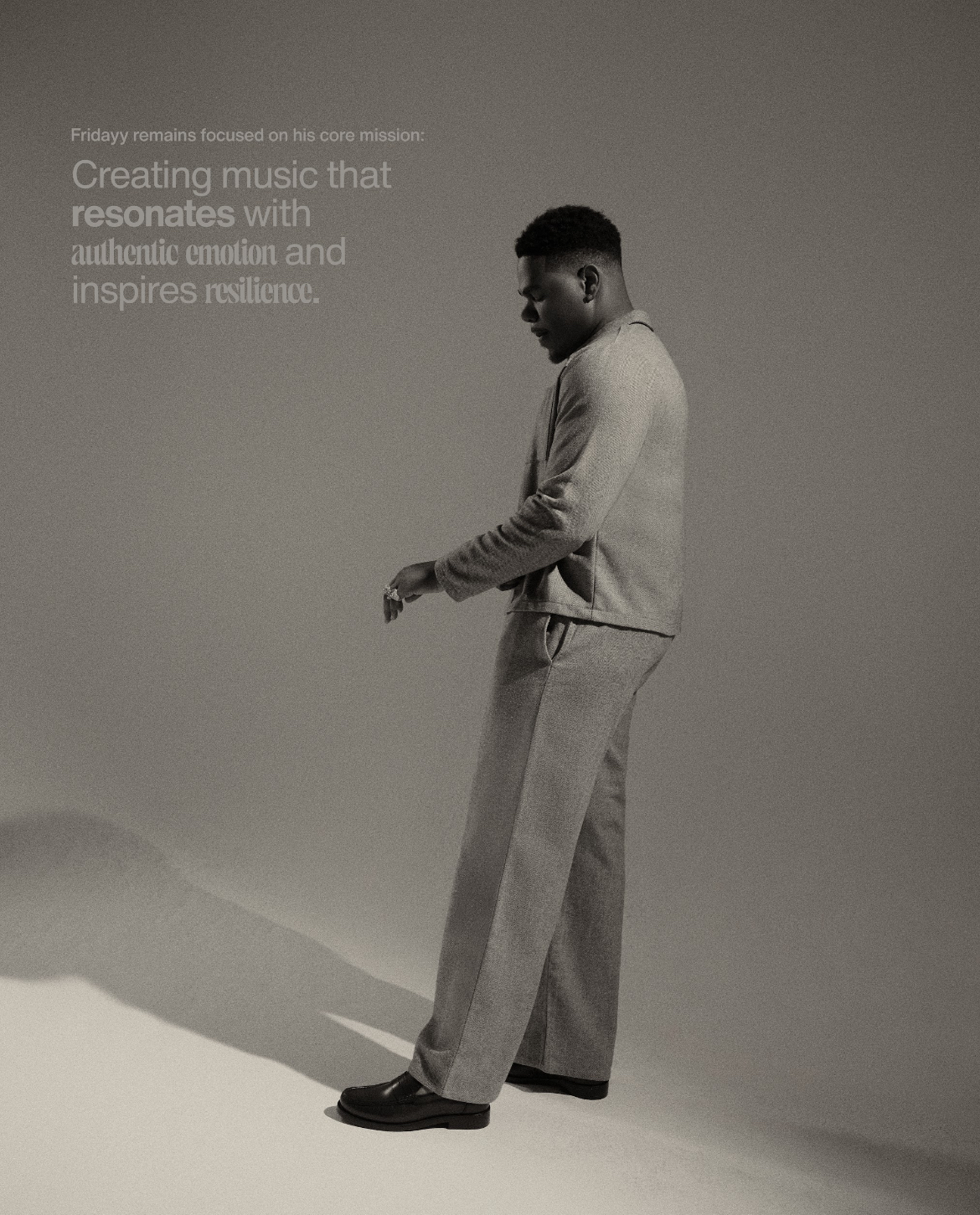
For emerging artists, his advice is straightforward: "Be as different as possible. Don't try to fit in. Really show your true self. The more you share your authentic story, the more people can genuinely connect with you."
When asked about the central theme running through his work, Fridayy's response reveals the spiritual foundation that continues to guide him: "That it only takes one—one idea, one hook, one painting, one person. If you stay consistent and put in the work, God will handle the rest. Keep believing and stay hopeful."
This philosophy has carried him from Philadelphia church services to Grammy nominations and chart success. As he prepares for his upcoming headlining tour and promises that his new album is "something special," Fridayy remains focused on his core mission: creating music that resonates with authentic emotion and inspires resilience.
His journey from church musician to chart-topping artist proves that staying true to your own lane, even when it takes a decade to find it, can lead to success that's both meaningful and lasting. For Fridayy, melody isn't just everything, it's the foundation for building a career that matters.
Fridayy's headlining tour begins this June, see full dates on his official tour page and the announcement press release here, with European dates scheduled for fall 2025. His latest album "Some Days I'm Good, Some Days I'm Not" is available now.
Deeds Mag Credits
Talent : Fridayy @Fridayy
Mag: Deeds Magazine
Photographer: Dametreus Ward @meech213
Video Lighting: John Rutlege @jwr_photos
Lighting Asst: @filmedbytim
Photo Asst: @harborgraceco
Photo Asst: @manyshiningfathers
Fashion Dir : Gloria Johnson @styledbyglo_2
Stylist : @haylee_ahumada
Stylist Asst: Tyler Bride @tylerbride4
Stylist Asst:Flossy Will @flossywilll
Groomer : @busko5150cuts
Production: TMG @tunnelmediagroup
Exec Producer: @daniellehstyles
Casting Dir: @belatisali
Location : @meechstudios
Special thanks @theforefrontgroup
A couple of days ago, I was having a conversation with a friend. I told him how I’m obsessed with an artist. Well, while I am obsessed with the artist, I can also see him gaining traction and building community. And the person asked me why I sounded sad about it. I said I sounded sad because it means I’m going to lose my artist.
He asked, “Why is that a bad thing?”
And genuinely, I didn’t have a ready answer.
But this is the much I know:
When an artist blooms, especially one that has built a safe, comforting community for you, as they grow and become bigger, you start to lose the intimacy you once had with them. And it’s a two-faceted thing. Because while you’re happy that your artist is becoming a global phenomenon and finally getting the recognition they deserve, you’re also a little heartbroken. Your private little artist moment is gone. The inside jokes, the niche references, the sense of “we knew him before the world did” — they start to fade.
But that’s what happens with community building.

Community building means developing a circle around your sound, your art. Creating a space where your fans feel like they’re in direct relationship with you. Even when it’s not entirely one-on-one, it’s close enough to feel personal. A community that knows you. A community that listens and speaks back. A community whose feedback shapes your work, and who know that their feedback matters.
That is what community building is. And in the Nigerian music industry over the last five years, one of the artists we’ve seen do this, carefully and intentionally, is Dwin, The Stoic.
Dwin doesn’t make the kind of music that typically “blows” in Nigeria. It’s not the usual Afrobeats, the fast, jumpy, radio-ready stuff. No. Dwin makes music for real lovers. His songs are slow, quiet, deeply emotional, and beautiful. For a while, he was quietly building a community. And he had loyal fans — the kind who could draw a timeline of his growth using specific songs.
There are people who’ve loved him since ‘Ifunanya’.
People who’ve cried to ‘Sit’, a quiet, soulful meditation on grief and loss.
People who still hold ‘This Fight’ close, the song he released in 2021 as a memorial for the lives lost during the End SARS protest in 2020.
These songs became community markers, emotional bookmarks in the timeline of fans who found themselves in Dwin’s music long before he made it to bigger stages.
And then one day, everything changes.
Your artist, once your little secret, becomes known. You wake up and the whole world is singing Streets. Word for word. People are quoting lyrics on Twitter. Radio is playing it. The algorithm is catching on. The shows begin. First across cities, then across countries. Your artist is no longer just yours.
And even though you’re proud, so proud, something about that shift feels like loss.
But again, that’s what happens with community. As families grow bigger, intimacy sometimes grows thinner. Still, that doesn’t change the fact that this artist is yours. That you were there when it was quiet.
That’s the gift and curse of community.
When we talk about building community as an artist, we’re talking about more than just growing followers or chasing clout. It’s about connection. Building a world your fans feel like they belong to.
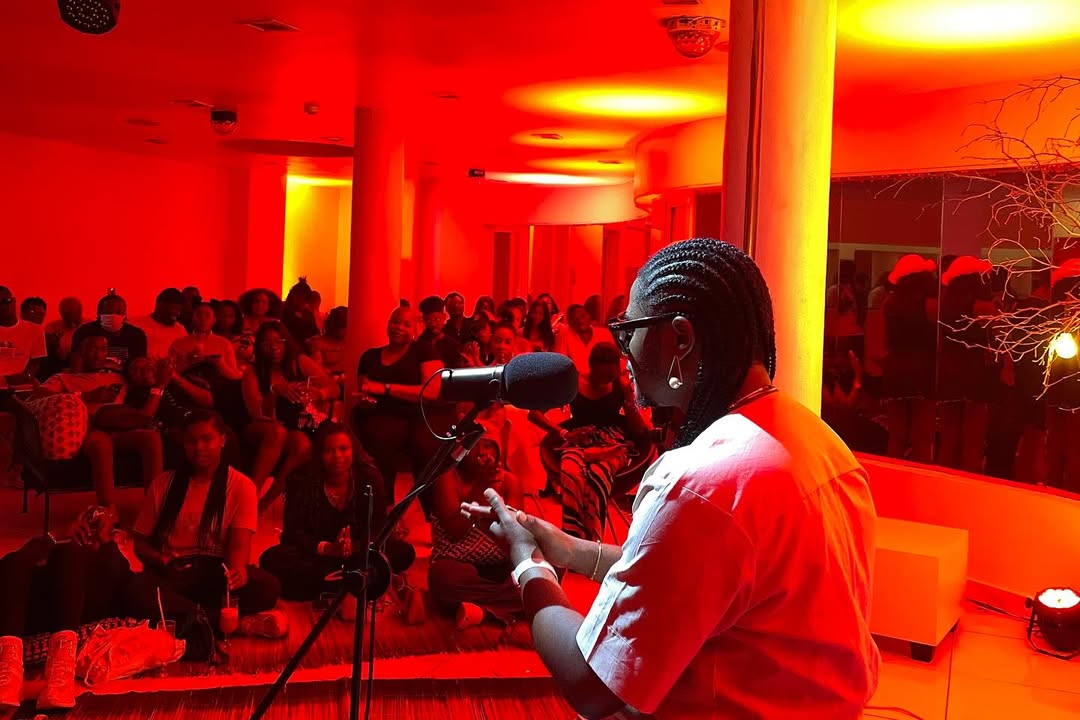
It means:
This kind of community doesn’t just support your art. They sustain it.
They stream your music, sure. But they also buy your merch, fly out to your shows, fund your projects, carry your message, and show up for you when the numbers don’t.
They give you a cushion to grow creatively. They make you feel safe to try and fail and try again. And they remind you that your art matters to real people, not just charts and platforms.
So yes, losing that intimacy can feel like heartbreak. But it’s also proof that the community worked. That the music did what it was meant to do. Connect, move, grow.
Dwin, The Stoic is proof of that.
And whether or not we still get to sit in the quiet with him like before, his voice will always be home for those who first heard it in the silence.
Afrobeats has lived through a golden moment, an era of global embrace, border-crossing collaborations, and cultural breakthroughs that placed the genre firmly on the world stage. It’s been years of undeniable triumph. Yet, in the midst of all the noise, a quieter conversation keeps resurfacing—among listeners, critics, and even some artists themselves: has the sound stalled?
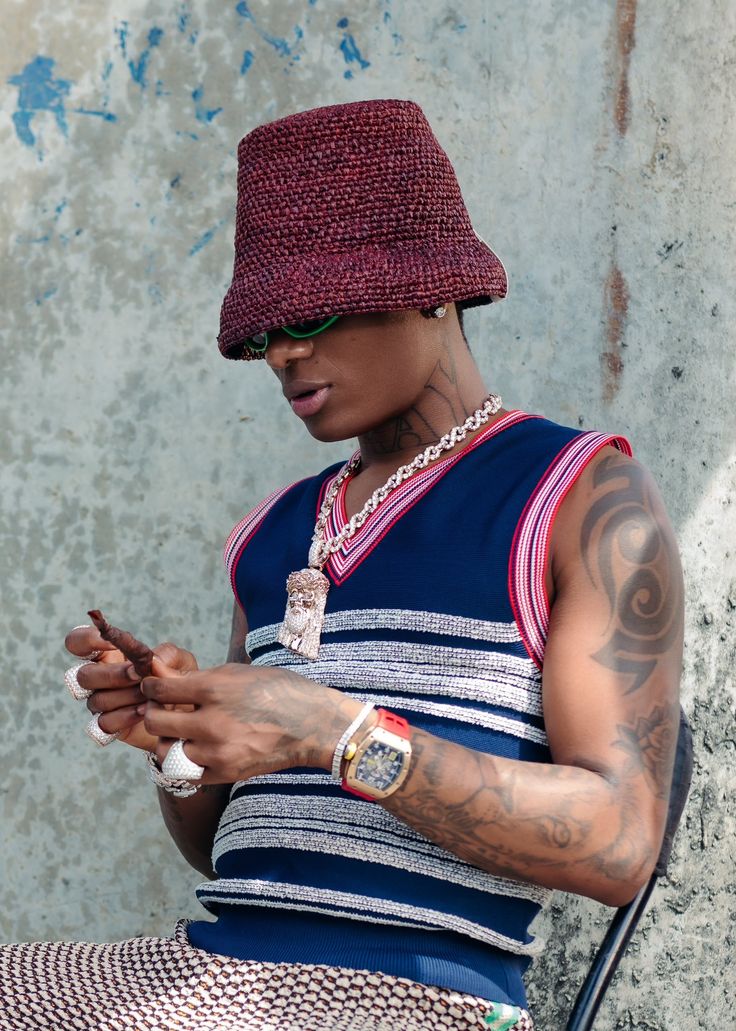
There’s a growing sense of saturation, a creeping boredom in the sonic palette, and a noticeable absence of risk. The genre that once pulsed with innovation and rebellion feels, at times, like it's treading water. I’ve found myself increasingly preoccupied with the why. What caused this creative plateau? And strangely enough, I keep returning to one word—success.
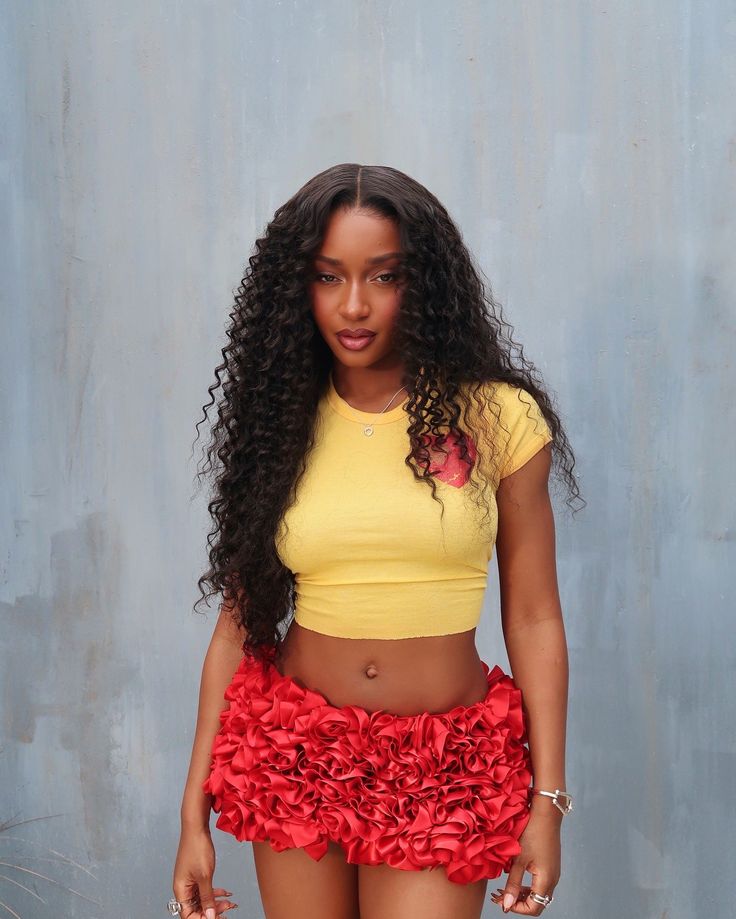
In classical thought, Aristotle described success not as external validation but as eudaimonia—a state of flourishing reached through virtuous living and the pursuit of one's full potential. But our present cultural lens often views success in far narrower terms—metrics, milestones, accolades. In the age of streaming platforms and digital dashboards, it’s easy to believe that once an artist racks up enough hits or headlines, they’ve arrived.

And that’s the problem. Success, as we understand it today, can be quietly corrosive to creativity. It offers the illusion of arrival. Not because success itself is flawed, but because its modern framing implies finality. Artists stop chasing wonder and start managing legacy. They become stewards of what worked instead of seekers of what’s next.
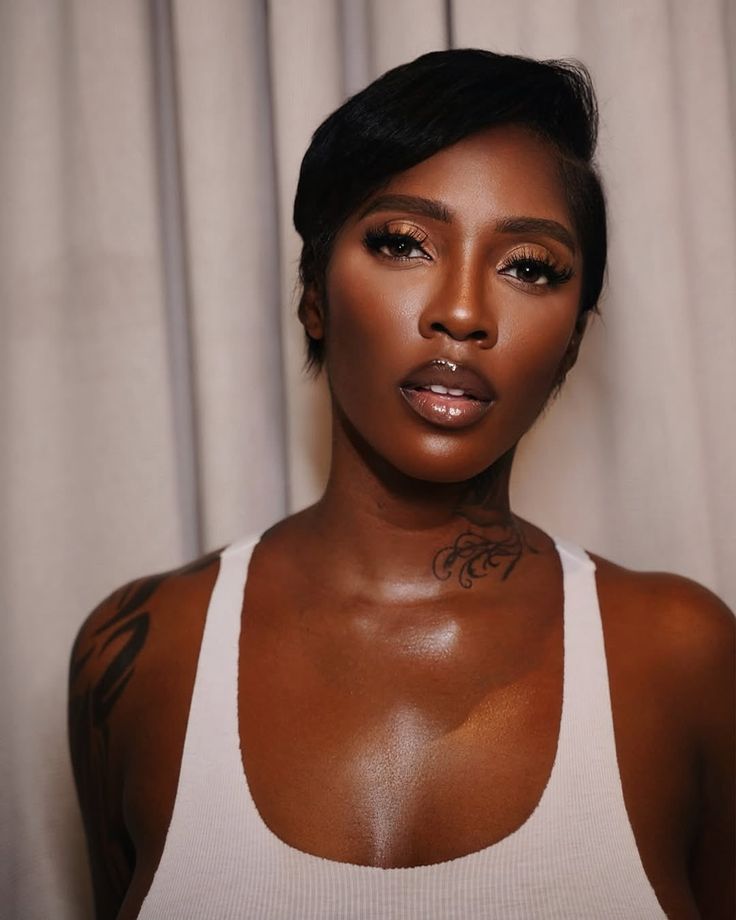
This is where James Baldwin’s words feel almost prophetic. “An artist cannot be successful,” this is not to deny artistic achievement but to warn against the comfort it brings. To accept success as a destination is to betray the role of the artist. Because art was never meant to sit still. It was meant to unsettle, to challenge, to surprise. The moment it becomes predictable, it begins to decay.
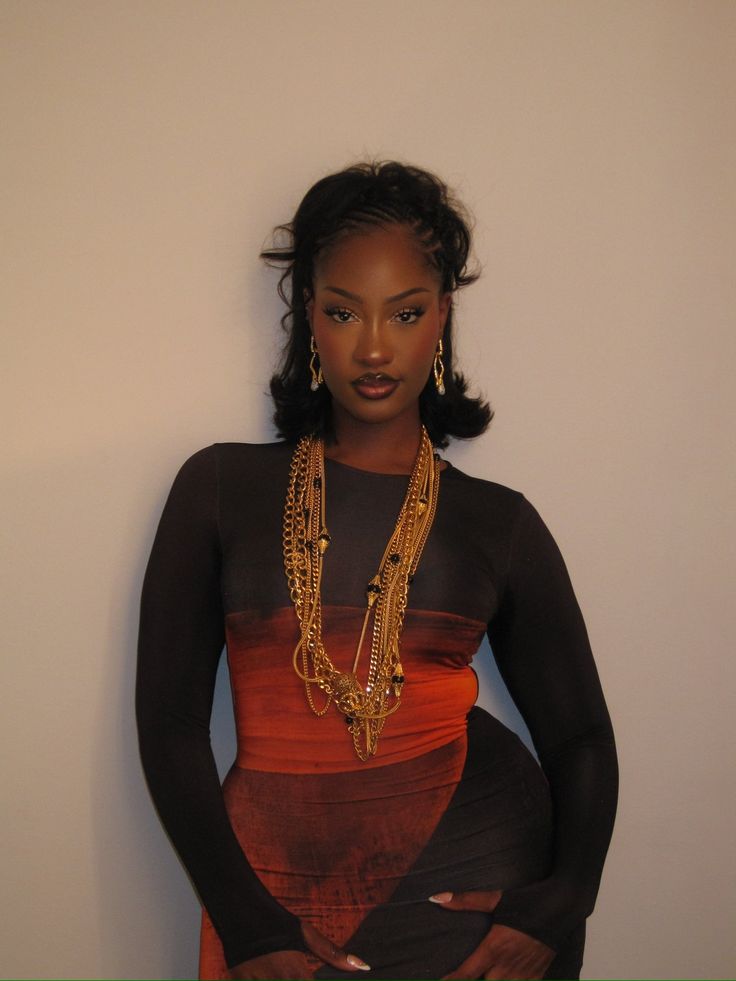
For the genre to continue evolving, it’s not just the artists who must grow. The art form itself must be stretched, reimagined, and redefined. Growth cannot coexist with safety. Real artistic evolution demands risk, discomfort, and the courage to disappoint expectations. It calls for creators who are willing to shed formulas, who are unafraid to alienate, and who are bold enough to step beyond their own reflections.
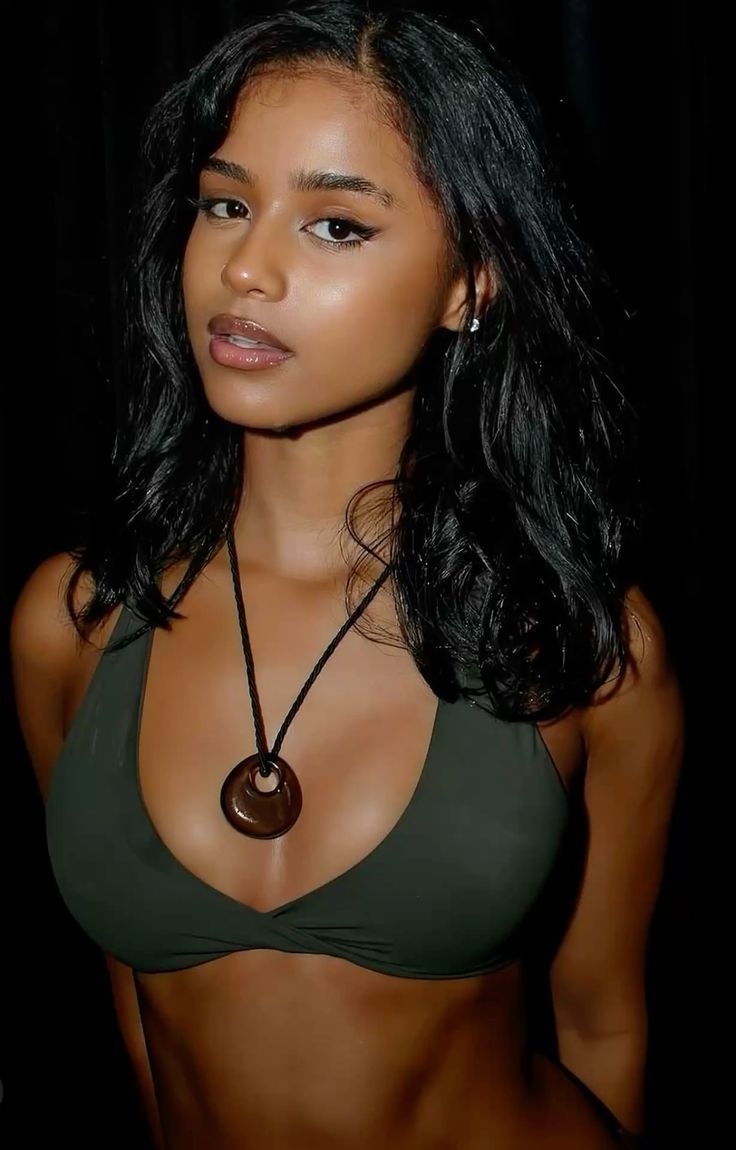
And this is the heart of the matter—when artists evolve, art elevates. The responsibility of the artist is not to bask in recognition, but to provoke, to question, and to move culture forward.

Perhaps the question isn’t whether our artists are successful, but whether they’re still brave. Are they still willing to see? To disrupt? To transform? That, more than streams or plaques, is the real measure of artistic legacy.
Grime pioneer, Skepta, has ignited a trans-Atlantic rap feud that has hip-hop fans buzzing. The North London MC openly declared that U.K. rappers are lyrically superior to their American counterparts, a bold and daring statement.
Soon after, Skepta challenged U.S. rappers to a battle on wax, a U.K. vs U.S. showdown, and Massachusetts spitter Joyner Lucas answered the call. What followed was a volley of diss tracks: Skepta’s scathing “Friendly Fire” and “Round 2” versus Joyner’s retort “Nobody Cares,” turning a cross-Atlantic clash of egos into headline news. And while this battle may seem unprecedented, Skepta’s fans know one thing for sure – this isn’t his first rodeo. The grime legend has been here before, breed in a culture that treats lyrical warfare as a rite of passage.
Skepta vs Joyner Lucas, on the surface, pits two highly skilled MCs from different rap traditions in a duel. Skepta fired the first shot with “Friendly Fire,” a track that not only dismisses Joyner’s impact but takes swipes at American rap at large. “Joyner Lucas, you bastard / Why you rap like you studied at Harvard?” Skepta spits aggressively, threatening to “catch ’em outside” and even crash Lucas’s show in London to humble him.
Joyner Lucas wasted no time responding. On “Nobody Cares,” he hits back with personal jabs, painting Skepta as a fading legend: “Nobody cares about how you and Drizzy are close, or how you invented U.K. rap, but still ain't Top 10 on your coast”. The trash talk spilled onto social media: Joyner hyped up the battle on Twitter (“The moment I’ve been waiting for… say the word, Joyner Lucas vs @Skepta #UKvsUS”), while Skepta coolly compared their streaming numbers and sneered “ignorance is bliss” at Joyner’s lesser reach.
What might seem like a sudden international beef is actually the product of a long-simmering debate about U.K. vs U.S. rap – one that Skepta intentionally stoked, and one he’s exceptionally well-equipped to fight. After all, Skepta built his name through diss tracks and clashes long before this U.K. vs U.S. face-off.
To understand why Skepta looks so comfortable in battle mode, one must understand grime’s clash culture and his origins in it. Grime, the British-born genre that Skepta helped globalize, was built on lyrical warfare. In the early 2000s, before chart hits and Mercury Prizes, grime MCs earned their stripes on pirate radio stations and in crew showdowns.
Skepta himself began as a DJ on London’s pirate airwaves, spinning beats for the Meridian Crew in Tottenham. Back then, pirate stations like Heat FM and Déjà Vu FM were the battlegrounds where hungry young MCs took turns on the mic, battling for bragging rights in crackling broadcast signals over London.
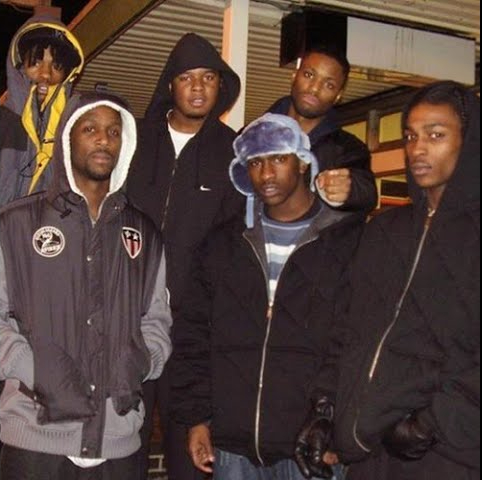
Skepta’s early role was behind the decks, crafting instrumentals like the underground hit “Private Caller” and reloading tracks as MCs (including his younger brother Jme) sprayed rapid-fire bars live on air. It was an on-the-job boot camp for timing, lyricism, and the art of “sending” (dissing rival MCs in lyrics). In these no-frills settings, Skepta honed the sharp tongue and fearless attitude that now serve him in high-profile feuds.
By the mid-2000s, Skepta had stepped out from behind the turntables to grab the microphone himself, and quickly proved he could dish out battle bars with the best. When Meridian Crew disbanded amid street and legal pressures in 2005, Skepta and Jme formed Boy Better Know, their own independent grime collective and label. BBK embraced the clash culture ethos: they did things DIY, dropped mixtapes and freestyles directly to fans, and never shied away from lyrical confrontation.
In this era, Skepta began releasing diss tracks and war dubs that gained attention on the scene. He famously boasted “I’m a mic man,” meaning battling and dominating the microphone is in his blood. Grime OGs like Wiley, Dizzee Rascal and D Double E had set the template with clashes on pirate radio and live events, and Skepta eagerly carried that mantle forward.
Skepta’s baptism by fire as an MC came in 2006 with one of grime’s most legendary clashes: Skepta vs Devilman on Lord of the Mics 2. Lord of the Mics (LOTM) is a famed DVD series started by Jammer (of BBK) that puts two MCs face-to-face in a basement for a battle, effectively grime’s version of a prizefight. Skepta, then an upcoming North London spitter, went up against Devilman, a Birmingham MC, in a showdown that has since passed into grime folklore.

In that clash, both MCs employed a then-novel tactic: flipping each other’s lyrics in real time to mock the opponent. This innovative approach, mimicking and remixing an opponent’s bars to undermine them was “one of the first times” the style was used, and it “changed clashing” as an art form going forward. Jammer himself ranks Skepta vs Devilman among the top clashes ever. For grime fans, that DVD battle is required viewing – the tension in the room, Skepta’s relentless flow and Devilman’s provocations all make for electrifying entertainment.
Critically, Skepta won more than just bragging rights from the Devilman battle, he earned respect that would fuel his rise. Those few minutes in a basement proved Skepta’s mettle to the entire grime scene. The battle became grime lore: fans still debate who really won (Devilman had hometown support; Skepta’s career undeniably skyrocketed afterward), and quotes from the clash became part of grime’s lexicon, “Are you dizzy, blud?” From that point on, Skepta was battle-tested, a self-proclaimed “Microphone Champion” (the title of his 2010 album) who could back up bravado with bars.
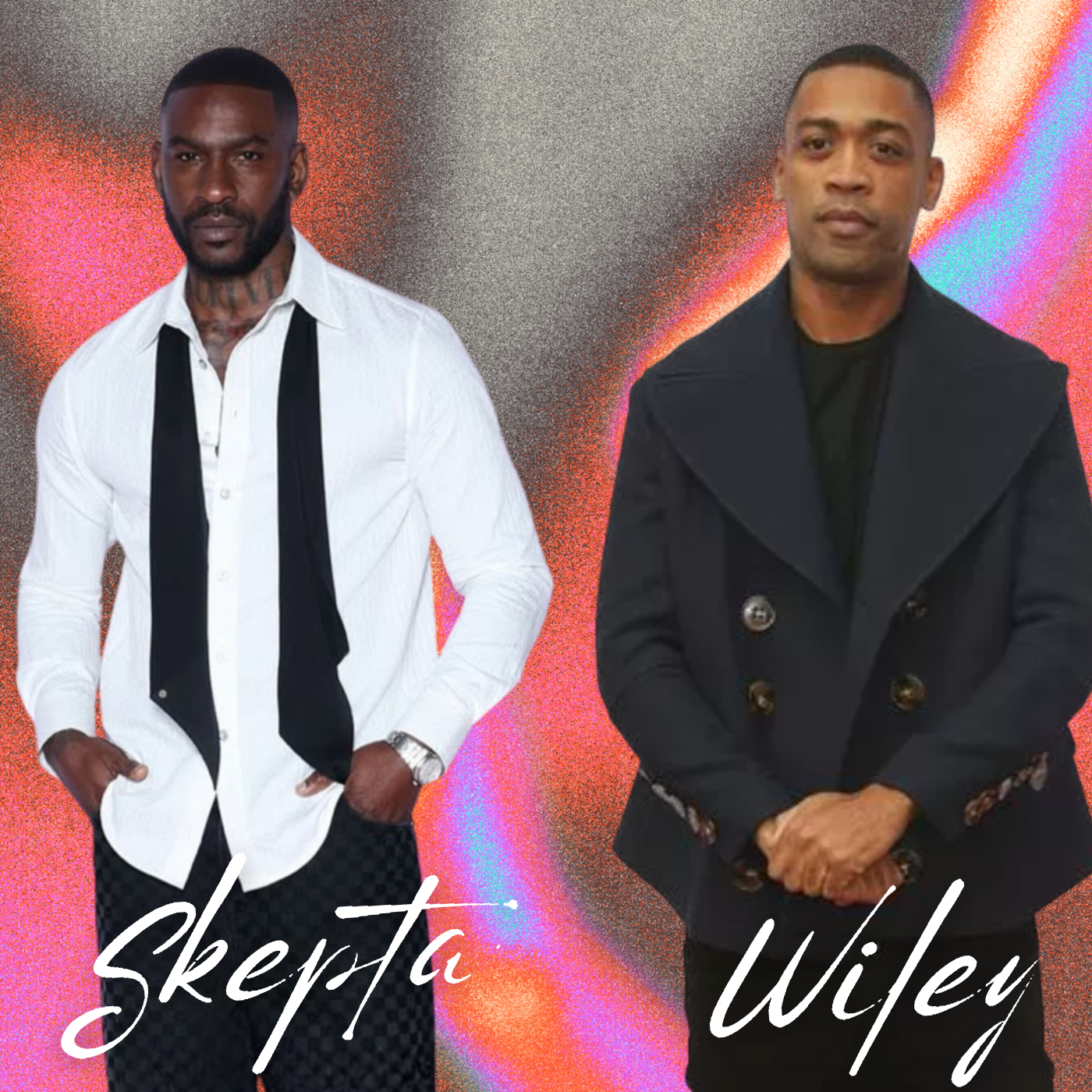
Not only has Skepta tangled with Devilman, he’s also sparred with fellow grime heavyweights when provoked. Case in point: his feud with Wiley (the Godfather of Grime) a few years ago. In late 2018, Wiley publicly criticized Skepta for collaborating with Dizzee Rascal (Wiley’s own longtime rival), calling Skepta a “fraud” among other things. Never one to let a call-out slide, Skepta clapped back in early 2019 with a diss track titled “Wish You Were Here,” whose lyrics taunted Wiley for being a no-show in person. “Came to squash beef but you weren’t there… Came to your party, you weren’t there,” Skepta rapped over a classic grime beat, directly poking at Wiley’s absence. The track was a cheeky response to Wiley’s prior diss (“Flip The Table”), and it showed Skepta’s ability to engage in internal beef while keeping it mostly on wax and relatively light-hearted. (Interestingly, Skepta even hid a backwards-message Easter egg in the song that cheekily shouted out Wiley, indicating there was a layer of respect beneath the beef.) The Wiley exchange, coming long after Skepta had achieved mainstream success, proved that Skepta still relishes a clash. From pirate radio sparring to Lord of the Mics to trading barbs with his own mentors, Skepta has built his legacy in no small part on the art of the diss.
Fast forward to 2025, and it’s little surprise that Skepta would be the one to spark a grand “UK vs US” rap battle. Ever the instigator, he explicitly set out to “finally get this U.K./U.S. rap debate sorted”. It all began with a series of posts Skepta made on X (Twitter) in early July, where he floated the idea of staging clashes between UK and US rappers. He wasn’t shy about naming names. He offered up potential pairings including:
Skepta’s tweets instantly set twitter ablaze. Fans debated the hypothetical showdowns, some with excitement, others with skepticism. Many doubted these face-offs would ever materialize (they felt more like fantasy football for rap nerds), but the conversation was sparked. Crucially, one American rapper did take the bait for real: Joyner Lucas. The Worcester, MA native, known for his rapid-fire flow and past battle with Tory Lanez, volunteered to represent Team USA. “Alright, say less, my boy,” Joyner wrote in response to Skepta’s challenge, making it clear he was game to spar. In fact, Joyner tweeted the #UKvsUS call-out with his name versus Skepta’s as soon as Skepta hinted he “wanna clash an American rapper”. Thus, the stage was set for an actual transatlantic rap battle, perhaps not the marquee names Skepta initially envisioned, but a contest nonetheless.
What’s remarkable is how quickly this playful suggestion turned into a tangible beef. Skepta’s “Friendly Fire” track was essentially a response to Joyner accepting the challenge – Skepta calling him out by name and questioning his pedigree. Joyner’s counter-diss “Nobody Cares” arrived days later, and just like that, the two were entrenched in a battle carrying the weight of national pride. The feud tapped into age-old debates: UK rap’s global standing, the perceived lyrical vs commercial focus of US artists, even accent and slang differences (at one point Joyner shared a viral comedy skit mocking British rap accents).
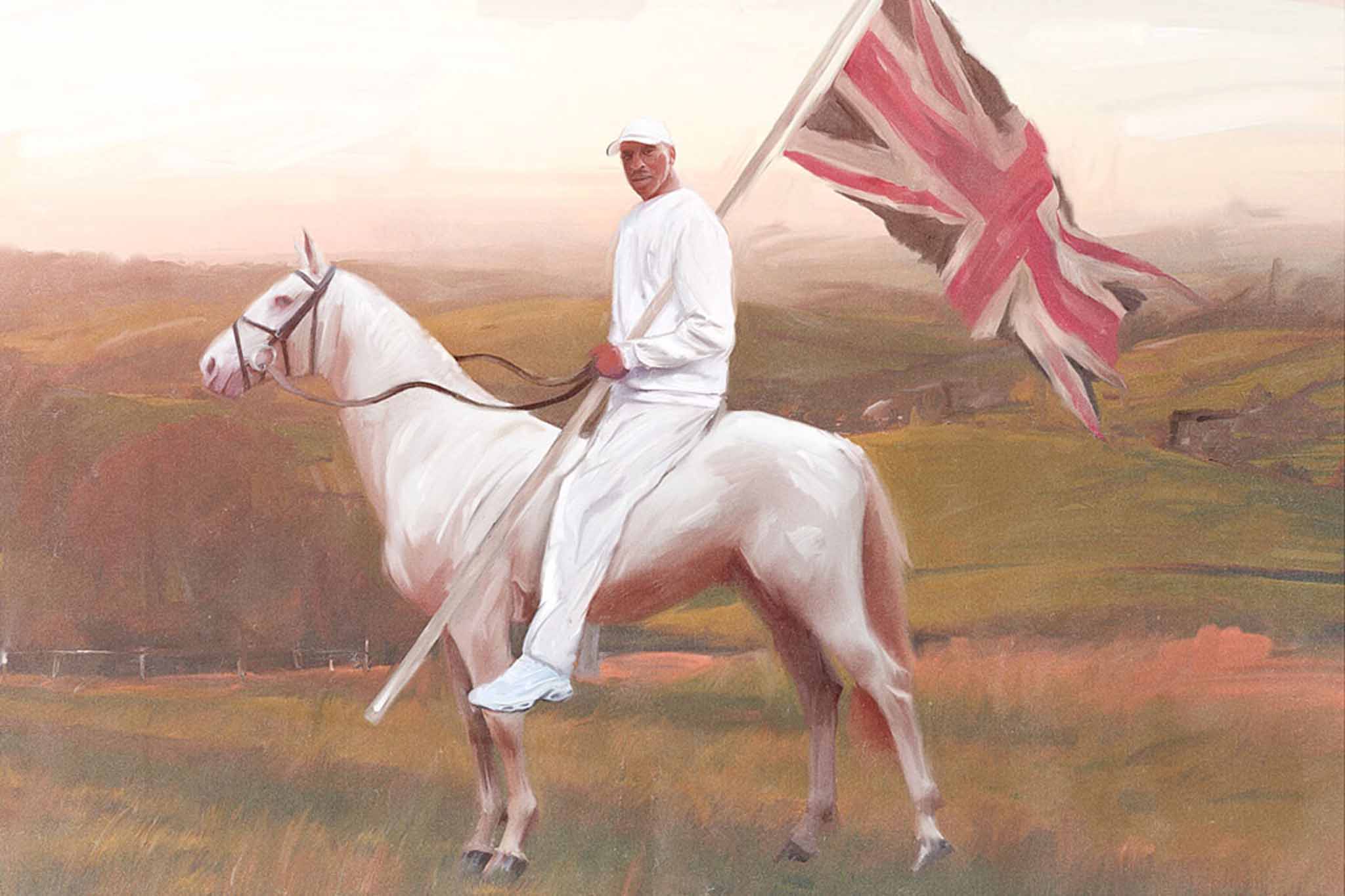
Skepta, ever the showman, embraced the role of UK’s champion. After Joyner’s first diss, Skepta doubled down with “Round 2,” a follow-up track where he ups the ante, ridiculing Joyner for taking a week to respond and even clowning Joyner for wearing a Union Jack ski mask on his cover art. In “Round 2”, Skepta savagely reminds Joyner exactly who he’s dealing with: “You can ask Devilman how I get busy,” he sneers, name-dropping his old clash opponent to warn his new one. It’s a full-circle moment, Skepta invoking a 19-year-old battle to bolster his 2025 grudge match. This is not his first rodeo, indeed.
Not everyone is convinced the Skepta vs Joyner duel is worth the hype. On Reddit, some listeners called the whole UK vs US theme “corny, a manufactured spectacle rather than a genuine grudge. They do have a sound argument – that trying to fit a battle rap format (which is traditionally live, face-to-face with rapid rebuttals) into the slower medium of diss tracks and tweets loses its edge. Indeed, the spat has sometimes felt more like a pre-agreed promotional exercise than an organic rivalry, both artists have new projects to promote, and the exchange has boosted their visibility. Yet, even if there’s an element of showmanship, it’s undeniable that fans are engaged.
Social media has been flooded with bar-by-bar breakdowns, reaction videos, and patriotic trash talk from both sides. The very hashtag #UKvsUS became a trending topic as the beef peaked, illustrating that Skepta successfully captured the rap world’s attention.
Amid all the side spectacles and hot takes, one thing is clear: Skepta is in his element. The 40-year-old grime veteran has taken on the mantle of transatlantic battle champion with the same ferocity and charisma that won him clashes in the underground days. This entire episode underscores how Skepta’s battle-hardened background prepared him for a moment like this. When he raps on “Round 2” that Joyner can “ask Devilman how I get busy”, it’s not just a boast – it’s a reminder that Skepta has been putting competitors to the test since Joyner was a teenager.
The technical skills, the strategic mindset, the thick skin for insults, these were all honed in London pirate radio sets and grime clashes long before Skepta had a worldwide fanbase. It’s telling that Skepta himself views this less as a blood feud and more as sport. “I wasn’t even gonna reply back but I’m a rapper’s rapper,” he wrote in an Instagram story addressed to Joyner, acknowledging that Lucas “stood up and said something” and thus earned a response. To Skepta, lyrical war is an exercise in respect: you send for those who are brave enough to send for you. It’s the same code of the pirate radio days, if you grab the mic and call someone out, you better be ready when they reload and fire back.
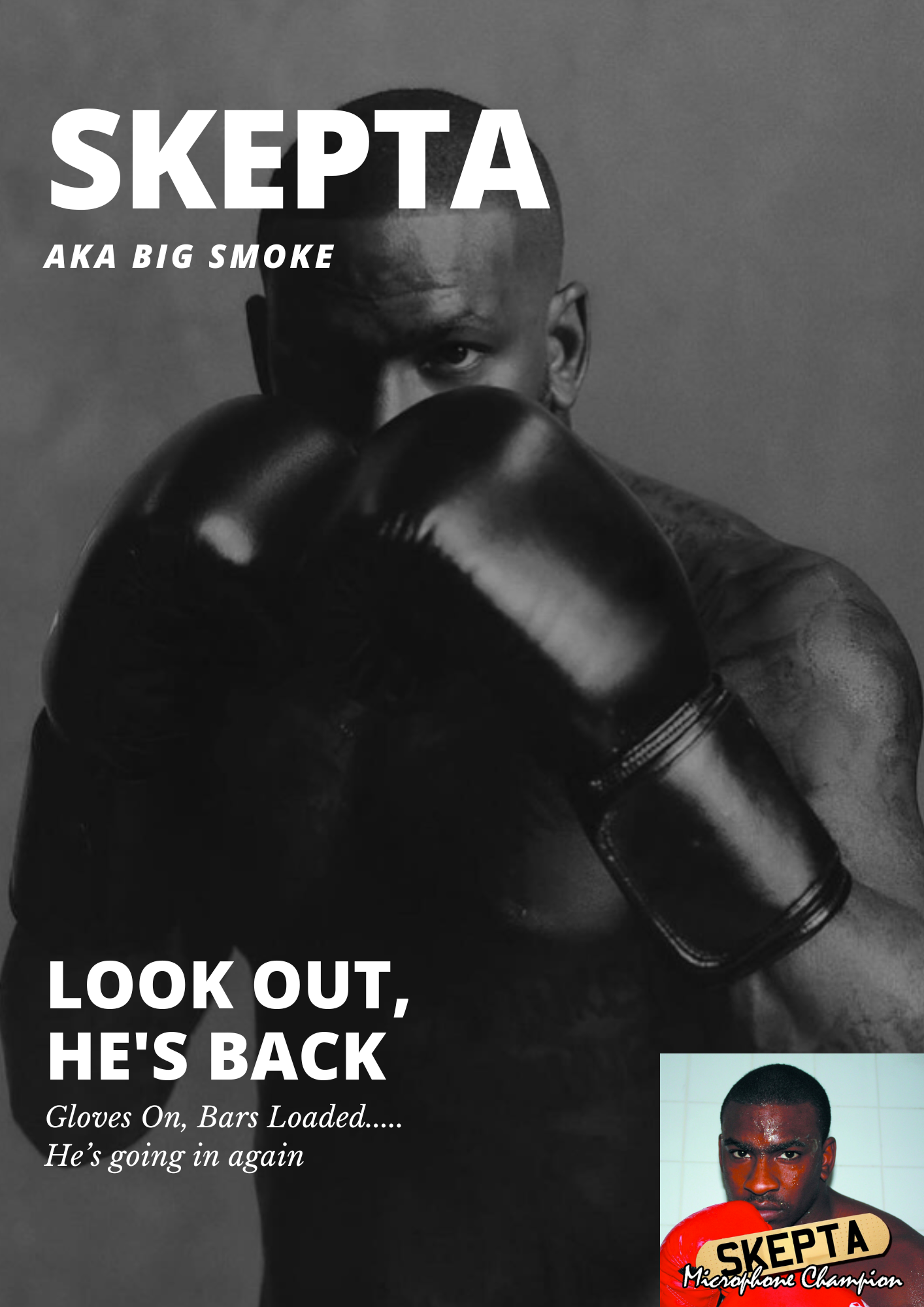
“This is not Skepta’s first rodeo.” The phrase rings true as we watch him navigate the Joyner Lucas battle with a veteran’s poise. He’s not only trading bars; he’s educating a global audience on grime’s battle culture by example. From spitting on pirate radio as a hungry young DJ, to tearing up rivals in basement clashes, to settling scores on festival stages, Skepta’s entire career has been defined by competitive fire. It’s the same fire fueling the current UK vs US exchange, an event he orchestrated almost for the love of the sport. And while the outcome of the Skepta-Joyner duel remains to be seen (as at the time of this writing, Skepta has landed two diss tracks to Joyner’s one, and fans await if Joyner will respond again), one outcome is indisputable: Skepta has reaffirmed his status as a grime warrior. Win, lose, or draw in this battle, Skepta’s legacy as a clash veteran is secure.
In the bigger picture, the “UK vs US” rap beef has been both a homage to grime’s roots and a savvy modern spectacle. It harks back to the energy of Meridian vs East London clashes and Lord of the Mics battles, but unfolds via YouTube and Twitter in front of a global crowd. And who better to lead that charge than Skepta? He’s the artist who bridged underground and mainstream, UK and US, and now he’s bridging generations by showing younger artists what a proper war of words looks like. As Skepta gears up in his corner, fans on both sides of the Atlantic can agree on one thing: they’re witnessing a master at work. This is Not His First Rodeo, and Likely Not His Last.
Two months have passed since summer began, and the world was introduced to "Night Shift", the highly anticipated EP by the esteemed Neo-Soul songstress Lizzie Berchie. Hailing from East London, this British-Ghanaian phenom has yet again graced us with her most intimate and honest work to date, carried by her breathtakingly soulful voice.
Relieved from finishing a series of shows, which included; SXSW London (Soul Surge Stage), Cross The Tracks Festival (Blues Project Stage) as well as a sold-out headline show at the St Pancras Old Church in London, Lizzie has taken time out of her schedule to sit down with us to talk about the making of her new EP, creative process, life changing risks, inspirations & more.
"I'm good. I feel relieved and relaxed, especially now that the show is done. I'm in a perfect, peaceful place," she tells us. We discussed her journey as an artist, culminating in the creation of this sincere piece of work after her last EP, "Am I An Adult Yet?", released in September 2023, and her transition into a new phase of her life, where she chose to pursue music full-time after officially resigning from her 9-to-5 job.
.png)
You are a student of Neo-Soul and R&B. Your songs ooze those sultry, smooth vibes. And to that, which artists or albums do you think of when you make your songs?
"Oh, I have [many] songs that I always tell people, like, if I could write a song, I'd want to write [something like] this - and the one that quickly popped into my head just because I went to the Beyonce [Cowboy Carter] show yesterday is '16 Carriages'. It has to be one of the most beautifully written songs ever. I just think it speaks to that artist's journey and struggle right into adulthood as well…. Reflecting on her career development as an adult and as a mother. I love that song. However, I also have numerous other references. I'd say another one is Jill Scott's 'Who is Jill Scott?' album. For me, that's a neo-soul classic —a groundbreaking album that felt authentically hers. It was playful, it was sexy, it was smooth, it was like virtuosic, it was everything for me. Yeah, that's always the album I'll be thinking of, ' Yeah. '
'Who is Jill Scott: Words and Sounds Vol. 1' was Scott's introduction to the world, accompanied by her smooth vocals and powerful storytelling, which beautifully explored the intricacies of womanhood, sexuality, and life in general, thereby solidifying her as one of the most important voices in the neo-soul movement. Lizzie Berchie's discography thus far feels like an embodiment of this blueprint laid out by Ms Scott, with Night Shift being a stunning reaffirmation of that being her most authentic and vulnerable work driven by stunning melodies, this EP is letting the world know who Lizzie is, what she's bringing to the table and that she is here to stay.
.png)
As an aspiring writer myself, I understand that writing songs is an emotionally taxing process. There's a lot of reflection, learning, and unlearning. What is your process? How do you mentally prepare yourself to pour so much of yourself into songs?
"You know what? I don't think I ever mentally prepare myself to pour my thoughts into songs. I probably prefer not to. Do you know what I mean? When you write a song, it's like, oh, now these people know my business. So, I don't think I'll ever be mentally prepared. It's like just part of the process of writing, and you do so in a way that feels therapeutic and cathartic. There's probably a little therapy session between me and the producer beforehand. I think that's normal, especially with Danny [Hilton], whom I've been working with for like the last five years. Whenever we get into the studio, it's always like, 'mate you won't believe the week I've had' or he'll be like, 'oh mate you won't believe what happened'…. Then we probably talk for like 50% of the studio time before we even start making any music, so maybe that's a mental preparation, the little mini therapy session before."
.png)
Night Shift is a beautifully curated project, from the visuals to the storytelling throughout tracks one to seven. At what point of the creation process did you think of what the EP was going to look, feel, and sound like?
"Oh, I think I had the EP title [Night Shift] from very early on. I knew early on that I wanted it to be called this, and the songs just fell into place after that. The EP is an ode to the working artist – that 9[am]-5[pm] to 5[am]-9[pm]. It is a story of tribulations, from dawn to dusk. I tried my best to stay within that theme when I was having sessions. I have songs that I wrote during the time of creating the EP that didn't make it onto the EP, simply because I felt they didn't fit into this world. But yeah, I immediately built the world in my head, even before writing some of those songs. I mean, some of those songs on that EP are like four years old, like Pressure. I wrote that in 2021. So, it's an old concept, but I knew what I wanted this EP to be about, and I knew what kind of colours. I knew I wanted it to be like blue, cool tones, moving away from the normal warm, earthy tones that I use. I wanted to write something that felt like midnight, a little cold, but then moved back into those warm tones towards the end of the song, like 'Happiness'. I felt like 'Happiness' really does emulate the normal kind of sound and colour [people are used to from me]. Yes, I'm not sure if that's it. What's it called? That thing that Pharrell has. Synaesthesia or something like that, you know, in colour and music. Maybe I might have that. Who knows? Who knows?"
I commend her on the prominence of the colour blue in the rollout and how rare it is to see it. It's often considered controversial, but Berchie mentions how she came to like it in the end, saying, "Yeah, it was not a colour palette I'm comfortable with, if I'm being honest. So, even with some of the photos that came back, I was like, 'I hate them all' because I'm so used to just being in warmer colours. But I had to grow to love it because I knew that was the palette that the music needed.
.png)
What lessons did you learn about yourself and your art form when making this EP, especially after you released Am I an Adult Yet?', going into this new stage of your life?
"Oh, I learned that there's no point in stressing, because what's going to happen is going to happen. If it's not going to work out, it's not going to work out. If it's going to work out, it will. So, there's no point in stressing. Yeah, I think that's a huge lesson I learned. I learned to also, I guess, relate it to the last point I made, just to let go. I am very organised. I'm very meticulous about how I want things to be. And I like to do everything myself so that I'm not left disappointed. And this time around, I was like, no, I'm gonna let other people take creative control. I'm gonna let other people, you know, lead this and that. So, even with many of the visuals and some of the conversations beginning, I felt I was trying to dictate a lot of things. And then I thought, 'Do you know what?' I need to let this creative mind do their thing, especially working with Delenn [Vaughan], who is incredible. I said, 'I trust you wholeheartedly - do your thing.' I don't want to give too much direction. You listen to the music and tell me where you think it takes you. And if I like it, we go ahead. And that's basically what we did. So big up to Delenn who did a lot of the creative direction for the last three videos and Faith [Aylward] as well who shot the artwork."
.png)
It's natural to face obstacles in making art, but did you at any point in the process face any challenges that made you feel discouraged, and if so, how did you overcome those?
"I'd say probably about halfway through or releasing maybe the second single… the challenge I kind of felt was, no one cared. That was the challenge I felt after not releasing music for about two years; I felt like now that I've released music, no one cared anymore. Well, that wasn't a reality; it was just a lie from the enemy of the mind. But you know, you start to get impostor syndrome, and you're like, oh, is it even good? Do people even like it? Like, maybe it's not that great. Like, maybe it's just nice. Do you know what I mean? Like, you start to downplay everything. And then, social media, you know, when you're kind of in people's faces a lot on the algorithm, people just start to get a little bit complacent. You end up falling into a horrible trap and cycle of engagement watching, and I was like, 'Oh yeah, I need to stop this immediately and focus back on the music.' That's what I did. I had to get out of that mindset of quickly - 'you know what I don't care what any numbers say or what any stats or whatever anyone's emailing me, I don't care, I don't care what, it's done' - I want the music to be good and for it to be out. So that was an obstacle getting out of my head of the anxiety and impostor syndrome."
.png)
My personal favourite in Night Shift is Happiness because it speaks to achieving and maintaining something that everyone wants in their life: happiness. The song sounds and feels like a celebration of accomplishments, whether material or not. What are some accomplishments you have achieved thus far that you feel most proud of, and or have given you a sense of happiness?
Completing the EP. I think the day I got all the master's back, I was like, 'Oh my gosh, girl, you finally did it.' After two-plus years of writing and recording, which, especially in the music world, as a woman, feels like forever. So that was a proud moment. I remember just like sitting in the living room, playing it out on speakers, and just being like, it's done, it's done, it's done. That was a truly proud moment. [Also] The first award I ever won, which, other people may think, oh, it's such a small award, why are you so happy about it? But I was like, I just genuinely wasn't ever expecting any sort of recognition. So, winning that Rhythm in Britain award for my last EP, my second EP [Am I An Adult Yet?], I was genuinely overwhelmed. I would not have voted for myself in that category. So yeah, that was a real heartwarming time."
.png)
Suppose you were ever given the opportunity to perform on a stage like ColorXStudios, to be specific. Which song from Night Shift would you sing to introduce yourself to the world best?
"Oh God, that's a good one. I'm going through the tracklist, I can barely remember the songs." "Moonlight", her publicist, Sope Soetan, shouts. "And do you know everyone likes 'Moonlight', that song almost didn't make it onto the EP, I was not fond of Moonlight ' up until recently. It has to be either Happiness or Pressure.
The British R&B scene is taking up space right now. And so, who in that scene would you most want to collaborate with?
"You already know she's top of the list [Cleo Sol]. There are so many people. Elmiene. Elmiene is another incredible singer. I'm obsessed with his voice. Wow, why have everyone's names just come out of my head? And, ooh, why can I not think of anything? I mean, everyone! There are many people I am a fan of, from Mahalia to Natanya, who I generally think is heading towards world domination. Sasha Keable, KWN, is doing everything that needs to be done, giving everything that needs to be given. Summer Banton, Loie, I got to write with Loie last weekend. And even though that was the first time we'd written together, and even though we went to university together for three years, how hilarious. Amazing, sweet soul. Who else? That's all I can think of for now. But yeah, the UK R&B scene is doing [it]... Oh, Lola Moxom is another one. Lola Moxom has a beautiful voice. CARI, beautiful voice. I'm sorry, I'm coming back. Dayo Bello is someone I enjoy working with. Anaiis, I love Anaiis. Yeah, so much."
.png)
And finally, what are you looking forward to the most after this release of Night Shift? Are you going back to the studio, or are you giving yourself time to live more life? What's next?
"I'm going back to the studio. I will be living life simultaneously, but I'm heading back to the studio. I do want to release more music this year. And yeah, I just kind of don't want to stop. I want to keep going. I took a two-year break, which I felt I needed. And whenever I next feel the need for a long break, I will take it. But at the moment, I'm like, yeah, I feel mentally good. I feel physically good."
Those who are lucky enough will get to see Lizzie Berchie live at 91 Living Room on July 26th and again at the Jazz on Wick Festival at the Colour Factory in London on September 13th. As we witness Lizzie step so confidently into this new chapter, Night Shift represents a musical milestone and a personal triumph for her. It is her embracing vulnerability, trusting her creative instincts, and surrendering to growth. With her pen sharper than ever and her voice carrying the warmth and weight of lived experience, she's not just making music—she's building a legacy. And if Night Shift is any indication of what's to come, Lizzie Berchie is only just getting started.
Styling Credits:
Cover Look
Dress - Selasi
Look 2
Corset - HOCB
Bottoms - Lizandro
Jewellery - Alexis Bittar
Look 3
Dress - Selasi
Jewellery - Alexis Bittar
Look 4
Full look - Lizandro
Jewellery - Alexis Bittar
On July 8th, British-Nigerian artist Jim Legxacy announced the drop of a new 14-track tape ‘Black British Music’ (excluding the introduction) since his breakthrough ‘homeless n*gga pop music’ in 2023. As we tried our best to get an early listen, this is a release we just couldn’t miss and therefore, took upon ourselves to provide an honest and unfiltered first listen experience for our readers to dive into. With singles such as ‘Stick’ and ‘Father’ released earlier this year, and unofficial tracks in previous states making it across the internet, it is safe to say the process was long; however, it was worth the wait.
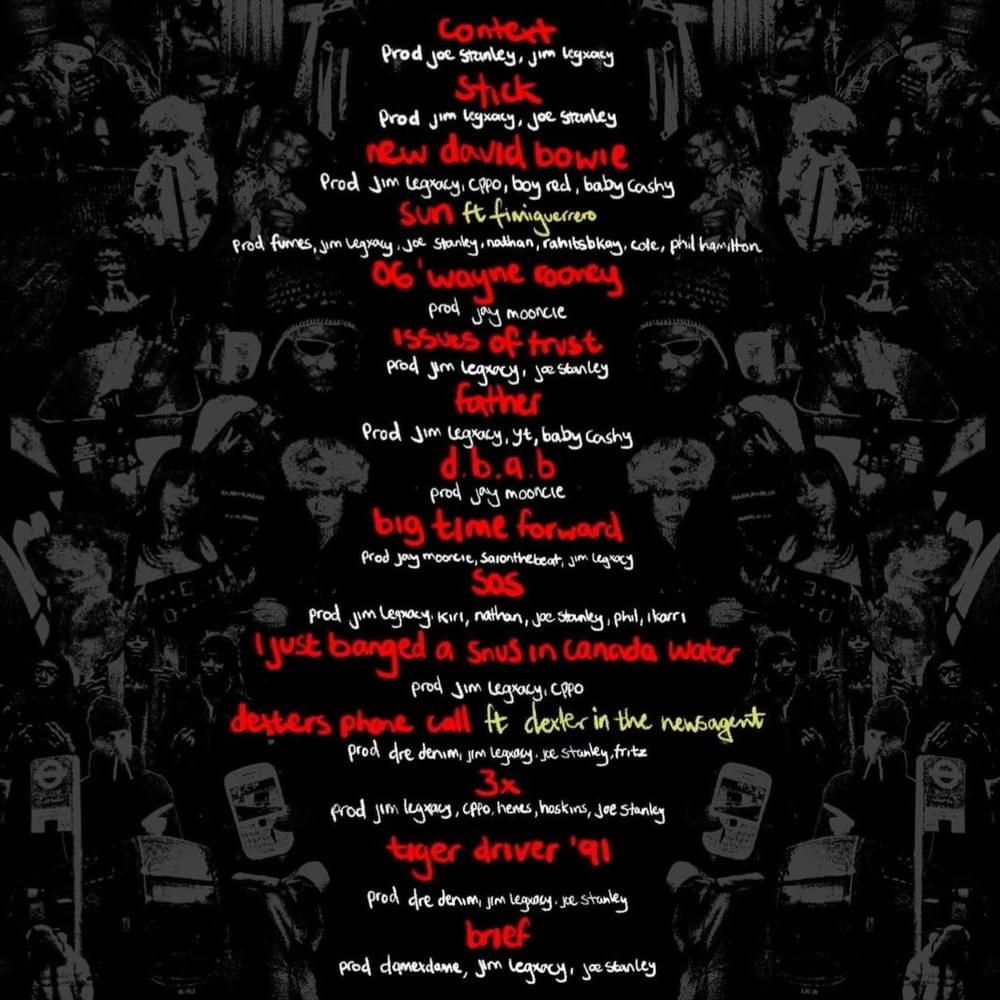
‘Context’ & ‘Stick’
Although the upbeat single ‘Stick’ was already released and has been devoured by Jim’s supporters ever since, we are able to view it in a totally different lens now in addition to ‘Context.’ In that particular monologue, Jim reflects on everything he went through in a short span, from the passing of his late sister, his mother’s strokes, his brother’s psychosis and on top of that, blowing into stardom. Moreover, he adds that he had a hard time processing everything at once, while realizing although he may be “out of the mud/ there will always be more mud.” This sets the mood to the entire tape and also puts a bittersweet taste in our mouth now replaying ‘Stick’ again. At first, we may have been under the impression that Jim was simply portraying an adventurous day at the block with his homies and love tangles; however, there lies deeper meaning in the song and the signs were always there. “Cause my boat can’t take on more water / so I’m gonna sink,” reveals the chorus. While he takes us on a day trip in South East London, Jim is silently drowning from the inside, it might be purposely or perhaps we chose not pay attention until now.
‘new david bowie’
When you take a quick look at the cover of the tape, you may have noticed a Jim Legxacy with a lightning sign on his face. This is in reference to the late British artist David Bowie, an inspiration to Jim’s music. On his second instagram page, the starlet even went as far as posting his face beside Davids. Along with several posts sharing photos of the legend as Jim always showed his admiration towards him. The track sounds like an extension to the previous one, only now the tempo is slower, the tone is darker and it happens to be dusk. We’ve been strolling with Jim on this journey for a while now. Much like his signature sound, the track is heavily infused with several samples matched together while Jim sings of putting his “Phone on DND.” Now that he gave us some context behind his mindset, we may interpret this as also him turning his emotions off, not wanting to feel a thing, from his love interest bubbling on the surface to the challenges at home Jim is hiding behind closed doors.
‘Sun’ Featuring Fimiguerro
If you’ve been here long enough, then you would know that this is not the first feature between the two that we have gotten our hands on; however, the first of the duo to drop officially. Although it makes for a solid song, it does fall a little bit short from the intricate two previous tracks we just had a pleasure to digest. Perhaps the fact that we had access to the other unreleased songs for over a year ultimately ruined the overall listen, knowing there were better features sonically from them together. However, a listener with fresh ears to both experimental artists may have a completely different experience entering track 03. ‘Sun’ is an attempt at a summer jam by Jim and Fimiguerro but instead, it ended up sounding more like a filler.
‘06 wayne rooney’
Alongside his passion for music, Jim also constantly makes references to his love of sports. Previously titled by supporters as Ernest Hemingway, ‘06 wayne rooney’ is a rock-inspired song proving Jim's musical versatility. For the first time on this tape, we get a closer glimpse to the fast-paced, chaotic and Jim-like life through his lyrics. He retells; “I just came from a war / there is a party in my head,” making use of his coping mechanism he has shown throughout to deal with the constant unpredictabilities in his life. Through his music, Jim has mastered the personification of his feelings, as much sonically as lyrically.
‘issues of trust’
Throughout HNPM, one of the main themes was the absence of his father and how it deeply affected him. ‘issues of trust’ is a folks ballad, yet another layer of Jim’s music adaptatibility that he has been waiting to unveil. Accompanied by just a guitar and violin-like strings, it doesn’t sound toned down, au contraire. as his gut-wrenching lyrics fill up the atmosphere in all the ways you’d hope it would. It is not about what is said, but the unspoken that Jim still hasn’t found the courage to share or perhaps just hasn’t found the right words to express his feelings, namely towards his father.
‘Father’
Perhaps a fan-favourite, ‘Father’ is Jim’s attempt to turn a complex topic into a lighthearted and catchy anthem. Similar to his other single, Jim is masking the melancholy of his feelings to make it digestible to listeners. It has a party-tone while the lyrics appear to uncover a difficult situation Jim had to endure growing up in the absence of a father. Just like music can be a distraction to our problems, Jim uses the choice of sampling and background music to uplift something for most would be a dark and sad output. This is a direct reflection to Jim’s coping mechanism and how he dealt with his past.
‘d.b.a.b’
A track for many supporters that was known as a rough live recording shared on the internet, ‘d.b.a.b’ in its complete form did not disappoint! Its magnetizing synths mixed with Jim’s vocal performance makes us feel every word angrily spat out of his mouth.
‘big time forward’
At first glance, ‘big time forward’ seems like it could be another low-ballad; however, it quickly persists with rhythmic drums best compared to some Dancehall inspiration. The only downside is it the repetitiveness of his lyrical line; “girl wanna move forward / she wanna big time forward” taking up most of the word space. He doesn’t elaborate much on his muse and how the sensation may occupy his body, mind and soul in that particular moment. That being said, it could be by envisioning DJ’s making mashups and remixes, which would explain the simplicity in its structure.
‘SOS’
Another song that was first introduced to us in the form of an airy live recording circulating across the Internet really took us by surprise. ‘SOS’ appears now as Soca, closest to the classic ‘Turn Me On’ by Kevin Lytte with bits and jams of Hip-Hop vinyl-spinning sound effects. Soca is a blend of dancehall and pop music, being at the centre of this multi-genre tune. This is Jim's best interpretation of the Soca sound, well-known in Britain due to its large Caribbean community and influence.
‘i just banged a snus in canada water’
In ‘i just banged a snus in canada water,’ Jim makes his biggest comeback in rap yet. In fusion of drums reminiscing of the Jerk era and singing samples, in addition to the narrator hyping up throughout, it makes for an unforgettable first listen and definitely stands out from the tracklist.
‘dexters phone call’
Sitting as the second official feature with dexter in the newsagent, Jim takes the backsit, thus taking care of the production side of this elevating song. Even in its simplicity, it still holds Jim’s element due to its distorted yet perfected soundscape Dexter is singing and a choir then joins her.
‘3x’
Jim’s official third single that dropped at the same time as the tape is none other than ‘3x’ featuring Dave. Before they were even talks of Jim’s new tape, he made a quick appearance on Dave’s last summer ‘Sprinter’ with Central Cee. For most listeners, it might have gone over their heads; however, supporters have been anticipating an official with the two and we’re glad for the wait. Whilst Jim does his ting, Dave is the one shining the brightest with his clever lines.
‘tiger driver ‘91’
‘tiger driver ‘91,’ stands well on its own but could have been left off the tape. It speaks of the same content on the previous track with Dave, which is addressing the haters, money and jealousy, almost playing beside it as an extension without new exciting elements. The trap-like vocal performance by Jim could appear tacky for some listeners as for long, the argument between US & UK in music was that the British artists are too focused on replicating American sounds to appeal to an American audience. Even though he manages to make it his own, it is not the best we’ve heard of Jim.
‘brief’
Last but not least, ‘brief’ can be best described as a moment of reflection by Jim on the lessons his past has taught him. Like most of Jim’s music, it is impossible to categorize his sound or coin it to a specific genre; however, we can determine that this track is fairly inspired by Afro fusion. For that reason, Nigerian singer Omah Lay, Victony or even newcomer Serotonin feel like a perfect fit not only to this topic but also the soundscape.
‘Overall’
Jim Legxacy’s growth in this tape is undeniable. In just a short amount of time, he has managed to revolutionize music as we know it. While he pays homage to his British roots and past inspirations, it is as though there are no genres of the world that he cannot touch. His outreach is boundless. Jim is capable of making any sound his own, where at some instances his pen might suffer a little bit as a result, the soundscape takes over and leaves listeners feeling content of their overall experience.
“Living an Impact For Eternity.” Who christens their album, their debut album especially, with this sequence of words? A title so grand in its ambition and monomaniacal in its intentions. Running your eyes over these letters, you can almost see them jump off the page, beckoning at you to grapple with their assertion. “L.I.F.E—Living an Impact For Eternity,” is the title of BurnaBoy’s debut album, the project in which he first introduced himself to us, staking out a reputation as a wily troubadour with a genius for fusing disparate sounds into a compelling new whole. All his albums since then, following this template, have attempted, with varying degrees of success, to enact a persuasive case for a subject he tackles.
African Giant, his fourth album, is in a sense a sharp rebuttal to what he—BurnaBoy—perceived as a slight from Coachella and finds him grappling with far-reaching impacts of colonialism on Africa, especially his home country Nigeria. Twice as Tall, like its predecessor, is also, largely, a rejoinder. Here, however, he trains his gaze on his 2020 Grammy loss—in the opening track he alludes to a strong desire to level up—and the rest of the album finds him chest thumping, exulting his musical chops, and generally interrogating the narrative, his narrative, of rising above from the ashes, forging something beautiful, something transcendent, from the rubble of his pain.
No Sign of Weakness, the title of his eighth studio album, is characteristically grand, pointed, and brazen. It’s a title that either commands deference or stirs up criticism. But to whom or what is he responding? Are this title and songs ensconced in it a reminder to himself? Is it aimed at his antagonists? Or is it a mix of both? Empty Chairs, whose snippet was the earliest portent of the album, provides us with clues to parse his intentions with this album. Over a soaring beat that could pass as a nation’s anthem or an accompaniment to a motivational speech, BurnaBoy intones: “My enemies are no longer on the streets, or the roads/ Now they’re on the internet of the blogs/ And in my sold-out shows looking for empty chairs.” It’s, at this point, expedient to pause and consider the import of this lyric.
No Panic—a high octane number in which drums rumble and a kinetic melody loops as-infinitum, evoking the sense of a shaman working a crowd into a righteous frenzy using powerful music—starts the album. “Dem go whine you but no panic,” BurnaBoy sings with vim and urgency. The phrase is a neologism from Nigerian pidgin which essentially calls for calm and composure amid a precarious atmosphere. It’s a perfect start to an album that aims to dispel allusions of weakness. Notably, it’s his first album opener, in his entire career, which doesn’t open on a somber note. In the next song, the titular No Sign of Weakness, a disembodied voice delivers a monologue on weakness’s insidious nature, BurnaBoy quickly follows with a supremely cavalier verse: “Ema lo fo bi tumbler…,” which literally translates to “Don’t break like a tumbler.” The Yoruba verb “fo,” while directly translating to “break,” could also mean “to lose one’s resolve,” or “to be afraid.”
The album, however, starts to feel incongruous on the next song, Love. It’s one of the best songs on the project but placing a somber song about love’s redemptive power right after two high-octane songs in which he’s focused on antagonizing his enemies makes for a jarring listen. As if to totally frazzle the listener, just after Love which feels like a calm evening of reflection at a lakeside, he thrusts us, brusquely, into the rowdy world of TaTaTa, where he and Travis Scott take turns singing about partying and sex. This motif reverberates through the album: songs feel haphazardly sequenced, and we never quite settle into a vibe before he thrusts us into another. The result is a bumpy listen and an album that veers irredeemably from its thematic anchor. By the time you make it through to the end, you might have culled a selection of songs that you gravitate towards but, you’ll probably feel like you just survived a wonky rollercoaster, your clothes thoroughly disheveled from the chaos, and your hair standing on it edges out of pure shock.
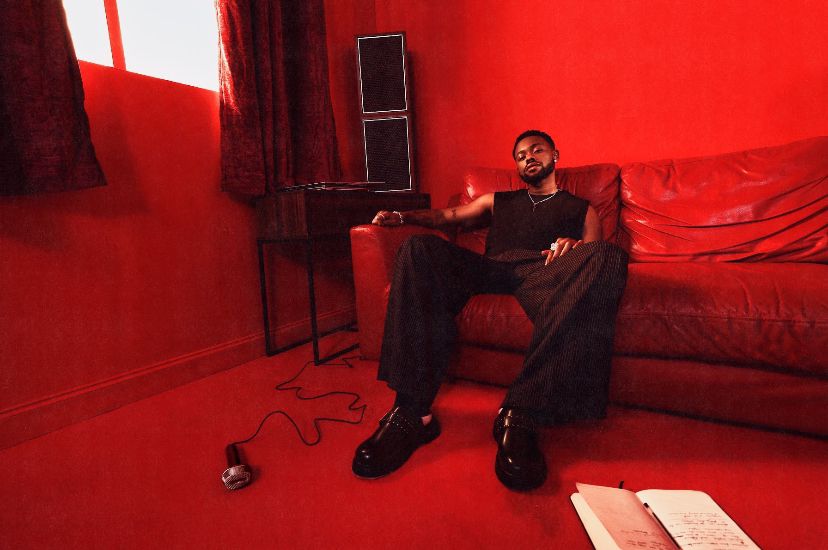
Today (18th July 2025), GRAMMY-nominated Afrobeats sensation Lojay returns with his brand new single ‘Tenner’, out today, as he officially announces his long-awaited debut album, ‘XOXO’, set for release on Friday 22nd August 2025.
The hotly anticipated project will feature his recent standout singles ‘MWAH!’ (featuring two-time MOBO winner Odeal) and ‘Somebody Like You’ (produced by GRAMMY-winning hitmaker Sarz), alongside all-new tracks that explore love, vulnerability, and sonic experimentation. The pre-save is now live here.
To coincide with the album’s release, Lojay has also announced his biggest headline European and North American tour to date, kicking off this September. The tour will see Lojay perform in key cities across Europe, including Amsterdam, Paris, Brussels, Hamburg, Copenhagen, Stockholm, and London - before heading stateside in October for shows in Los Angeles, Houston, Atlanta, Washington DC, New York, Boston and Toronto. Tickets and full details to be announced soon.
Speaking on the upcoming album, Lojay reveals:
“XOXO is everything I couldn’t say in a conversation — it’s messy, emotional, sexy, and honest. I wanted it to feel like a late-night text you probably shouldn’t send...but do anyway.”
Leading the next chapter, Lojay has dropped ‘XOXO’’s newest gem, with the release of brand new single ‘Tenner’. A love song at its core, ‘Tenner’ sees Lojay dive into a distinctively 3-step sound for the first time – a bold move that showcases his fearless approach to genre and innovation. Produced by rising Nigerian producer Black Culture, fresh from his work on ‘Be There Still’ from Davido’s latest LP ‘5IVE’ – the track blends shimmering synths, crisp percussion, and Lojay’s unmistakable melodies. On ‘Tenner’, Lojay confesses his love and devotion, repeating the hook “my tenner” in a heartfelt tribute to the one that’s captured his heart.
‘Tenner’ not only cements Lojay’s reputation as one of Afrobeats’ most innovative voices, but also signals the start of an exciting new creative era. Following the sultry, London-meets-Lagos collaboration of ‘MWAH!’ and the soulful depths of ‘Somebody Like You’, the new single underlines Lojay’s versatility and hunger to evolve, whilst reminding the world that love is beautiful.
With ‘XOXO’ now confirmed, ‘Tenner’ out now and a tour on the way, fans can expect more surprises and announcements from Lojay in the weeks leading up to the album’s release.
LOJAY WORLD TOUR DATES
September 4th - Europe Tour (Amsterdam, Netherlands) - Bitterzoet
September 5th - Europe Tour (Paris, France) - Le Trabendo
September 6th - Europe Tour (Brussels, Belgium) - Le Botanique - Orangerie
September 8th - Europe Tour (Hamburg, Germany) - Uebel & Gefaehrlich
September 9th - Europe Tour ( Cologne, Germany) - CBE
September 11th - Europe Tour ( Copenhagen, Denmark) - Amager Bio
September 12th - Europe Tour (Stockholm, Sweden) - Kollektivet Livet
September 19th - Europe Tour (London, United Kingdom) - Islington Assembly Hall
October 15th - American Tour (Los Angeles, USA) - The Roxy Theatre
October 17th - American Tour (San Francisco, USA) - Brick & Mortar Music Hall
October 21st - American Tour (Houston Texas, USA) - House of Blues - Bronze Peacock
October 23rd - American Tour (Atlanta, GA, USA) - The Masquerade - Hell
October 25th - American Tour (Washington, USA) - The Atlantis
October 26th - American Tour (New York, NY, USA) - Bowery Ballroom
October 27th - American Tour (Boston MA, USA) - The Sinclair
October 29th - American Tour (Toronto, Canada) - The Mod Club
ABOUT LOJAY:
Lekan Osifeso Jr., popularly known as LOJAY, is a dynamic Nigerian singer-songwriter celebrated for blending Afrobeats, R&B, and experimental sounds. With over 600 million streams on Spotify, he first gained international attention with his 2021 collaborative EP 'LV N ATTN', produced entirely by GRAMMY-winning hitmaker Sarz. Featuring global smash hits like ‘Monalisa’ (boasting over 250 million streams) and ‘Tonongo’, the project propelled Lojay onto the world stage and established him as one of Afrobeats’ most innovative voices.
In 2023, Lojay followed up with his critically acclaimed solo EP, ‘Gangster Romantic’, further showcasing his versatility and emotional depth across standout tracks like ‘Moto’, ‘Yahweh’, and ‘Leader!’. The project cemented his ability to craft emotionally driven, genre-defying records that resonate with fans globally.
Following collaborations with international stars such as Chris Brown, Davido, Wizkid, and Olamide, as well as recent features with Ayra Starr, Fireboy DML, Jae5, Steel Banglez, Tyler ICU and Odeal, Lojay continues to redefine the boundaries of contemporary African music. With his debut album ‘XOXO’ on the horizon, he stands as one of Afrobeats’ most exciting and forward-thinking artists.
The banjo, often seen today as a symbol of American folk and bluegrass music and a symbol of white Appalachian culture, has roots that run much deeper—a darker truth to its popularity.
The banjo is not originally American, nor white. It is African, culturally, historically, and spiritually—an instrument born of African heritage, carried across the Atlantic by enslaved Africans and reimagined in the brutal context of bondage.
Long before the banjo was romanticized on front porches in the American South, its ancestors were played across West Africa. Similar stringed instruments like the akonting (Senegal and Gambia), ngoni (Mali), and xalam were already part of centuries-old musical traditions. They served as vehicles for storytelling, oral history, and spiritual practice.
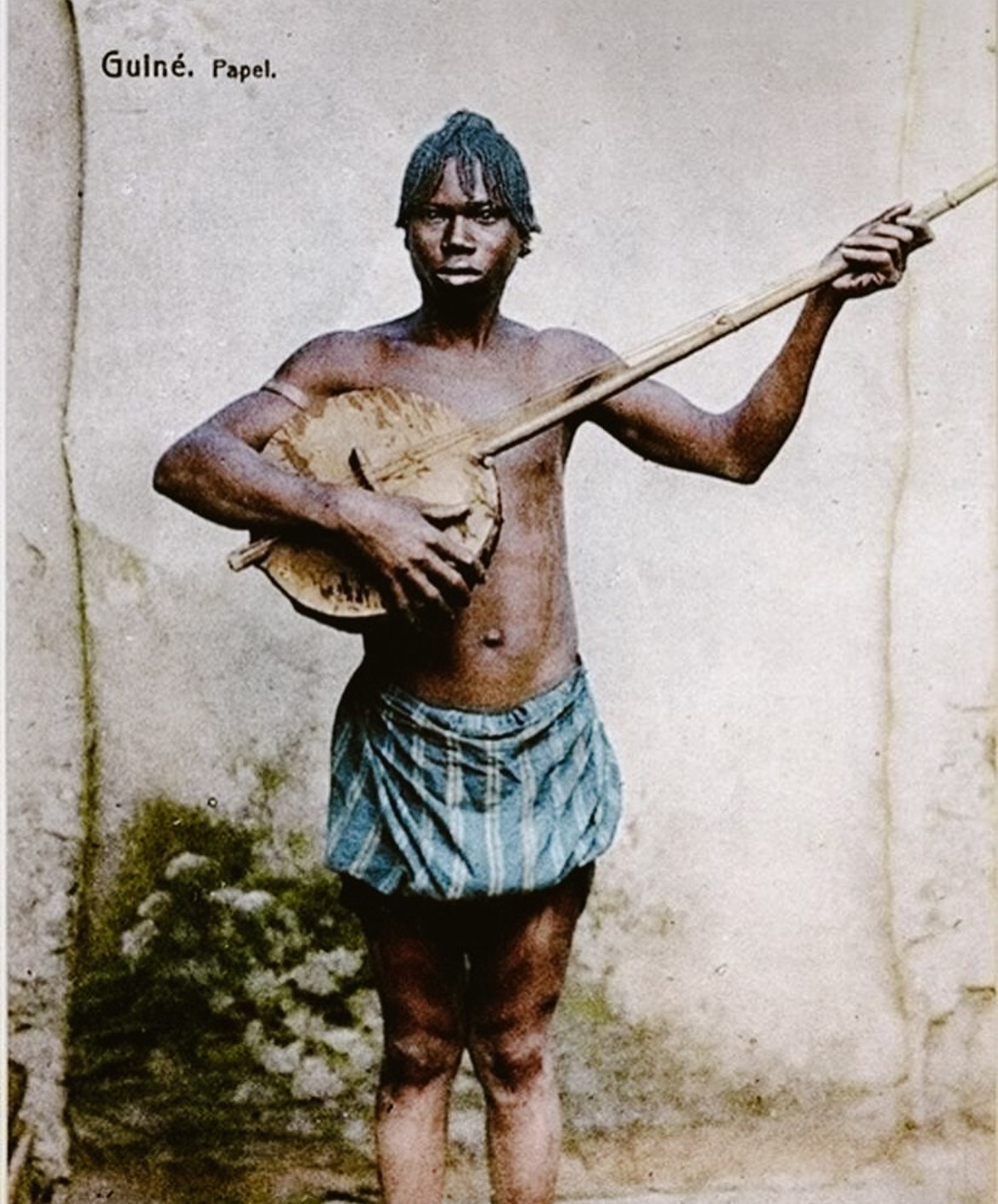
These instruments shared key structural features with the modern banjo: a skin-covered resonator body (often a gourd), a long fretless neck, and strings plucked by hand.
When millions of Africans were enslaved and forcibly transported to the Americas during the transatlantic slave trade, they brought these musical traditions with them—sometimes literally, in the form of handmade instruments crafted in captivity. The earliest references to banjo-like instruments in the New World appear in the Caribbean in the 17th century, where enslaved Africans built them from local materials and used them in cultural and spiritual ceremonies.
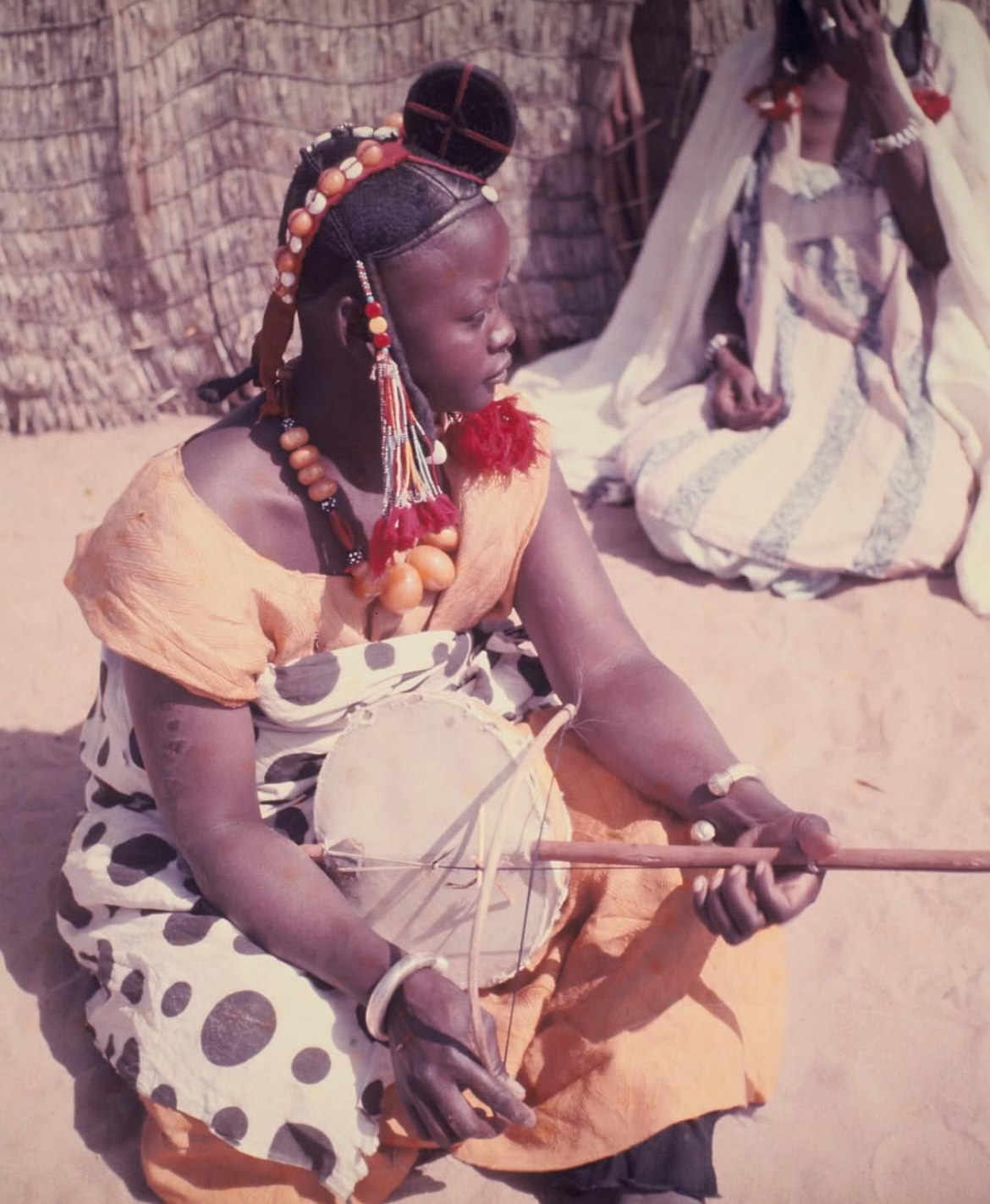
By the 18th century, the early form of the banjo was being played on plantations across the American South. But as minstrel shows gained popularity in the 19th century, white performers began to mimic Black musicians in racist blackface performances, adopting and adapting the banjo along the way. Through these actions, the banjo was stripped of its African identity and repackaged as a symbol of rural white Americana.
The instrument that had once carried the cultural memory and resilience of enslaved Africans was now used to reinforce harmful stereotypes and entertainment that mocked the very people who had created it. Over time, the banjo was refined and commercialized by white musicians and instrument makers. Black contributions to this music were systematically ignored, if not actively erased, in both academia and the music industry. The irony is sharp: a genre built around an African instrument was now being used to define a falsely whitewashed national identity.

Meanwhile, Black banjo players were largely pushed to the margins. Though artists like Uncle John Scruggs, Gus Cannon, and Dock Boggs maintained Black traditions of banjo playing, their recognition remained limited. It wasn’t until late in the 20th century that scholars and musicians began to revisit the true origins of the instrument. Today, artists like Rhiannon Giddens, Dom Flemons, and Allison Russell are part of a growing movement to reclaim the banjo’s African identity and reinsert Black narratives into the folk canon.
Understanding the banjo’s true history goes beyond musicology—it’s a matter of cultural justice. Originally a symbol of resilience within West African traditions, the banjo was appropriated and transformed into a staple of white Americana, reflecting a broader pattern of cultural theft in American art.

Reclaiming its legacy means acknowledging this painful past while uplifting the Black artists who continue to redefine its sound. Far from being just a stringed instrument, the banjo stands as a resonant artifact of stolen culture and a reminder that the roots of American creativity are deeply entwined with the struggles and brilliance of the African diaspora.
When I returned from my extended New York trip in December, I was shocked to discover that all of my non-French speaking European friends had seemingly picked up on French music without my knowledge. As a multilingual speaker, French music was always part of my life. In predominantly English-speaking spaces, finding people who shared similar musical tastes proved challenging. While I knew French artists were gaining global attention and attracting more English-speaking listeners, nothing could have prepared me for what manifested in 2025.
First coined by French-Congolese artist Tiakola upon releasing his debut solo album 'Mélo' in 2022, Mélo, M3lo or Mélomane is a play of words. The term both comes from the English word mellow and the word itself, Mélomane which means in French to be very passionate about music. Following the project’s success, the newly-found sound quickly gained widespread recognition, introducing emerging and established artists alike. Yet, what about this sound makes it distinctive? And how was it able to spread in such a short amount of time?
.jpg)
Sound
To best describe Mélo, this would first bring us to its sound. Much like numerous new sub-genres emerging from the likes of the UK diaspora, Nigeria, SA and beyond- Mélo is a fusion of already existing music branches, mixing everything to create a movement of its own. Drawing particular music inspiration from Congolese anthems, French Trap and R&B, it forges a fun sonic landscape. Perhaps one of the most unique approaches of Mélomane is that it does not like to box itself between Rap or singing. Take a look at other Mélo-membered artists Genezio, Nemzz and RSKO for example, their vocal performance often switches from singing to more spoken-word at an instant. For this reason, it is virtually boundless in its expressive capacity.
.jpg)
Lyrical Content
An aspect often overlooked is its lyrical content. While French trap typically focuses on subjects such as drugs, gang violence, derogatory language towards women, and other controversial topics, Mélo maintains authenticity by its artists keeping true to themselves. On tracks like 'PONA NINI,' Tiokalo and Genezio harmonize about transcending ghetto boys stereotypes when they state, "Elle veut le côté sombre / pas les mélodies de Mozart," which translates to: she wants the dark side, not Mozart's melodies. Their lyrics consistently feature pride in their Congolese heritage. This cultural connection appears throughout their discography, loosely interpreted from collaborations like ‘MAMI WATA’ with Gazo and ‘PROTECT’ featuring female Mélomane artist Merveille, to recent releases like ‘MFIBE’ by Tiakola and Genezio, where they seamlessly integrate lingala (Congolese language) and established cultural references, bringing their African roots to the forefront.
.jpg)
What’s Next?
There’s no telling how this new sound will take shape in the near future however, one thing is certain; with Tiokola as their humble leader who keeps on introducing more talented upcoming artists of this sub-genre, Mélo movement is only destined to flourish and it could potentially become the new kids on the block to take over the world.
There's something magnetic about Jacob Hunter's confidence when he says, "I'm not a songwriter." It's the kind of statement that makes you lean in, especially when you realize this is the guy behind some of your favorite tracks, Davido's "Anything" and "10 Kilo," Tekno's "No Forget", and those soul-stirring Oxlade songs that hit different on late nights.
Born Marvellous Chukwuebuka Oweazim, Jacob has this way of talking about music that feels almost spiritual. He doesn't create songs, he says, he's just the channel they flow through. And honestly? We believe him. The story of how he did it, and what it taught him about his own artistry, is one of those conversations you don't forget.
Deeds Magazine: What first drew you to songwriting, and can you pinpoint a moment when you knew this was the path you wanted to pursue professionally?
Jacob Hunter: The thing is, I'm not a songwriter. I always tell people, it's funny, but I'm an artist. I'm a singer who knows how to write songs. I believe I have so much music inside, enough music not just for me but for others. So from myself, I pull out into others. I wouldn't say I found my place as a songwriter. I think I'm still bringing out my music. When you hear people sing songs that I write, it's just me sharing my music. I would say I'm a singer-songwriter, not just a songwriter. It's just time, as time goes on, you get to see a lot of things. I'm still the same guy that writes songs.
Deeds Magazine: Looking back at your earliest songs versus today's hits like "Anything" and "10 Kilo" with Davido, how would you describe the biggest shift in your writing style or perspective?
Jacob Hunter: Obviously, it's a privilege to write for someone like Davido. Working with Davido is challenging because that guy has so many ideas going on in his head. For him to accept yours is sometimes mind-blowing. But here's the part, I wasn't the type of guy that would write for someone like Davido. I normally don't do that type of music. I make more soulful music, Afro Pop, but not Davido's type of music because my music is more soulful.
Writing for Davido challenged me to bring out something different from myself. When we were sending ideas to Davido last year, we were going back and forth. The first draft I sent through Louder, shout-out to Louder, he's the guy that put me on with Davido, he was like, "This is a very great song, but this is not a Davido song." A lot of producers knew that Jacob does soul music, Afro Pop, he's not the ideal guy to call to write for Davido.
That got to me. I was like, "You know what? I'm gonna prove everybody wrong." So I went on a journey with Davido's career and listened to all his albums for three days. I was soaking that Davido feeling. That's when I did the first sketch of "Anything".
Deeds Magazine: Walk me through your experience co-writing "Anything." How did the hook, lyrics, or melody come together in the studio?
Jacob Hunter: The thing about Davido is he always finds a way to make anything good. You can send him a very rough idea and he turns it into something completely different. It's just crazy. So we sent "Anything," and then "10 Kilo" was different. By then, I was in his bag. I mean, I was no longer struggling to see how I can write for Davido. Davido was easy for me mentally now.
I think "10 Kilo" was the fastest and easiest song we did. There was no brainstorming. I'm a product of grace.
Deeds Magazine: How does your vision for a song mesh with an artist's vision to create the final result?
Jacob Hunter: When I write for people, I tend to write like them. I tend to create something that they would create. If I was this guy at this particular point of his life, what would I want to think about? "10 Kilo" was the easiest because I was in the hotel room. I did like two songs that day. I just vibed on the beat straight up, and it was "10 Kilo." We sent Davido the idea, he loved it, he killed it.
For me as a person, I don't really waste time writing. I'm not the guy that takes seven days to write a song. I believe that music is given and music comes from a source. I don't act like I'm the one creating. I'm just the channel for these things to walk through. So I make music as fast as possible. I write five songs and I'm done with five songs in one hour. It depends on the frequency at which I'm thinking and connecting at that moment.
Deeds Magazine: You've written for both established names like Davido and rising stars like Crayon. How does your approach change when you're writing for a superstar versus a rising star?
Jacob Hunter: There are two things here. I'm a product of grace and talent. When I meet an artist, within the next five minutes, I get to know how you think musically. It's just something for me. When I'm with an artist and I'm writing with an artist, I get to know how you think musically.
There are two people, there's Jacob Hunter the artist and Jacob Hunter the songwriter. So the artist has to sit back and the songwriter has to come forward. It's the duty of the songwriter to serve the artist. You have to move into where the person's head is at. If it's a song for a heartbreak, you have to get your heart broken in five minutes. You have to understand the frequency the person is on.
If I'm with Crayon, we vibe. I know what Crayon is thinking in the next few minutes. Most of the records I do with Crayon, we're always in the same space. We make songs together.
Deeds Magazine: With songs like "No Forget" and "Pounds & Dollars" for Tekno, you moved between R&B and Afropop. How do you pivot your pen to match an artist's mood or genre?
Jacob Hunter: "No Forget" is Jacob Hunter. "No Forget" is my type of music. It was actually my song, it's for myself, like personal stories. "Pounds & Dollars" is Tekno, that's me getting into Tekno's space, working with him. "No Forget" is what I would think, and it's an idea that Tekno actually liked. That's the difference. "No Forget" came from a real place. If you hear even the beginning of the vocals, you'll hear my voice, and it's soulful. That's my type of stuff, R&B.
Deeds Magazine: Oxlade's "Piano" and "On My Mind" lean into soulful, intimate vibes. What special considerations guide you when crafting songs for a voice like his?
Jacob Hunter: Oxlade is like my brother, like my blood. We listen to similar artists. You need to see how Oxlade and I vibe, we share telepathy. I believe we're both musical geniuses and we connect on a very beautiful level. I can do a song and Oxlade can carry it. Oxlade can do a song and I'll carry the song. Is that crazy?
We're both R&B guys. We listen to a lot of Chris Brown, Michael Jackson, especially Michael Jackson. So it's not really hard for me to get in pocket when I'm writing with Oxlade. I don't try to get in his pocket because we both make music from a genuine place. He's able to match up to my energy level, I'm able to match up to his energy level. We both had vocal coaches while growing up, same style, same vibe.
Deeds Magazine: Your co-write "Upstanding" gave Morravey a standout moment. What did you focus on to help shape a unique sound for a newer artist?
Jacob Hunter: Morravey. The first time was in a session. We just vibed. There were a lot of people there because I was not the only person that wrote on that song. There were a lot of people that created with me. It was just a place where everybody had very good energy. I brought my idea, you bring your idea, and we created something good. Two songs actually, "Upstanding" and "Ifineme". It was just a place where a lot of songwriters were present, so we all created something good.
Deeds Magazine: When you see streaming numbers climb or success with your songs, does that real-time feedback influence how you write or choose which songs to push next?
Jacob Hunter: Honestly, I'm grateful, but I know it's all heading to a destination. The songwriting is just my entrance into the industry. I come from a place where you have to do what you have to do to survive. Music is expensive. Music is not something you just do if you don't really have a lot of money. So I had to create for people in order to create for myself. It's all means to a destination.
I'm still gonna keep writing songs for as many people as possible while I'm dropping my own songs. I think the real goal is to have my songs, the ones I wrote and the ones I sang, number one at the same time. That's the real goal. So it's all just means to a destination. I believe I'm just a product of grace.
Deeds Magazine: Viral TikTok challenges and Instagram reels now drive hits. How do you factor in social trends when you sit down to write?
Jacob Hunter: Unconsciously, maybe, but the aim is to create a very good song. I think the songs that blow or go viral on TikTok are good songs. So I don't think about TikTok first. I think maybe when I'm done with the song and I hear it, I'm like, "Oh, this line could actually go viral." I don't think about TikTok first because I believe if the song is good, it's gonna fly regardless. I don't really think about TikTok first, but at the end of the day, you have people that are listening and they're like, "Oh, this part will be very good for TikTok." So I think about it sometimes.
Deeds Magazine: As Afropop and African songwriting continue to break global boundaries, what's one piece of advice you'd give to emerging songwriters hoping to achieve the kind of success you've found?
Jacob Hunter: I would have a lot of things to tell songwriters. The first question I would ask is: what do you want? Why are you writing these songs? You have to know the heart of whoever is writing those songs. Are you writing these songs as a songwriter? Because when you think about the songwriting industry right now, it's an industry filled with artists. There's no songwriting industry, there's a music industry. In Nigeria, songwriting is getting recognized now, but a lot of artists are writing for artists. For people who just want to be songwriters, my advice is: keep writing songs. Keep writing songs and try to practice getting into the head of whoever you're writing for.
For someone who's a songwriter and a singer like myself, I would say always be honest with yourself and never be contented. Don't be contented because you have money or because you think this is all you have. It's all timing. Keep building, keep writing songs for people, keep writing songs for yourself. Don't shortchange yourself. The songs you're writing for people are still part of the plan, it's part of God's plan for your own artistry, for your own music. It's shaping you.
Keep writing songs, keep making music. Music is something I'm in love with. I've been in love with music for the longest time. You won't find anybody that loves music the way I do. It's coming from a place of obsession. I'm obsessed with this stuff. So I'll tell you: be obsessed, because that's the only way you can be great at something. Be obsessed. Keep doing it over and over again. I'm not trying to motivate nobody here, but if you can do it, keep doing it. Always give yourself a reason to keep doing this stuff. If you love it, continue. That's it, basically.
Talking to Jacob Hunter feels like getting a masterclass in staying true to yourself while being exactly what others need. His whole approach, this idea that he becomes whoever he's writing for without losing himself, is something most of us could learn from, whether we're making music or just trying to navigate life.
What stays with me most is his obsession. Not the unhealthy kind, but the beautiful, all-consuming love for music that makes him write five songs in an hour and listen to Davido's entire discography for three days straight just to understand how to serve him better. That's the kind of dedication that separates the good from the great.
And maybe that's the real lesson here. Success isn't just about talent, It's about being so obsessed with your craft that you'll do whatever it takes to master it, even if it means stepping outside your comfort zone to write for someone whose music sounds nothing like yours.
Returning to Hyde Park annually always brings an energy to festival season in London that feels like something not to miss. On this occasion, joining the masses gathered in the park, the main attraction was none other than the current pop princess, Sabrina Carpenter.
To say that Sabrina has had a good year is an understatement. From the release of 2024's Short n Sweet to her appearance at this year's MET Gala, not to mention a successful run of her Short n Sweet tour that has seen her gracing stages all over the world, she is busking in this moment. She is not stopping for a second with her follow-up album Man’s Best Friend already on the horizon, due for release at the end of summer. This feels like saying farewell to the Short' n Sweet Era, and what better way than hosting two sold-out days at BST?
The lineup leading up to Sabrina is a treat for pop fans alike. We joined the crowd as they walked into the vibes of Sofy, who played the Rainbow stage and was a pleasant treat, having never experienced her talents before. Taking in the main Oak Stage, the all-female lineup started with Amber Mark, who set the vibes for the day ahead. She was followed by Beabadoobee, who played through her set, which was heavy on her 2000s pop teen soundtrack vibe, with the crowd singing along song for song.
.jpg)
As the time for Sabrina's performance approached, the anticipation in the air was palpable. When she finally graced the stage, the crowd's energy was at its peak. Starting with “Busy Woman” and then moving into the album opener, “Taste,” she set the tone for the show. It was a collective singing session from then on. The hour and 20 minutes showcased Sabrina in her full glory, a testament to her journey from opening for BLACKPINK to headlining two sold-out shows.
The show was a visual spectacle, with a production that had Sabrina's name in the lights. At one point, she even moved through the crowd, creating a sense of intimacy. The highlight was when she was lifted higher on a platform as she performed “Don’t Smile,” bringing her even closer to the crowd. The show was a testament to her star power and was worth the wait.
Having missed her headline show during the Short n Sweet tour, this was the perfect opportunity to witness Sabrina in her full star power. Her setlist was a journey, from the Beyoncé cover to the fan favourite “Please Please Please”, the album standout track “Bed Chem”, and the emotionally charged acoustic rendition of "Sharpest Tool”. And of course, the show wouldn't be complete without the summer standout hit “Espresso", which she performed with a fireworks show to close out the night.
Ultimately, the rise and elevation of Sabrina Carpenter have been something to witness, and having been able to experience this on almost a perfect summer's day, we are among many who can attest to her success.
Ice Baby and Buggy are two brothers from Staten Island, New York, and are better known as the G4 Boyz. Their journey into music began with the release of their debut single, "Bricks," back in 2013. Establishing their sound of 'scam rap', the two Drill artists entered the scene with their unique style to the genre.
Since their arrival, they've had success with songs such as "Patek Phillipe", which was the first hit the duo had and helped establish their presence on the NY Drill scene. As well as "Local Scammer which saw them team up with the UK's G4 Choppa.

The duo's journey into music was always bound to happen, given their heritage from Ghana and Nigeria, which came from both their parents. The two spent time on the continent, gaining an appreciation and knowledge of the musical sounds that originated from West Africa. As brothers, they spent their time creating content online, not really thinking much about their musical careers. The encouragement from others around them led them to experiment, and they began filming videos and sharing their content online, which eventually became a way for them to express themselves and share their experiences as African Americans growing up in their particular environment.
A decade after arriving on the scene, their entire ethos is rooted in authenticity and not trying to be something they are not. "When it comes to drill, it tends to be heavily rooted in the violence of it all, but for us, that wasn't what we wanted it to be about. We want to discuss what's truly happening in the real world, in our culture." Ice Baby shares with me what defines 'scam rap' and how it is recognised as its distinct sound.
Speaking to both Ice Baby and Buggy with the successes they have had in their music and other creative endevoers that have included fashion and film, the two are all about lifting their culture and empowering what it means to who they are and how they have been able to navigate their careers and still maintain their authenticity as players in the New York Drill scene.

So first of all, how did you guys start making music together, and what was the initial idea that sparked this music project?
Ice Baby: So, we've always been into music because of our Nigerian and Ghanaian culture. My mom, dad, uncle and our older brother are playing music around us. It was just something that naturally came to us, allowing us to do music. What we always wanted to represent when we were making music was to incorporate what was happening in our lives and what we were hearing at the time. So, when we came, we always came as the representative of being Africans born in America and the experience of being Africans raised in America and not being accepted. So, music was our comfort, allowing us to express how we felt during difficult times.

How did the process of making music together begin for the two of you, and did it become something you wanted to do together?
Buggy: For us, we've always been multi-talented. Even though we were born in New York, my mother sent us to Africa when we were very young because she wanted us to learn about our culture and roots and have that grounding. We first started vlogging together and were sharing what we had going on; then, people started telling us we should try our hand at music. So naturally, we started doing our thing.

With coining your sound as 'scam rap', how did you come to develop and create what that would be?
Ice Baby: When it comes from us, it stems from our culture; it comes from hearing Fela and other legendary artists we grew up with. It's the vibe, the energy, and being competitive. As Nigerians and Ghanaians, we have always been competitive, whether in sports, academics, or fashion. We don't follow other people's movements; we are trendsetters, setting the tone for what we want to do. When it comes to drill, it tends to be heavily rooted in the violence of it all, but for us, that wasn't what we wanted it to be about. We want to discuss what's truly happening in the real world, in our culture, and in American culture. What we do is speak about empowering our people; it stems from our experiences, and that's why we've developed this new sound.

Getting from that point to where you are now, what does that look like for the two of you, and how has your sound grown from the first single up until now?
Ice Baby: Our music is still a fresh sound that the industry is not yet accustomed to. Therefore, it's challenging to put us in certain situations because they're accustomed to presenting themselves in a certain way and discussing specific topics. So, when we start speaking about what we speak about, it sounds so different to what people expect. And the reality is that the content we discuss, when compared to the current content out there, as we grow, we're working with new sounds and new energy. As you can see, there is a distinct difference between "Patek Philippe" and a "Local Scammer". One thing about my brother is that we have always found ways to make our sound fresh and new every single time we're about to roll out something new, which is what's coming next.

Having released your last album, Glitch Boyz, last year, what would you say has changed in that time, and what can you tell us about the music you're making now?
Buggy: So, with our sounds, what happens is that a lot of people on the internet start to steal them and take from them. We're always finding new ways to deliver the music in different ways. Right now, I can't tell you what that sounds like because if I tell you the source, people will be ready for the taking. So you have to wait and see how we do it. But know that we're cooking up a brand-new sound, and people will enjoy and have fun with it. We strive to create music that people can relate to while also having fun with it because life is hard. We aim to create something that brings people joy and makes them feel good. We have just returned from Nigeria and Ghana, so we worked with many new people. We can't say who yet, but know that the sounds are sounding, and the vibe is vibing.

Without revealing too much or saying too much, where do you feel your particular sound is going?
Our sound? It's evolving — but it's still G4 to the core. Drill, trap, afro-fusion — we blend it all. We possess that lifestyle energy, but we also bring substance. Expect more cultural flavour, more global sounds, and more melodies, but still raw. We are not chasing trends. We are setting them. Expect the unexpected, as we have some spiritual tracks coming too—same flex, but with deeper layers. Chop life, praise God, and count blessings. Simple.

You also have creative interests that you pursue outside of music, and fashion is a significant part of how you represent yourselves. So, how does that come to be a part of your creative identity?
Buddy: As my brother said before, we don't follow trends because, because of our trauma of coming from a culture where people make fun of us, we don't want to be like everybody else. Growing up, Prada was a brand that always felt like it represented what it meant to have wealth and status. There was a time when everyone was wearing Prada, but then it was phased out, and people transitioned to newer brands. We just started wearing Prada all over again, and there was a silhouette called American Cups that they no longer make. However, we started wearing it again, and we began to go viral on the internet for doing so, to the point that Prada brought it back. And so, for us, it wasn't even about the fact that we were wearing Prada again. Still, more importantly, we were able to establish that we could afford it. We were able to express ourselves in that way; we take that very seriously when it comes to how we dress and how we look; because of our personal PTSD of people making fun of Africans, we always tell ourselves we're going to dress nicely no matter what that's and why we so into fashion now.
Ice Baby: As far as fashion and style, we take fashion very seriously. For me, with Prada, it was more about the cut, the look, and the silhouette; it was different from everybody else because it puts you in elite status. I always wanted to be represented because of the trauma of being disrespected, and we had to fight back. For us, fashion and how we dressed were ways we could express ourselves and move past some of the things we went through. We have to do everything differently, and that helps us in our music because we represent a whole type of way. People do Dior, they do Gucci, but Prada makes us feel something. I feel connected to it.

What is next for you both?
Buggy: Currently, we're focusing on expanding this movement globally. G4ChopLife season never stops — we have new heat loading, more anthems, and more sauce. We've been cooking up heavy, stacking unreleased tracks and lining up collaborations with some big names from the UK to Lagos. We're looking to shake up the summer with some international bangers. You already know the vibes — more money talk, more inspiration talk, but still.
There was a time when music had weight. Literally.
Vinyl records go way back. Before now, when listeners access music through digital formats and can shuffle playlists or dance to the tune of algorithms feeding us the next “vibe” in music, there was vinyl. It wasn’t merely another music format. In fact, vinyl records give music a warmer, more natural sound than digital music formats. It was music in rich depths. It made the listening experience golden. In today’s hyper-digitized world where even silence feels monetized, it’s time we revisit what vinyl was really about: presence.
.jpeg)
Vinyls put a spin on the way music was consumed, especially at home. Putting on a record wasn’t a passive activity, considering that it often demanded the intentional act of choosing it. You dropped the needle and let it play — no skipping, no reordering, no background noise. Just you and the sound. The warmth streaming out from the voices of veteran musicians who owned the times. The auditory experience that vinyls grant you is to take you back in time to when the songs were, demanding you stop whatever you were doing and feel something. Vinyl didn’t just let you hear music. It lets you live in it.
For newer generations whose initial exposure to music was through CDs and other digital formats, vinyl is re-entering the chat. From its revival in the past decade, vinyl is becoming the bestselling physical format for recorded music today.
.jpeg)
The vinyl renaissance is a quiet protest against fast content and its consequence, the disposable culture. The physical thrill it offers stands against the idea that music should be easy to consume and even easier to forget.
People are buying records again not just for the sound, but for the experience. You sit with an album. You stay for side B. You get up to flip it over. Acts that come together to say about patience, about care, about listening with your whole chest.
Vinyl is how music says: Slow down. I’m not done with you yet.
And maybe that’s what makes it feel so radical today. In a world that pushes us to consume more, faster, louder — vinyl asks us to just… be. To sit still. To listen all the way through. To treat music like a body of work again, not background noise for productivity.
So yes, the vinyl revival is cool. But it’s also a reminder that some of the best things — music, connection, memories — aren’t meant to be streamed and forgotten. They’re meant to be held, lived with, and replayed over and over
The lives of entertainers are often shrouded by the content they put out. Music, movies, etc., all create a mental picture that compels you to fixate or ascribe personality traits based on the nature of the content, so we end up viewing them as a reflection of what we see, making assumptions about who they are in real life. There’s a sense of allure and intrigue that comes with breaking down those walls and truly seeing them for who they are. In this piece, we try to break down some of these walls, exposing the personality of one of Nigeria’s most talented vocalists.
Kahren is an emerging talent, trying to navigate the complexities and exigencies of Nigeria’s dynamic musical industry. Here, we look beneath the sound and rhythm, trying to understand who she is. In our discovery, we find a woman who is shaped by emotion, passion, and experience.
Kahren (Anyanwu, Chisom Somto) is a multi-talented singer and songwriter. Residing in Lagos State, her music is indicative of diversity, embracing and integrating sounds from different genres. She brings a pristine and distinctive interpretation of these genres, creating something that is very niche.
Like everyone, Kahren occasionally has bouts that encompass doubts. “The journey hasn’t been straight. There are times I stepped away from music completely, and times when I wasn’t sure if I was meant to do this.” These questions creep in from time to time, and Kahren, like everyone, has experienced moments of partial or complete abstinence. However, her commitment has been stern, and her talent has given her the confidence she deserves. “Anytime I record and hear my own music back, something settles in me.” Her passions go beyond music, and when she’s not in the studio, she is fascinated by the intrigue and lure of makeup artistry. She “genuinely enjoys it,” and it is interesting to see that Kahren harbours passions outside the scope of melodies and lyrics. So, she’s always immersing herself in makeup content, occasionally finding interests that compel her to transform her face.
Her inflection point, that key moment, cannot be reduced to a singular instant but is a culmination of various experiences. For her, it was a journey, a sequence of constantly immersing herself in her talent that consolidated her passion to follow this path. “For me, I’d say recording and hearing back most of my songs is what really brought the feeling together.” As she describes, “It wasn’t a single moment, but those little moments in the studio where it just sounds right.” It is a classic tale of trusting the process and seeing where it lands you. For Kahren, music was not a trend to follow or a decision made out of fervent caprice. It was a process, and for her, “that’s when it all clicks.”
.jpeg)
One’s musical proclivities may not always be a direct indication of a person’s personality or disposition. That noticeable contrast often creates a sense of intrigue and perplexity. For Kahren, she maintains a chill disposition, being both introverted and observant. However, her personality may also be fluid, depending on the setting and the people she’s surrounded by. So, Kahren is “a bit of both.” Most of all, she likes to create and experience moments where she can “let loose, have fun, and do silly or funny stuff.”
Kahren’s musical fluidity may be a result of her general receptivity to music. There is no definitive space or bubble. She enjoys what she likes, and that can be anything. So, although she may show a particular interest in R&B and neo-soul, she still listens to a lot of other genres. Her diversification has enabled her to collaborate with other famous names like Tems, ShowDemCamp, and Odeal. She also speaks about music from the early 2000s, which was inspired by a melange of different genres, the aggressive rise of digital media and technology, and shifts in mainstream pop culture. These influences inform her playlists, so her personal music library is both chaotic and personal. From Lola Young to Beyoncé, early 2000s jams, indie folk, and random movie soundtracks, it is indicative of a person who is constantly seeking inspiration. She especially loves “Circle” by Post Malone and “Charlie Brown” by Coldplay, because “those songs just do something to me.”
Her creative process follows a systematic guide depending on the trigger. “It starts with a melody. I find the melody first, then I trace it with words. Sometimes, I create the beat in my head; other times, I listen to a beat and build from there. I like to make sure everything feels right and structured, but still natural, before I record.”
If you’re wondering what weird talent she might have, Kahren is very flexible. “I can fold my arms and take my hand all the way to my back.”
Consistency and perseverance with a touch of personality are often the accredited hallmarks to succeeding in the music industry. Kahren internalises these qualities, making her rise to fame even more assured. Getting to know her beyond her voice has put things into perspective, especially in terms of her visual presence and voice. We’re excited—ecstatic—to see what the future holds and where her journey might take her.
Watch out for Kahren!
When Dina Ayada emerged on the musical scene, it was with a freestyle on TikTok that went viral and became her breakout single, "Miles Away". This, including "Popular" and "Games", is one of the few tracks that have gained significant popularity on the platform. The young Belgian singer started making music with her brother by way of creative expression before she started sharing some of her stuff on TikTok, which subsequently took off as audiences from all over came to discover her sound, which is a blend of various genres from hyper-pop to hip-hop, to R&B with a whole lot of energy that carries through her music.
.png)
Born and raised in Belgium with North African heritage, Dina has something to say with her music, and she is letting her authenticity shine through in everything she offers. The past few years of her career have seen her release 2023's SUPERSTAR! and 2024's The Script, her two EPs that have introduced her artistry to the world in a way that feels new and refreshing. Now gearing up for the release of her album, she is elevating and stepping up in every way possible.
As we speak with Dina, we touch on everything from her career to embracing her North African Heritage, the upcoming album, what it means to embrace one's truth, and more.
First, how was your first introduction to music as something you had an interest in?
Music has always been a part of my life. My dad would play Arabic music around the house, and I'd be singing along before I even fully understood the lyrics. Growing up, I was obsessed with MTV, watching videos from artists like Tupac, Aaliyah, DMX, Lauryn Hill. Eventually, I realised that music became the way I processed things. After school, if I were stressed, I'd write lyrics or do karaoke. I wasn't great at first, but it was my way of expressing myself, and it's how I grew into who I am now.
.png)
How did you discover the type of artist you wanted to be?
I started figuring out the kind of artist I wanted to be about two years ago, right before everything took off. I built a team around me, including my creative director, my manager, and, at the time, a producer I used to work with. My creative director told me, "Before we start putting stuff out, we need to build your whole image first." So we sat down and thought about it: What do I want to represent? What do I stand for? And that's when I realised I had to bring my culture into it - the things I value, my faith, my family, and my relationships.
From there, I started posting on TikTok, and things just started blowing up. As I continued to release music, I gained a deeper understanding of myself and life. It reached a point where I wasn't just making music; I was telling my story, opening up about my family, friends, faith, and everything that makes me who I am.
When it comes to expressing your emotions and yourself the way you do in your music, were you always open to doing that, or was there ever a bit of hesitancy about how much you shared?
My culture influences everything I do, from the way I carry myself to the way I create music. I've always been mindful of representing my roots with respect, and that's reflected in the way I approach my songs. Even now, as I create more mature music, I remain intentional about how I express myself. I want to show where I come from, whether that's through the visuals, the energy, or the stories I tell. It's all part of who I am.
When I was younger, I had difficulties expressing my emotions, but as I've grown and learned from my mistakes, I've become more open to expressing myself in my songs.
.png)
You mentioned that you grew up in Belgium and that your heritage is Moroccan. How does that cultural background influence your art and creativity?
The biggest difference is definitely in the sound and the storytelling. During the process of releasing my music, I was still figuring things out. However, with this debut album I'm working on, I've stepped into who I am as an artist. I've been working closely with Bugz Ronin and my whole team; we built this together, and the production is on a whole different level. We're blending different sounds that've inspired me throughout my life. For example, I've always been fascinated by American hip-hop culture, and I like to blend that with new sounds. Growing up in Antwerp helped me develop an affinity for fashion. Fashion is an integral part of my career, and I enjoy blending fashion and music.
This time, I'm telling my story, not just making songs to vibe to, but speaking on what I've been through. Previously, I made music from the perspective of a teenager, but now I'm grown, and this album reflects that. It's a new chapter: the production, the lyrics, the visuals - everything's levelled up. This isn't just music, it's art.
.jpg)
Putting out the EP, what was the experience of putting the project out versus when the project was out?
There was time pressure putting the EP together. It was right before I went on tour with Gunna, and we wanted something I could present on stage. The songs were based on what I was going through during that time: heartbreak, my relationship with God, family, and just real life. After it dropped, many more people discovered me, and I'm proud of it. Now, with the album, I'm going deeper; the sound is more mature, and there's more storytelling. However, that EP was an important step for me.
Has that change and mindset in how you approach the album been something you consciously considered when making it, or did it develop naturally from your artistic journey following the EP?
The change and mindset came together very naturally. I always knew everything was God's plan, so I followed. After last year's tour, I took some time to reset and figure out the direction I wanted to take with the album. This year, I've been spending a lot of time in the studio, learning and growing alongside some incredible and inspiring people. That focus is why I've been more offline on social media. It's all about creating something meaningful that people will connect with. It wasn't forced; it was the natural next step in my journey.
You went on tour last year supporting Gunna. How was that experience for you?
It was my first time touring in the U.S., and I'm grateful for the new audience that discovered my music. The vibe was amazing, the energy was positive overall, and it felt like a family, it felt like home.
Gunna and I clicked on that tour, and since then, we've stayed in touch and continued to build our relationship. Spending time together, especially in the studio, has been a massive part of my growth as an artist. I was impressed by his energy, his performance, and how much he loves fashion too; I feel like we have so much in common. He's so grounded and humble, and he's exactly the artist I wanna become. For me, he became a mentor, and I'm thankful for his presence and advice.
What does that look like for you when you're not making art, when you're not, when you're not trying to, or when you're not plugged in?
I focus on resting and recharging. I have meaningful conversations with my parents and team, and they understand when I need to step back and take time for myself. I also journal to express how I'm feeling, both mentally and physically. Working out has become a big part of my routine because it helps me feel better overall. I find small moments to reflect and plan for what's next, and when I can, I relax and meditate to keep my mind calm and clear.
.png)
You've had a hectic last couple of years with everything you've been doing. When you think back on everything that happened then, what does that experience feel like?
Looking back, it still feels surreal how quickly things have moved, especially when I started at 18. I'm not where I want to be yet, but I'm really happy with the progress. There's pressure for sure, but having a solid team and my family sticking by my side and believing in me has made all the difference. I've met some amazing people and played festivals I used to only dream about, like Rolling Loud overseas, which I've done twice now. This next album is something that I know will change my life, and I can't wait to share my story with the world. It's been a lot of hard work, ups and downs, but I'm grateful for every moment and excited for what's next.
When you think about where you are and the space you are in, what are you most looking forward to in the next chapter of your career?
What I'm most looking forward to in the next chapter is fully stepping into the artist and person I'm becoming, sharing deeper parts of my story, connecting with more people around the world and growing in a way that feels true to me. I want to reach new places, both literally and creatively and build something lasting that reflects my values and roots. It's about evolving with purpose, staying grounded in my heritage and faith and using my music to inspire and uplift others. This next chapter feels like the moment where everything aligns and I'm ready to embrace it fully. I would love to collaborate with big fashion brands I love, being able to go on tour and perform in front of my community. The idea of being able to perform the songs I've been working on for a whole year is something I'm very excited about, and hopefully, people will connect with my art. I can't wait to show the world what I'm capable of. This is just the beginning.
Styling Credits (In order of Images)
Cover Look
Top: Mowalola SS24
Bottoms: Mowalola SS24
Glasses: Hot Future SS24 Jewellery: Annabel B
Shoes: Timberlands
Look 1
Shirt/ Hat: Charles Jeffery LOVERBOY AW24
Jewellery: Annabel B
Look 2
Blazer: Lanvin SS24
Shirt: Lanvin SS24
Skort: Lanvin SS24
Shoes: Kurt Geiger London
Jewellery: Annabel B
Look 3 & 6
Jacket: Namilia AW24
Look 4
Jacket: Namilia AW24
Look 5
Trousers: Y/Project SS24
Belt: BB Simon
Vest: COS
Glasses: Hot Future SS24
When it comes to a movement that took over the internet as Covid19 emerged and people were trapped in their houses, ALTÉ comfortably sits on the crown of that life-changing era. Unapologetically coming from the region of Nigeria, it is a culture to reckon with and still prevails on the playlists of many music listeners today. At its peak, it ranked amongst the leading African genres such as Afrobeats, Afroswing, Amapiano and more- nodded for being the odd little brother of the bunch with a rebellious flare. In 2025, ALTÉ may have lost some of its momentum; however, as new voices rise and its influence extends across continents, Deeds has someone in mind you need to watch for and who will surely be a face of the new skool kids soon.
.jpeg)
To best explain what ALTÉ is, I believe it is what you make it. No seriously, just by being yourself, boundless of expression and not caring what others think is perhaps the most accurate definition of ALTÉ as we know it today. The ALTÉ kid isn’t afraid to do things out of the norm, in fact, it is celebrated for it. Also, it understands that rules are meant to be broken. At its center, there is the internet and it fully values the undeniably force behind this. Whether it is in music, fashion or simply just an aura, the ALTÉ kid doesn’t fall short of making its mark known. Therefore, it should come as no surprise that 00ab, a East Londoner of Yoruba descent, was the first emerging act to pop in mind when it comes to someone who follows a similar formula.
.jpeg)
That is to say, when we actually sat down with Abolaji Oshun, the young lad revealed that he wouldn’t consider himself an ALTÉ artist as he is not in direct communication with the likes of Cruel Santino, Mowalola, Odunsi the Engine and such. Maybe that is the thing with sounds without borders, the risk is anyone and anything can be categorized as part of this community, if not called out. When asked how he would best describe his sound, 00ab shared; “I like to explore and experiment with my music. I always like to be playful and thoughtful at the same time.” Just like any other kid in this day and age, Oshun got his first shot in the limelight through modelling. If it wasn’t already obvious, the aura is here and he manages to encapsulate viewers with his presence alone. Shortly after, this was followed by 00ab freestyling with friends. Even in the Lo-Fi and Boombap-sounding first tracks of the lad, we can hear him playing around with the thought of crossing a bridge, in fusion of Afrohouse, Amapiano and anything his heart may desire.
.jpeg)
Similar to the rise of ALTÉ, Oshun chose to transform his boredom and Uni days into a creative outlet, bending genres as he sees fit. However, when speaking of his music inspiration and what he would listen to in the early 2019, 00ab makes mention of A2, Cruel Santino, Skepta, Bryson Tiller and Frank Ocean. In a space of intangible access, collaborations play a key role in the evolution and maintenance of a genre still in development. Adam or AR888, a persistent beatmaker, producer and collaborator of 00abs. “I met Adam in 2021 and we just formed a friendship.” He added; “I can’t stress enough how important Adam is.” From tracks like `Geeked!’, ‘Senses!’ to ‘Took My Heart’, their collision is just immaculate and proves that as long as these multifaceted distinctive artists work with one another, the movement will only continue to grow.
00ab makes reference to drawing inspiration from ALTÉ, although not classifying himself as a member. Regardless, we believe 00ab would make a great candidate and future collaborator of this growing African community. From just a few listens, we can draw similarities and would understand why anyone would mistake him for one of the ALTÉ kids blazing our ears with pure uniqueness. We can’t wait to hear ‘ab, we wanna party!’ when it is set to release very soon.
At just nine tracks, ”with all due respect” is lean and intentional. The opener “Bite Me,” produced by fellow butch lesbian Alma Bergman Byström, sets the tone with velvet defiance and restraint as a spoken-word flex that feels like walking into a smoky room with someone already mid-conversation. The track sets the tone to be sultry, observational, emotionally fluent and never looks back.
Sound-wise, it’s lush and layered. Gospel harmonies, jazzy keys, stripped-down 808s all moving with a kind of slow urgency. “fxckin” is sensual but never over-indulgent; “talk you through it” (featuring FLO) balances vocal intimacy with a beat that feels like late-night London. And then there’s “worst behaviour,” a standout with Kehlani that’s cheeky, minimalist, and undeniably a track that could loop for hours and still sound effortless.
What makes with all due respect so compelling is kwn’s control. Her voice glides across these songs with a nonchalance that belies precision. One moment, she’s crooning in a near-whisper. The next, she’s flipping into a falsetto. Nothing is accidental.
Lyrically, kwn stays close to home: romantic missteps, emotional boundaries, the strange politics of honesty. “don’t waste your time waiting for me,” she sings on the closer “war to be over,” “like waiting for this war to be over.” It’s a devastating final note with wider unrest. Her writing captures both the micro and macro: personal heartbreak wrapped in social fatigue.
This isn’t an album that’s going to shout for its place in the R&B canon. But it will be remembered maybe not immediately by everyone, but deeply by those who need it. In an industry often built on spectacle, kwn is playing the long game. With all due respect she’s just getting started.
Kwn’s latest album, With All Due Respect, arrives in the thick of Pride Month, and it couldn’t feel more right. It’s a body of work that sings from the chest of a queer Black person not coded, not metaphorical, but in full clarity. The project moves like only a queer person loving women can move: intentional, tender, self-assured, and at times, beautifully unbothered.
Rooted in her Nigerian-Irish heritage and East London upbringing, Kwn’s sound is difficult to pin down and that’s the point. She builds a world that blends R&B, jazz-soul, UK garage, and the warmer pulse of Afrobeats. Nostalgia lives here, but so does the future. Tracks like “Do What I Say” and the “Worst Behavior” remix with Kehlani prove that Kwn is chiseling her own lane.
Much of her musical DNA is shaped by her father, a DJ who introduced her to a wide spectrum of sounds. That diverse listening experience bleeds into her storytelling, drawing from romantic and platonic relationships to create something both deeply personal and universally felt.
In a recent conversation with Nyla Symone, Kwn said “I don’t ever force it. I feel like if it comes, it comes. If it don’t? Imma just shut the laptop because I don’t like forcing my brain to do stuff and putting pressure on myself.” That intuitive approach is felt throughout With All Due Respect. It’s effortless but refined. Tracks like “Clothes Off” and “Too Many Women” hold the sultry cadence of R&B classics, yet shimmer with experimental flourishes that keep the album fresh and full of replay value.
The Kehlani remix undoubtedly opened new doors, but Kwn’s real strength lies in her ability to hold her own. Her voice carries the weight of someone who knows herself and we’re just catching up.
Her sound is a statement piece. We’d love to see her build more in this sonic world: more features with artists like FLO, more production that honors the jazz-R&B-future-fusion that only she seems able to command right now.
Her debut EP “episode wn” introduced her as an introspective talent with smoky vocals and sharp penmanship. But this new chapter is a record that holds your gaze without raising its voice.
Kahren’s latest release, “Qualify,” is a melodic anthem geared towards women's empowerment, and we can’t get enough of it. “Qualify” is an Afrobeat song that seamlessly blends choir traditions with pulsating beats. The emphatic bass sounds, soft interludes, and mellow transitions make the song particularly distinctive. It maintains an upbeat tempo, then cleverly transitions to a smooth, mellow chorus, and that subtle contrast between the song and its chorus leaves you longing for more.
The song is Kahren’s sonic commentary on relationship dynamics and an emphatic claim for women not to settle. Lyrics like “You’re the one I could desire, but baby, only if you qualify” and “Cause you know you gotta pass that test, that’s the only way you qualify” accentuate Kahren’s message about reforming relationship dynamics. “It’s about setting the bar and never lowering it.” Therefore, “Qualify” is a message to women to know what they want, to set a standard, a benchmark, and not settle for less. It is a message of empowerment for “every woman who knows her worth,” she narrates. Essentially, the song extends beyond its sound value, becoming a focal point for women. The internalisation of the lyrics gives the song depth, an additional layer that increases its replay value and its general sense of appeal. There’s also that sense of balance. The beats are not so overbearing that they mask lyrical perception; at the same time, the lyrics are curated carefully to match the song’s So, these aspects of the song are matched and intersect perfectly.
.jpeg)
“Qualify” is a testament to her vocal range and her flexibility to adapt to different sound terrains. Kahren’s discography cannot be confined to a single genre. Her single “Remember” is alternative, followed by her EP “I Think I Know Her” (2024), which was Afrobeats, and “Sativa” (2024), which was Afro-soul. With such a diverse discography, Kahren retains a consistent ability to make music we just can’t get enough of, an emphatic chant exemplary of consistency and creativity.
There’s reason to believe the best of “Qualify” is yet to come. Prior to the song’s release, Kahren made several teases, all pointing to a potential music video. If the project is released, it would be interesting to see just how well the song is interpreted through visuals.
“Qualify” is a confident, unequivocal statement of preference and a no-nonsense I-know-what-I-want rhetoric. By choosing to embed profound meaning into her lyrics, she revitalises and strengthens the argument of Afrobeat’s lyrical density, shifting the focus from just high-tempo sounds and drums, which it has consistently been limited to.
Kahren is steadily on the path to being one of Nigeria’s finest acts. She is building a brand, a legacy built on the bastion of consistency and commitment. Her powerful voice and diverse vocal range set her apart from others and have greatly contributed to her growing fan base and appeal. The prospects are high, and we are all excited to see what the future has for Kahren.
In the landscape of modern dancehall, few names ignite as much conversation, speculation, and cultural shift as Alkaline. Hailing from Kingston, Jamaica, he took the industry by storm. With an unrelenting voice, a craft fully curated image, and an instinct for disruption, Alkaline has built a career not only on music, but on mystique. He emerged in the early 2010s like a glitch in the system: black contacts, enigmatic lyrics, and a refusal to explain himself. That strategy or perhaps defiance sparked global curiosity, turning him into one of the most polarizing and magnetic figures the genre has seen in decades.
.png)
But to reduce him to shock value would miss the point entirely. Beneath the headlines is an artist who understands power, both in performance and perception. A former media and communication student, Alkaline has always been playing chess while others play checkers crafting a narrative that’s as calculated as it is raw. From his debut album New Level Unlocked to his independent powerhouse movement New Rules, he's shaped an empire.
Now, years into a career that’s constantly evolving, he sits down to talk which is rare, but intentional. In this exclusive interview, we go beyond the provocative visuals and into the mindset of a man who’s rewriting the rules of what it means to be a global dancehall artist. From Kingston roots to worldwide reach, this is Alkaline: unfiltered, unapologetic, and just getting started.
.jpg)
Let’s take it back to Kingston…What did the soundtrack of your youth sound like? Who were you back then and when did you first feel that pull toward the mic like it was your destiny?
Music has always been a part of my life so the soundtrack of my youth was just good music. In my high school days is where it all started.
.jpg)
You studied media and communication before the world knew your name. What was that turning point when music demanded your full attention and what parts of that academic life still show up in your career today?
Just the energy at the time we knew we had something worth building on so we did just that and here we are now! A good education is the foundation to making smarter moves in any field you know what I mean!
.png)
When you first came on the scene, people couldn’t stop talking about the black contacts, the bold visuals, the mystery. Looking back, what were you really saying with that image and was it more strategy or self-expression
My image is just my image and everything cannot be explained!
.jpg)
New Level Unlocked conquered. Was that moment a personal triumph, or just one stop on a much bigger journey you’d already visualised?
We make music consistently so wouldn’t say it’s a personal triumph but an achievement that we are grateful for.
.jpg)
When the industry questioned you, you built ‘New Rules’. What sparked the idea to flip criticism into creation and how has it felt to curate a space that reflects your own vision for the culture?
We don’t do boxes and restraints, we just do what feels right for us and the people that support us and we go from there new rules Toronto and Jamaica it’s gonna be amazing!
.png)
From studio sessions to being tapped by Givenchy, your fashion moments speak volumes. How do you see fashion amplifying your story as an artist and is there more of that world in your future?
It’s all about representation, looking good, feeling good and giving the people good music and good experiences all around.
.png)
You’ve quietly supported causes close to home, from medical charities to community uplift. What keeps you grounded and how do you carry your roots with you, even as your platform grows?
Gravity you know? A good system of support, staying true to who we are and consistency.
.jpg)
No one’s path is free of pain. Has loss or hardship shifted the way you make music or the messages you hope your fans walk away with?
A loss is a loss, and we all have to go through it at some point. It hits differently for everyone and we just deal with it how we deal with it.

So what does global domination look like? You’ve made it clear: the mission is bigger than the Caribbean. What’s next on your vision board, and how are you plotting to take the Alkaline sound worldwide?
The music is already global, we're just continuing to push it forward. Empowering people and creating music people can enjoy no matter where in the world you’re from.
.png)
Styling Credits:
Cover Look
Jumper & Jeans: Bianca Saunders, Shoes: Christian louboutin
Look 2
Hand painted ‘Ecstacy’ Jacket: Exhibit69, T-Shirt by: wealthyboysclub_studio,Ttrousers: Daily Paper
Look 3
Eyewear: Swarovski, T-shirt; Bianca Saunders, Shirt & Trousers: Daily Paper, Shoes: Christian Louboutin
Look 4
Eyewear: Versace, Jacket, Shirt & Trousers: Daily Paper, Shoes: Buffalo Shoes
Look 5
Shirt & Trousers: Bianca Saunders, Shoes: Kurt Geiger
Over the years, Olamide has earned the title of “voice of the street,” a name that continues to precede him. The legendary Nigerian artist has not only built a solid career for himself but has also played a pivotal role in the rise of several successful acts, including fan favorite Asake. More than a decade into his career, Olamide is still delivering hits. He now returns with his 11th studio album, Olamidé.
As fans everywhere welcome the album, recognizing it as replay worthy but none of which have made their way to apps like TikTok and Instagram, just yet. It is agreeable that Olamide’s concern stands at quality before trends. Featuring the People’s favourites, Olamide’s album had Wizkid, Darkoo, FADI, Seyi Vibez, Popcaan, Dr. Dre, Asake, Dj SPINALL, Daecolm, Boj and Young Jonn.
.jpeg)
Starting off with tunes to ease you from the day before, or perhaps the hour before, from whatever stress there is. Fxrtune’s serves as a welcoming introduction into Olamide’s Olamidé Album. Paving way for the Religious Fans' favorite which takes on Prayer and reflection, Hasibunallah comes in as a self-appreciative sound.
Speaking of favorites, “99” has already emerged as a fan standout. Its instant impact hooks you from the first listen— the beat and rhythm being so fluid, it feels like you’ve known the song long before its release. But for me, Indika is the heart of the project. It carries the album on its back as I would describe it to be deeply resonating with a certain and peaceful atmosphere, and specifically memorable.
Nigerian music has fully embraced the art of sampling, and Olamide makes sure his new album doesn’t miss out. On “Luvaluvah”, he samples Lauryn Hill’s “Can’t Take My Eyes Off You“, layering it with a romantic melody that feels timeless. It’s the perfect song for you and your partner, reminding you that even the smallest gestures of love remain essential, especially in these serious times.
On multifaceted terms, Olamidé remains that guy as the album contains multiple themes, the love of God and romance of your person, self reflection, appreciation, gratitude and hope. Olamide’s sound resonates with the streets ready to take on the party and then lay in bed reminiscing good times.
There is no denying that J HUS' return to the stage was anything but spectacular. Celebrating 5 years since the release of his second album, Big Conspiracy, fans joined at Royal Albert Hall to celebrate the album's legacy.
.jpg)
Accompanied by The Compozer and the Chineke Orchestra, the album was entirely brought to life, apart from a few songs missing from the setlist. His only guest of the night was his sister, Iceé Tgm, who opened the show with a spoken word on the album.
.jpg)
With an introduction set by the 32-piece orchestra, Hus entered the stage, met by the excitement and energy of a sold-out Royal Albert Hall to Helicopter before he dominated the stage for the hour he performed.

This show was a highly anticipated moment for Hus fans, especially after his absence from the UK tour. The atmosphere was electric from the moment he entered the hall, setting the stage for an unforgettable experience. Hus, acknowledging this, thanked his fans and delivered a show that was well worth the wait, a testament to his ability to shine on his stage.

As an album so rich in musicality and instrumentation, set by JAE5's production, the 5th-anniversary show displayed why it is somewhat of a sleeping gem compared to its predecessor, “Common Sense”. The show brought to life by the sounds of The Compozers and the Chineke Orchestra who brought the essence and the vibrancy to life in a different way.

No seat was taken; everybody was on their feet from start to finish. The hour-long set flew by as Hus gave us the hits from the album and the deep cuts. In addition to Iceé tgm, he was also joined by Billz, who kept the energy of the crowd at an optimum high as he, the orchestra, and the Compozers ushered through some of his other hits, which included Common Sense, Bouff Daddy, Friendly, and Dem Boy Paigens, a highlight of the night.

J HUS' influence on the UK rap scene is undeniable, and the Royal Albert Hall was a testament to his impact. Despite his trials and tribulations, his love and respect from fans and the industry remain unwavering. The night was not just a celebration of Big Conspiracy, but also a tribute to his legacy so far, a moment that was truly inspiring to witness.

On Saturday night, the 24-year-old superstar brought his HEIS World Tour to the O2 Arena in London, welcoming 20,000 people to his presence. From the opening drop to the final bow, the Benin-born artist delivered a high-octane, performance people described as best known to our generation.
.png)
.png)
Rema’s sophomore album HEIS, released in July 2024, introduced a darker, more experimental side to the artist. While his global smash “Calm Down” with Selena Gomez established his pop credentials, HEIS is a different beast; part dreamscape, part confessional, steeped in bold sonic direction.
.png)
.png)
At the O2, that mood was fully realized. The stage design evoked a dystopian fantasy world, incorporating his Edo background with futuristic textures—think mist, fire bursts, masked dancers, and blood-red lightwork. It has become the staple experience when watching Rema live.


The crowd roared when J Hus emerged midway through the show, grinning as the two artists traded verses and salutes. Moments later, D’banj appeared, launching the vibe into full throwback mode, while Buju and Darkoo added to the lineup of unannounced guests.

.png)
But Rema still managed to outdo himself: at one point, he gifted a fan a Birkin bag live on stage, a moment that instantly went viral across X and TikTok. The gesture, equal parts flex and love note to his audience reinforced what fans already know: Rema loves his babes.

.png)
While the official setlist hasn’t been released, the show leaned heavily into HEIS, with standout performances of ”Baby (Is It a Crime?)”, “MARCH AM”, and ”Bout U”, interspersed with crowd-shaking classics like “Soundgasm,” “Ginger Me,” and, of course, “Calm Down.”
.png)
His vocals were sharp, his movement precise, and the energy unrelenting. The O2 may have seen bigger pyrotechnics, but rarely has it seen this kind of cultural authority from a Nigerian act.
.png)
This wasn’t Rema’s first time in London, but it might’ve been his most complete. The city showed up dressed in mesh, leather, and sheer fabrics; there were Damson Idris sightings, Mavin Records in full force, and style blogs already calling it “the best-dressed crowd of the summer.”
.png)
.png)
By the time the Rave Lord exited the stage— shirt off, sweat dripping, grin wide. It was made known that HEIS is a connective experience, and we’re all living in it now.
.png)
Heartbreak, like grief, is unflinching in its tyranny because it forces you to feel the full weight of an absence. Someone who had been a constant fixture in your life, with whom you shared countless moments—good and bad ones, exhilarating and austere ones—someone whose presence swaddled you like a blanket on a baby, is suddenly lost to the void, estranged from you. One moment your futures feel inextricably linked, and the next you’re strangers forced by fate into diverging paths. Heartbreak is cruel!
The process of moving on from a heartbreak is similarly cruel and complicated. It’s less a sequenced progression—as is typically depicted in the media—than a convoluted whorl that can often leave you adrift. You could spend months healing and working on yourself (as self-help gurus typically advise), only to happen upon a picture of your ex on social media which unravels your months of hard work. A deluge of old memories floods your brain and soon you’re back writhing in pain and wondering if, at the cost of your dignity, you should maybe text them one last time and see where things might lead.
Much of the pleasure of Obongjayar’s Paradise Now derives from its frankness—how it provides a panoramic view of the messy process of getting over a heartbreak. In the album’s opener, It’s Time, a propulsive Alt-Pop song that mostly finds him in an airy falsetto, he paints a visceral picture of heartbreak. Over a beat that is in turns placid and riotous, he describes the depth of his pain with lyrics that could easily serve as a prose poem: “I walk around with my head on a swivel/ It’s hard trusting in anything.” He then proceeds to chastise himself for his self-victimization, “No more wearing my head down/ Hurting myself more than you hurt me.” Somewhat expectedly, by the time we reach the chorus, he’s belting in a mesmerizing head voice about his intent to move on. “I think it’s time I pick up the pieces,” he declares.
Despite his soaring message in It’s Time, by the second track he’s back in old patterns, reminiscing about his ex with lyrics that are at once haunted and macabre. “Why did you leave me? You weren’t here/ Blood on my teeth, sand in my hair/ I’m on my way home, but I don’t want to be staring down the barrel of a gun.” It’s graphic, and dangerously visceral, but this verse aptly describes the mind-numbing torture that heartbreak often brings about. By the second verse, he mulls the dichotomy between his outward appearance of normalcy and his embattled internal state. “How to tell them I don’t feel amazing/ How to tell them I’m still fucked up/ Drink myself silly, hope they can’t see me?” He asks.
Anyone who has trudged through the doldrums of a messy breakup will probably relate to this all too well. After a breakup, one is typically faced with a halo of pressure—both from oneself and from loved ones—to move on, to pick up the pieces. You can’t possibly spend the rest of your life wallowing in self-pity, they often say. But the heart is an obstinate mule, it moves at its pace, on its terms. And so what often happens is that to satisfy external pressures, on the world one pretends to have moved on whilst continuing to battle old demons internally.
The intervening tracks mostly find him negotiating the often glossed-over complexities of moving on. But by Instant Animal something radical happens. He seemingly transforms from a wounded animal to a possessed shaman. By way of guttural trills and curt chants, he declares his ascendancy. By Born In This Body, which is two tracks removed from the final track, he attains catharsis. We are suddenly transported to a world of overwhelming tranquility as he delivers a treatise on body positivity and self-acceptance.
By the final track, Happy Head, it’s obvious that he has made peace with his demons, and that having traipsed through the seven stages of grief, he’s finally on his path to recovery. “Slow down,” he sings, apparently to himself and the rest of us, “You’re burning out/ You’re truly your mother’s child/ Can’t be everything at every time.” After a kaleidoscopic album that often tested the limits between pain and pleasure, he closes the album with a simple charge: Make yourself happy.